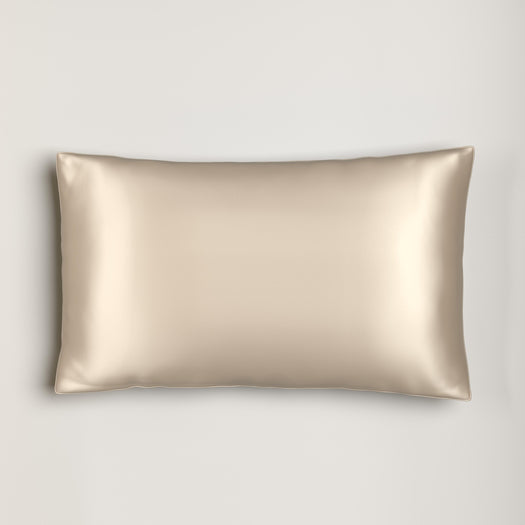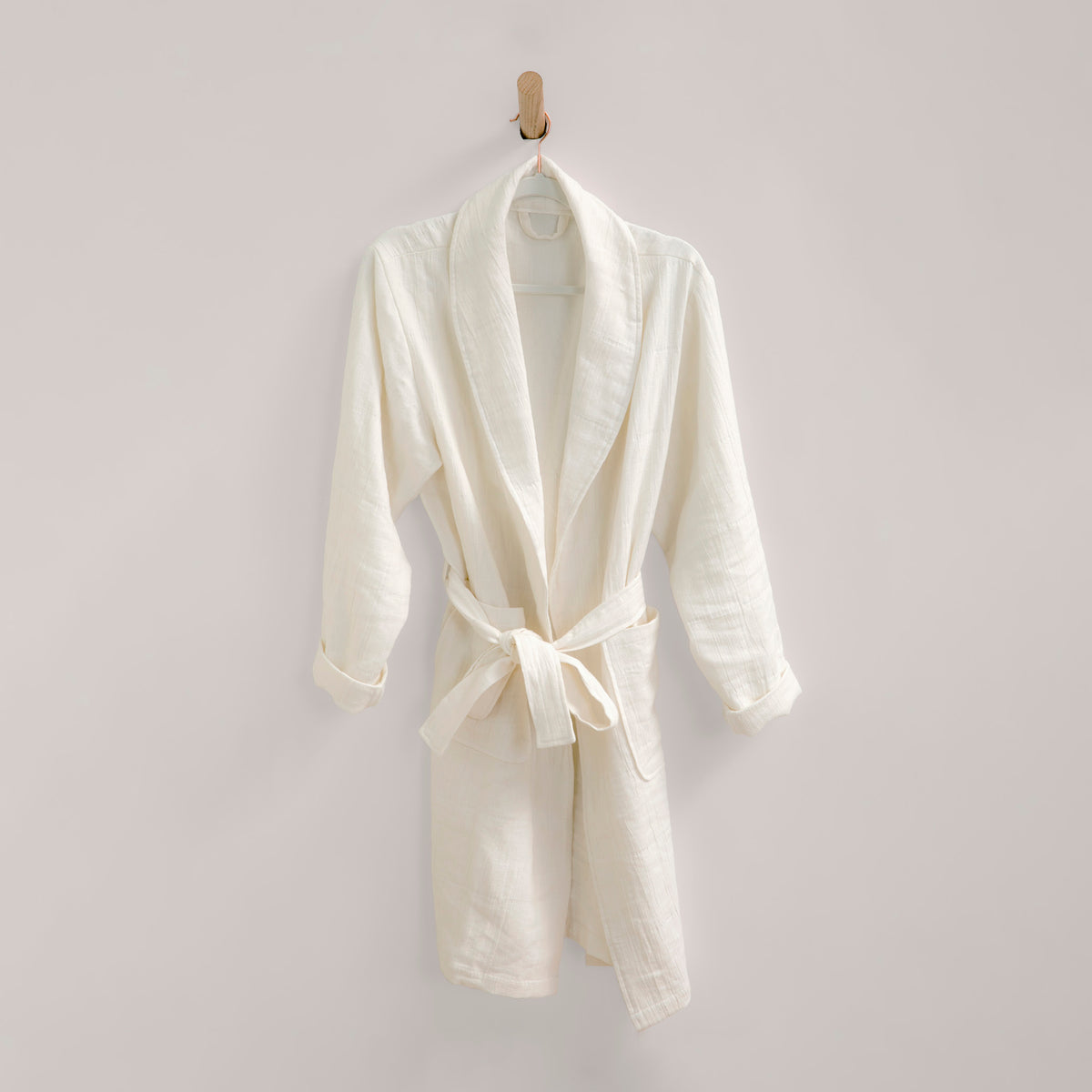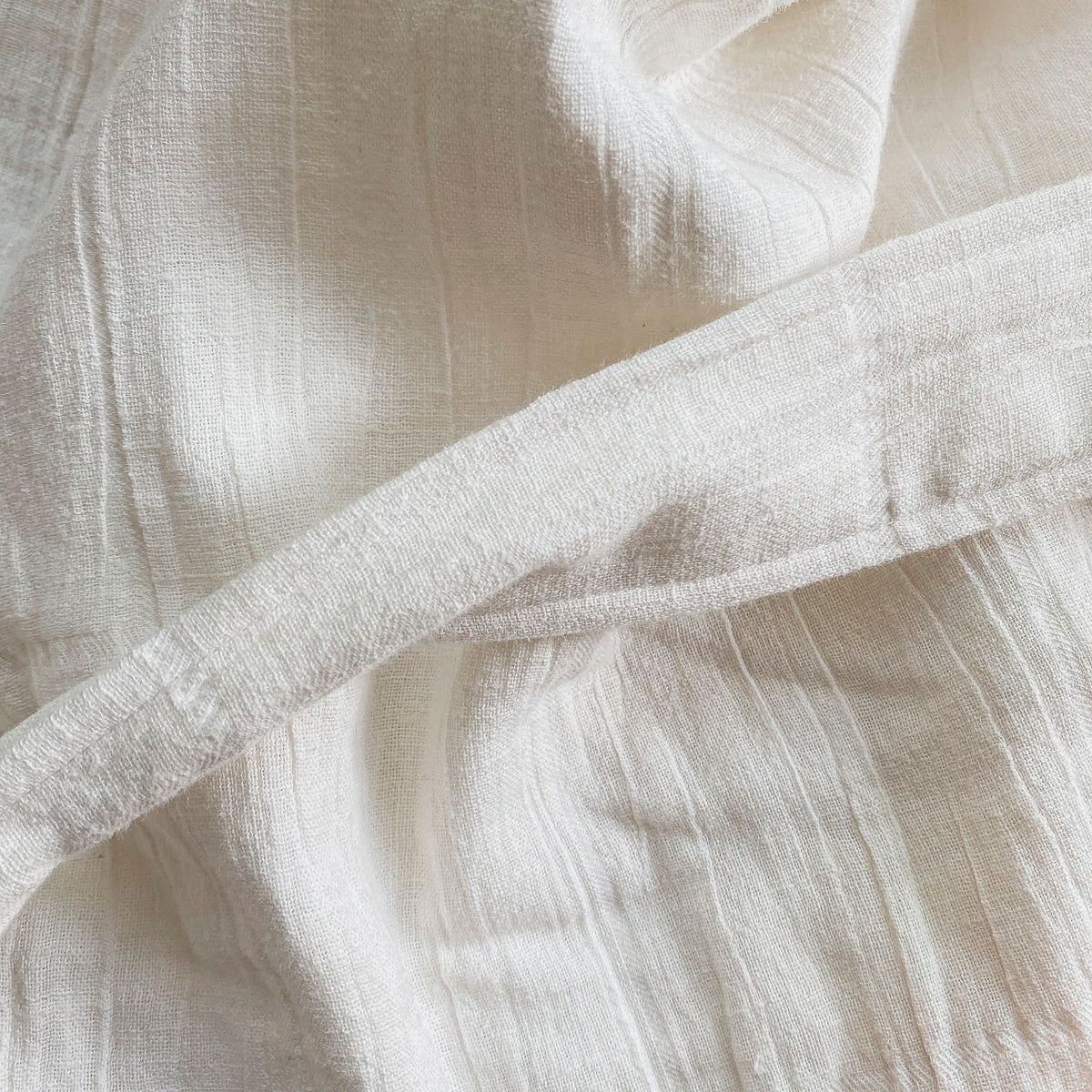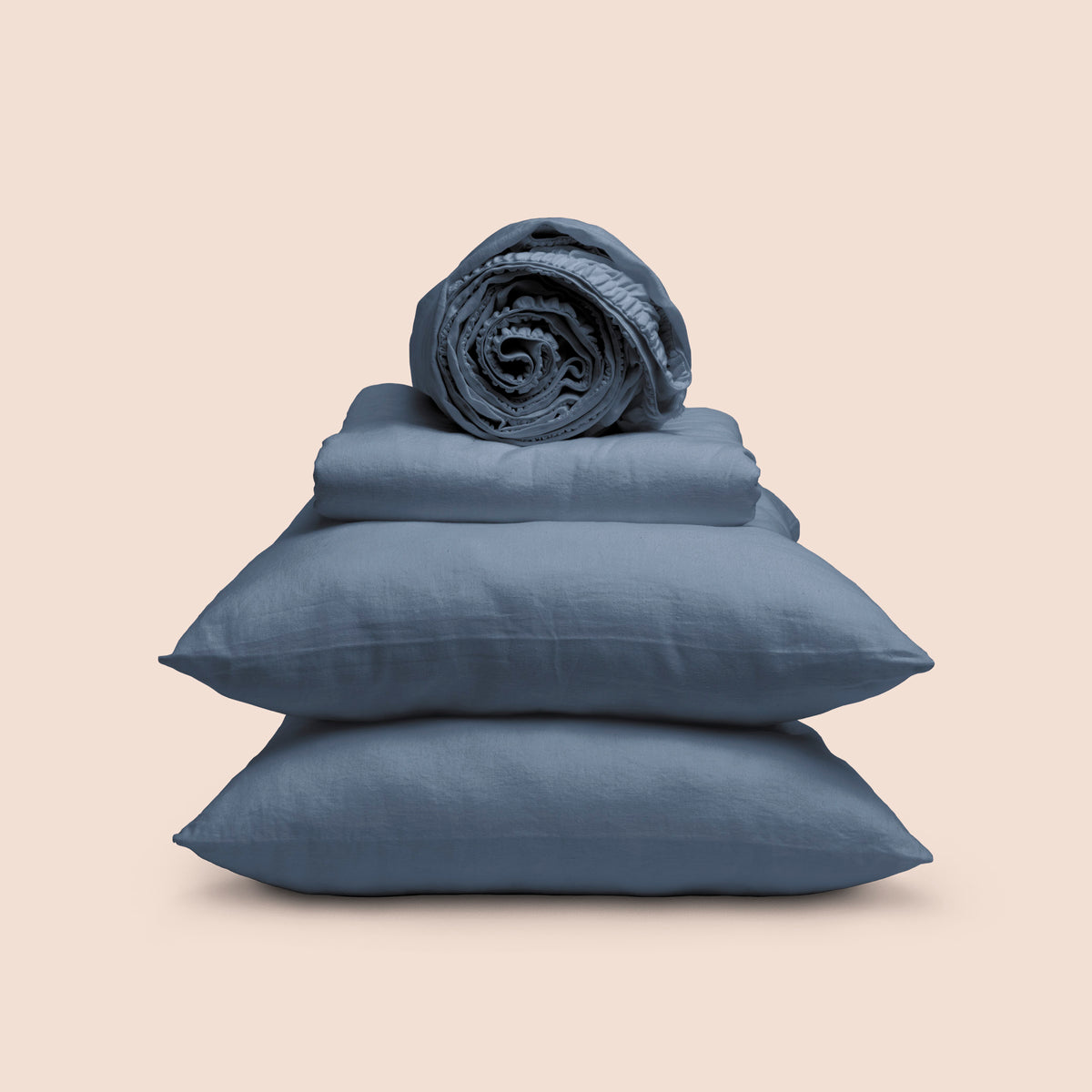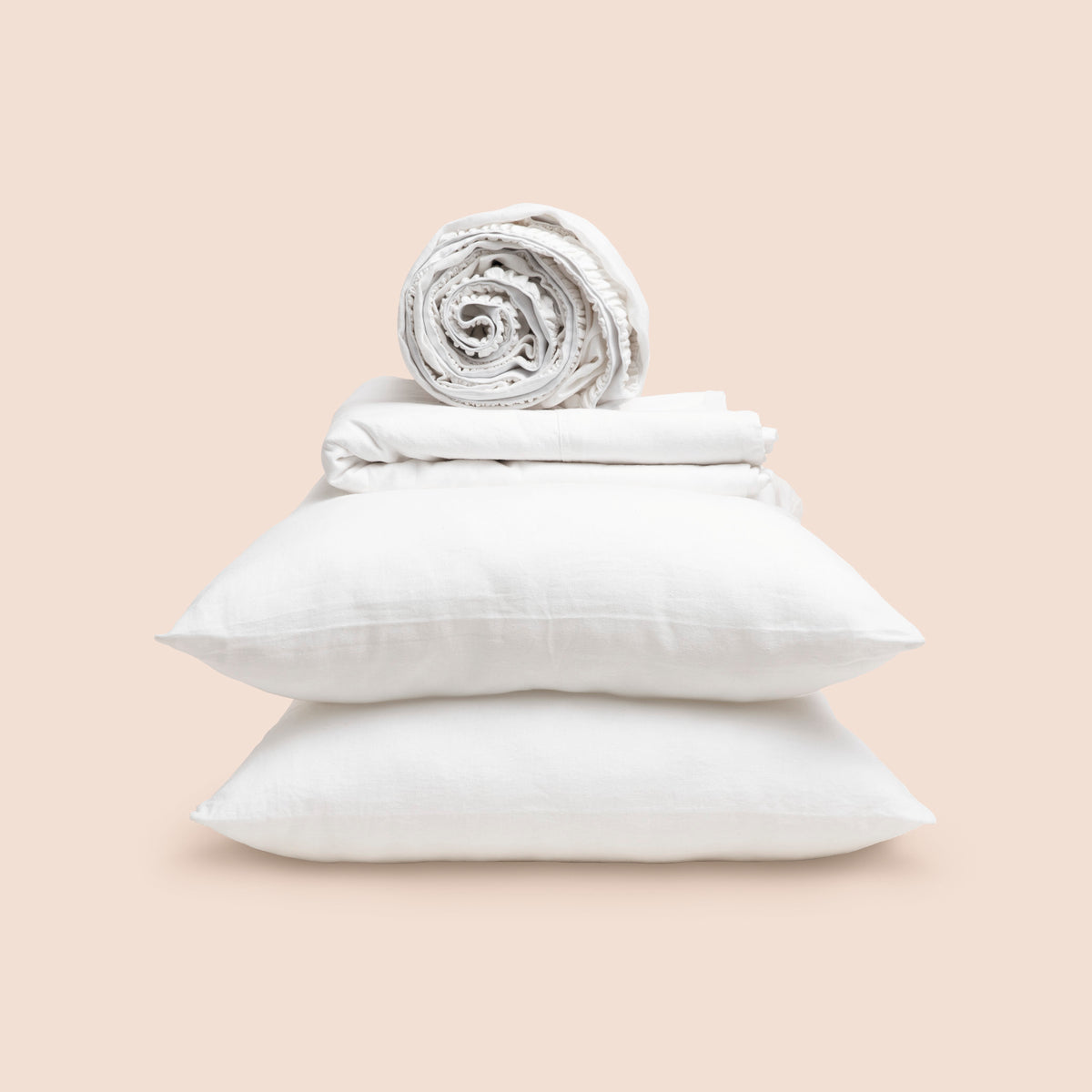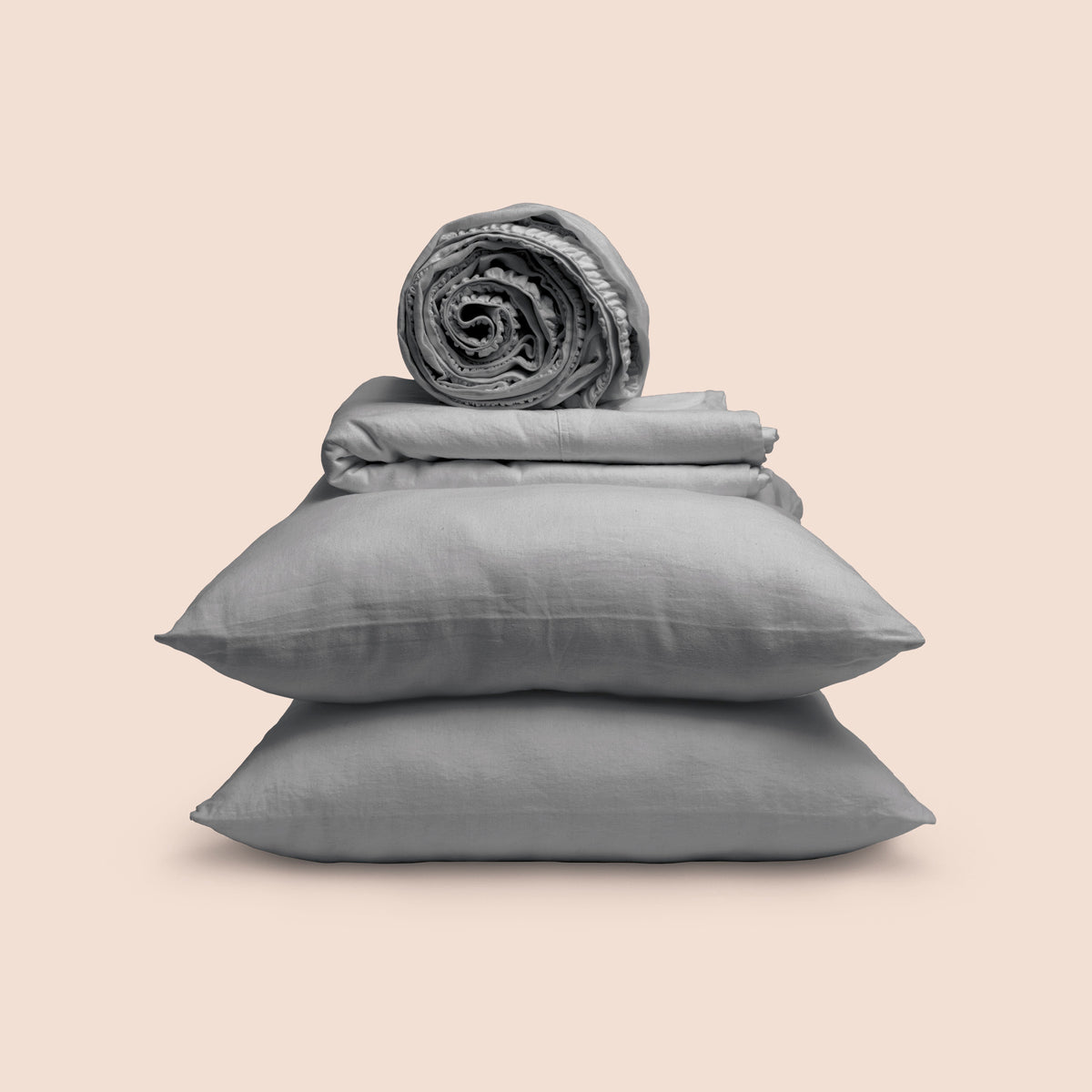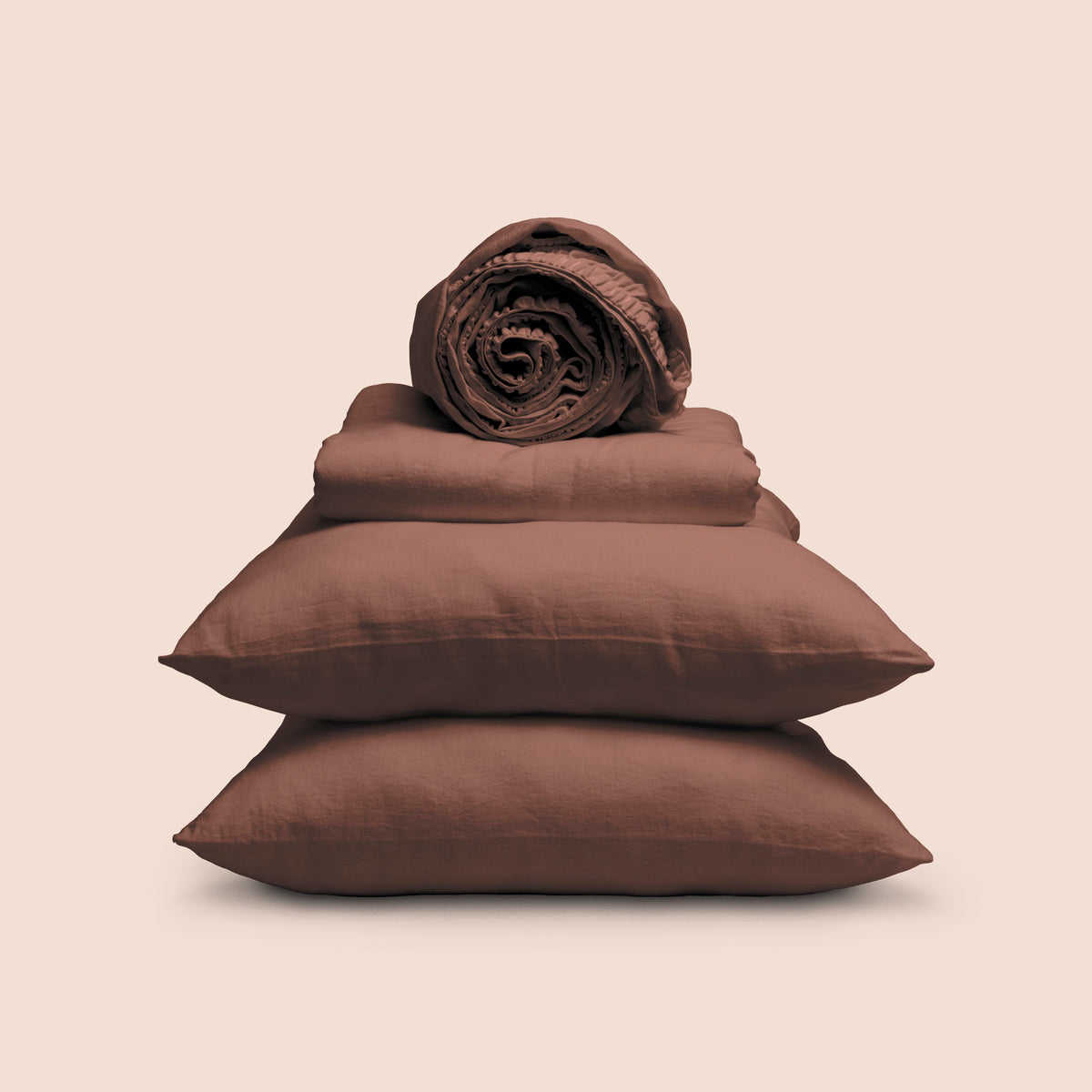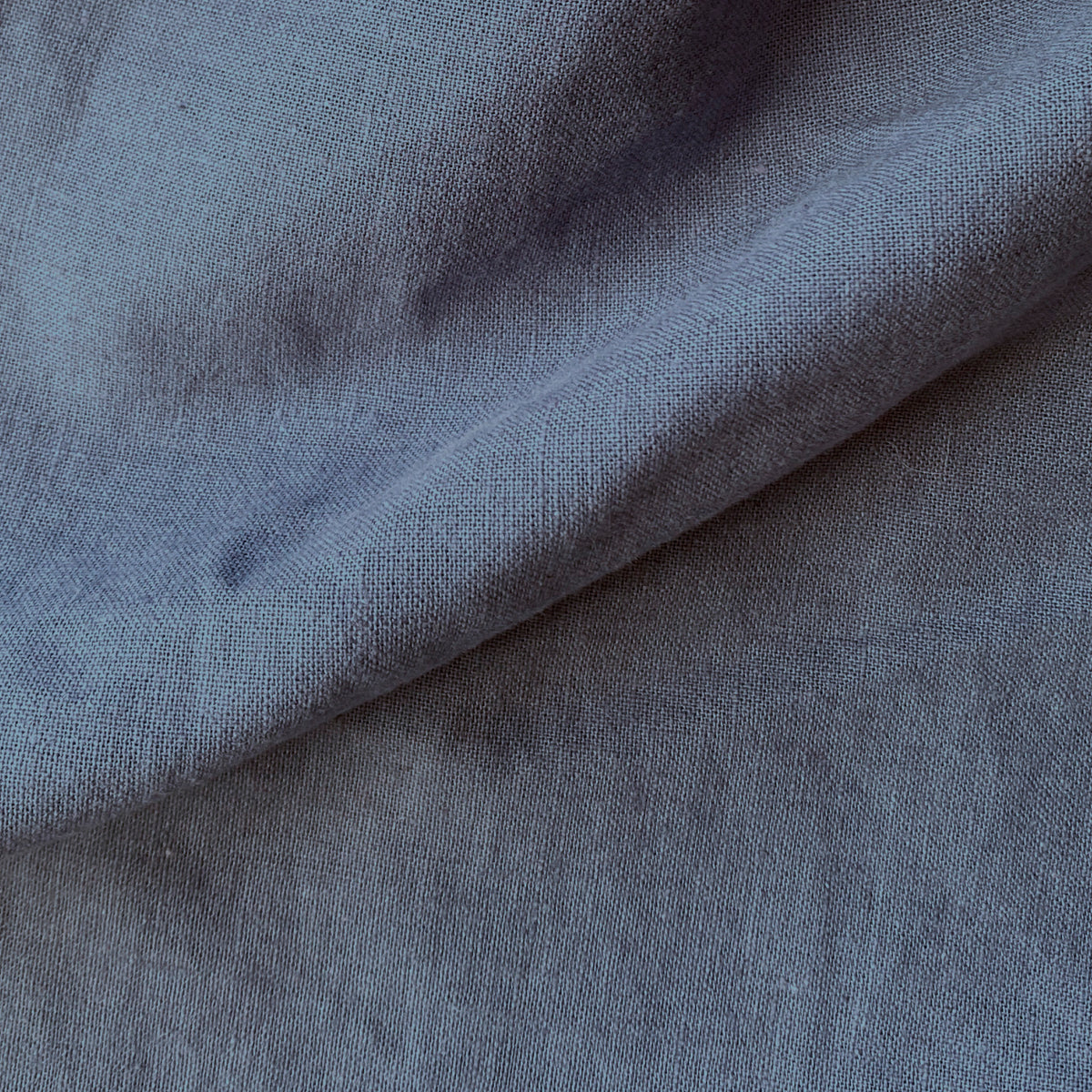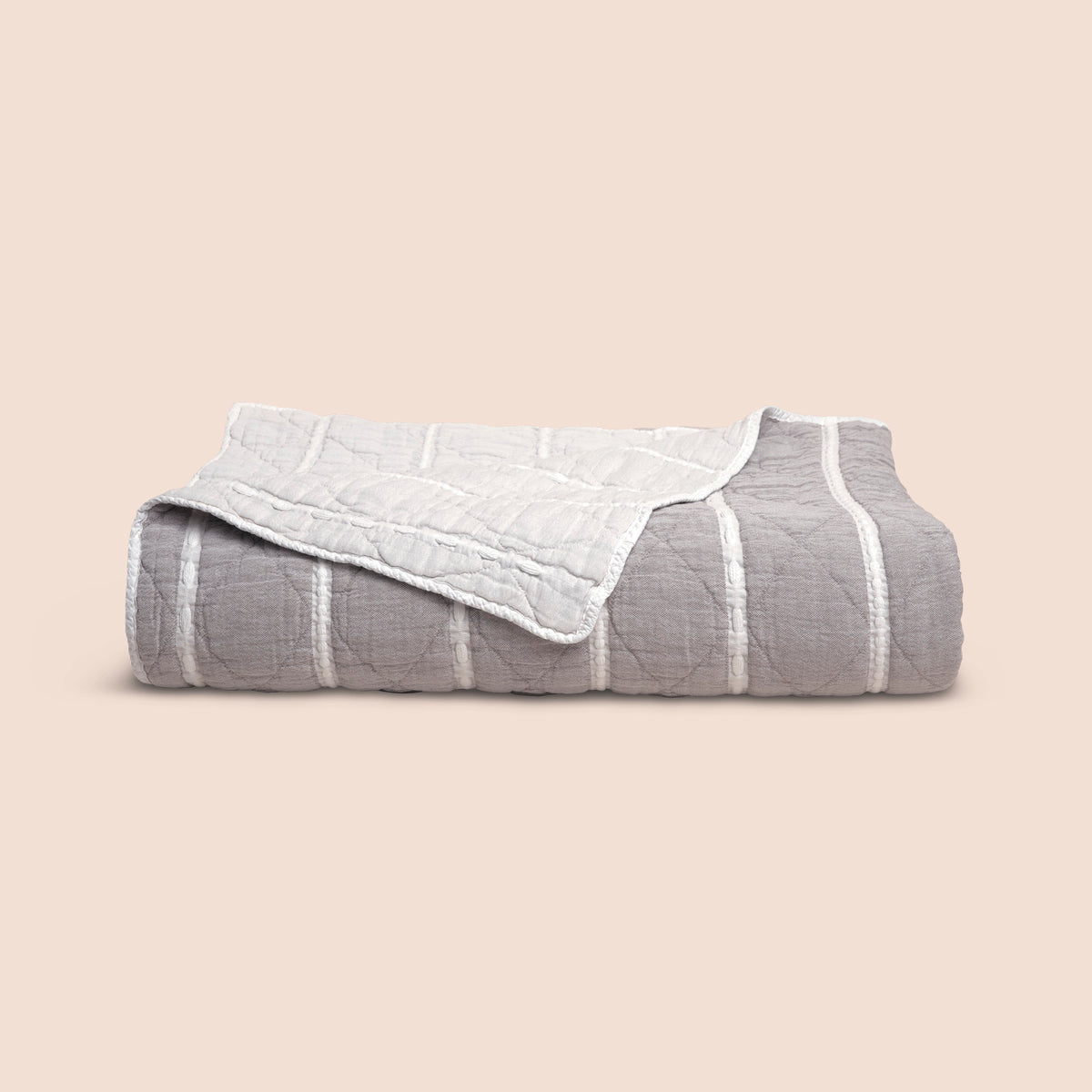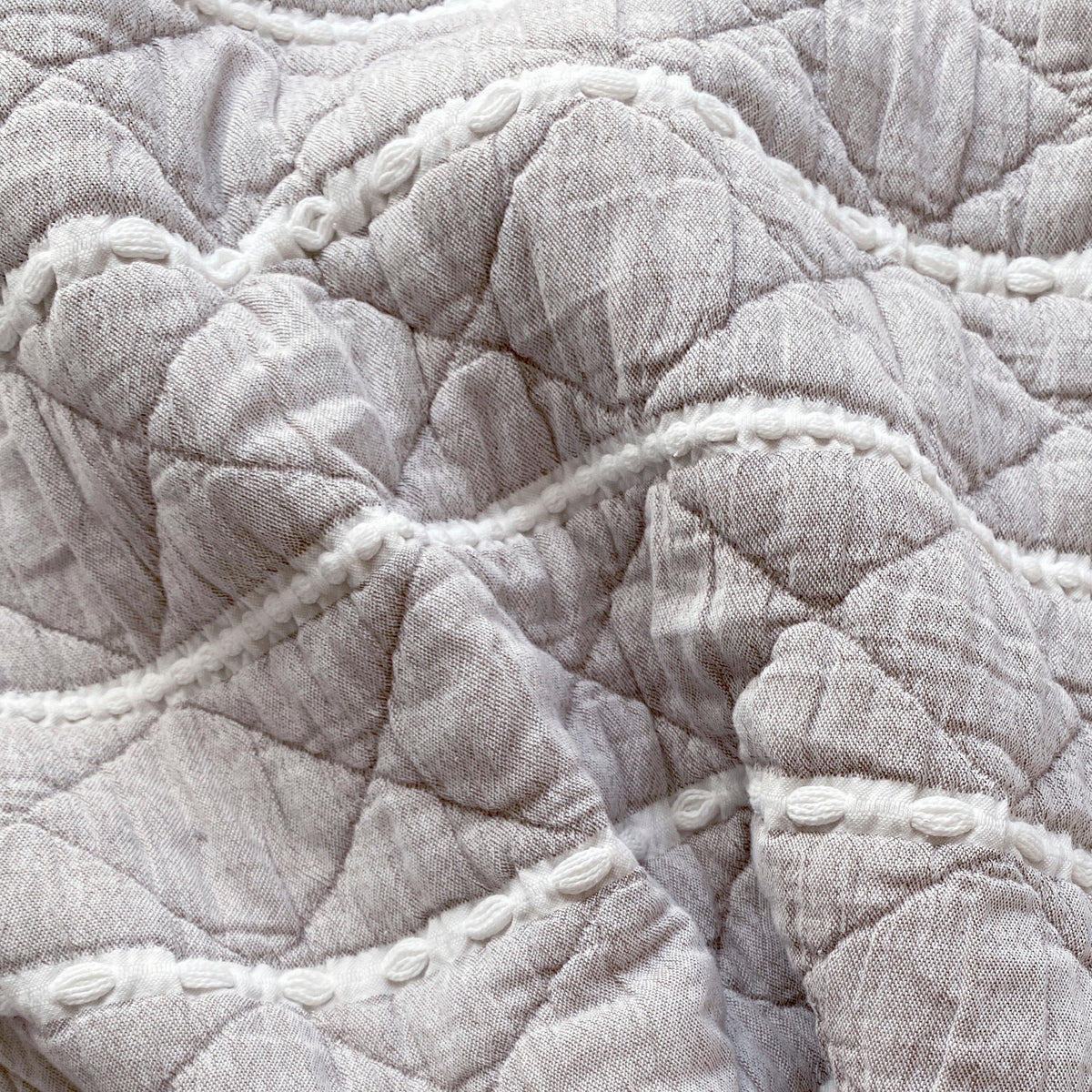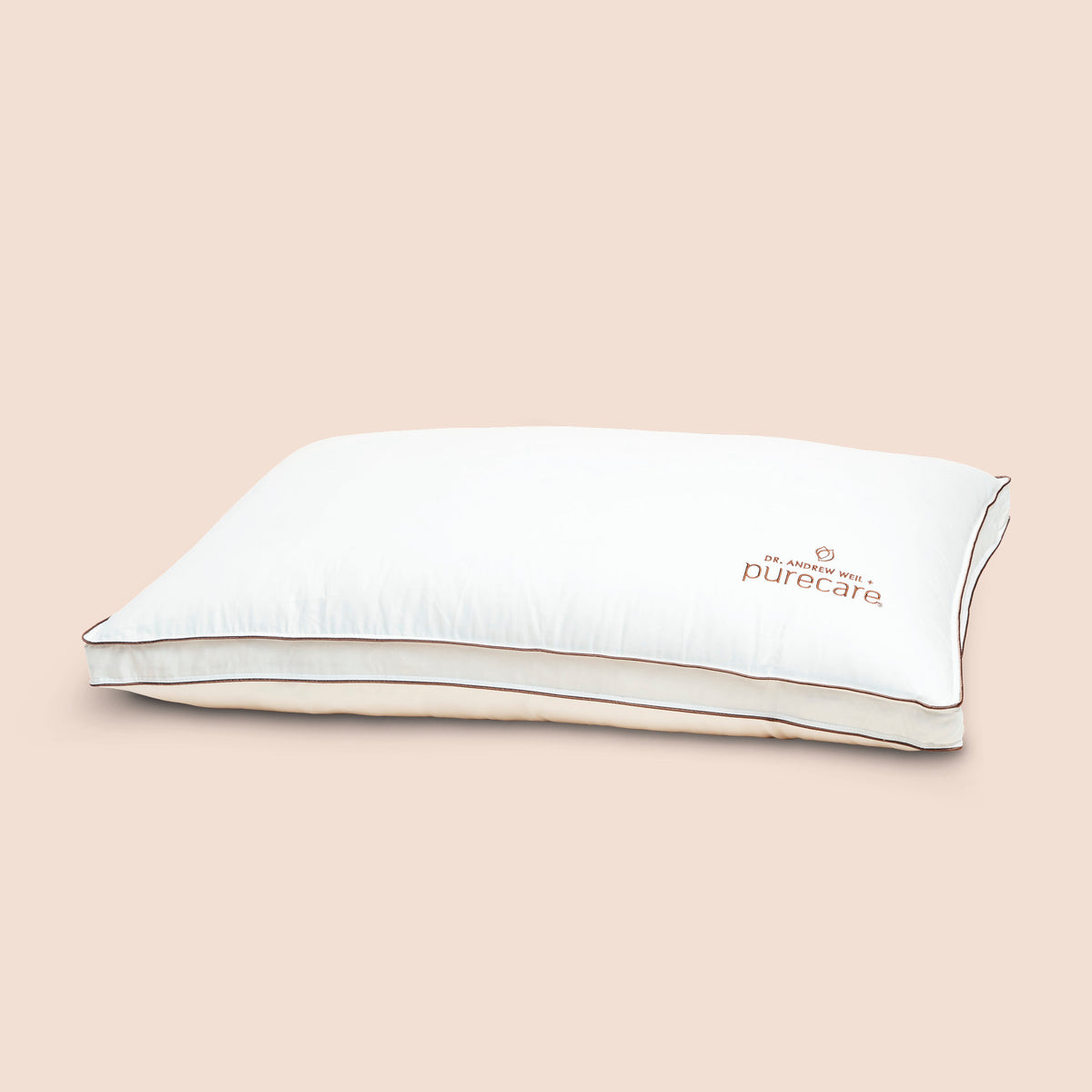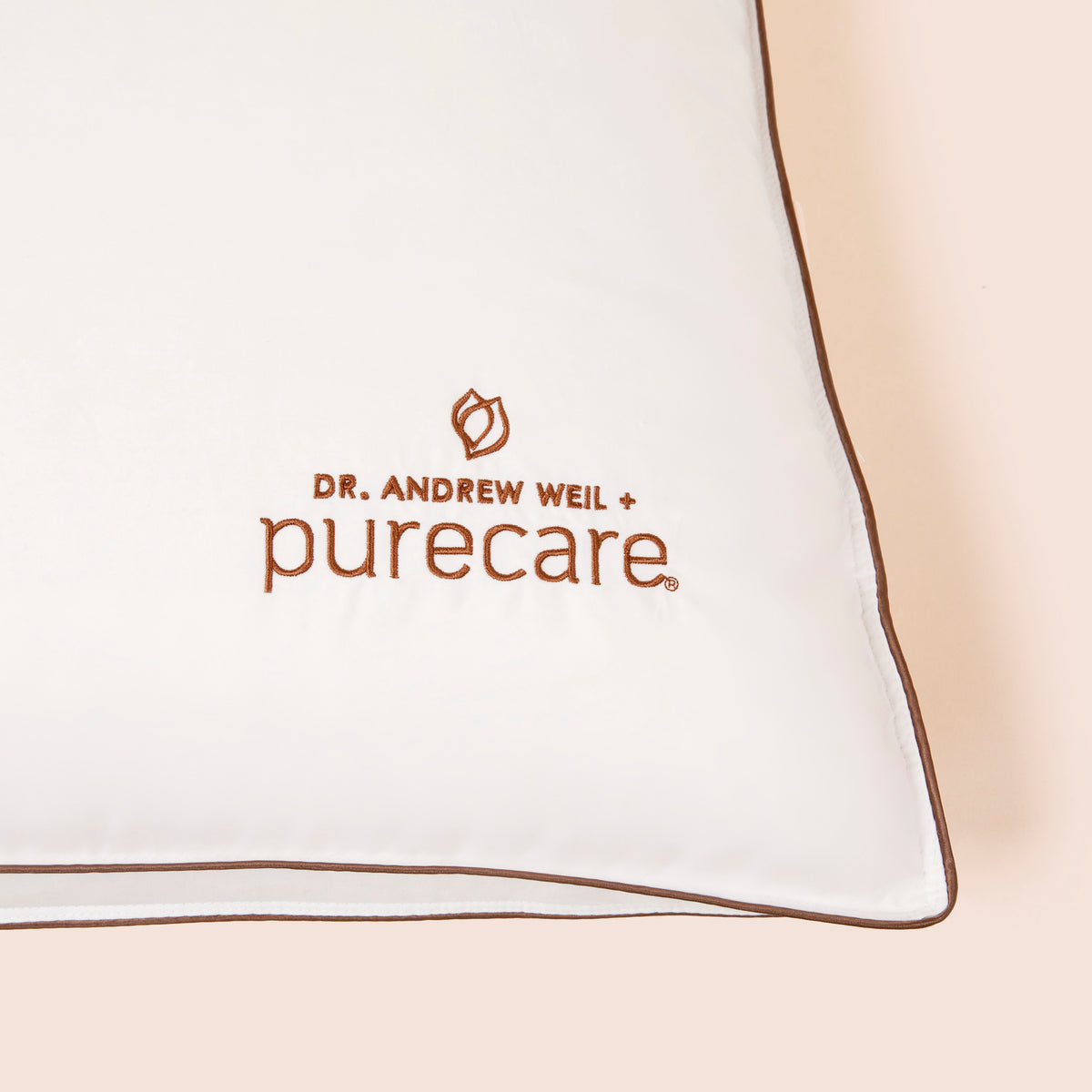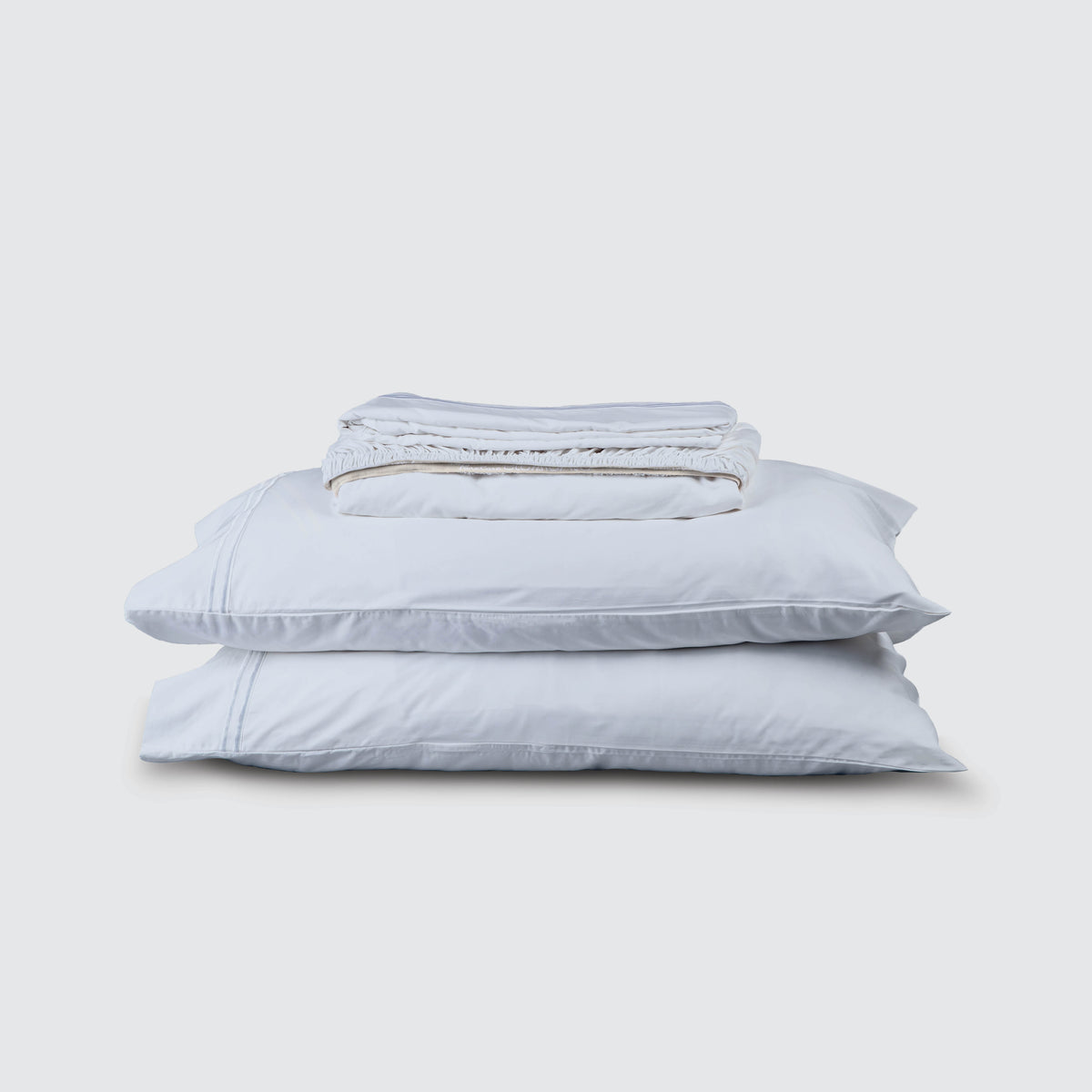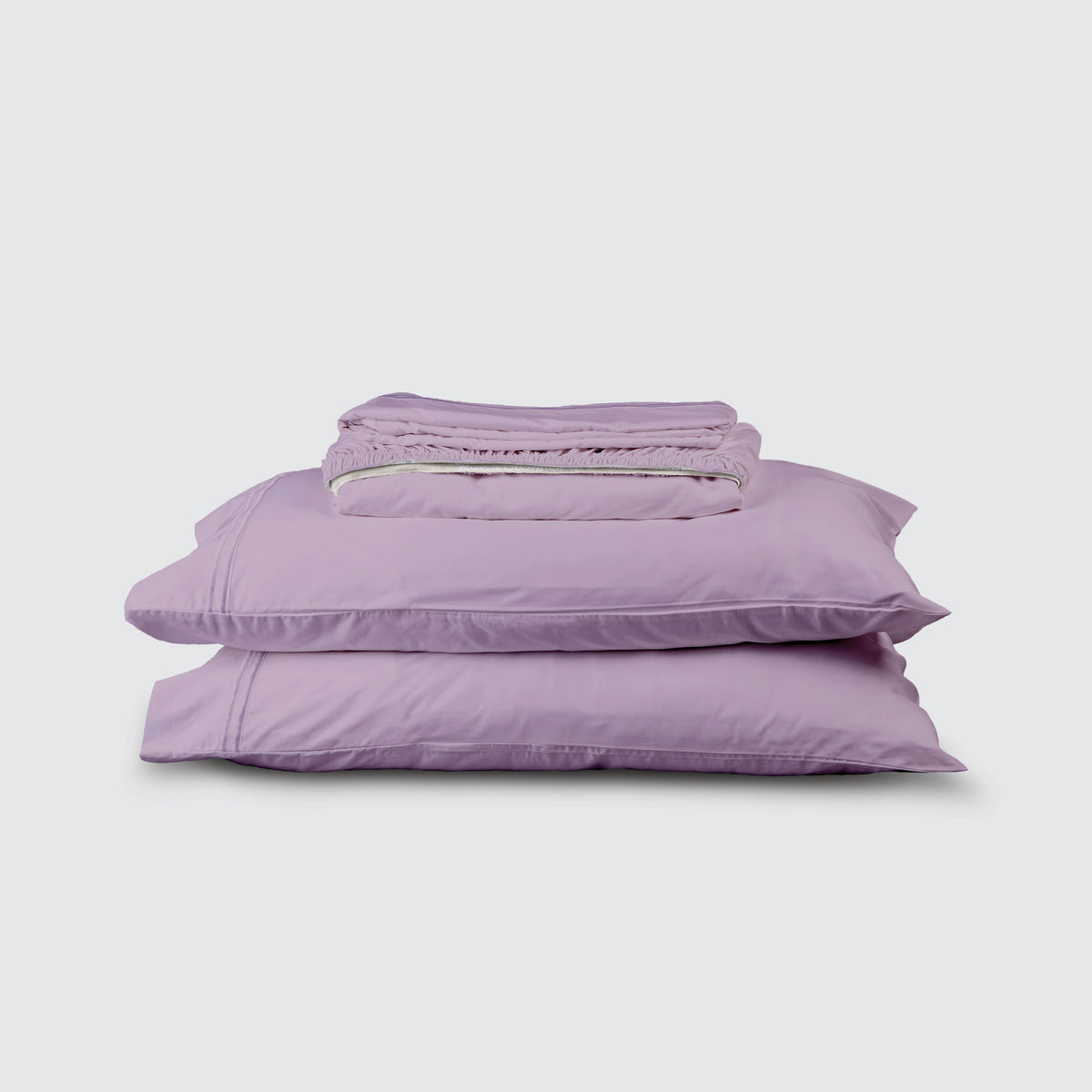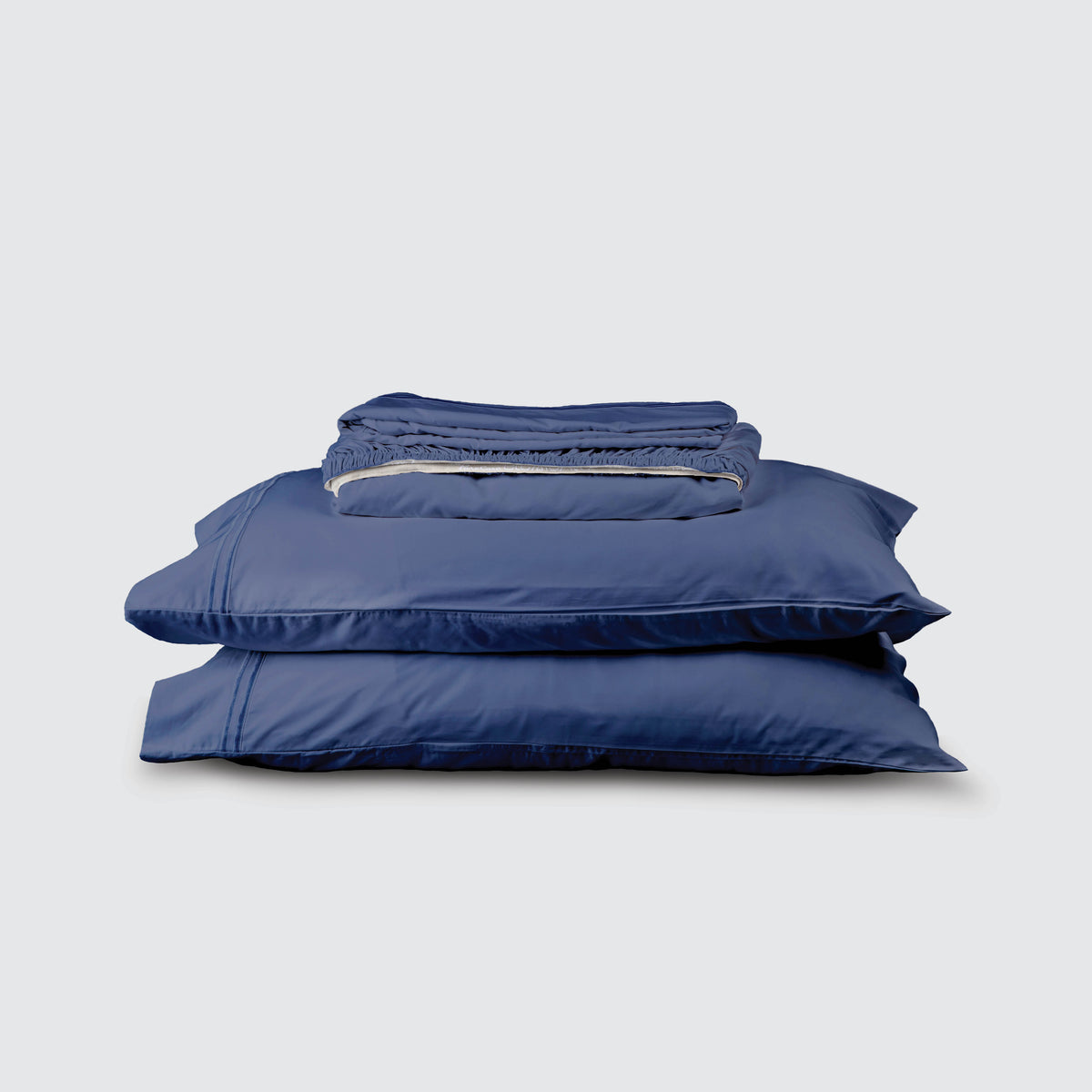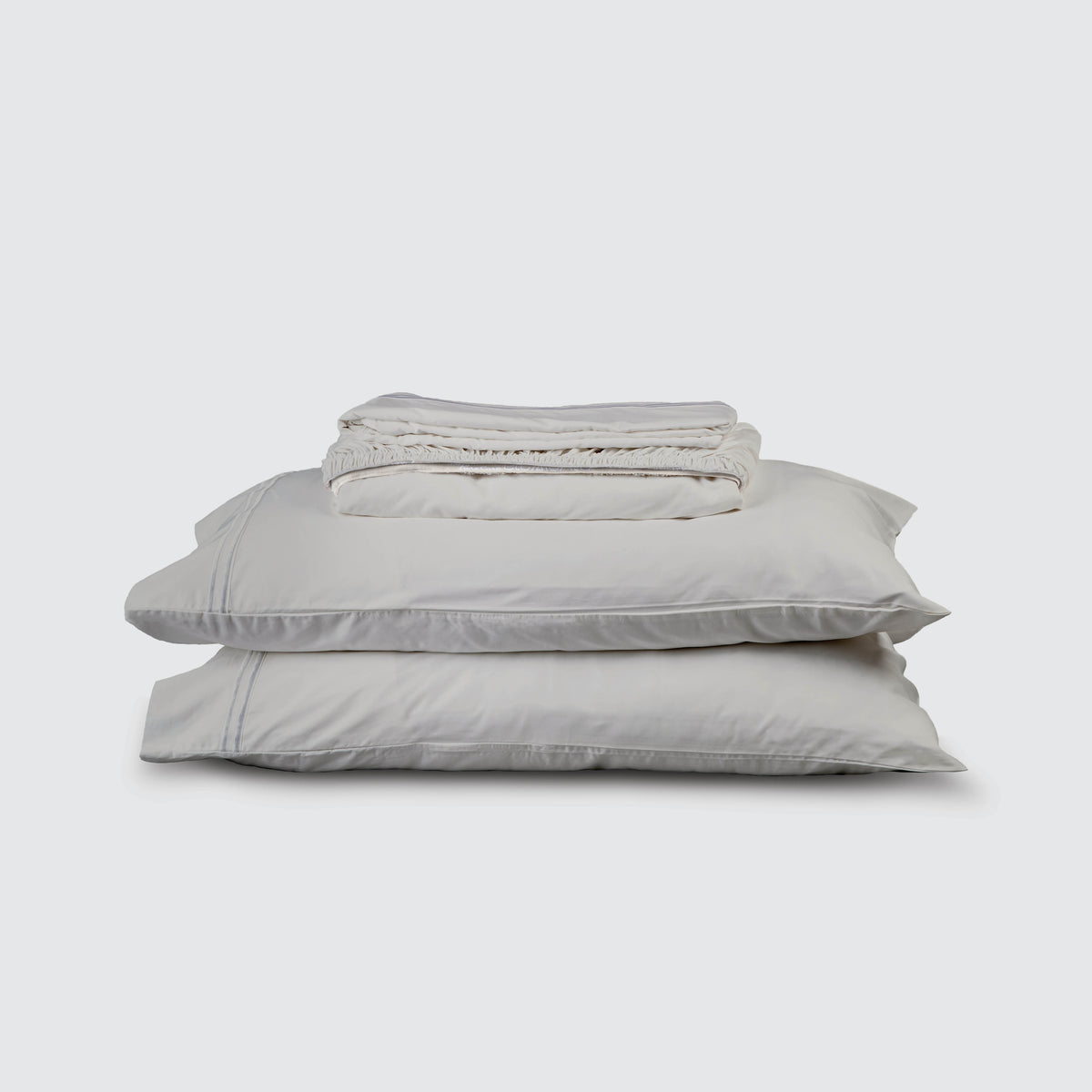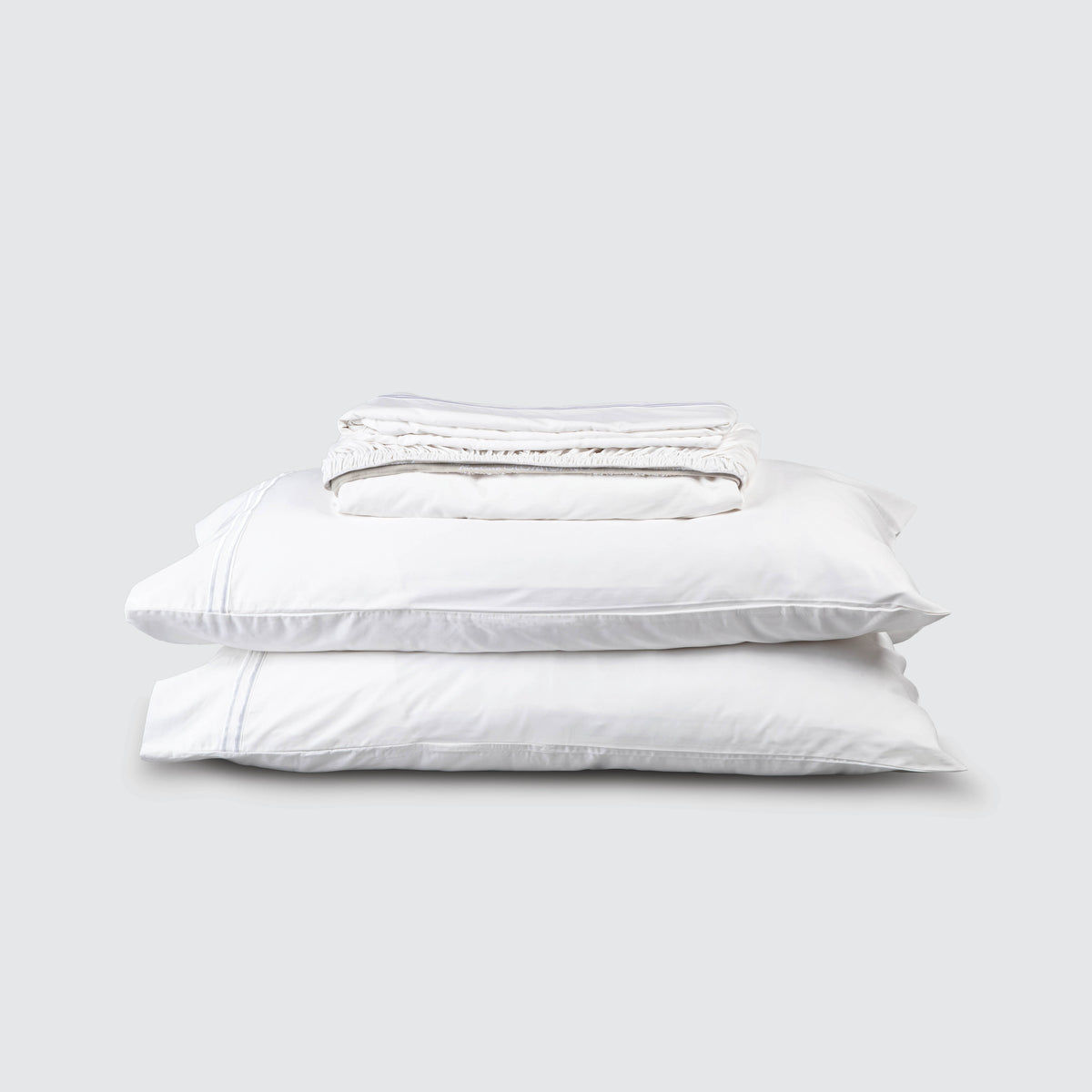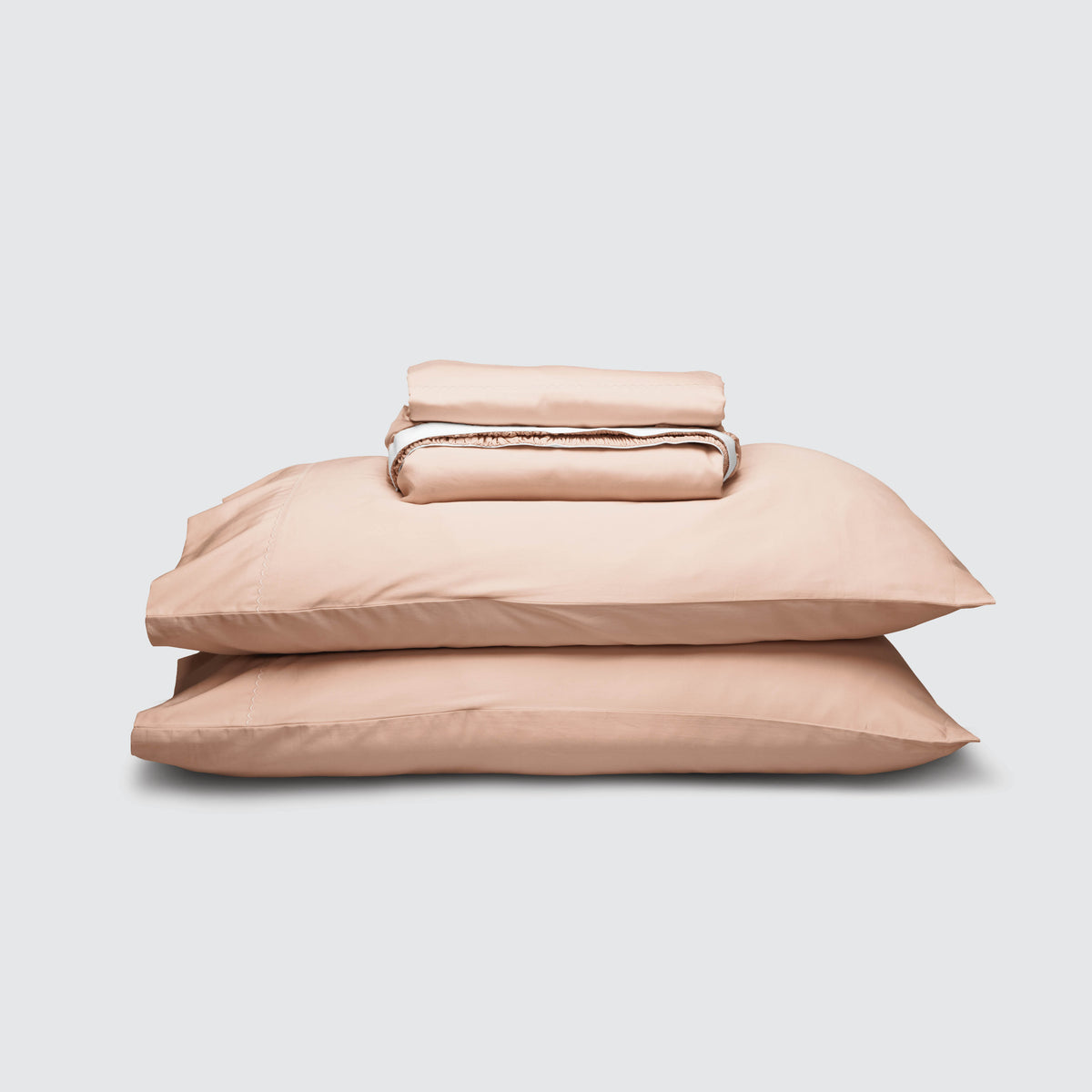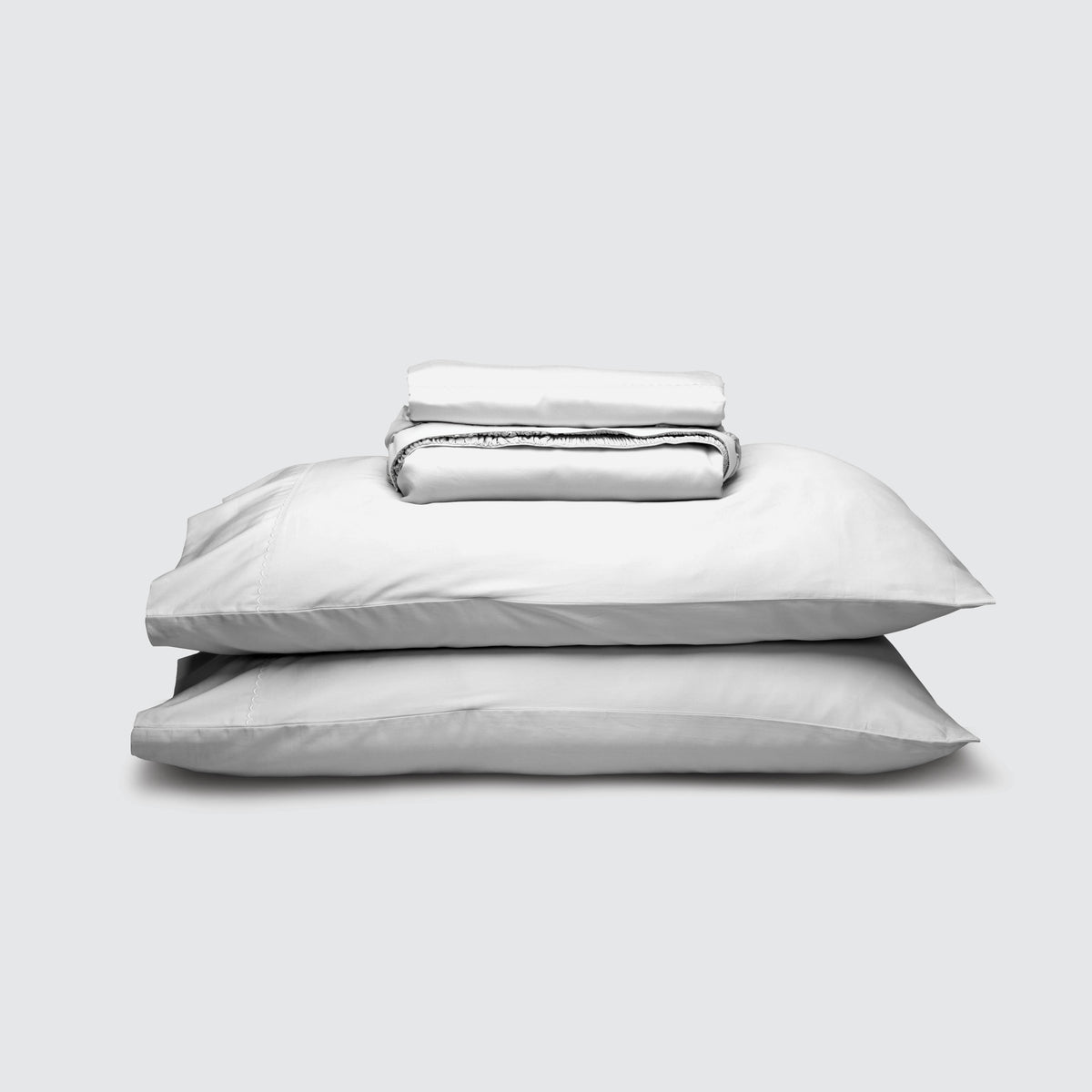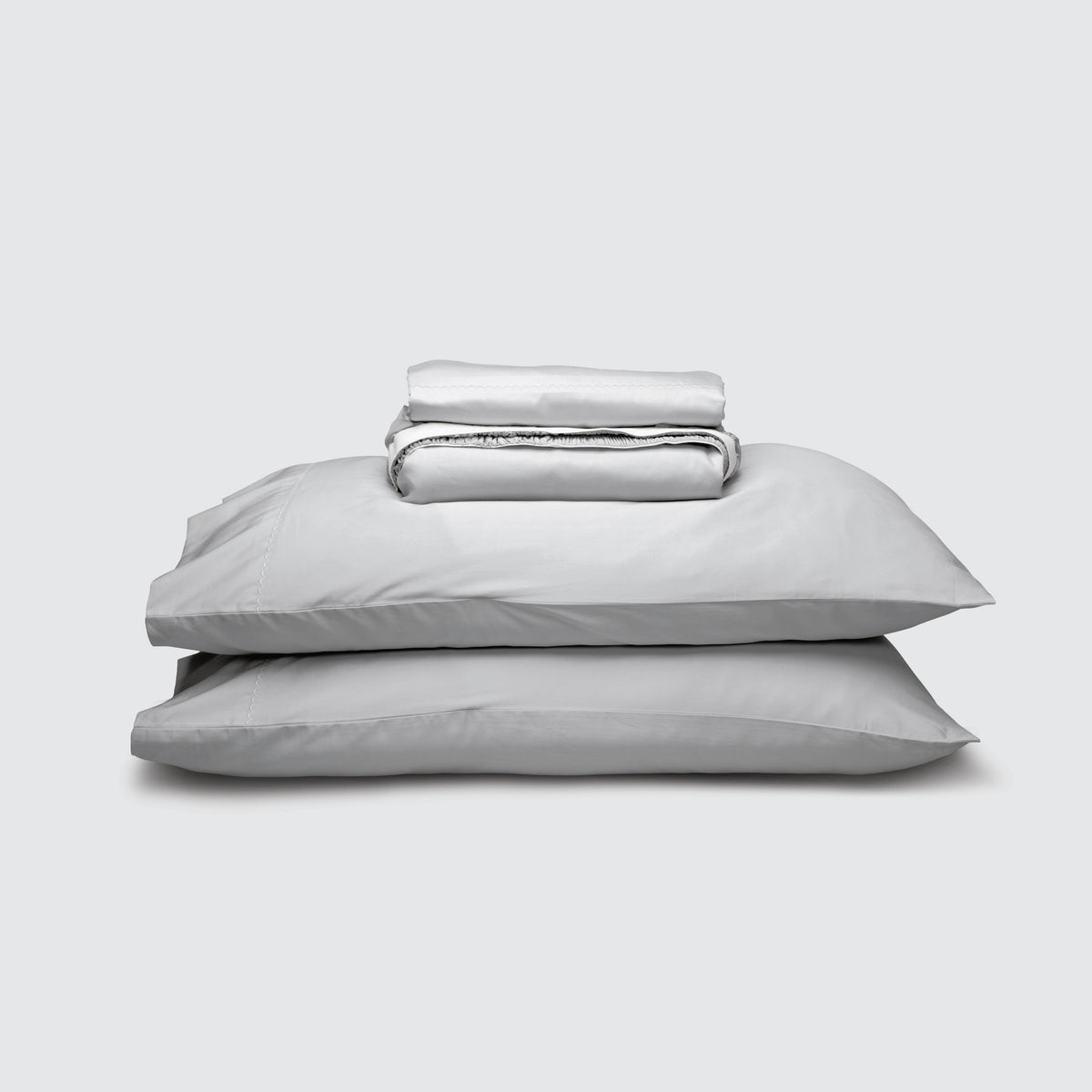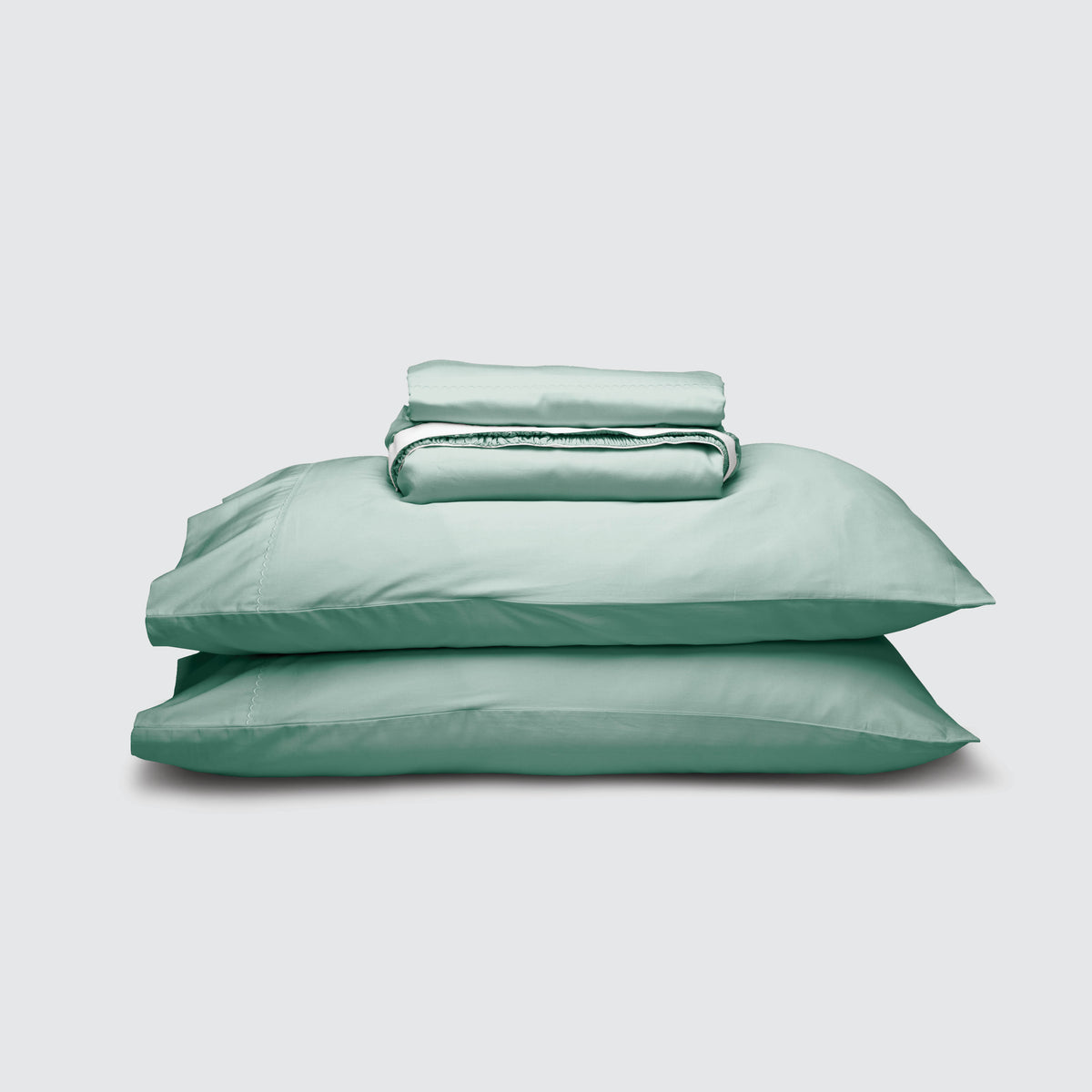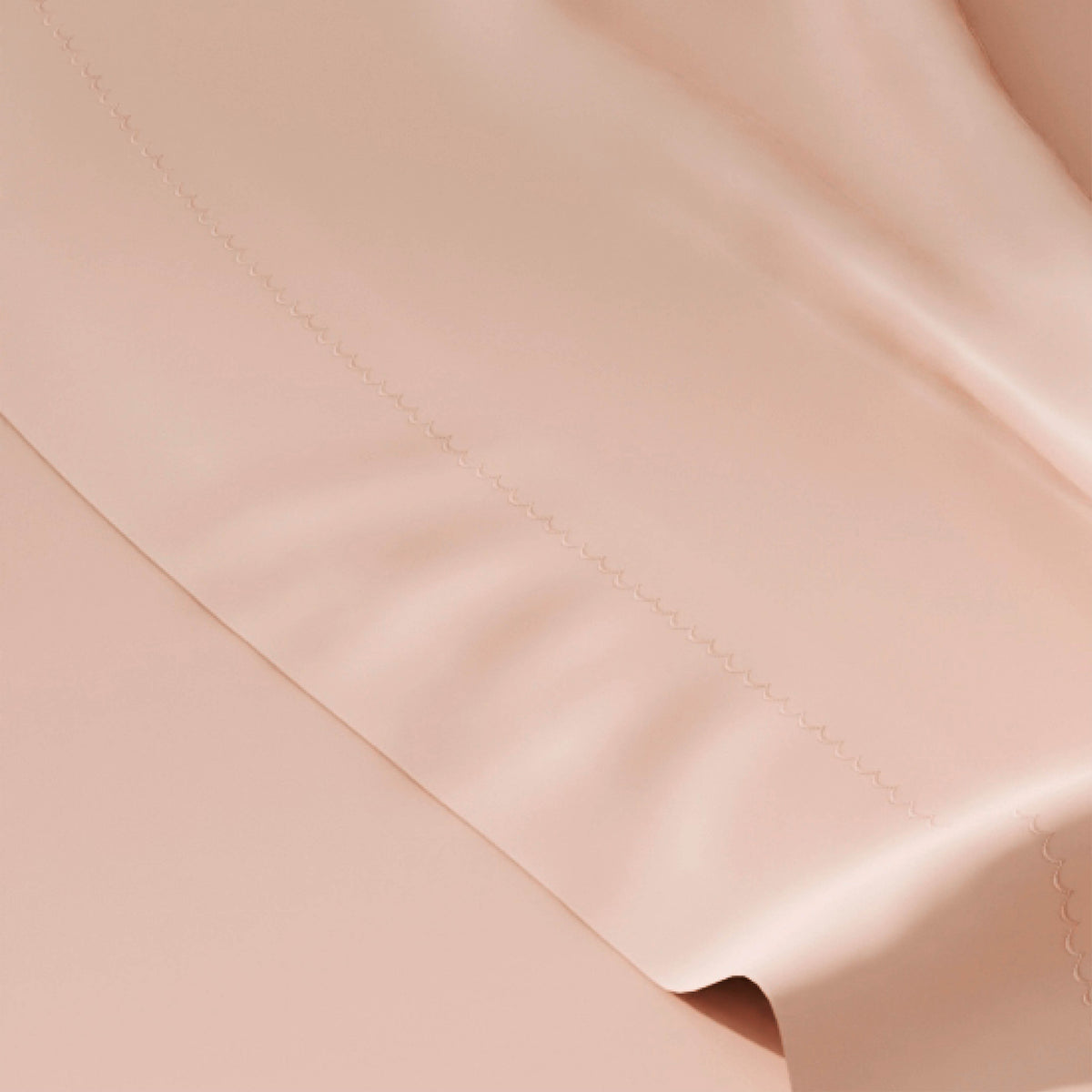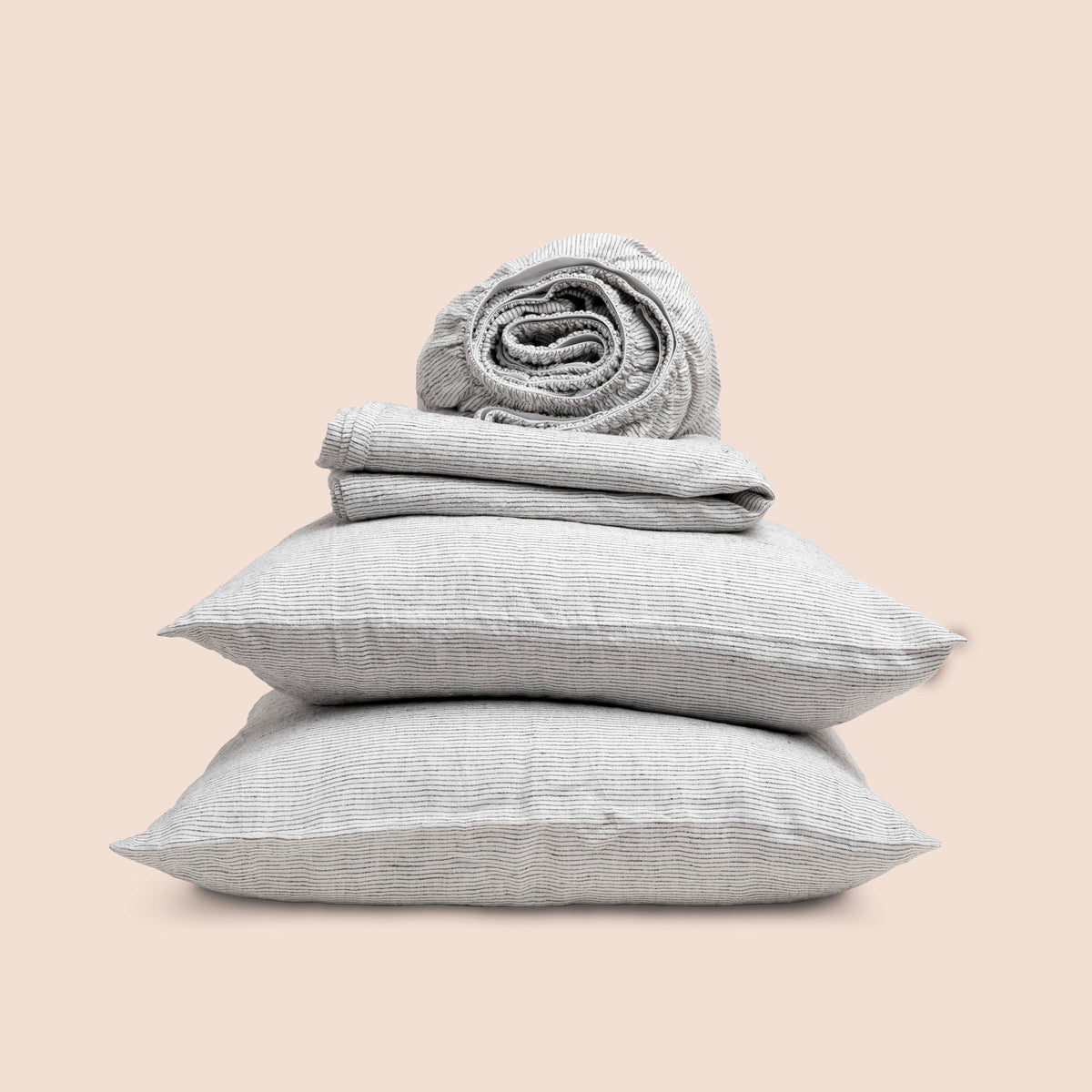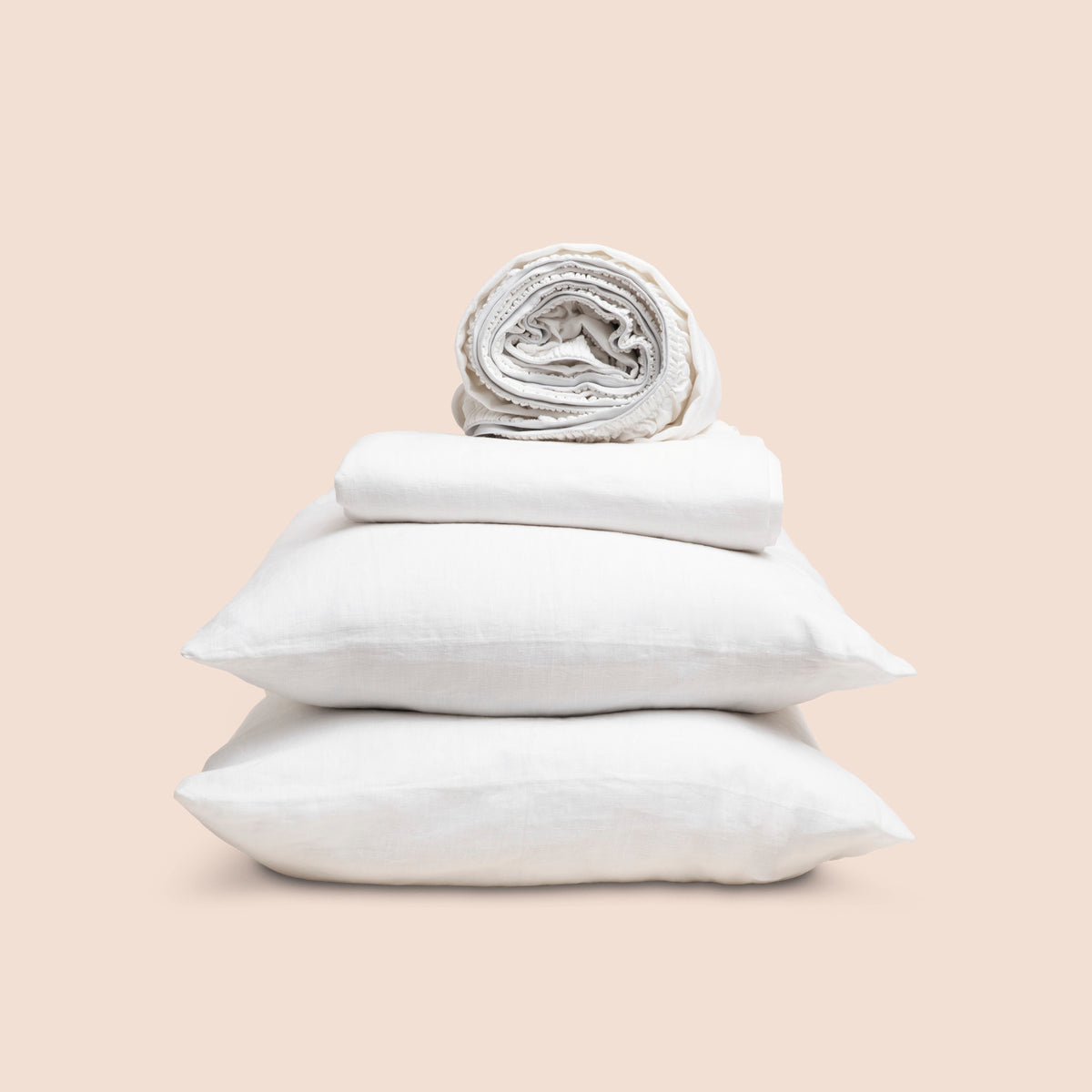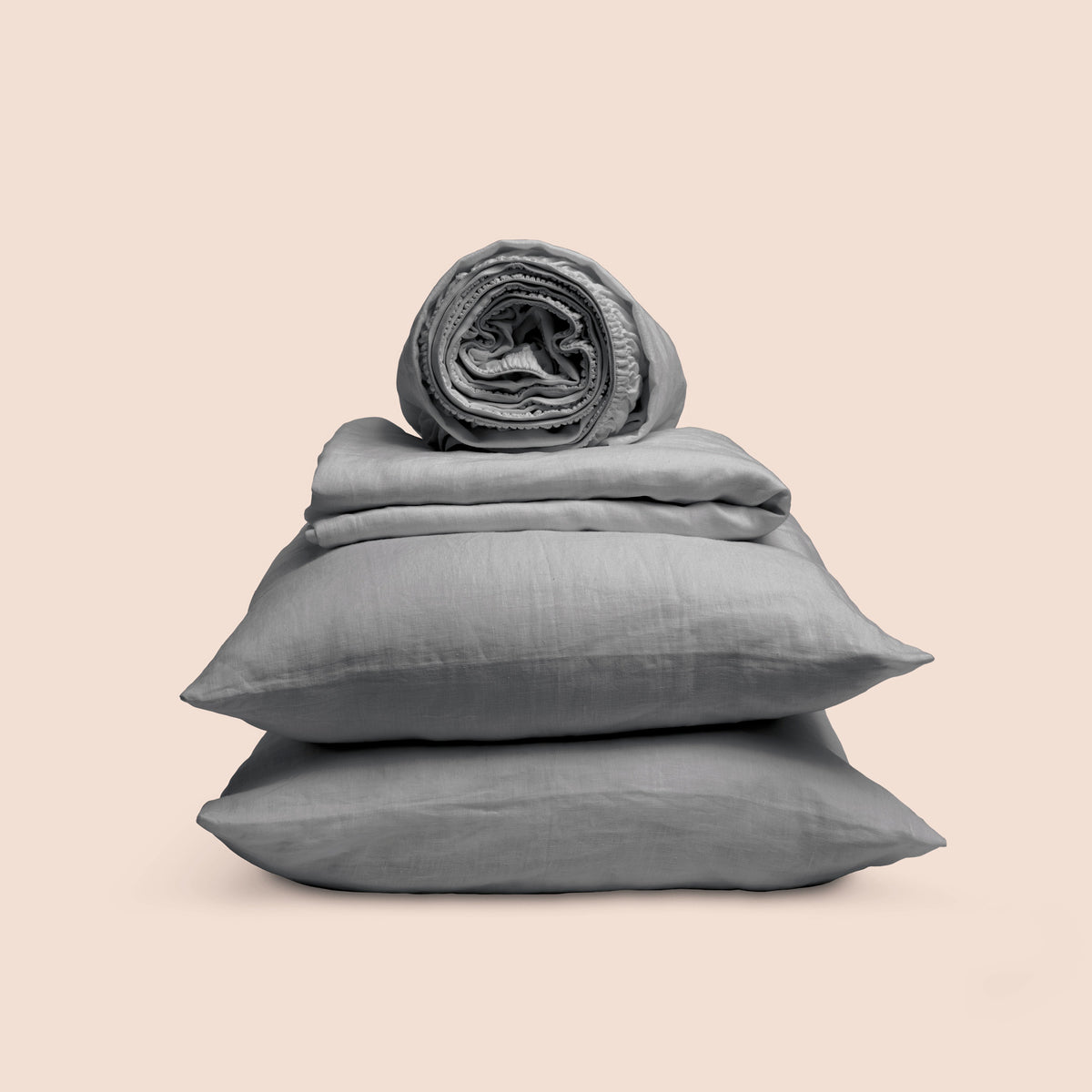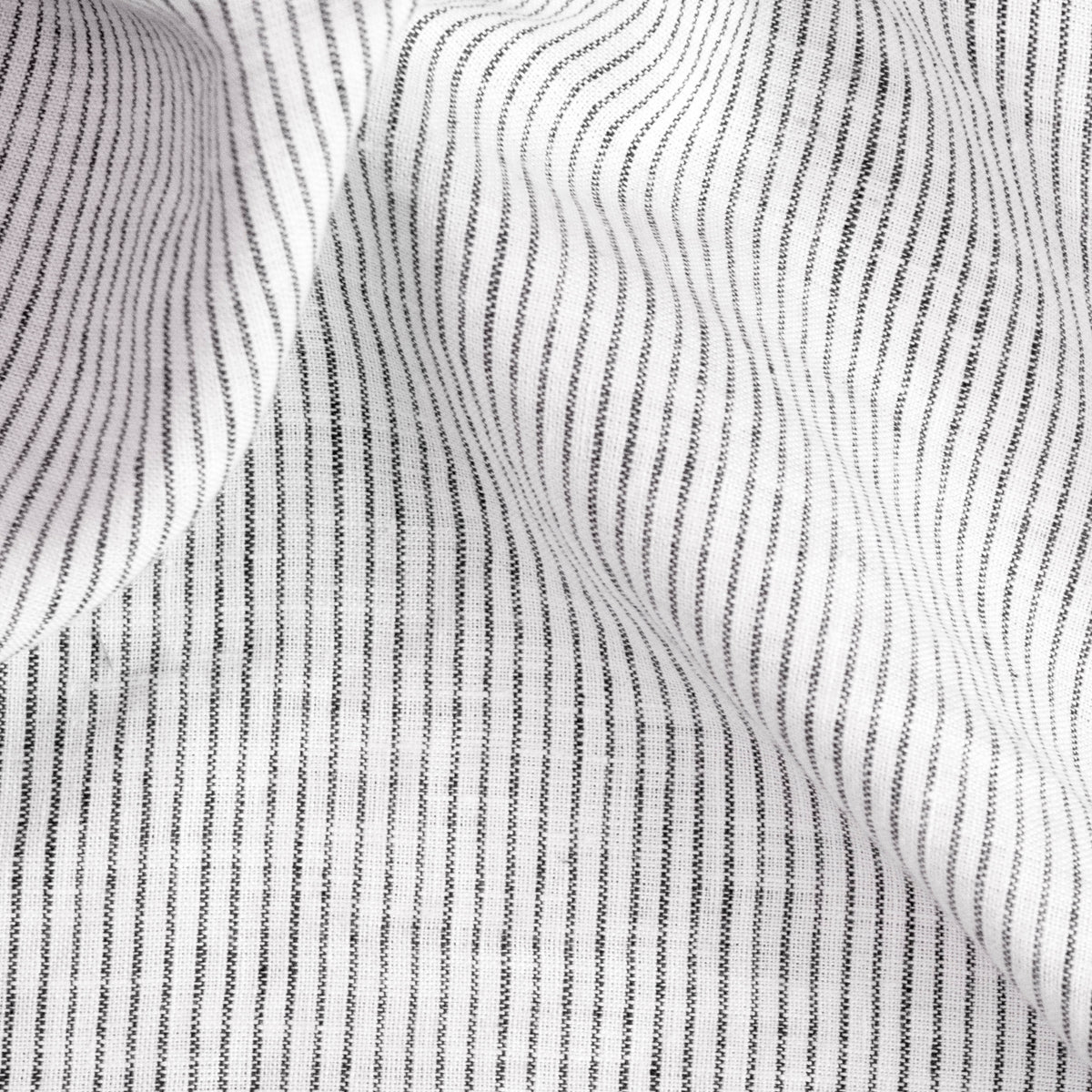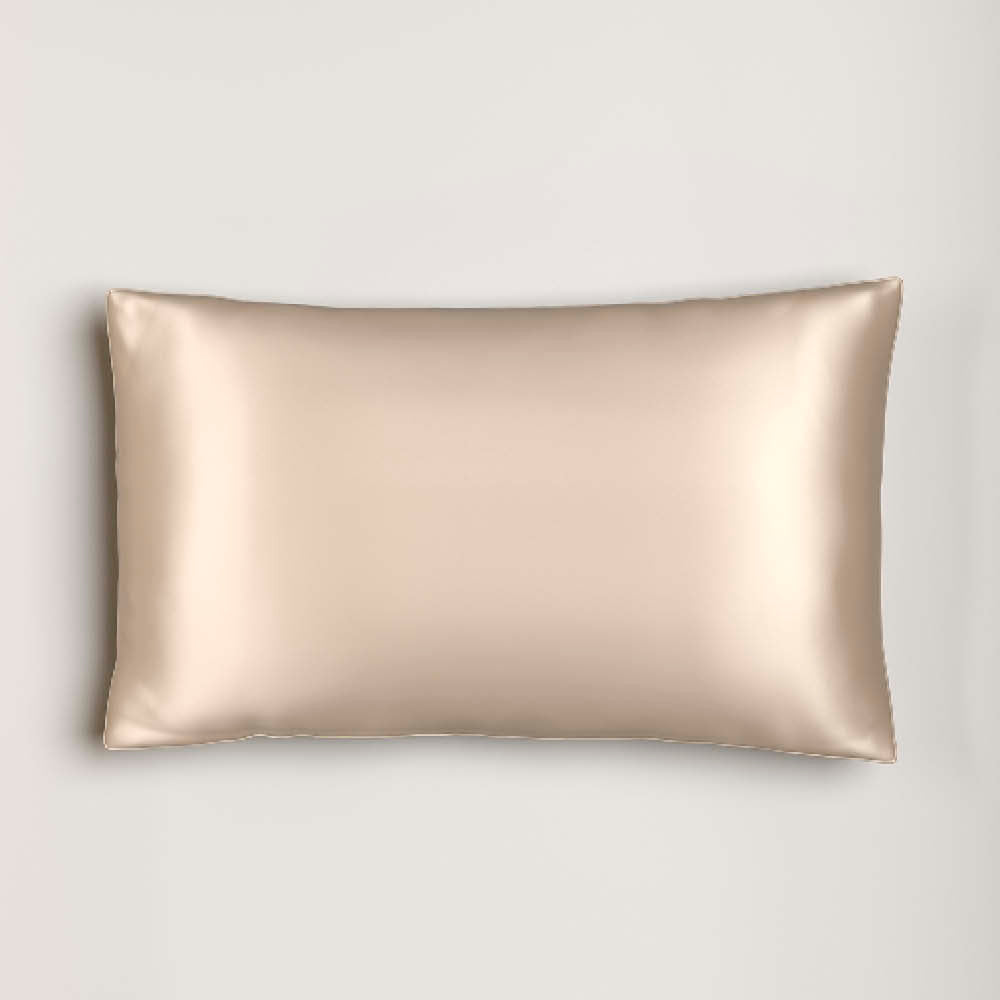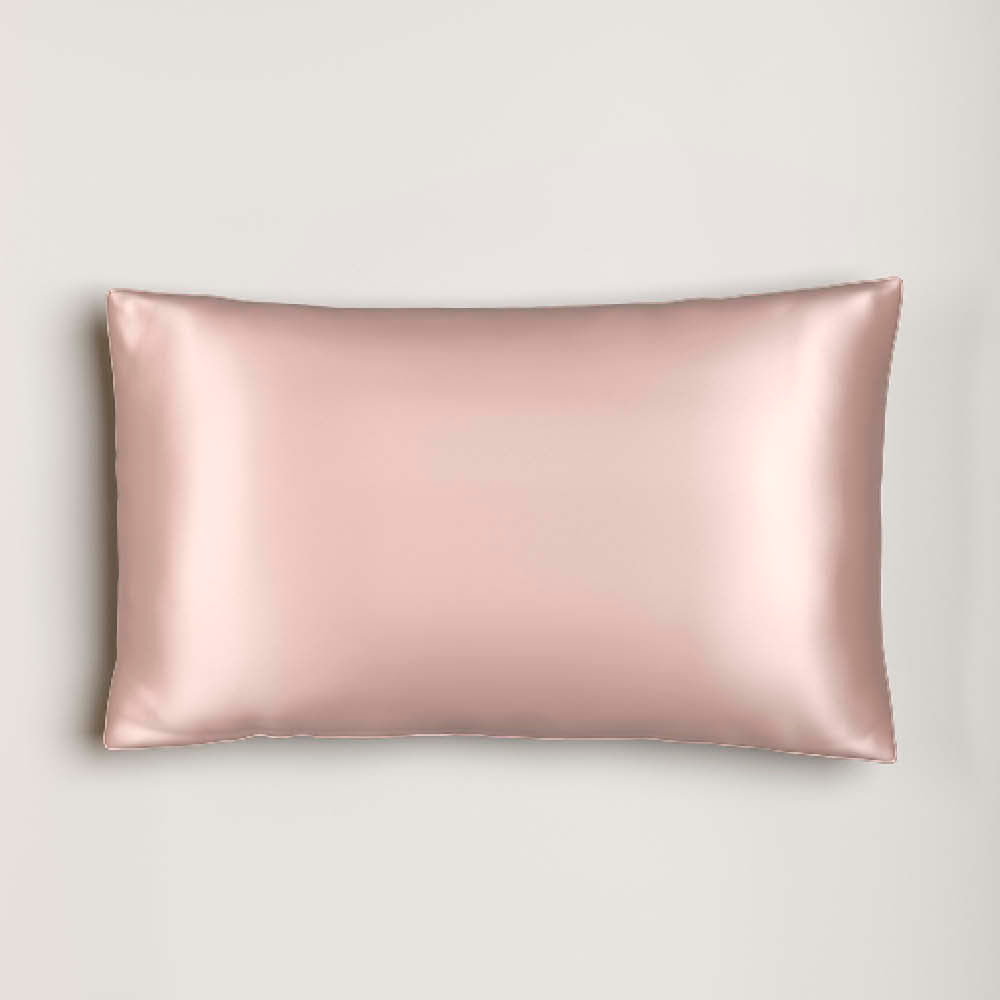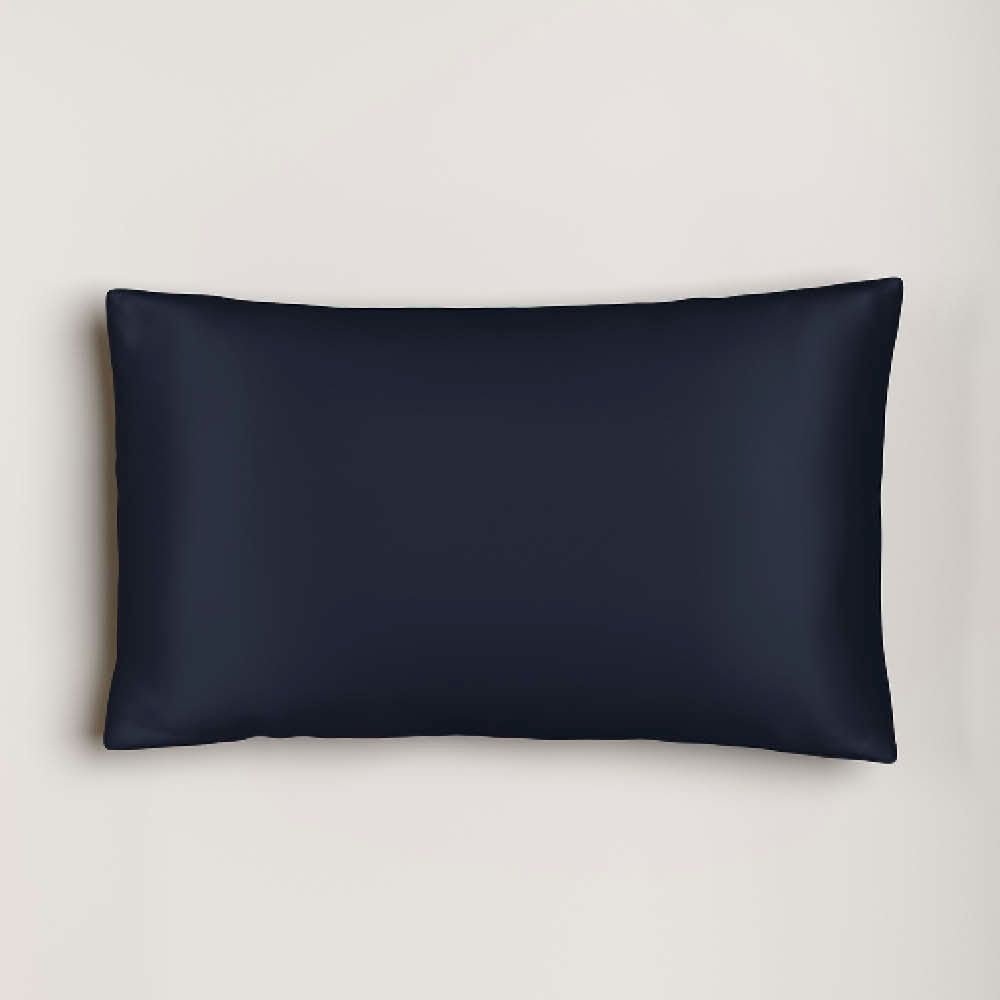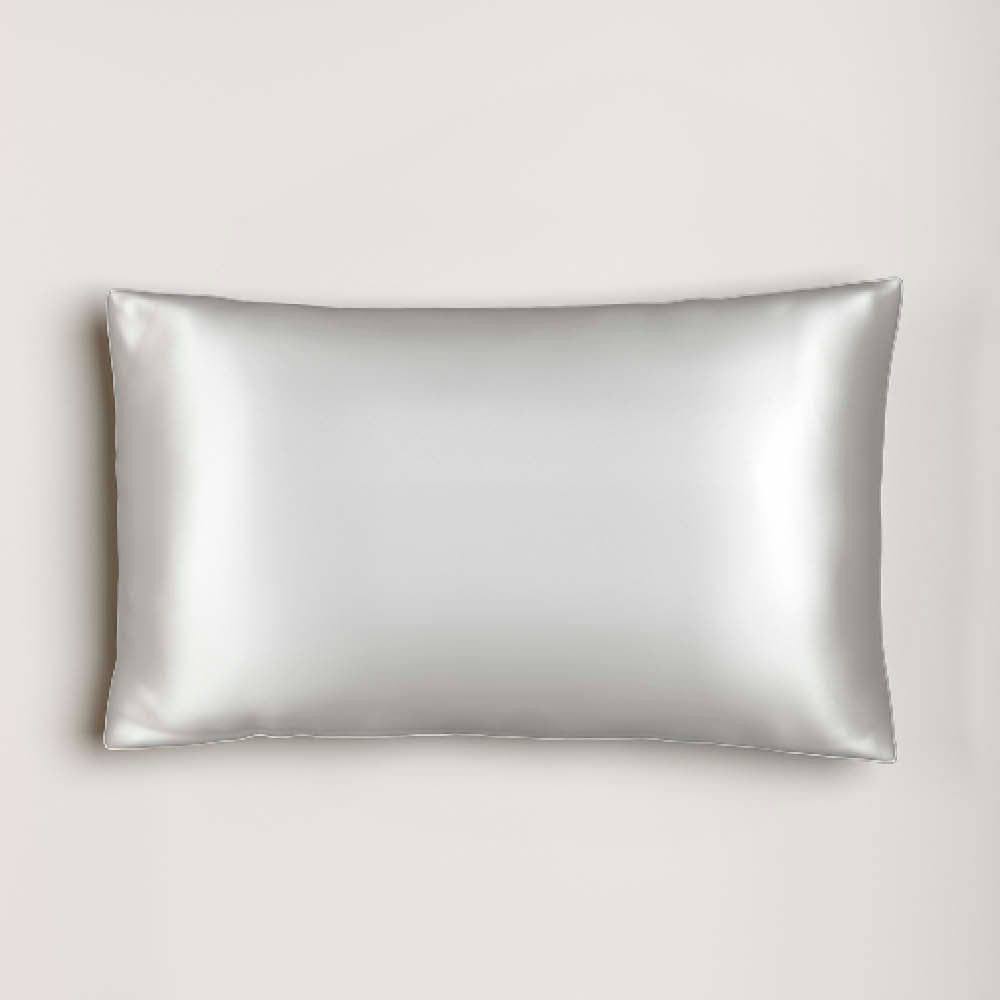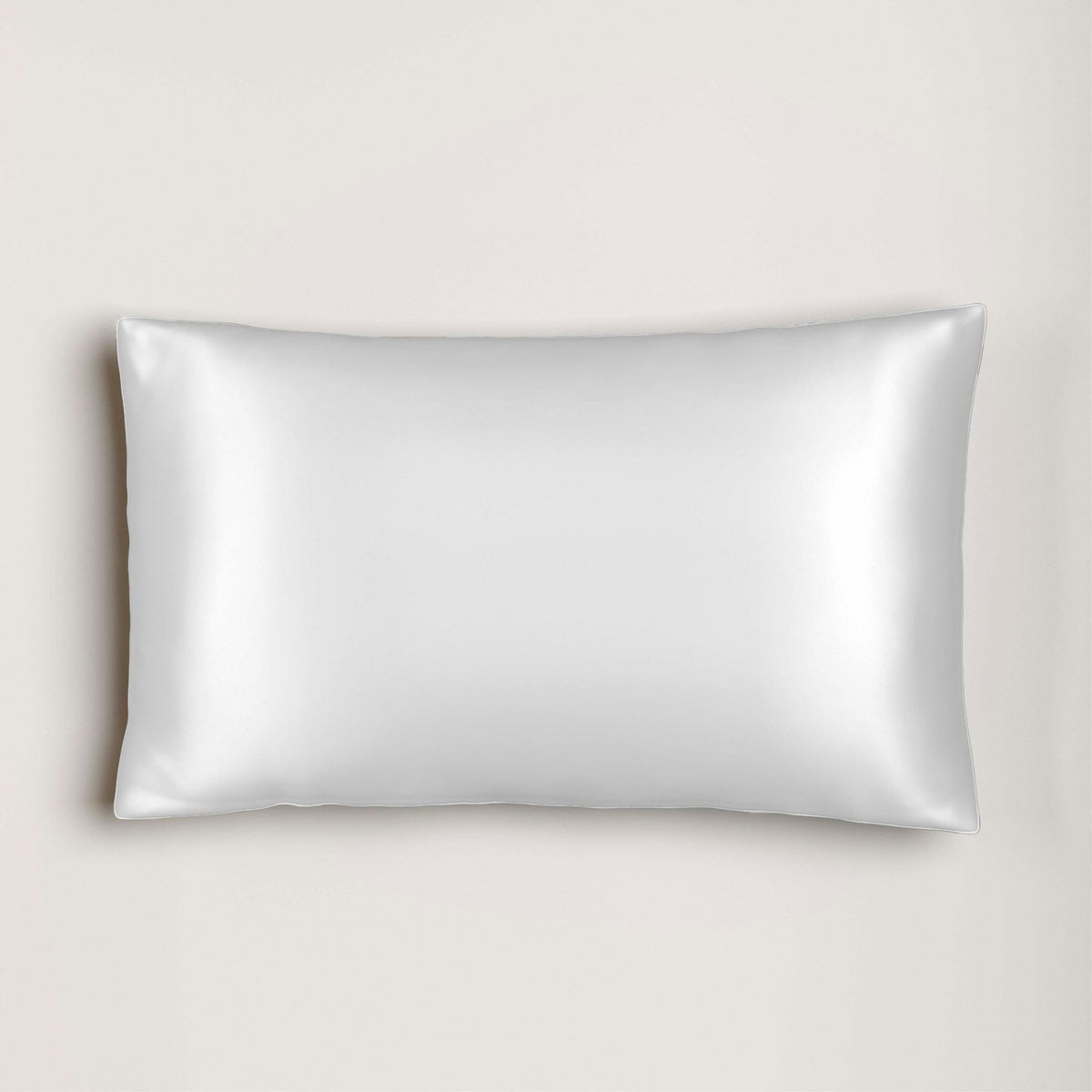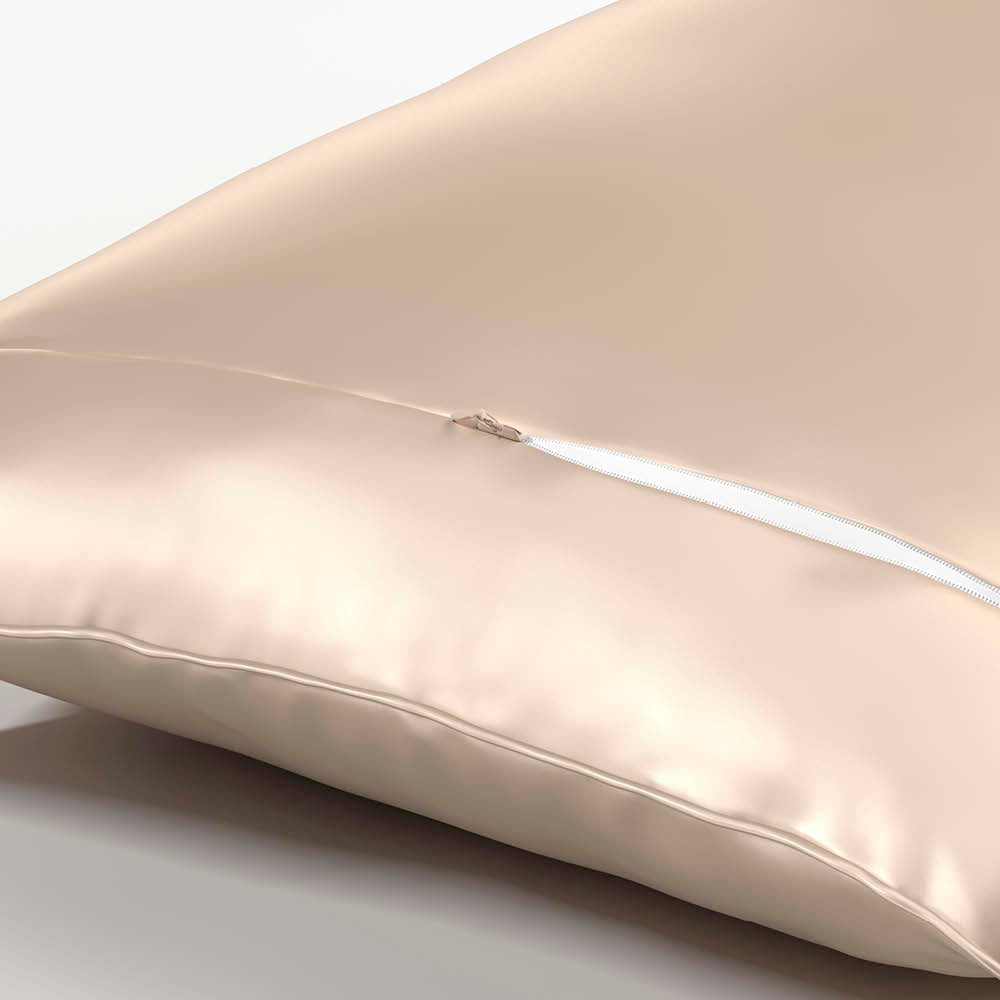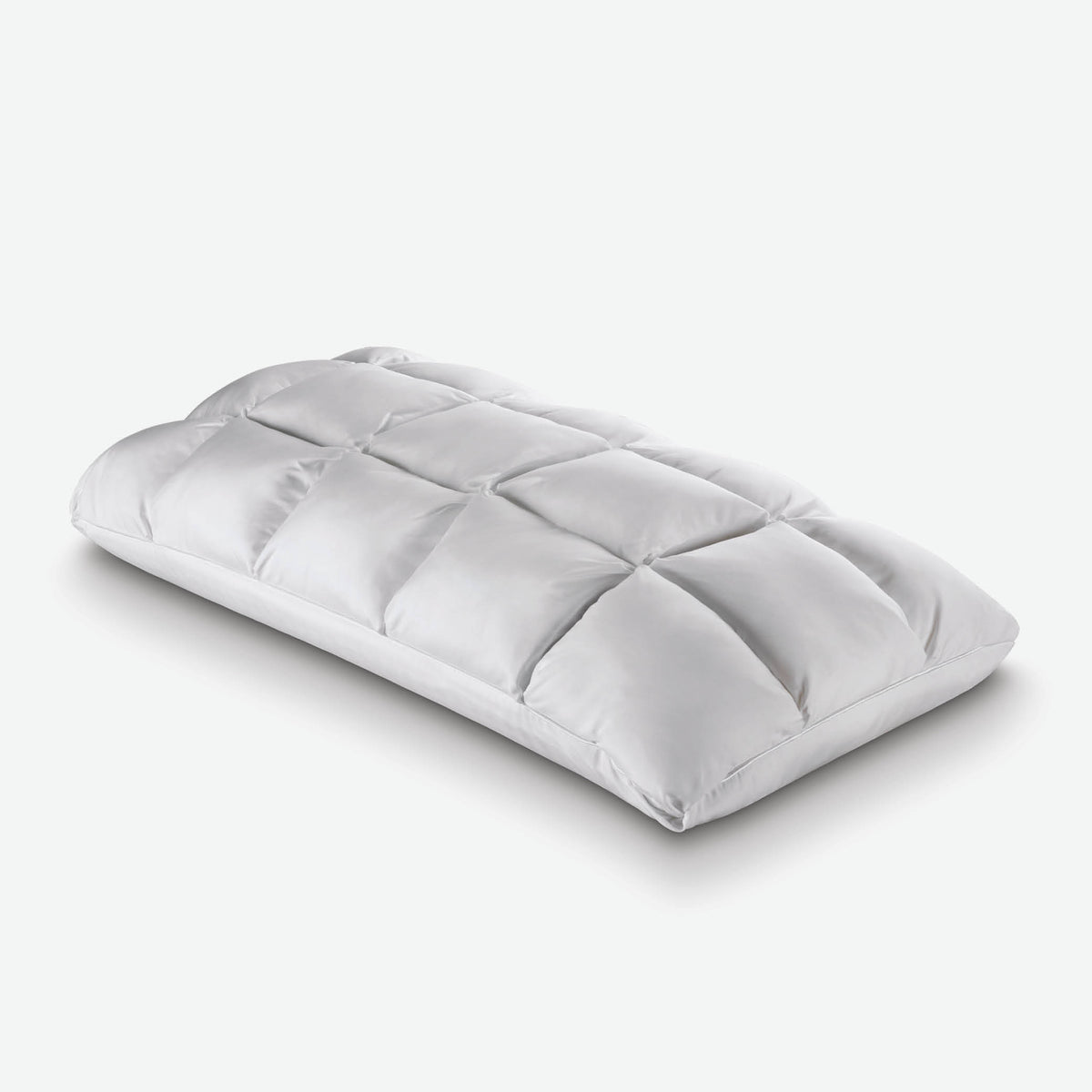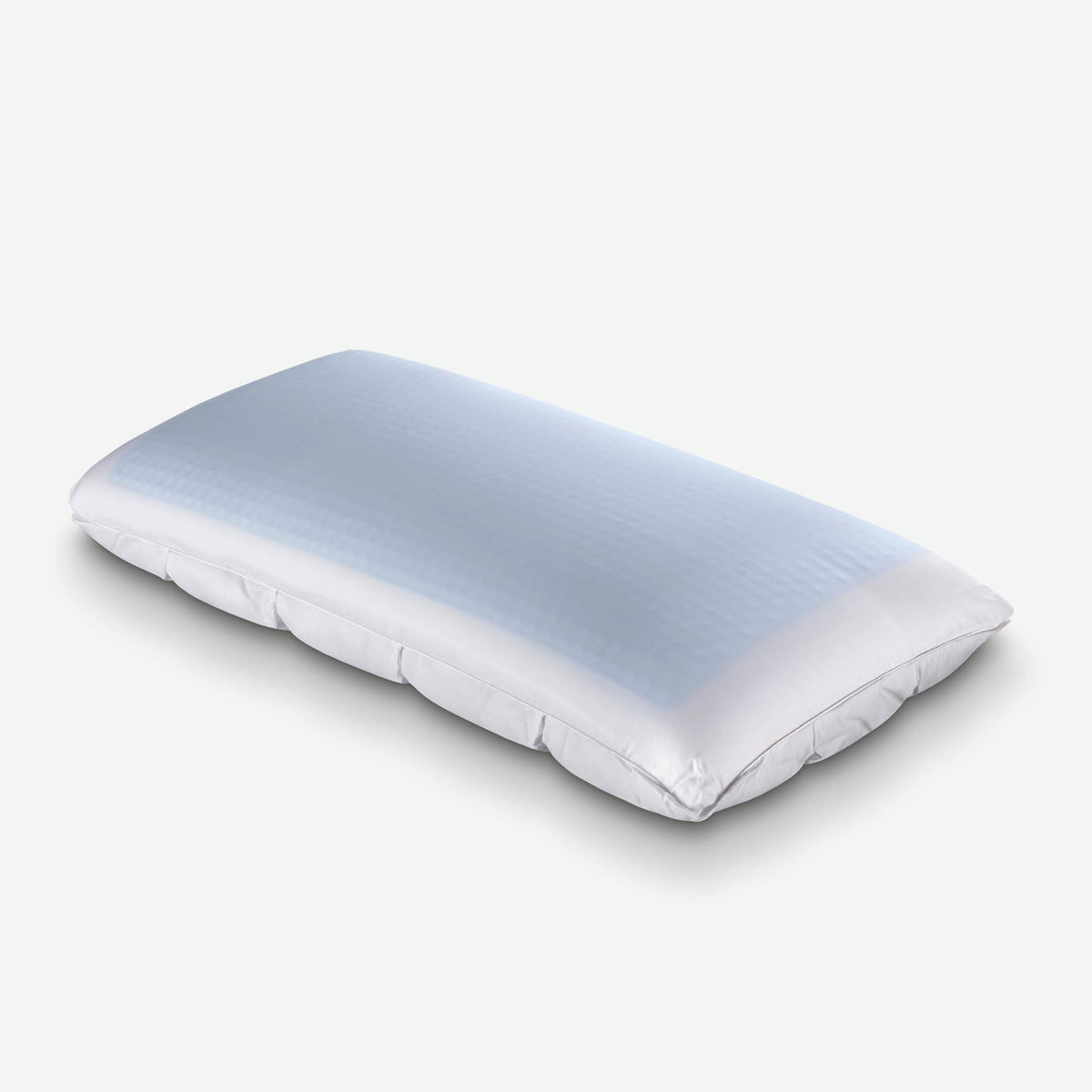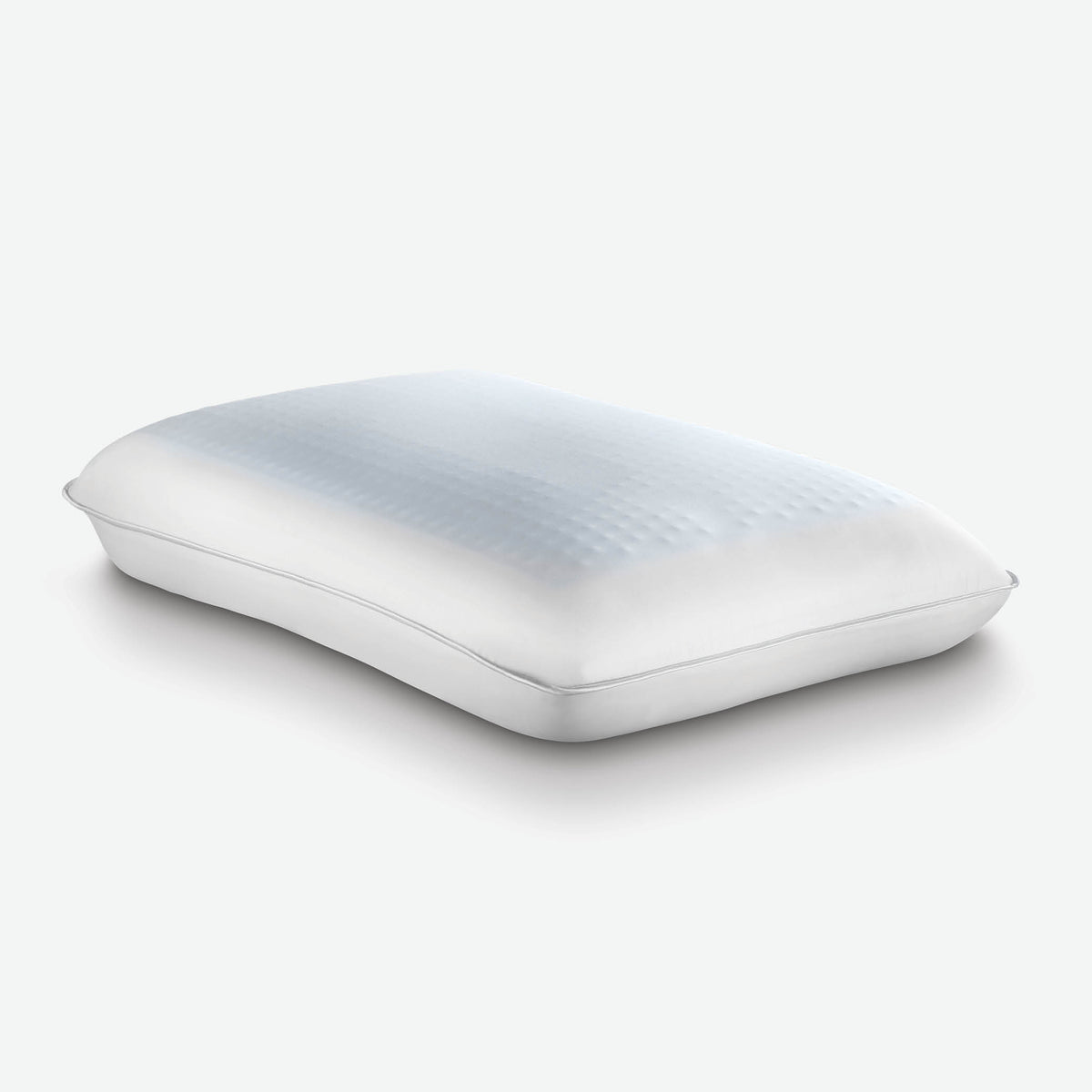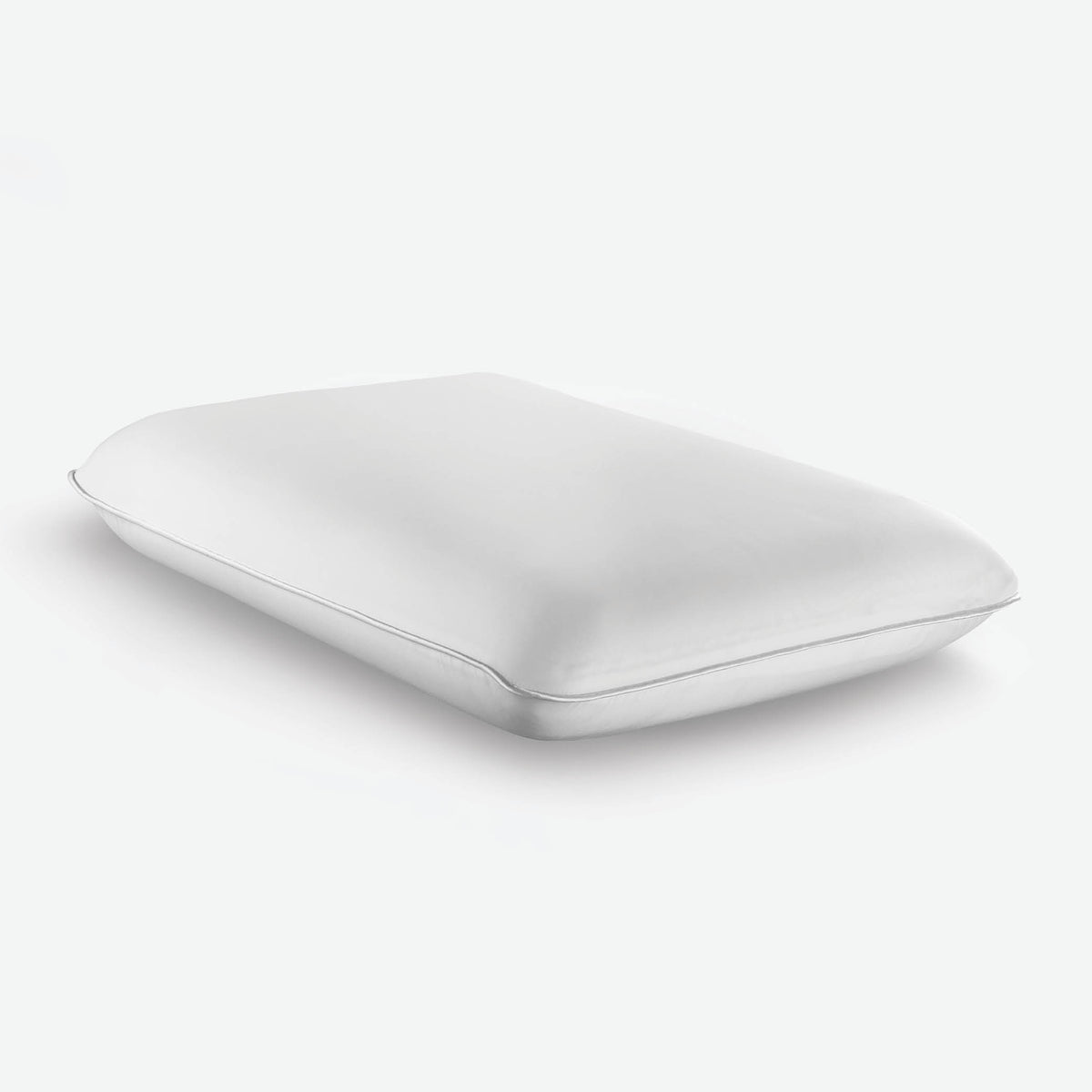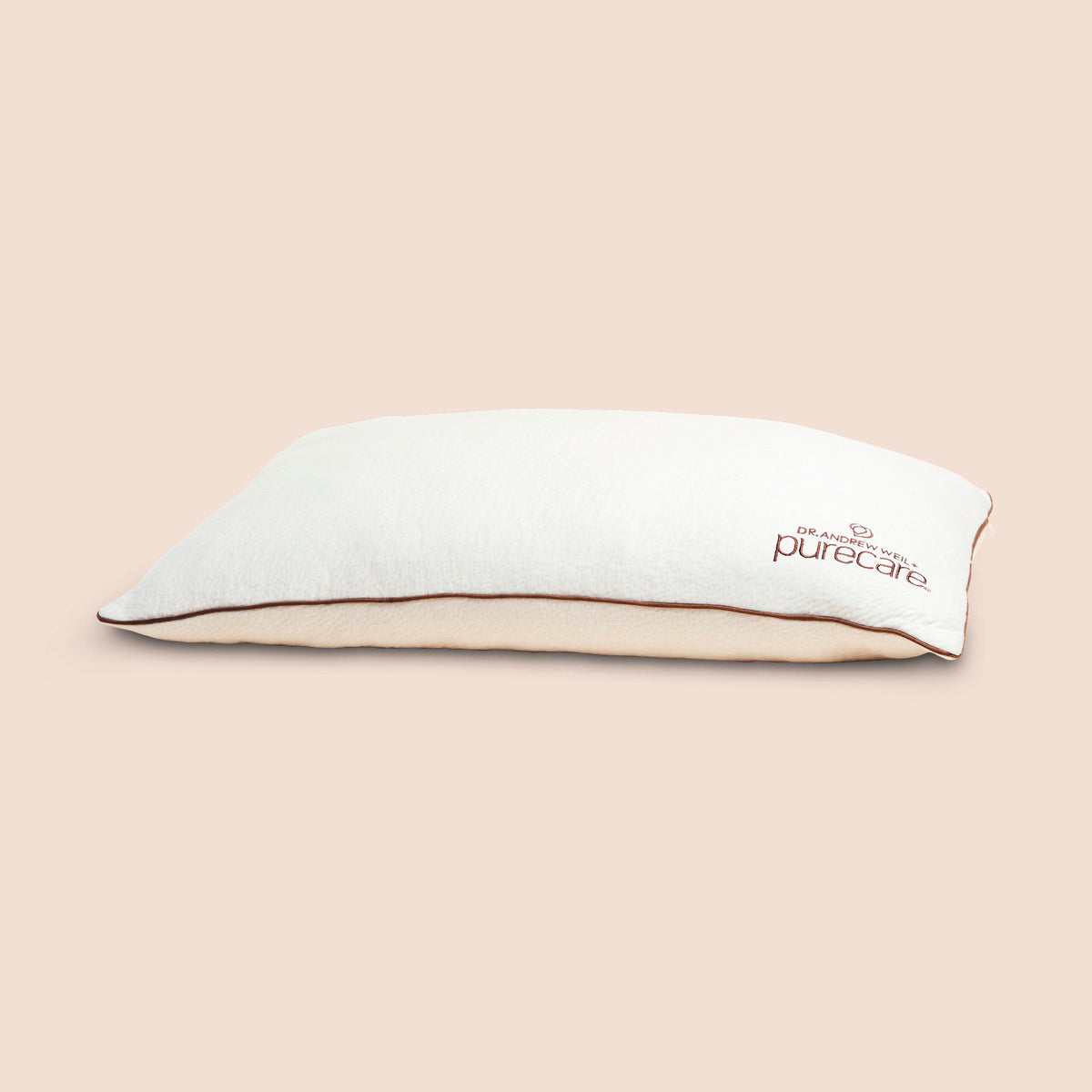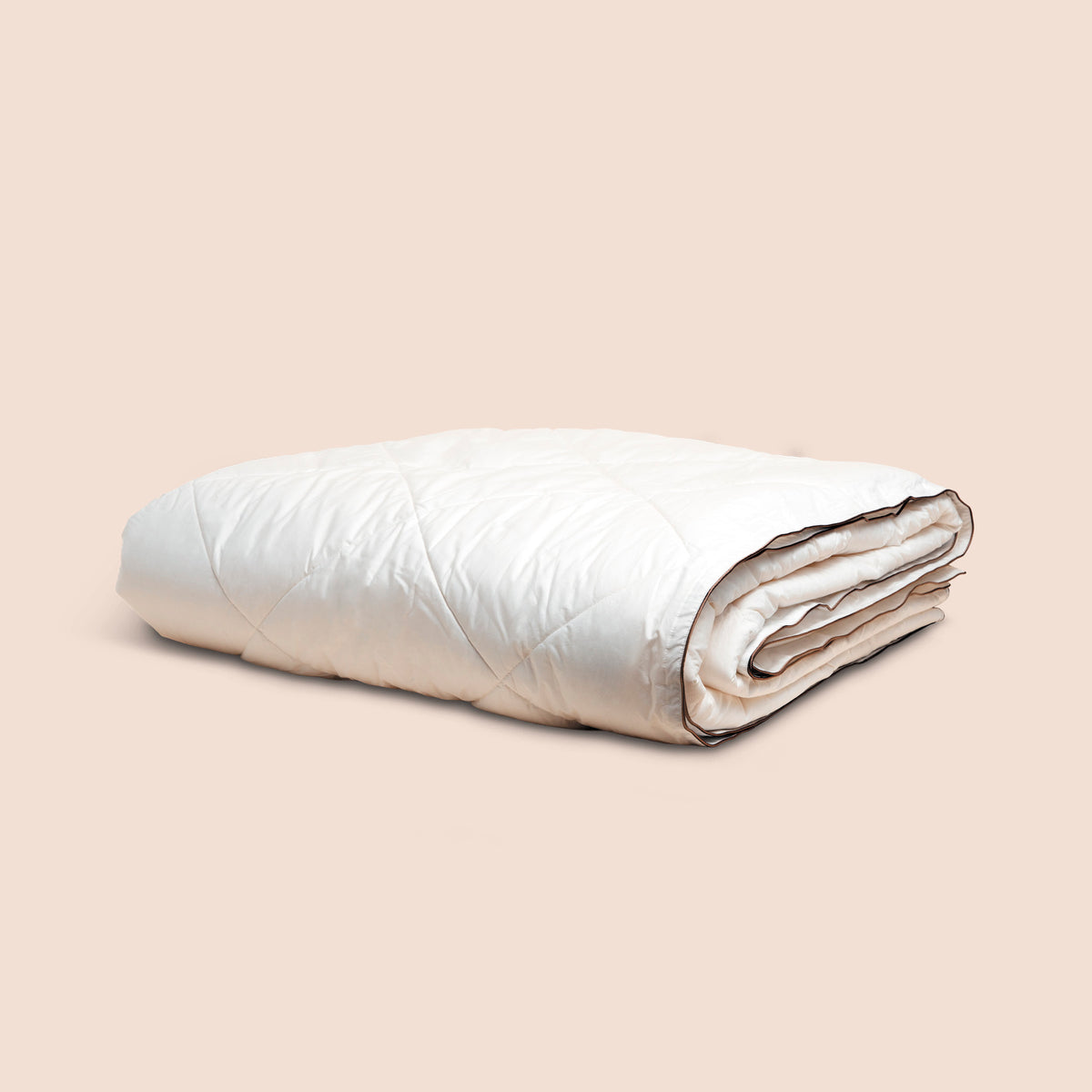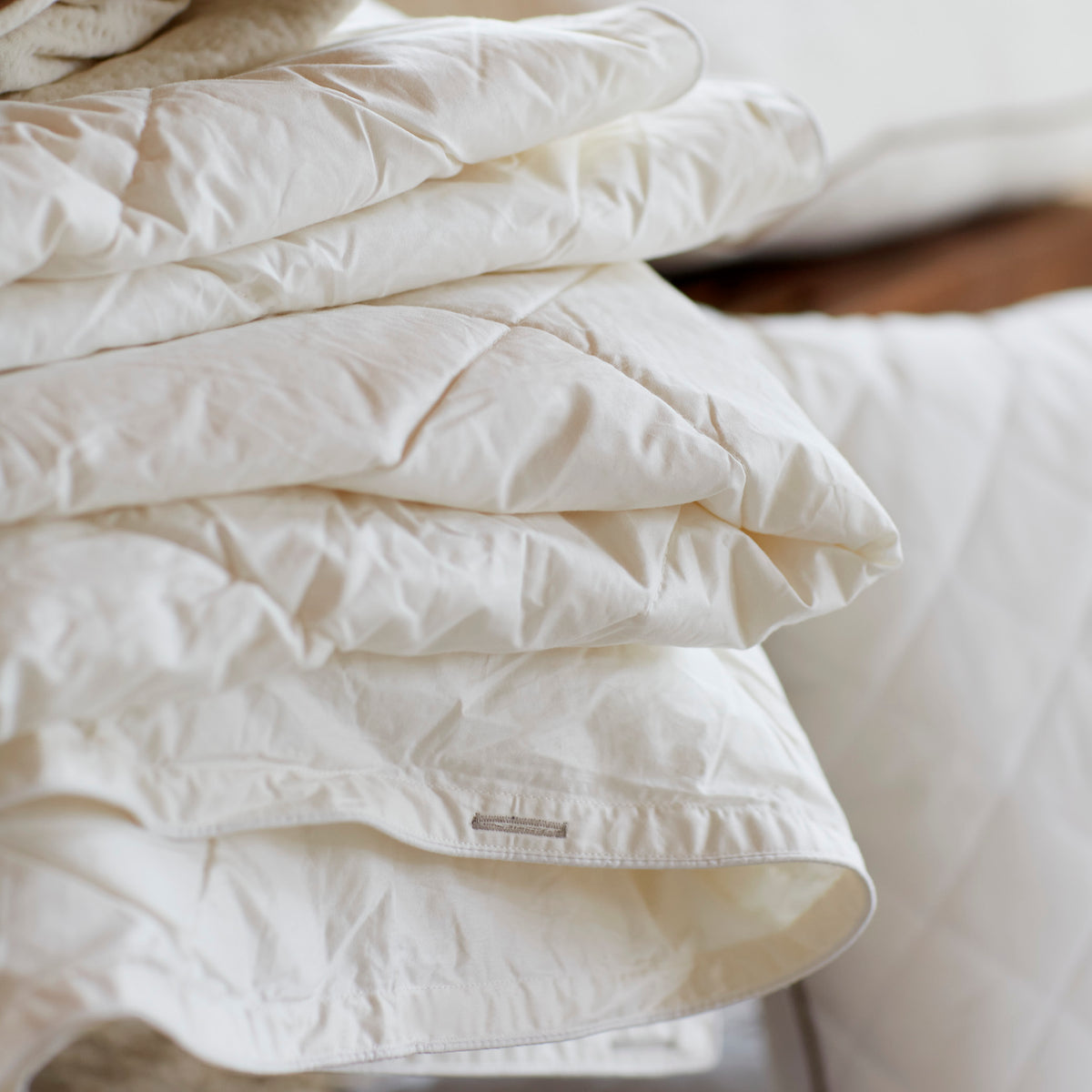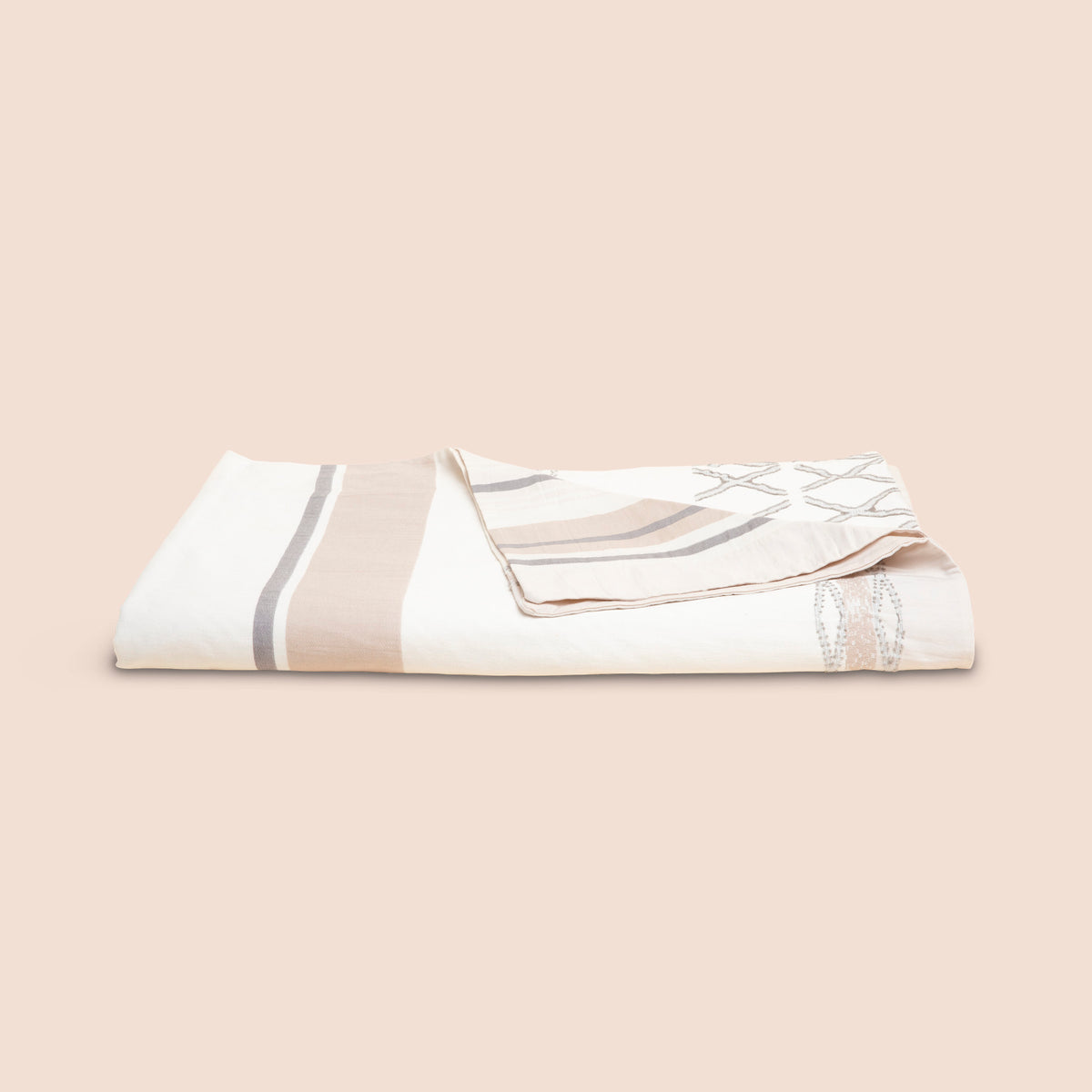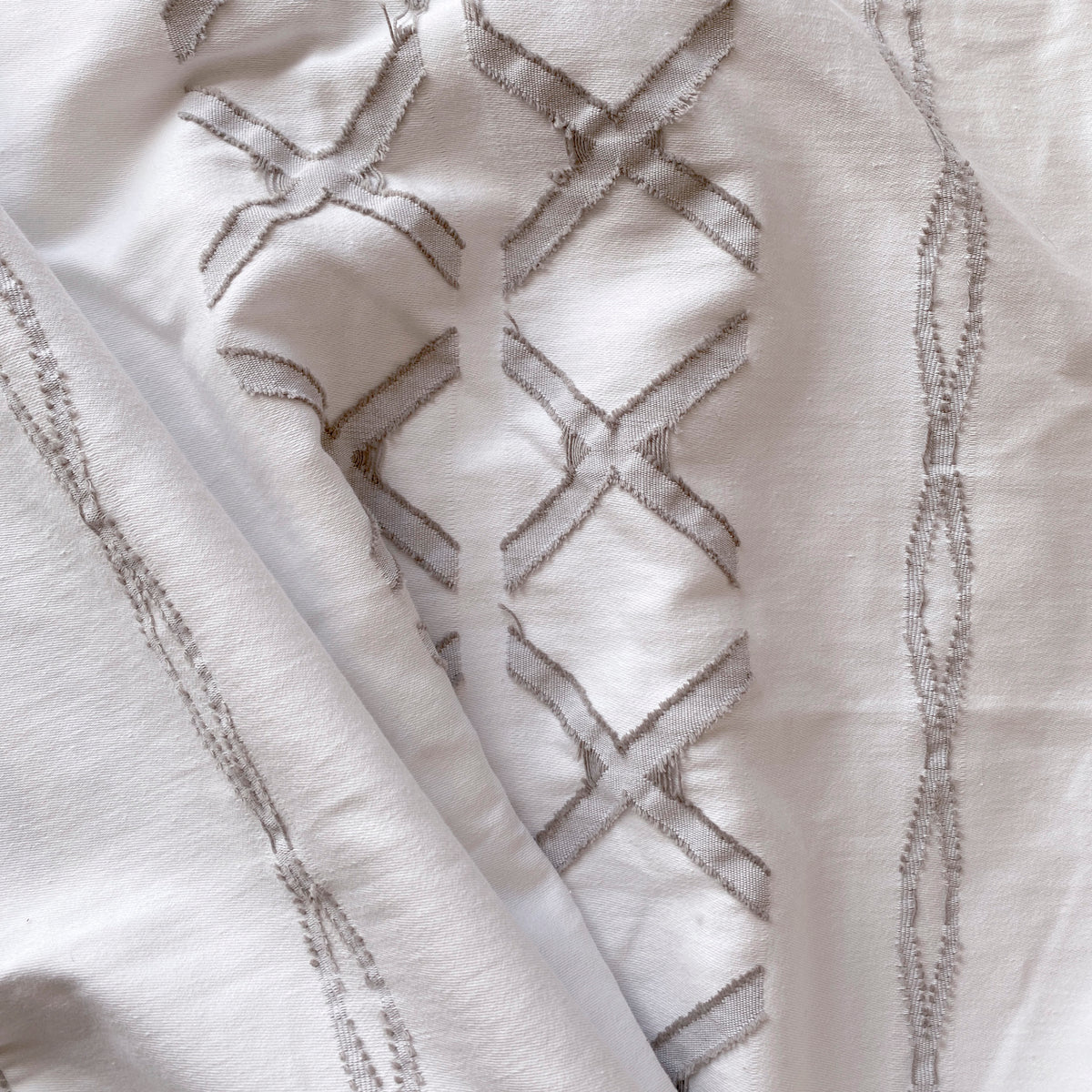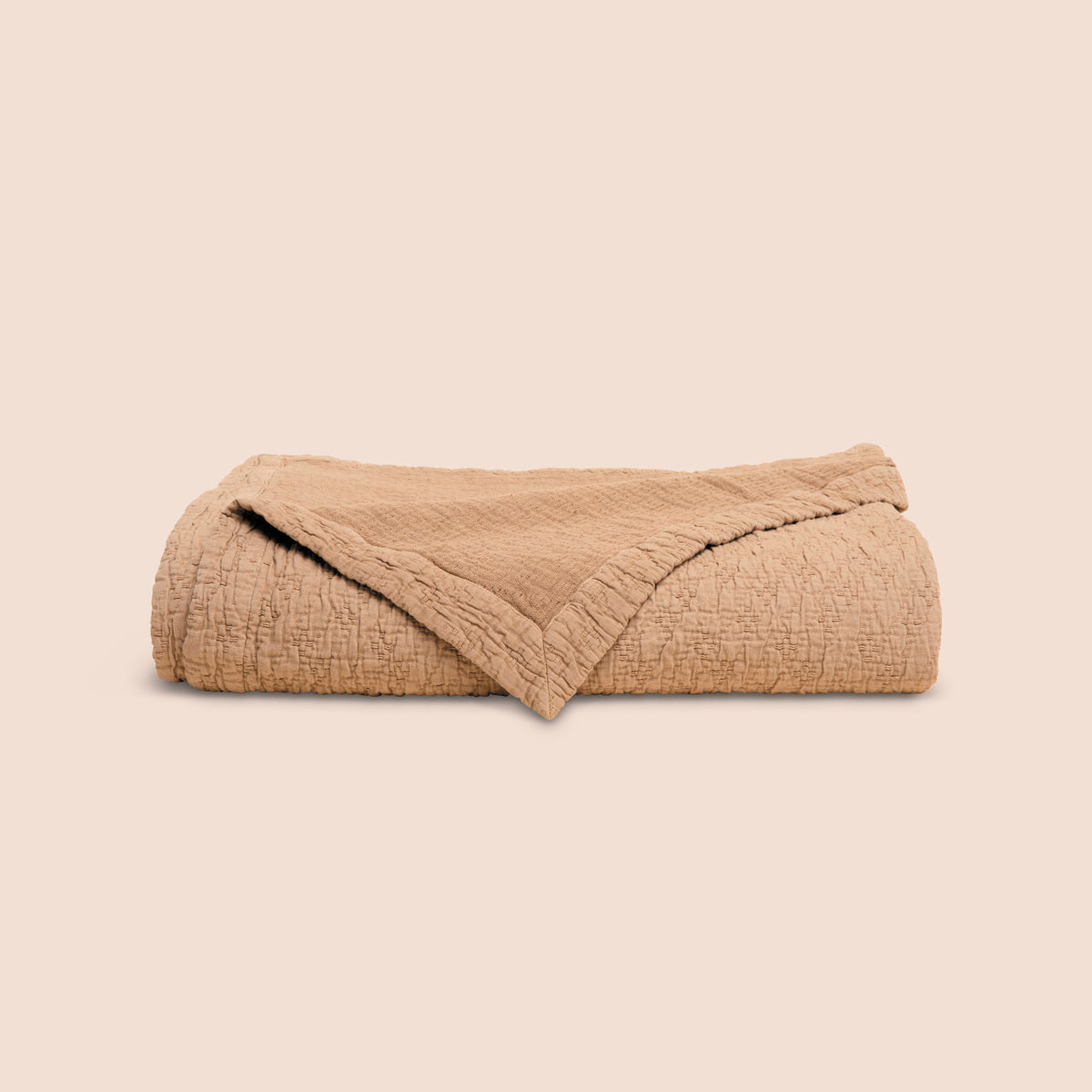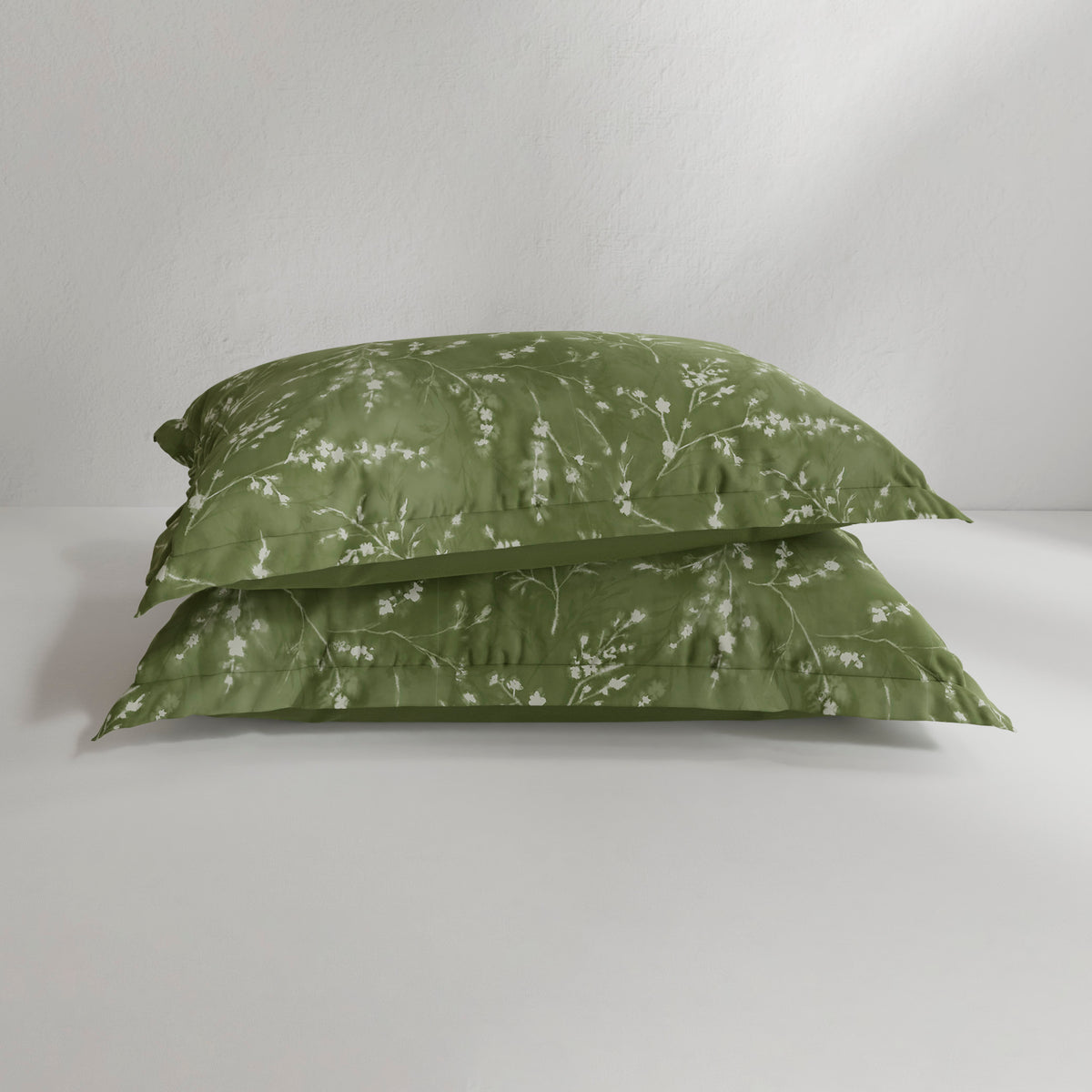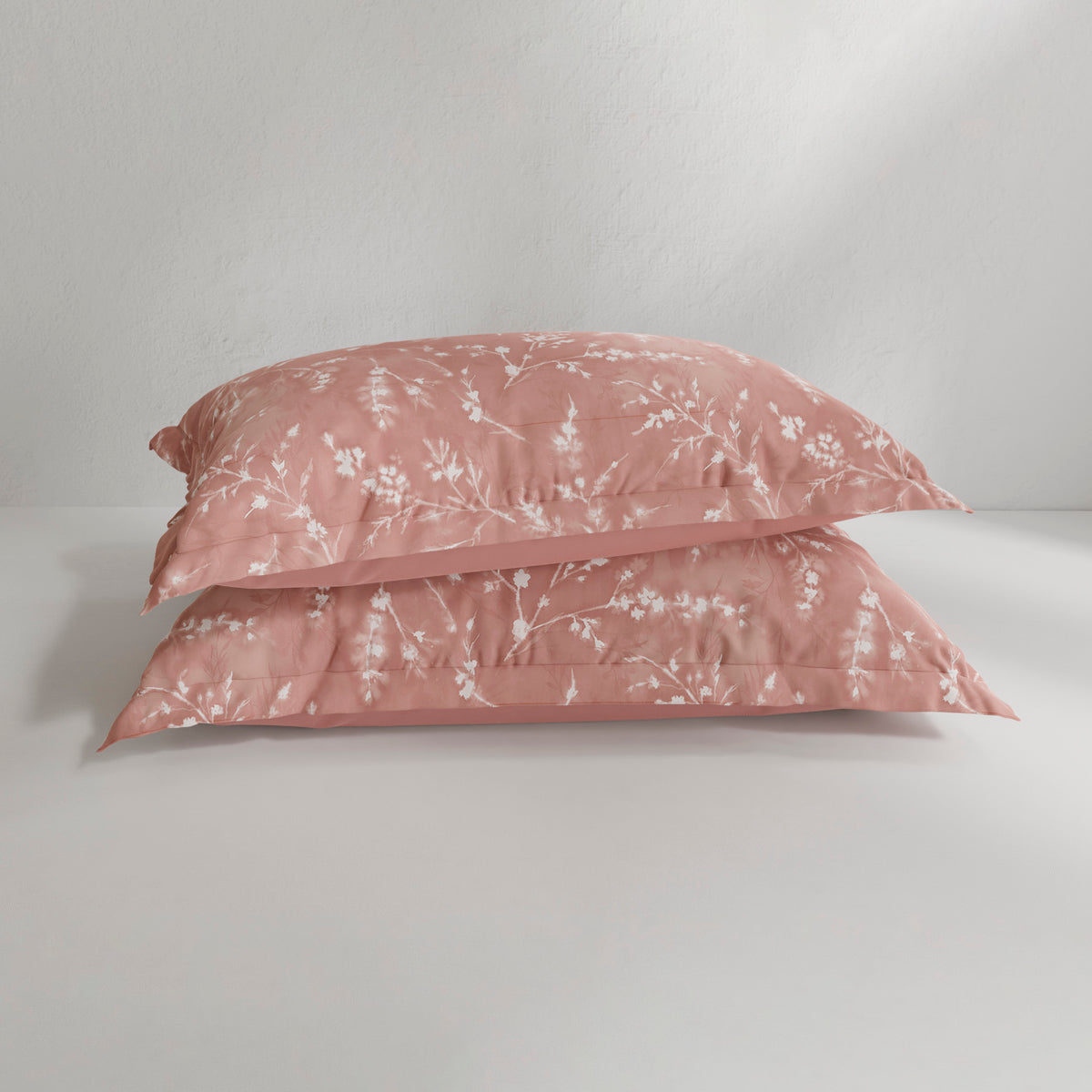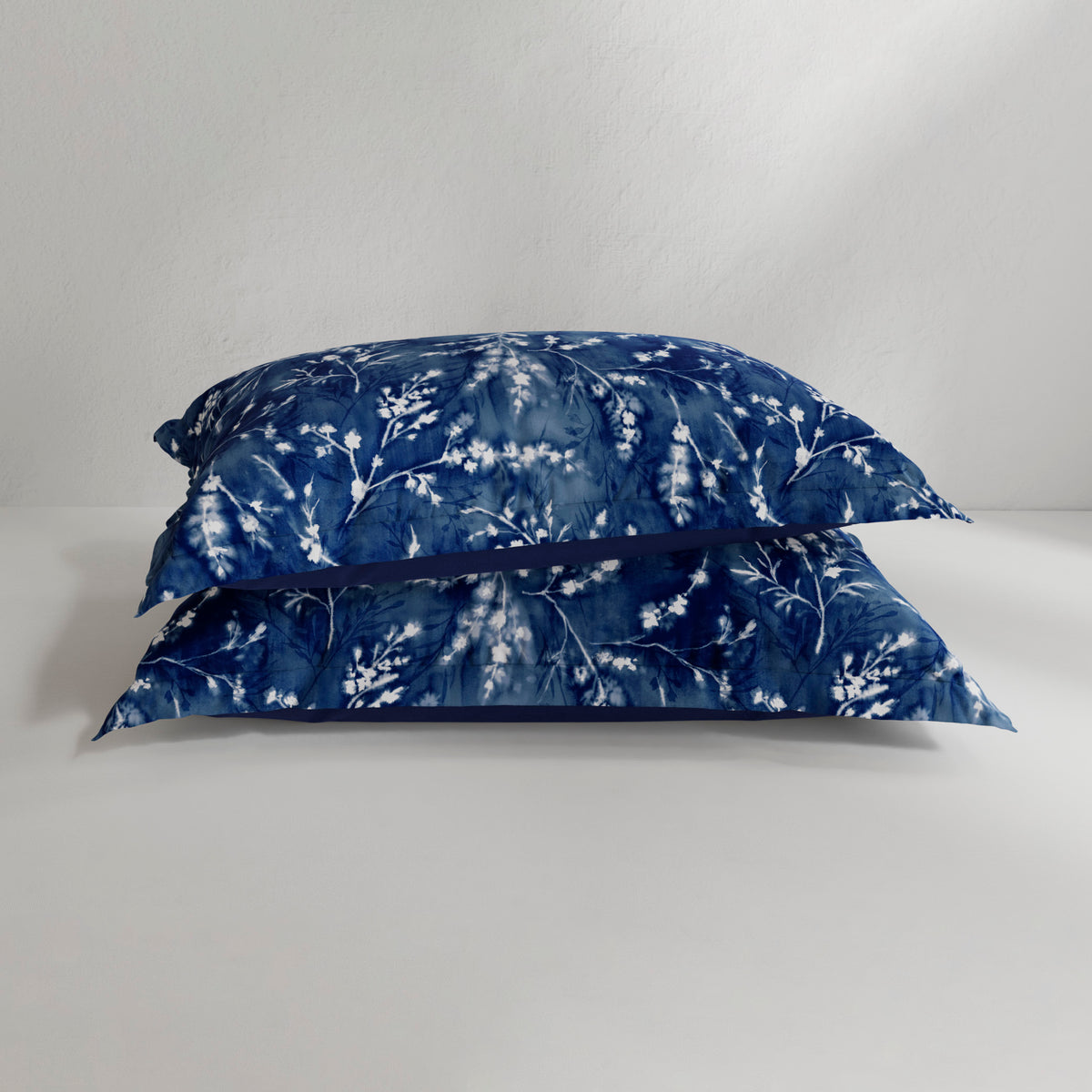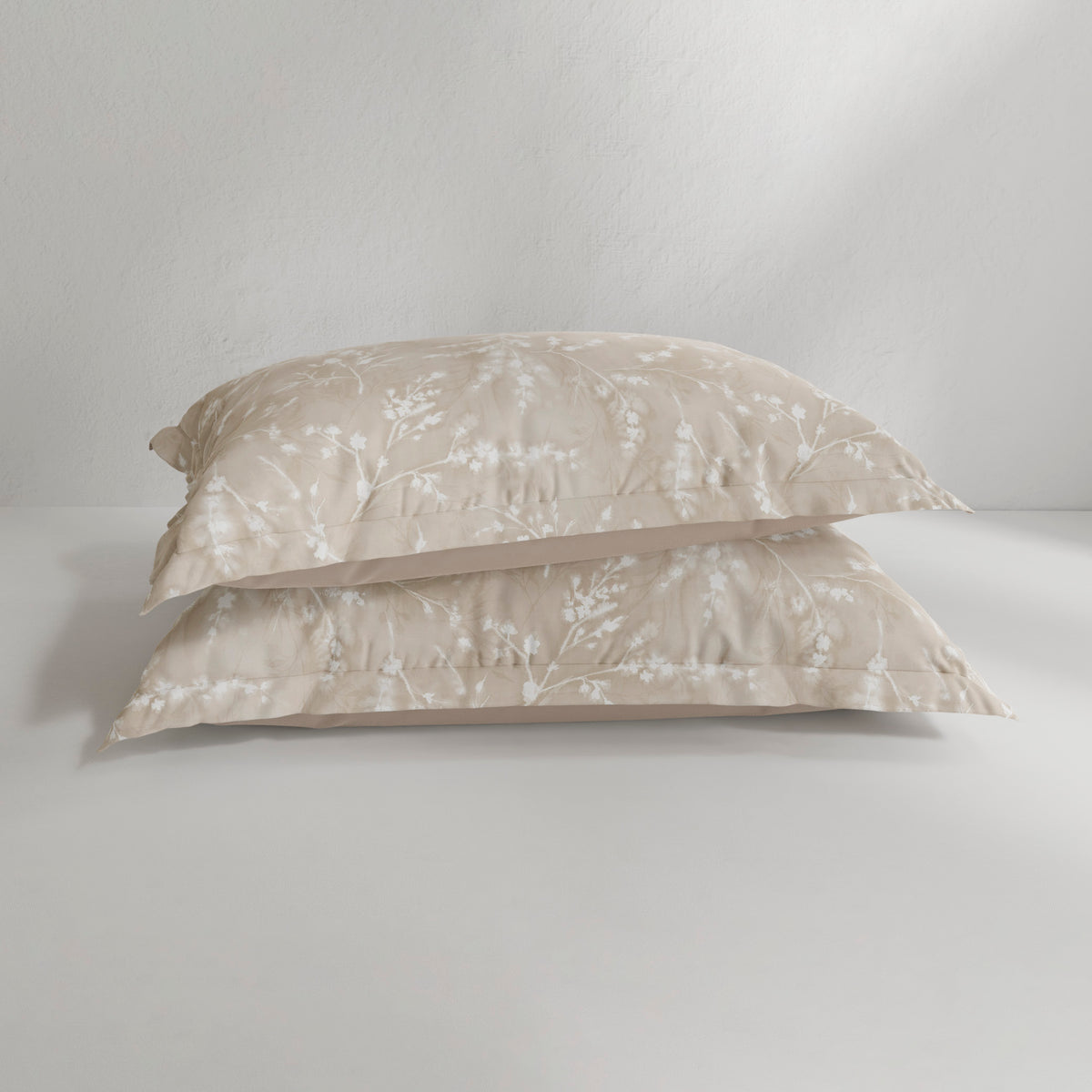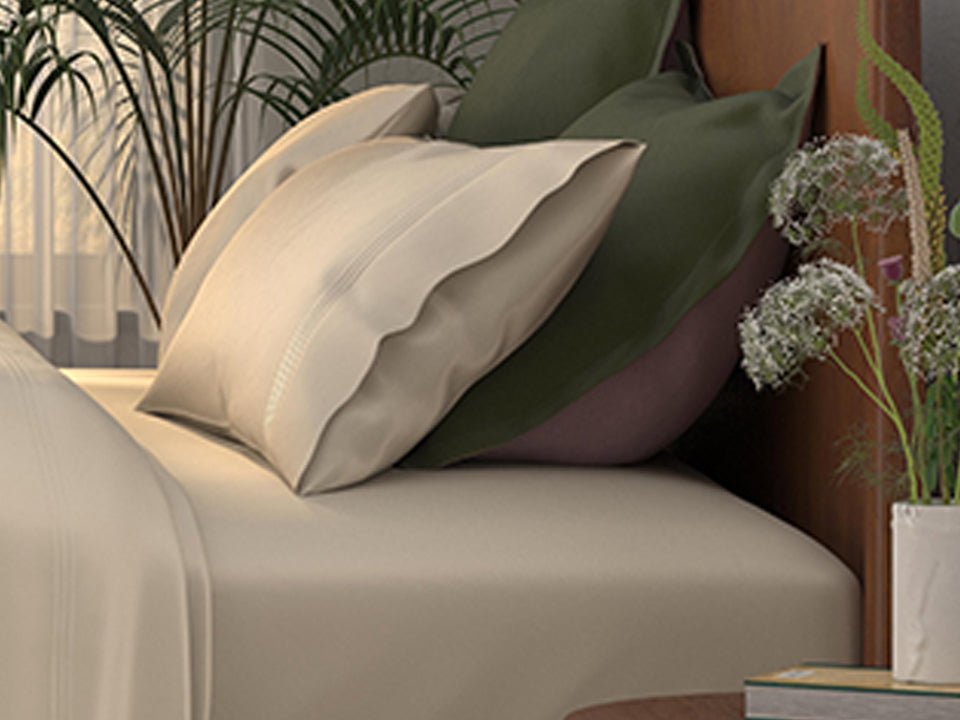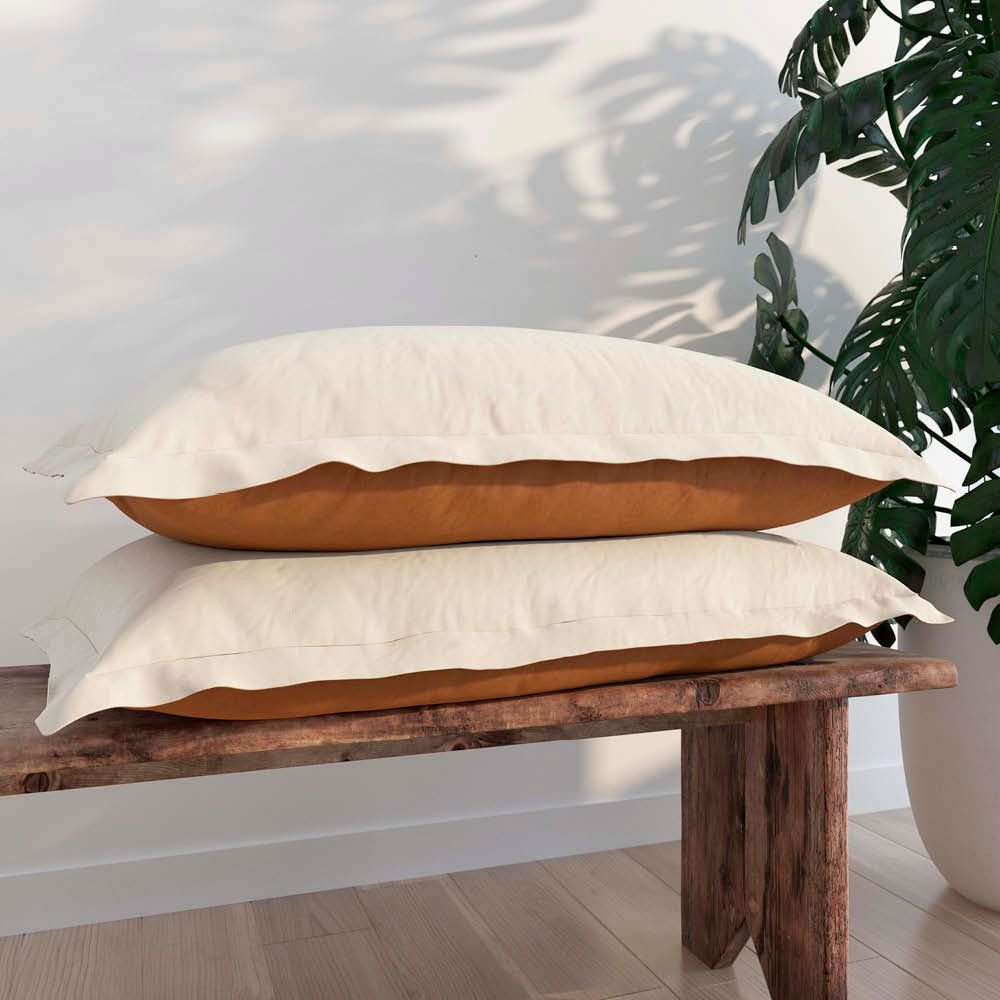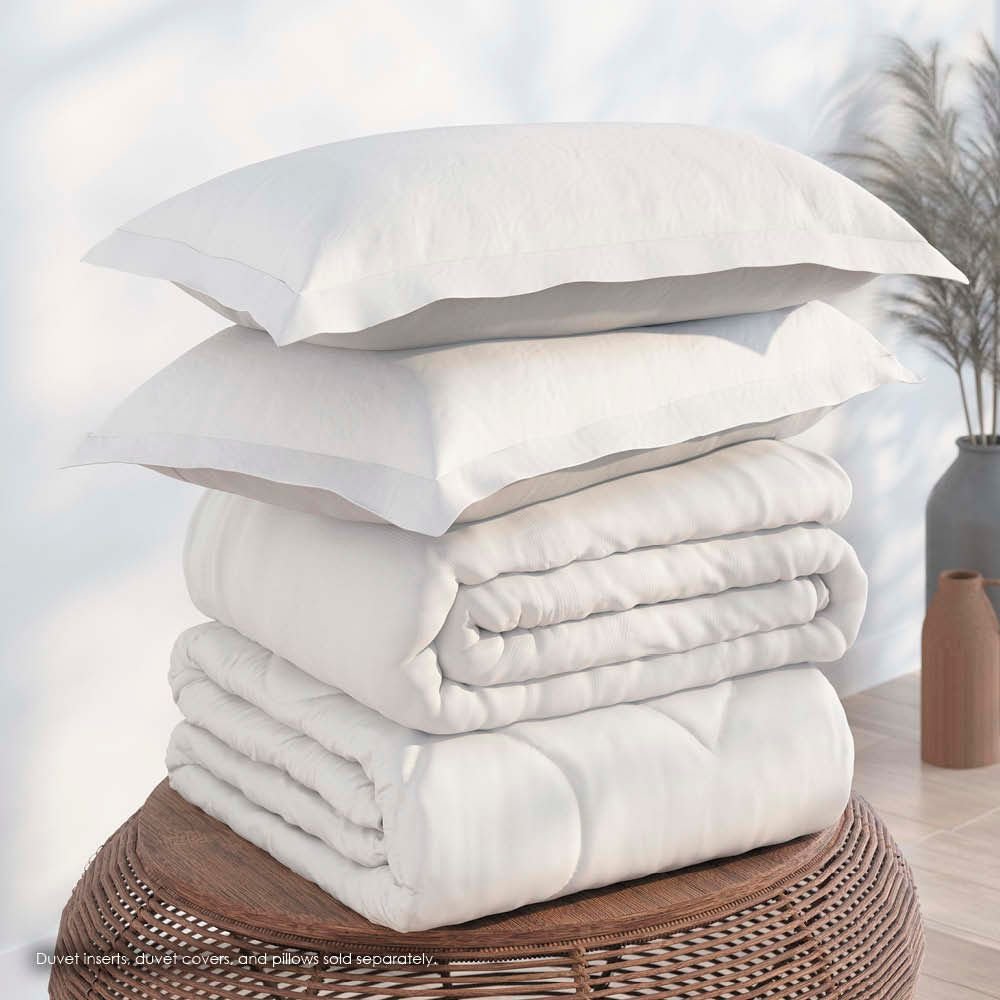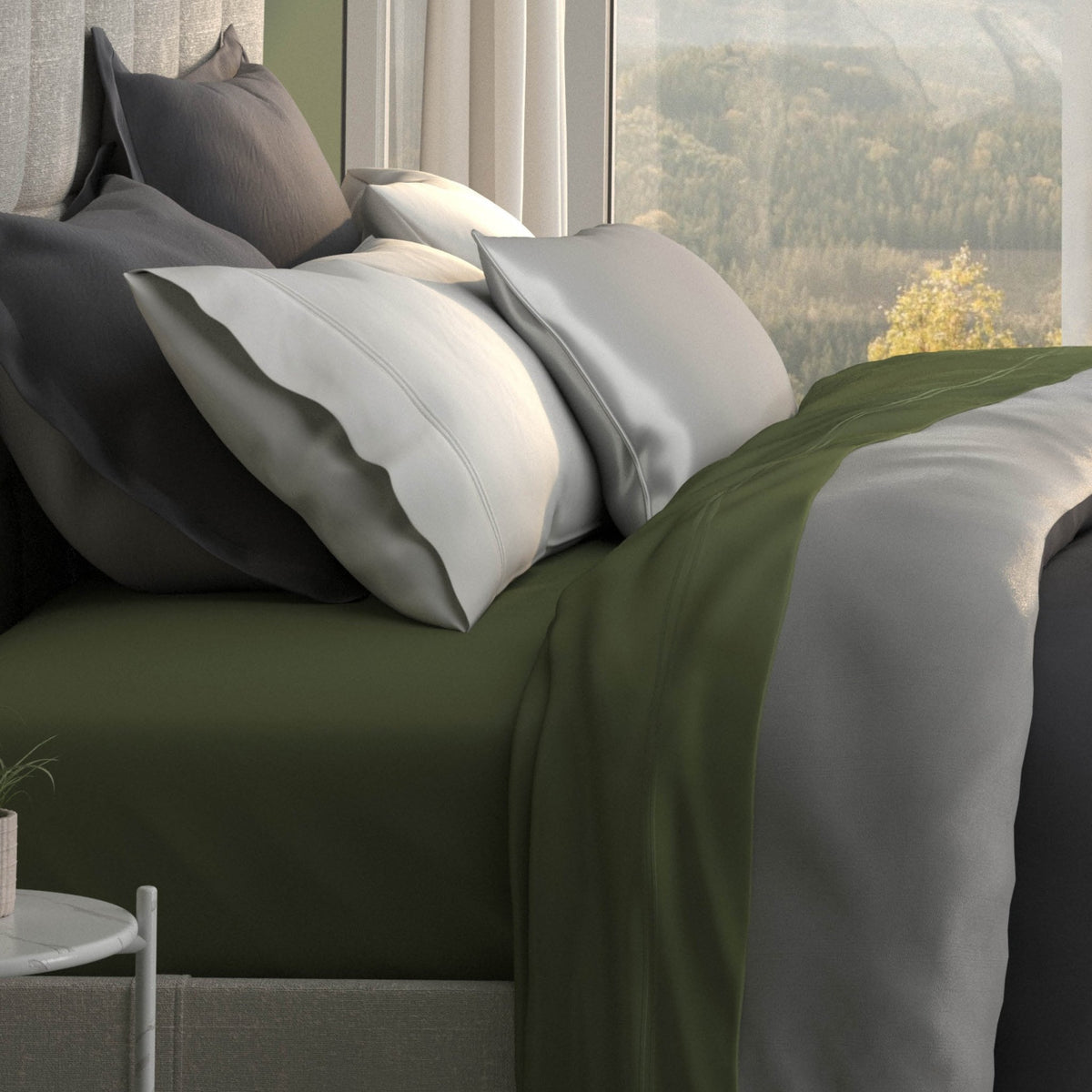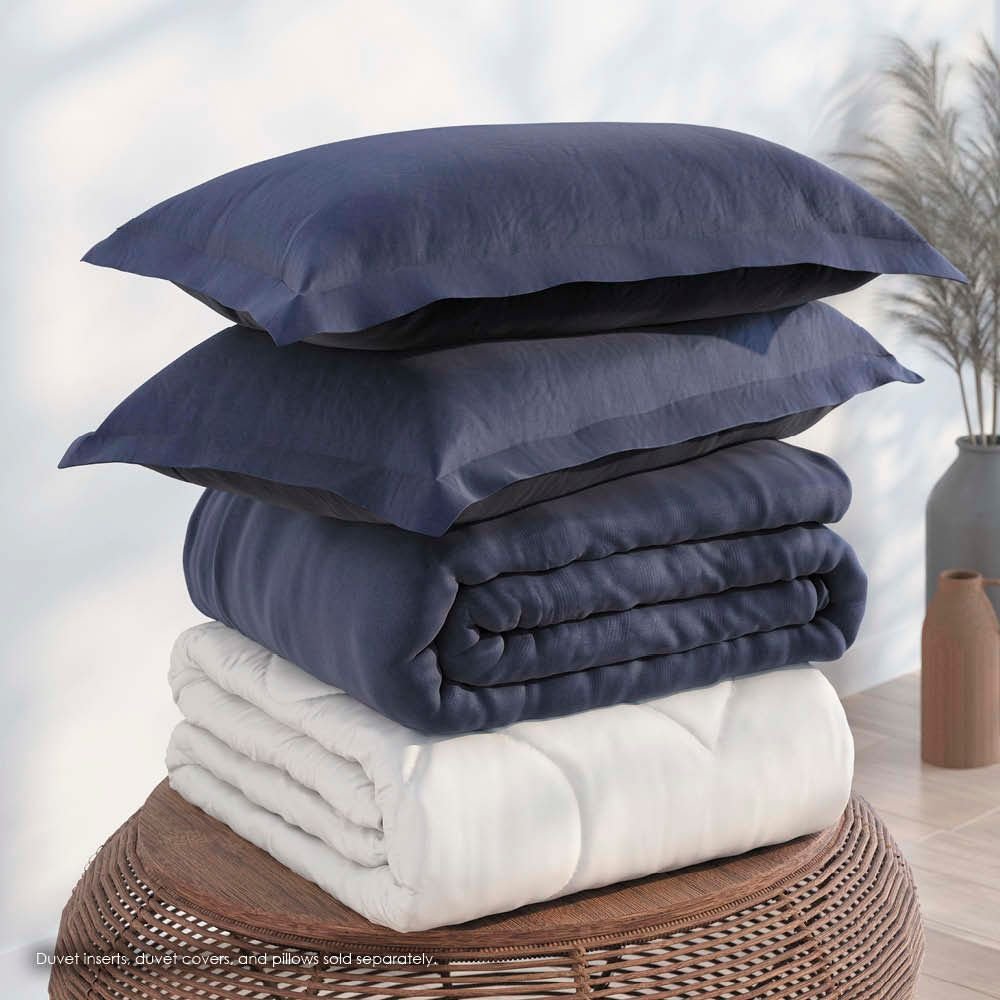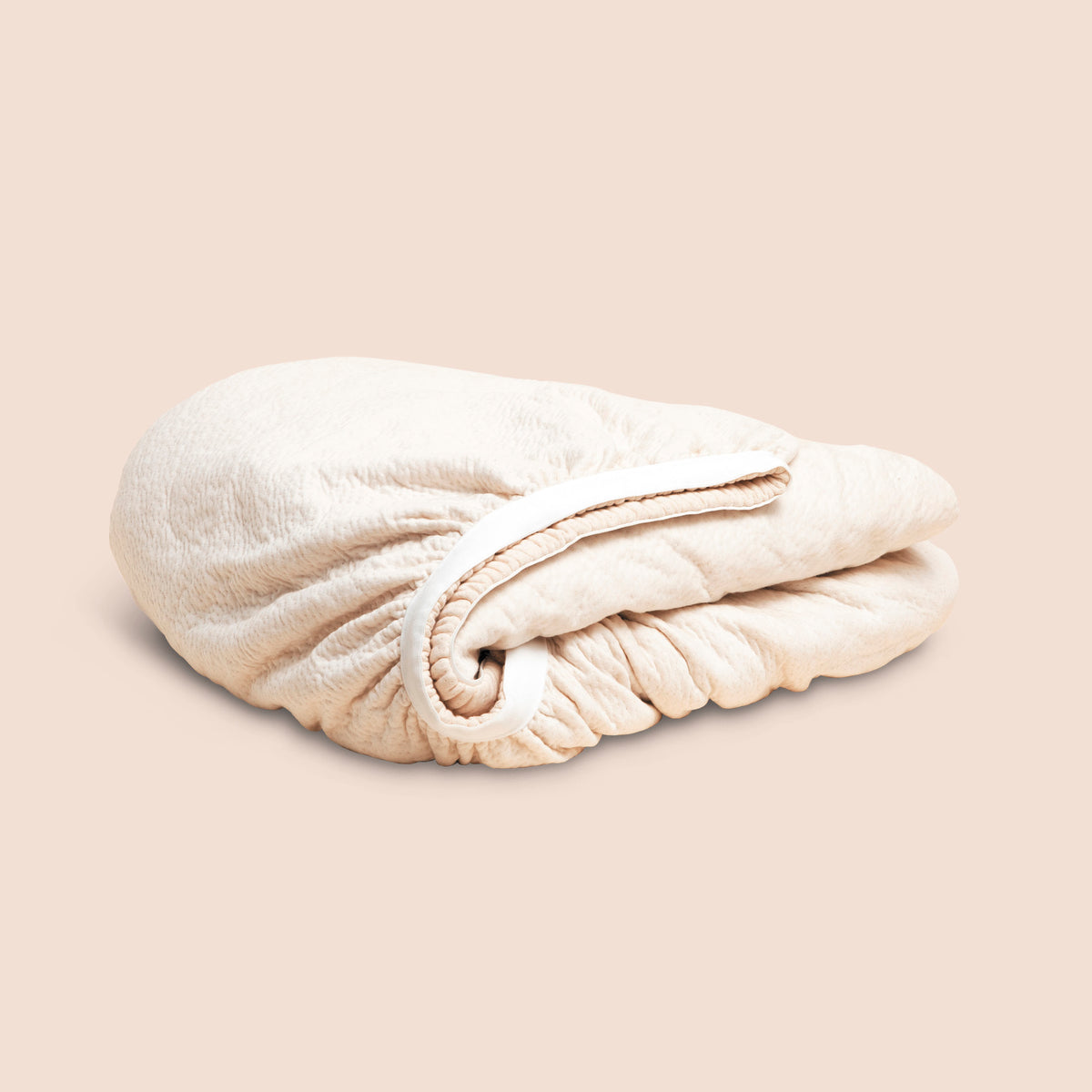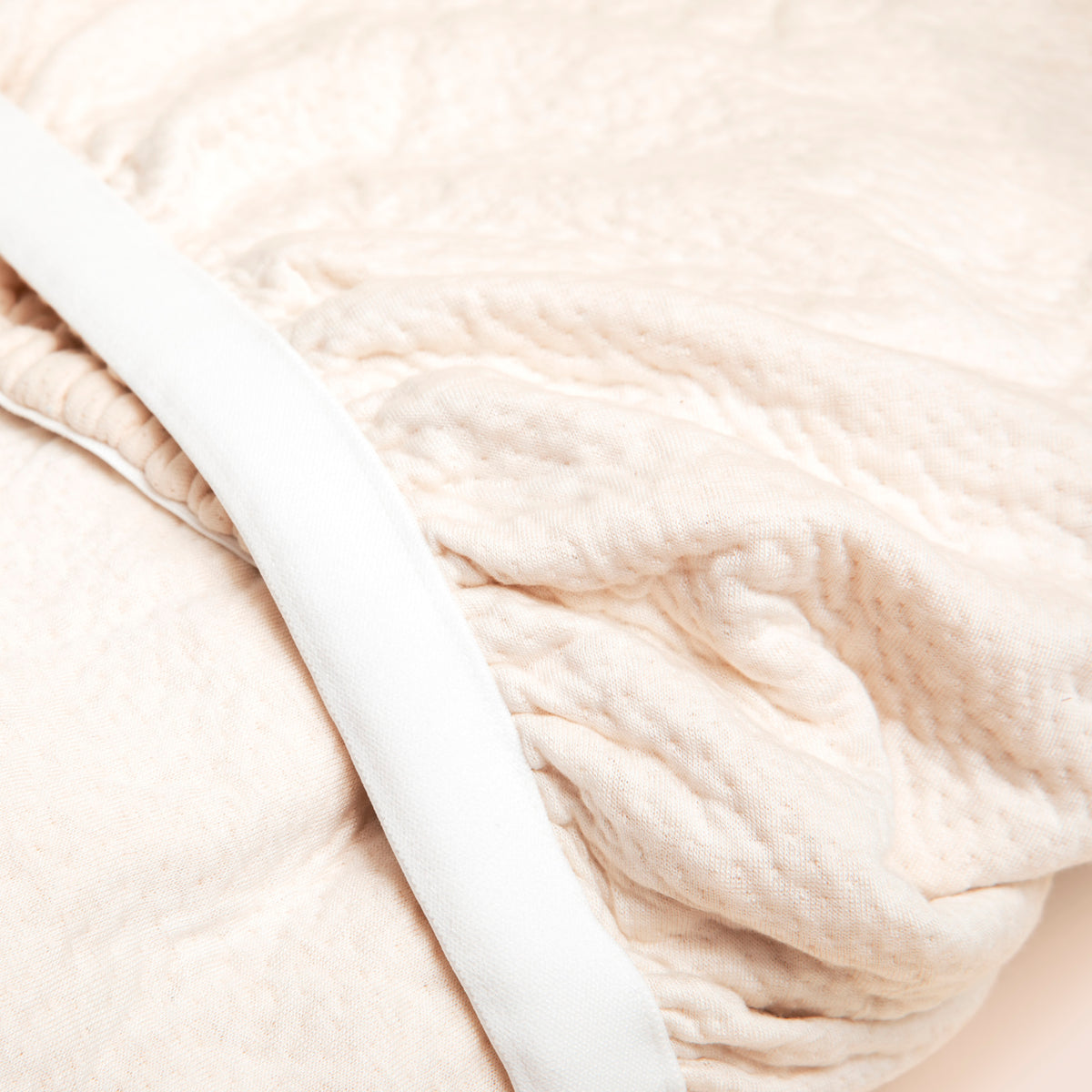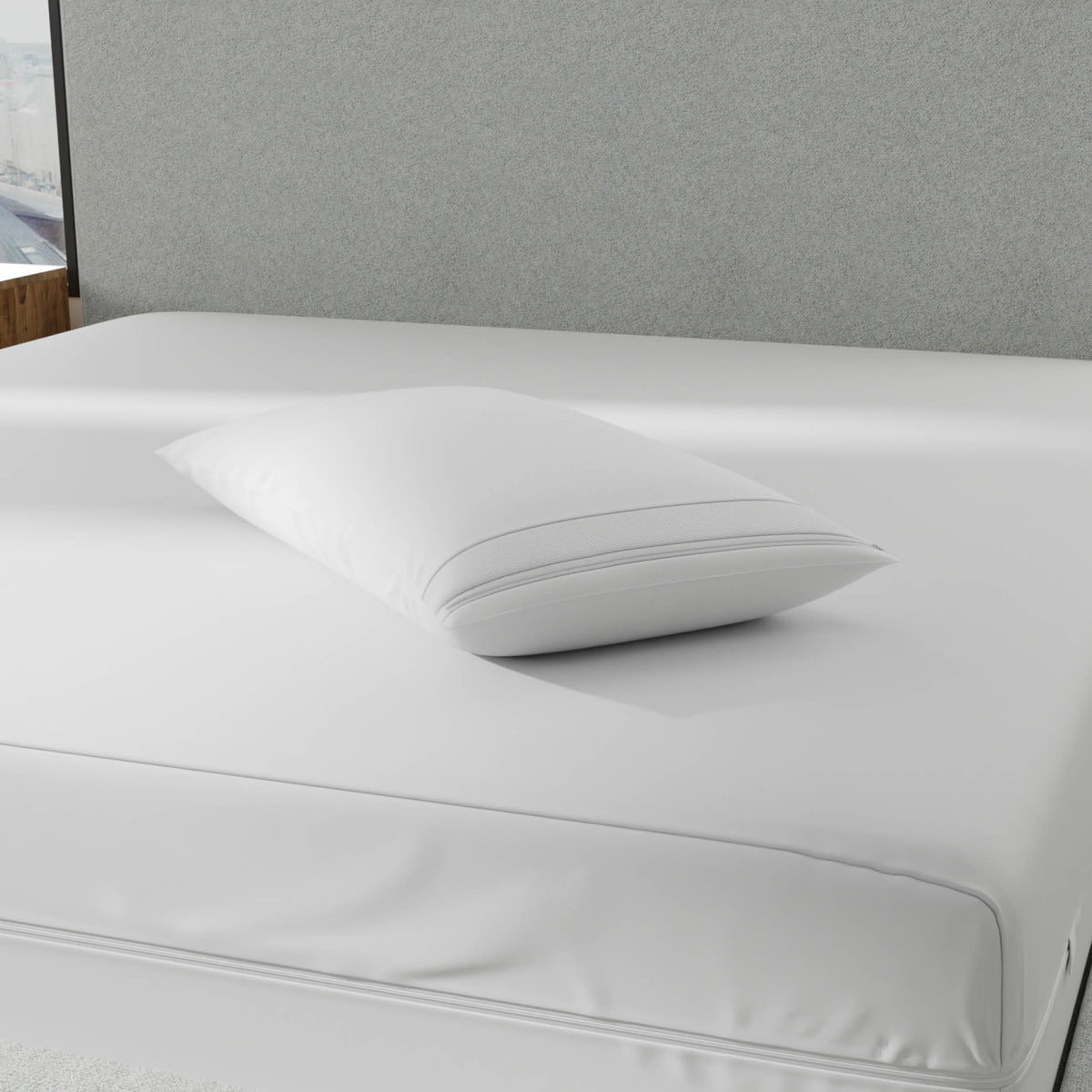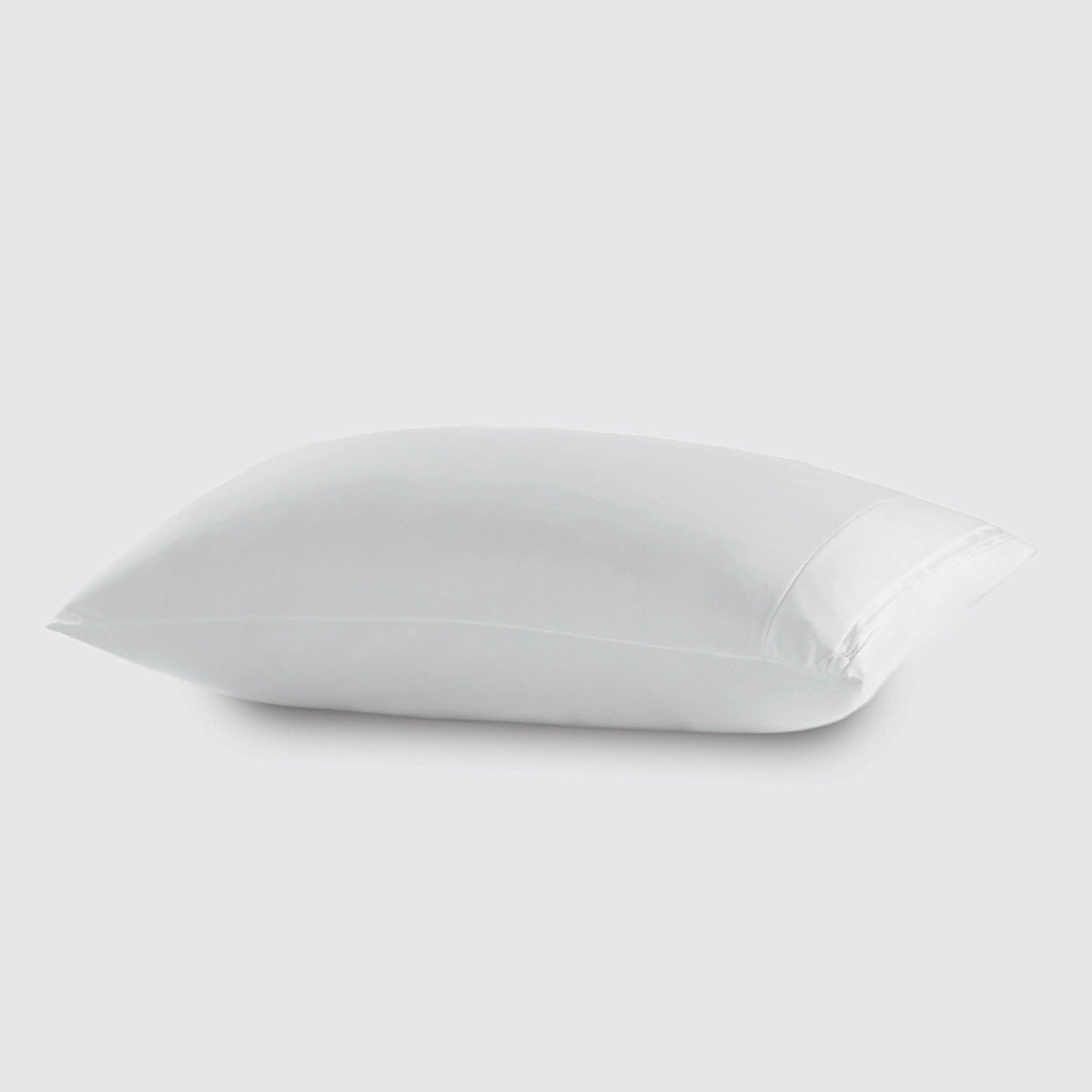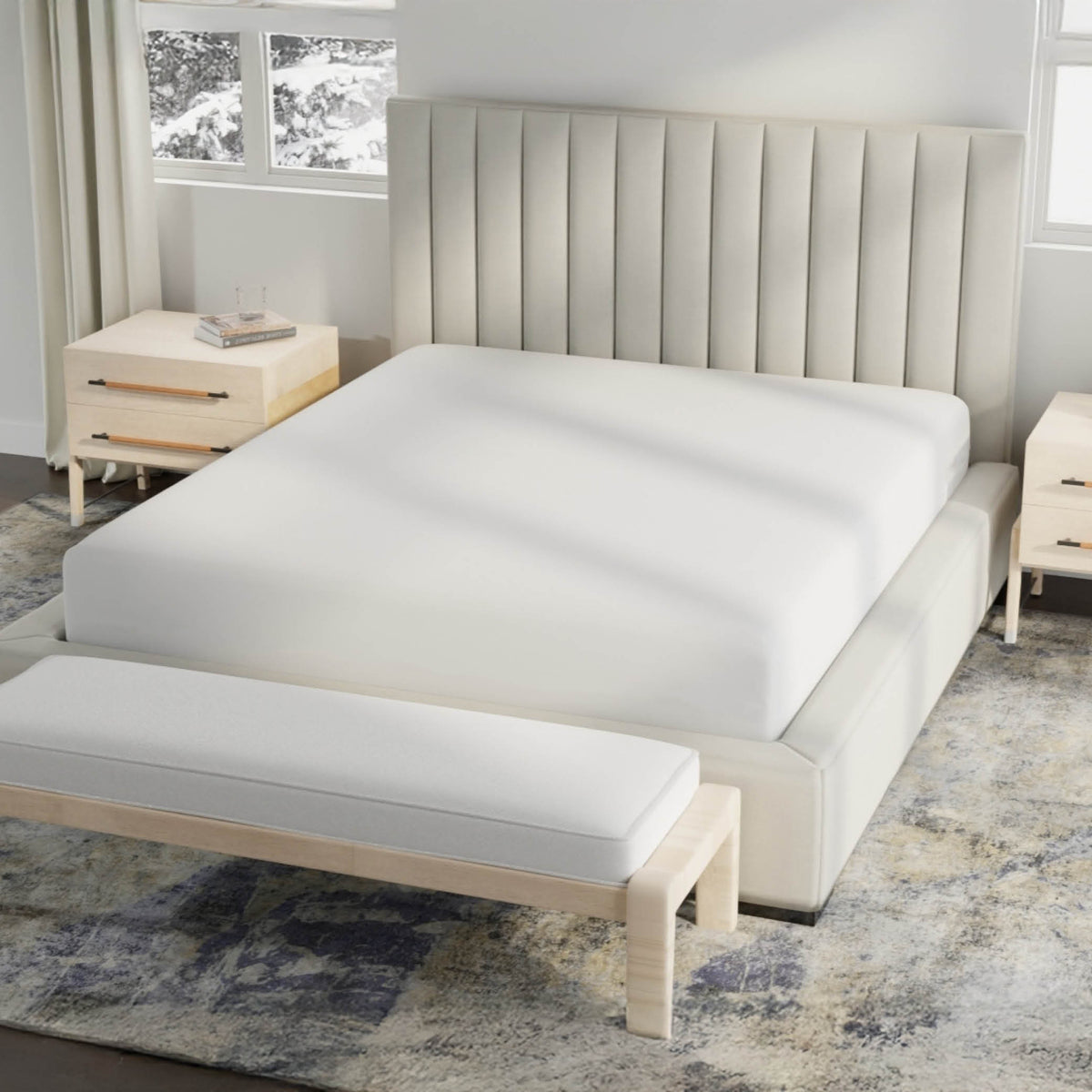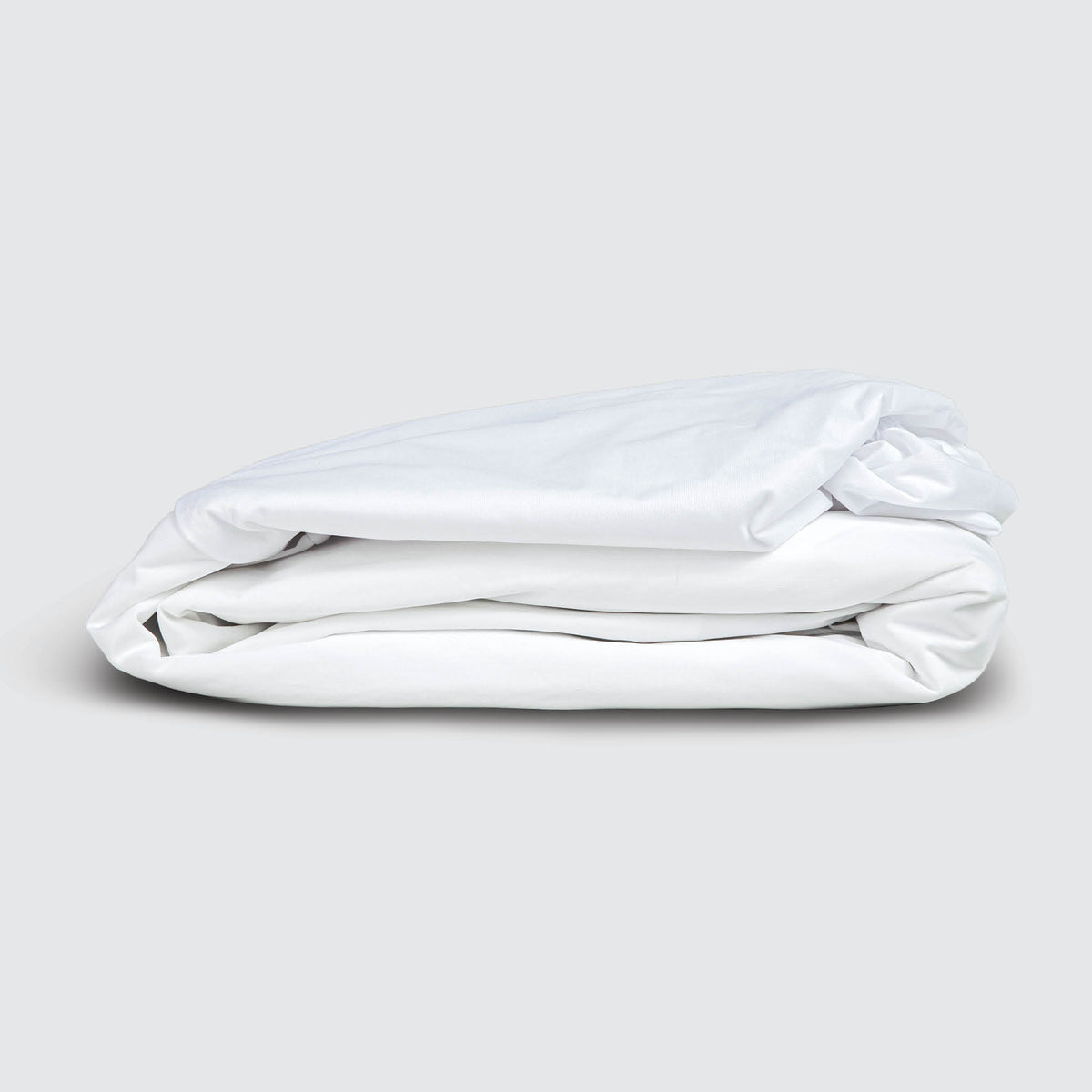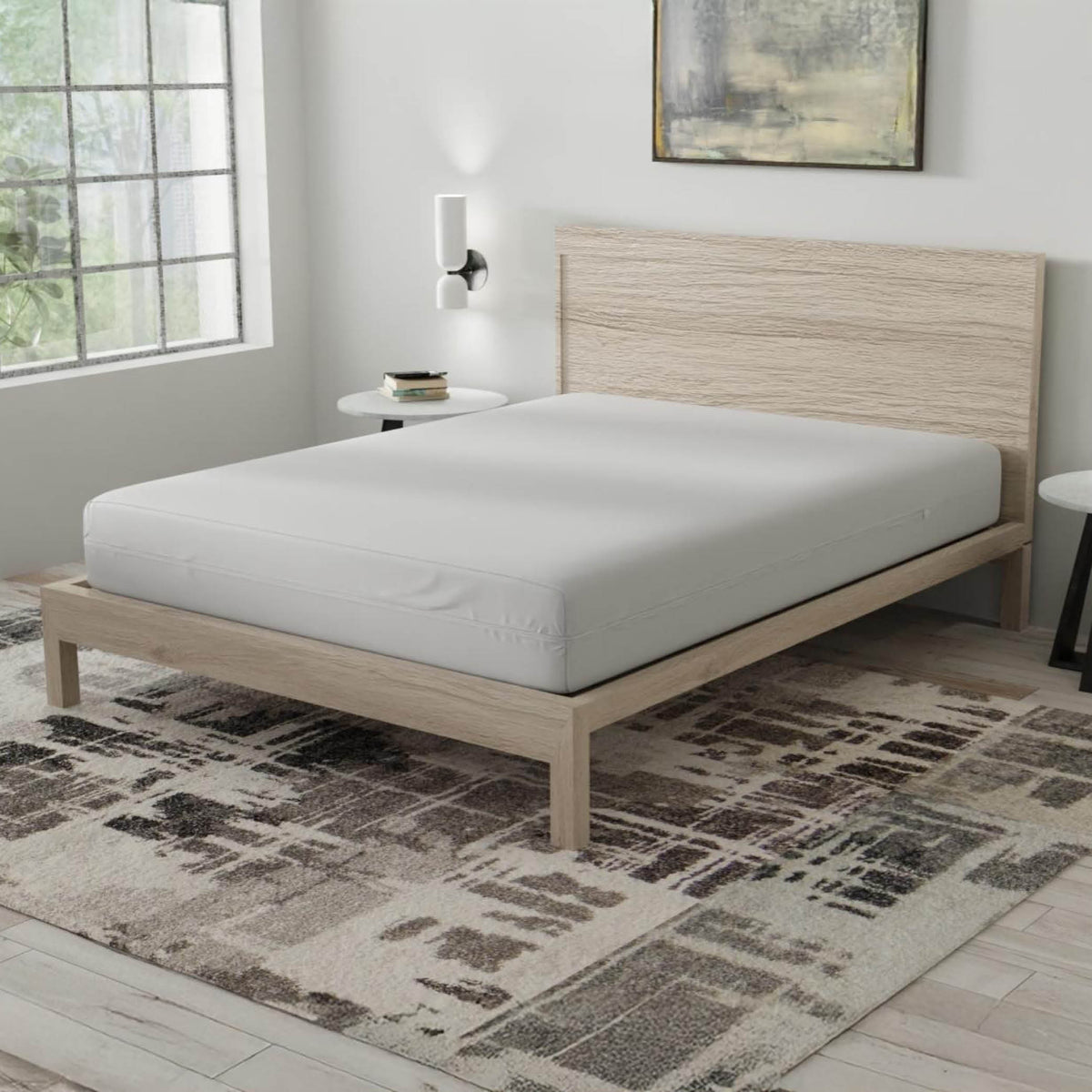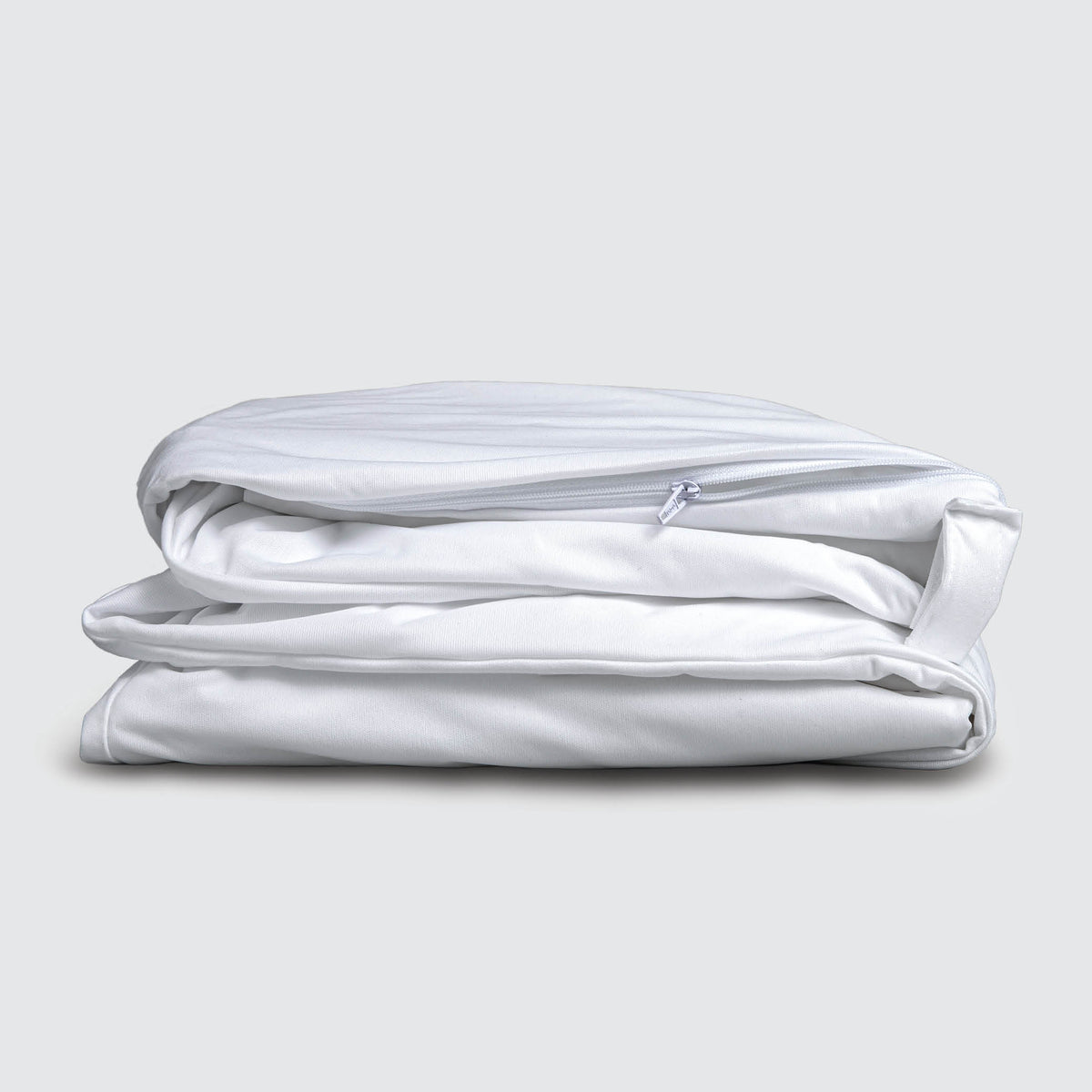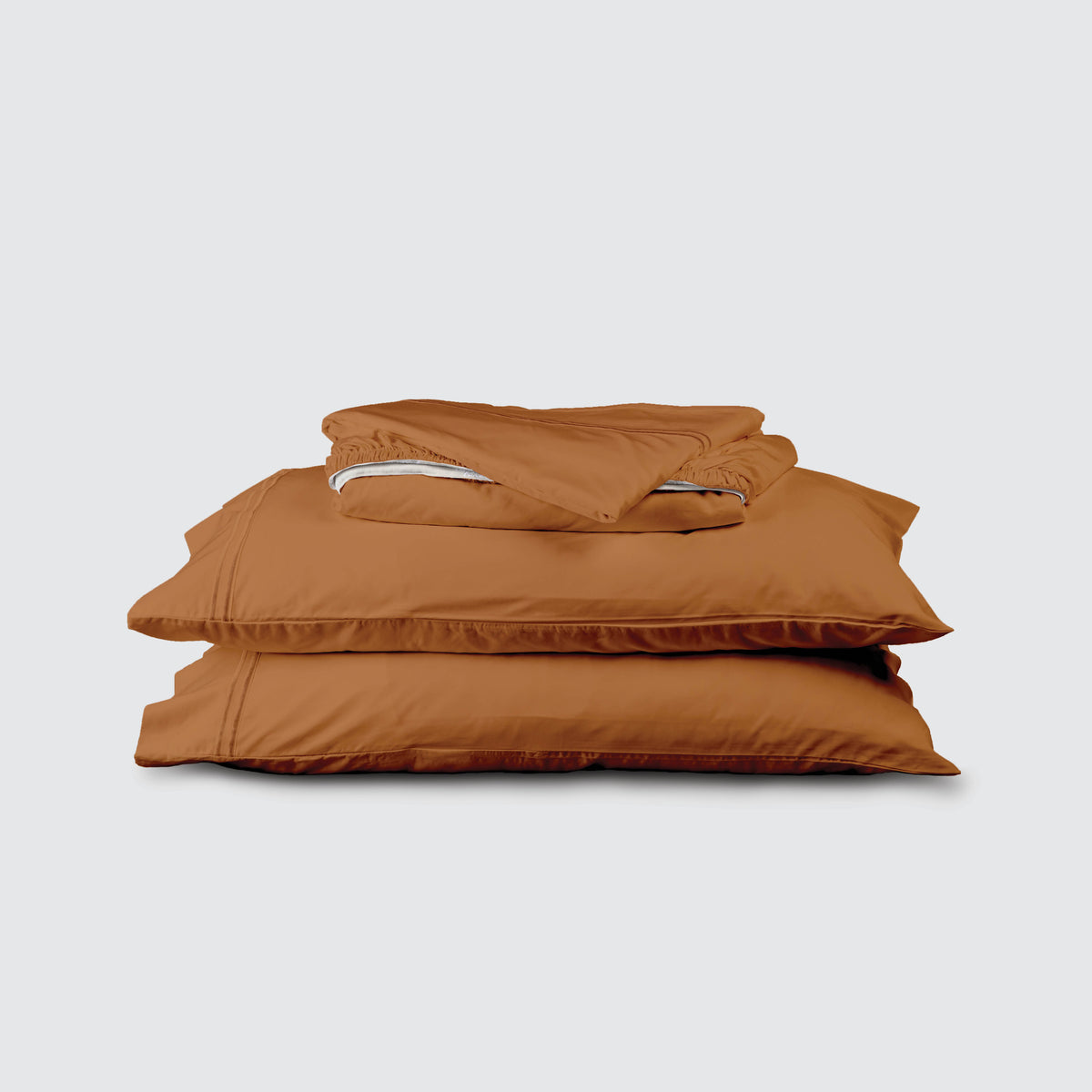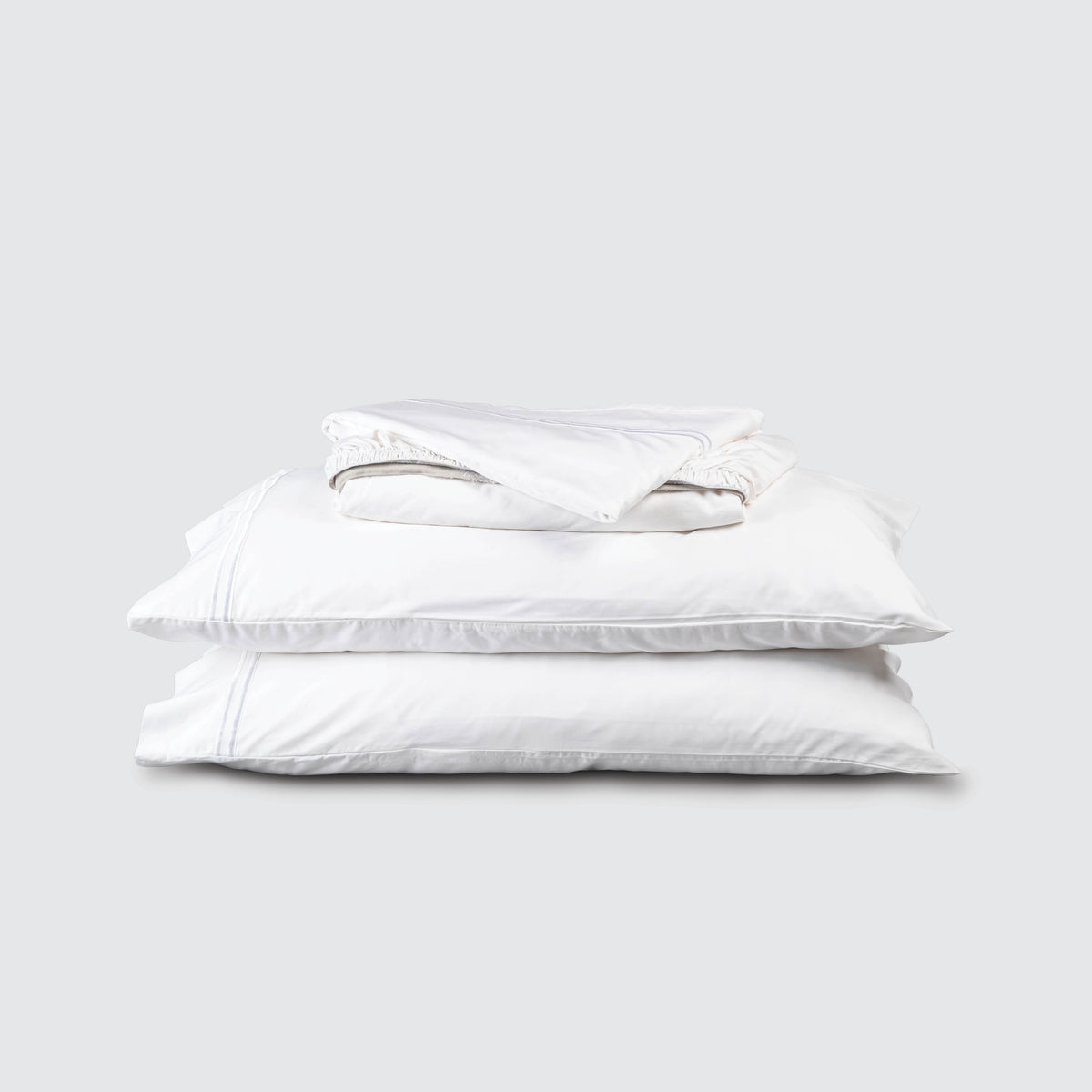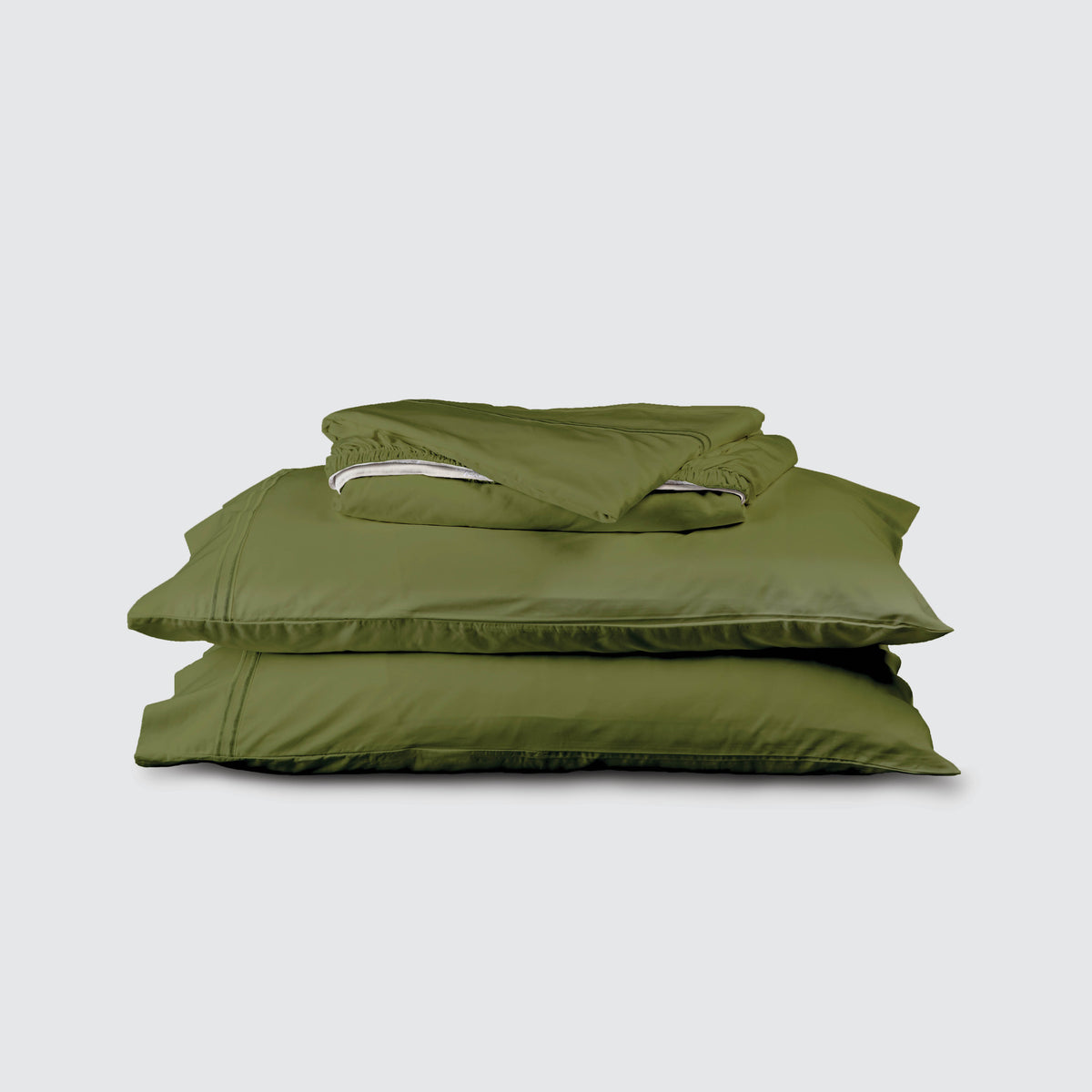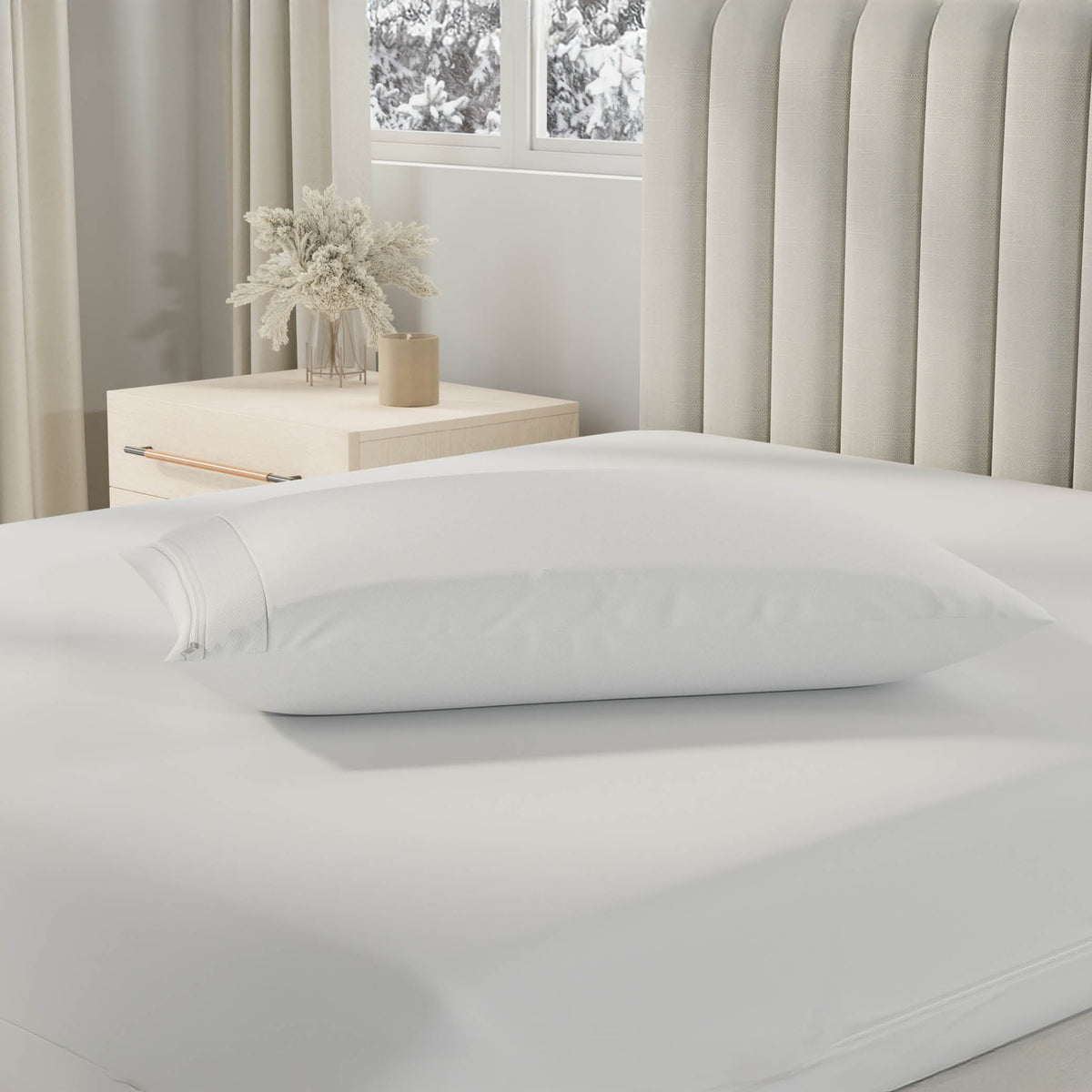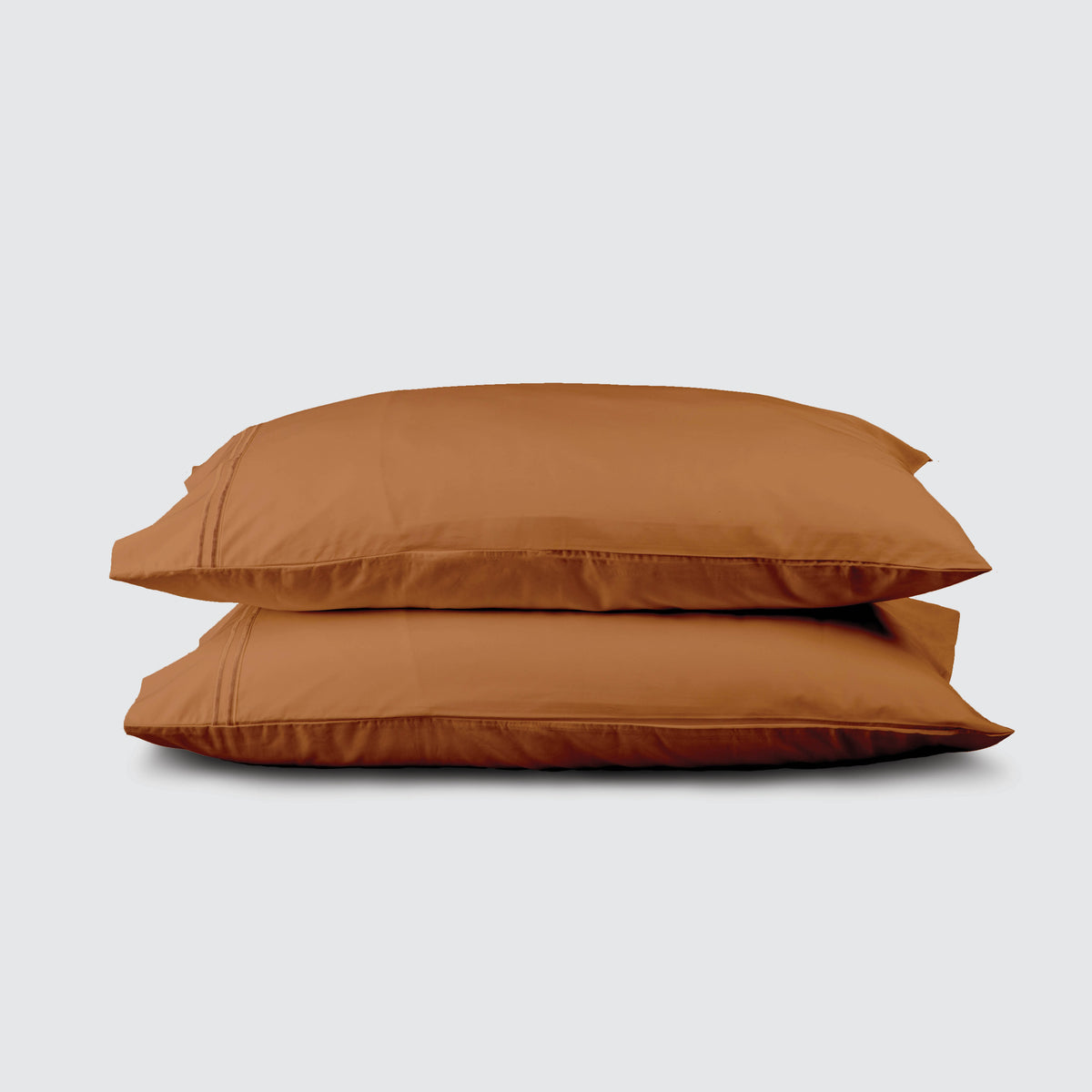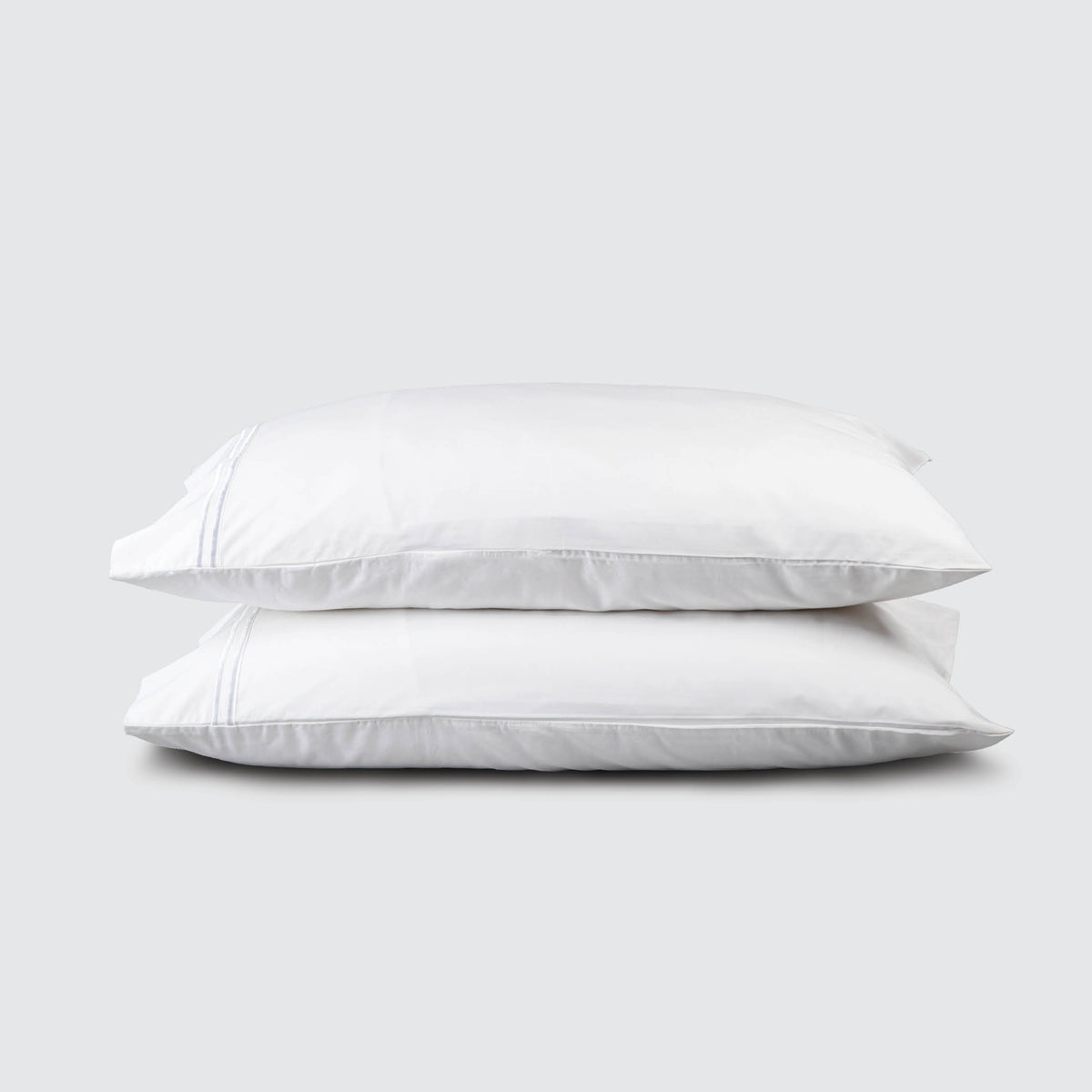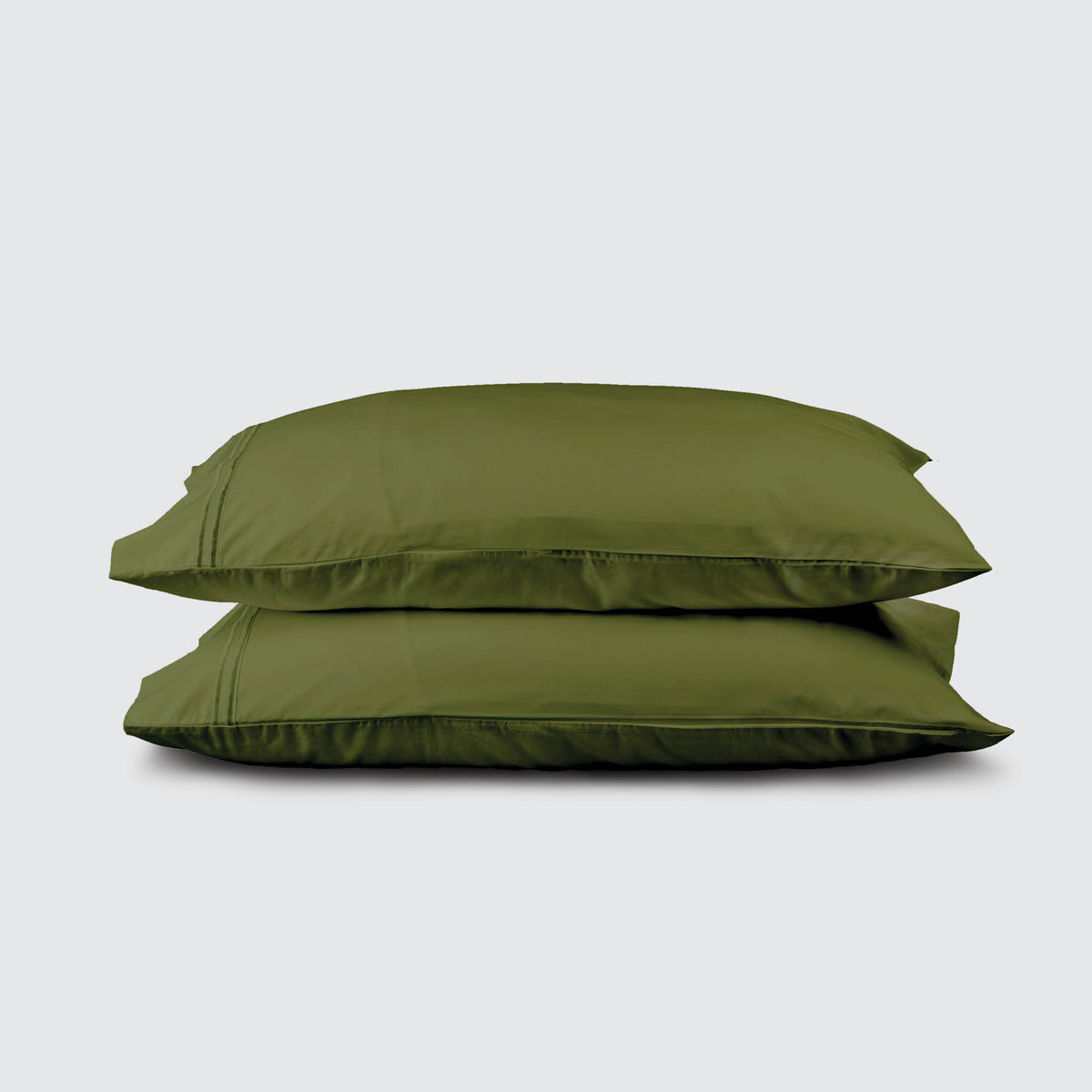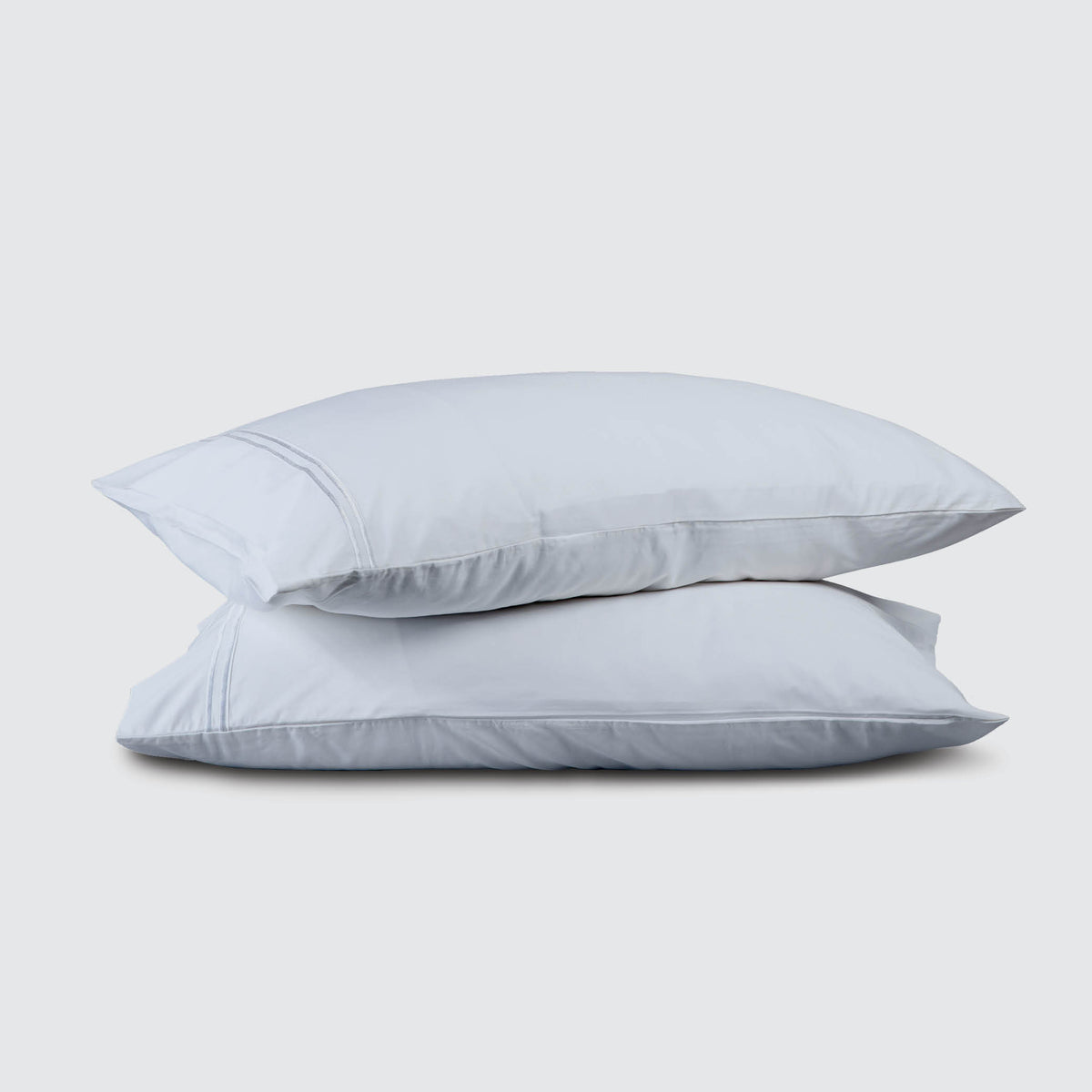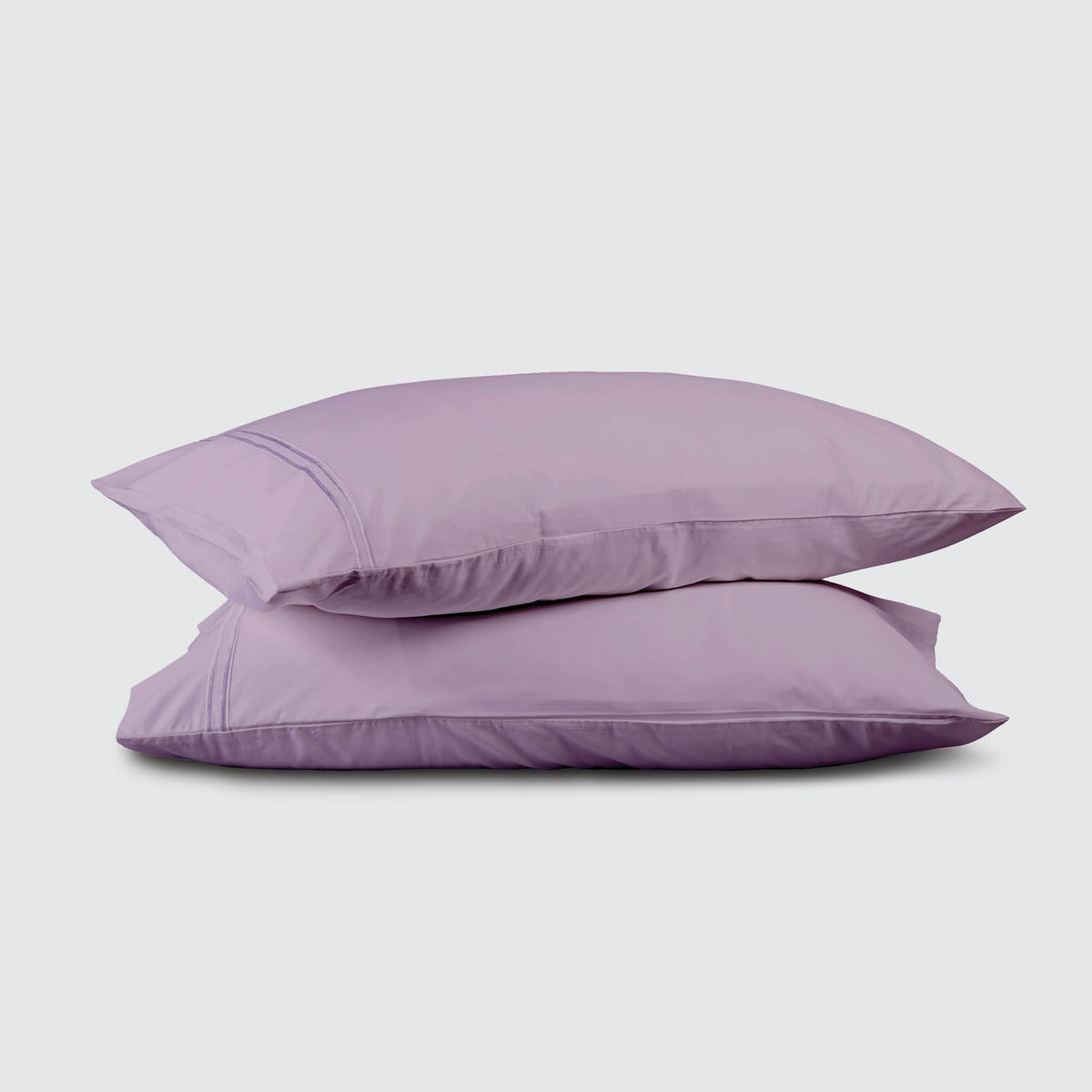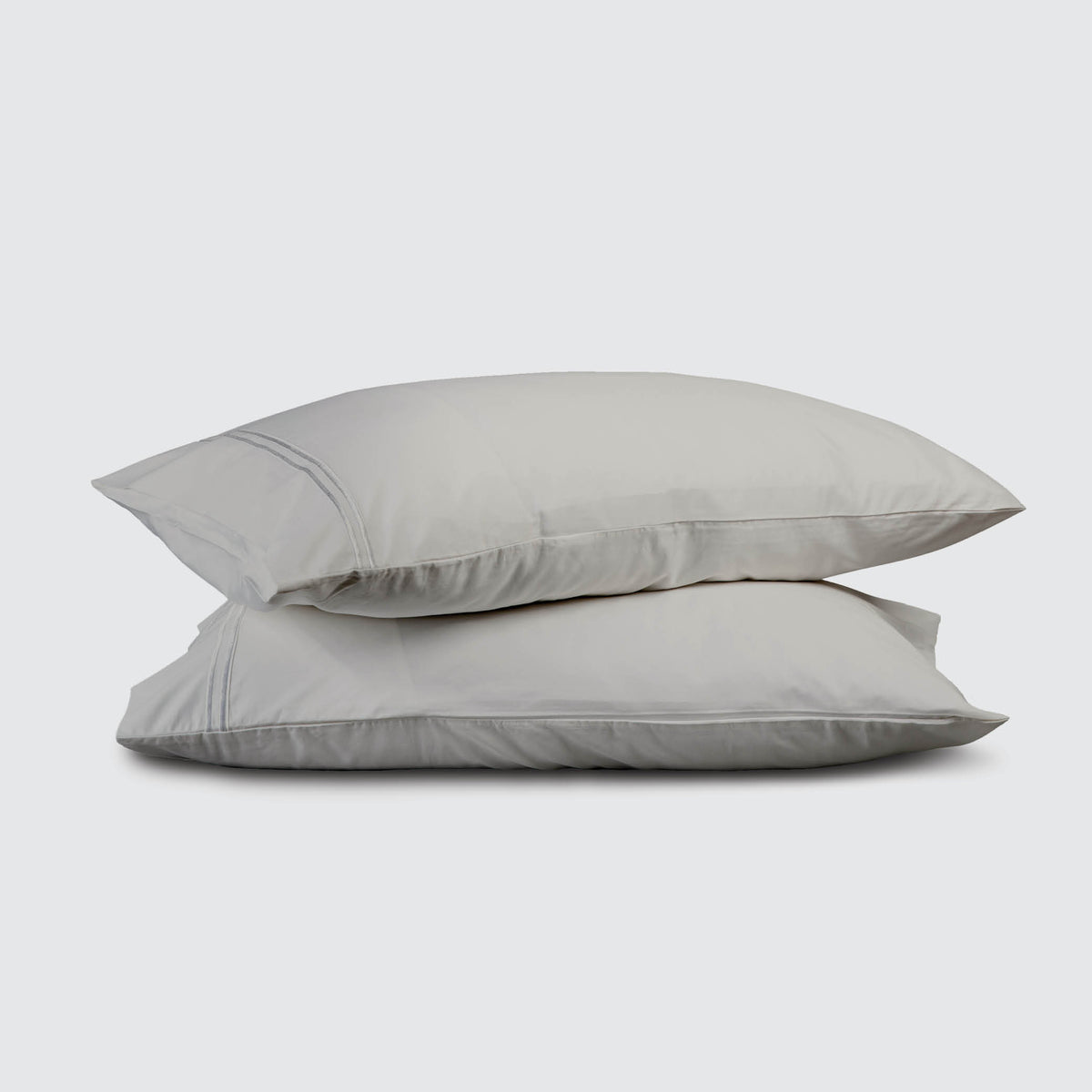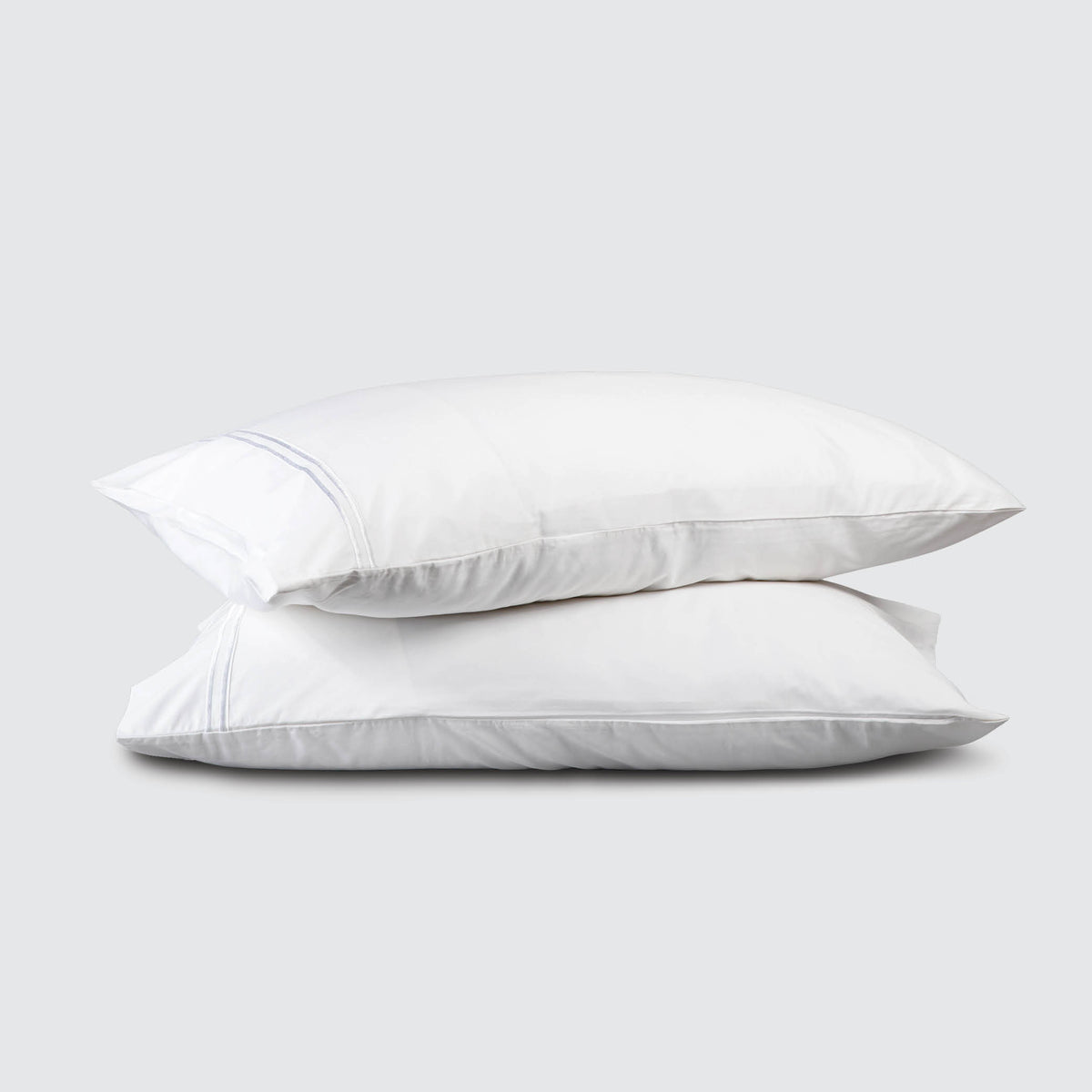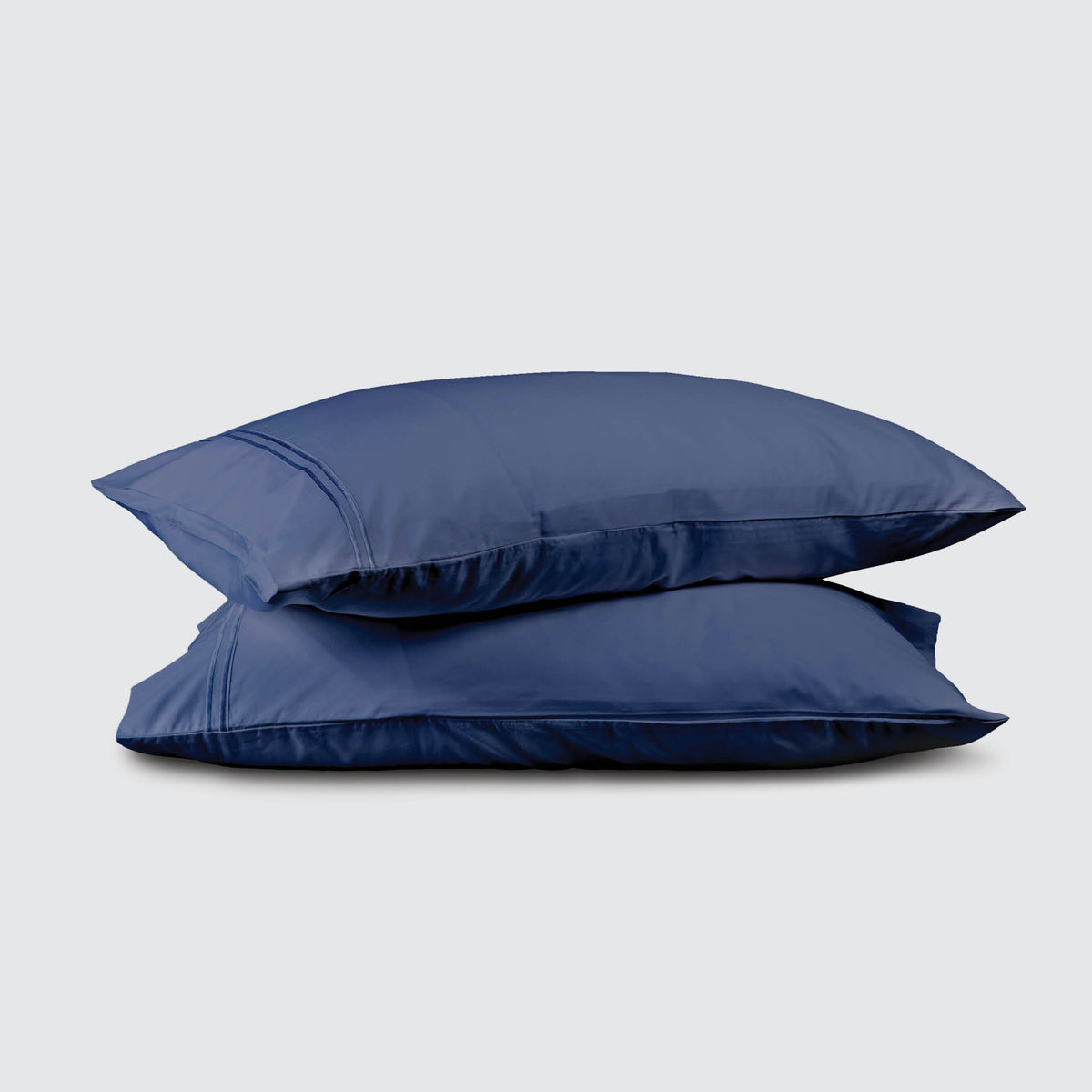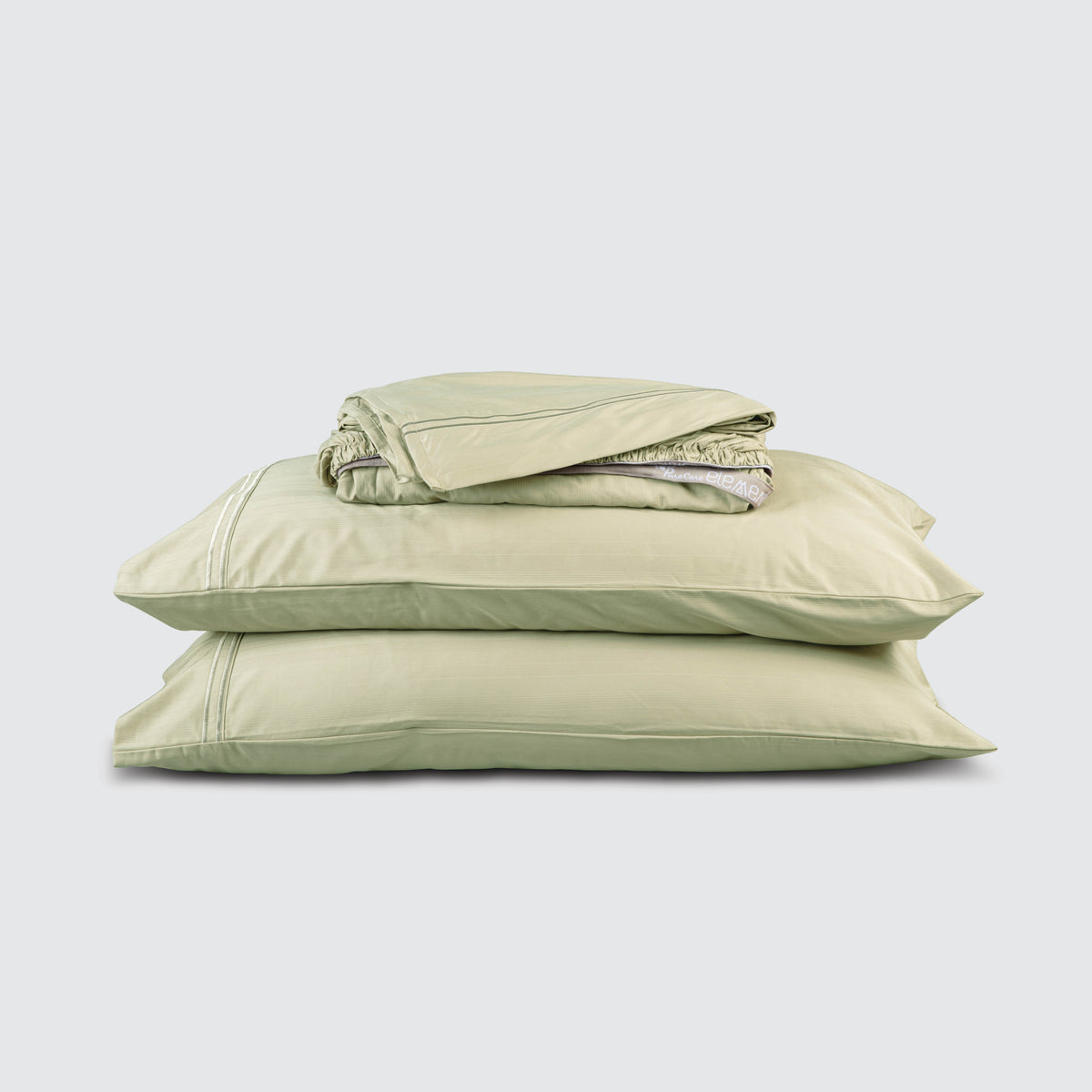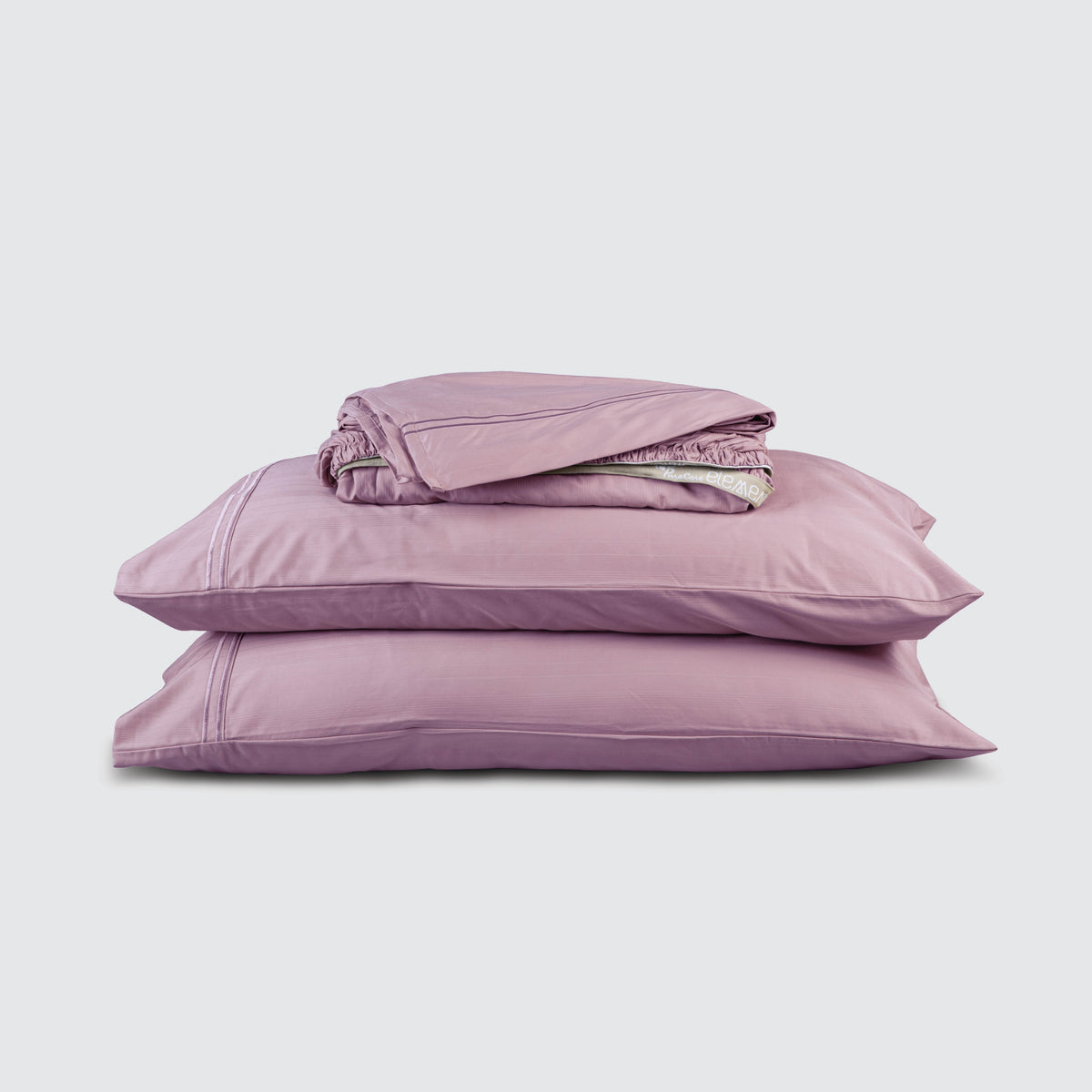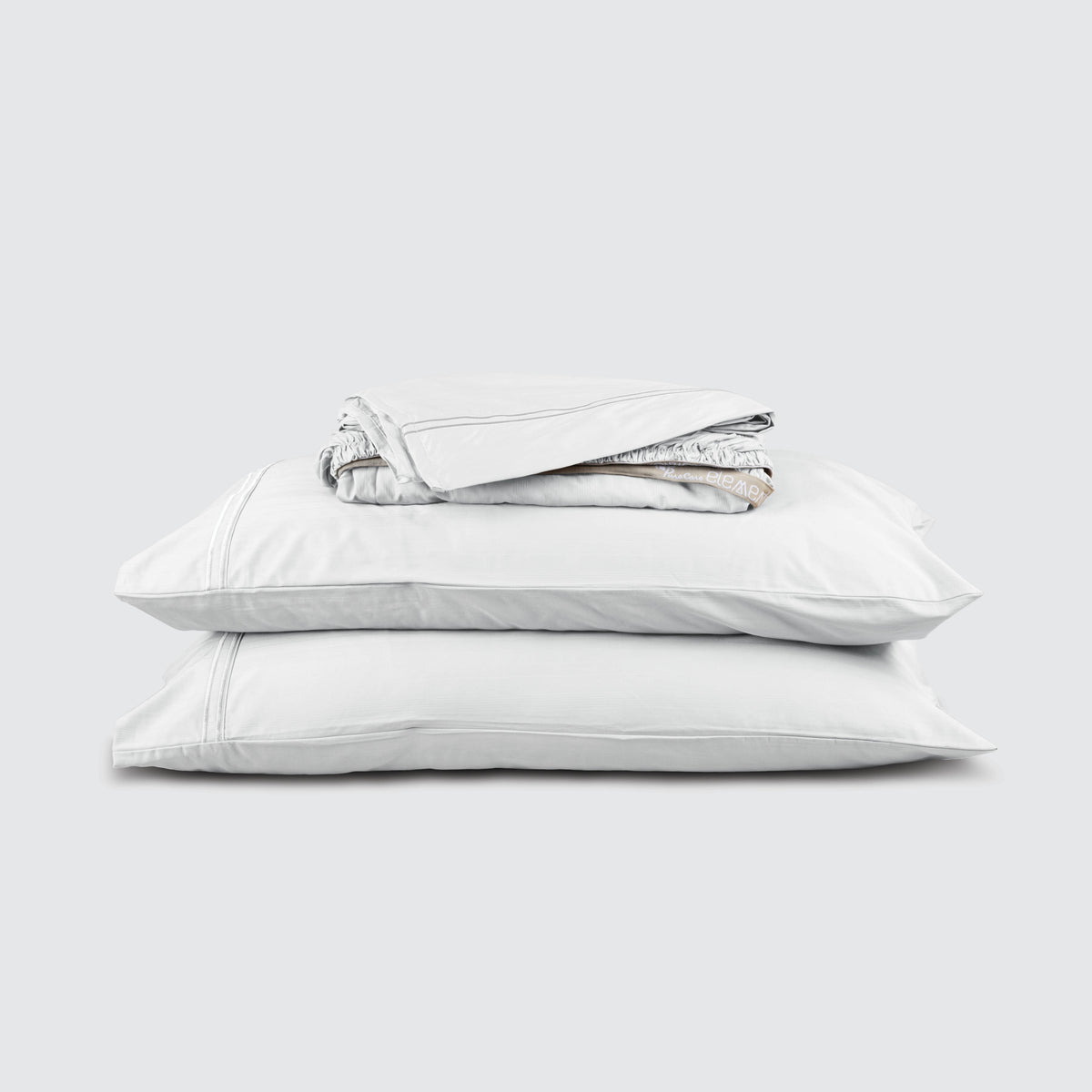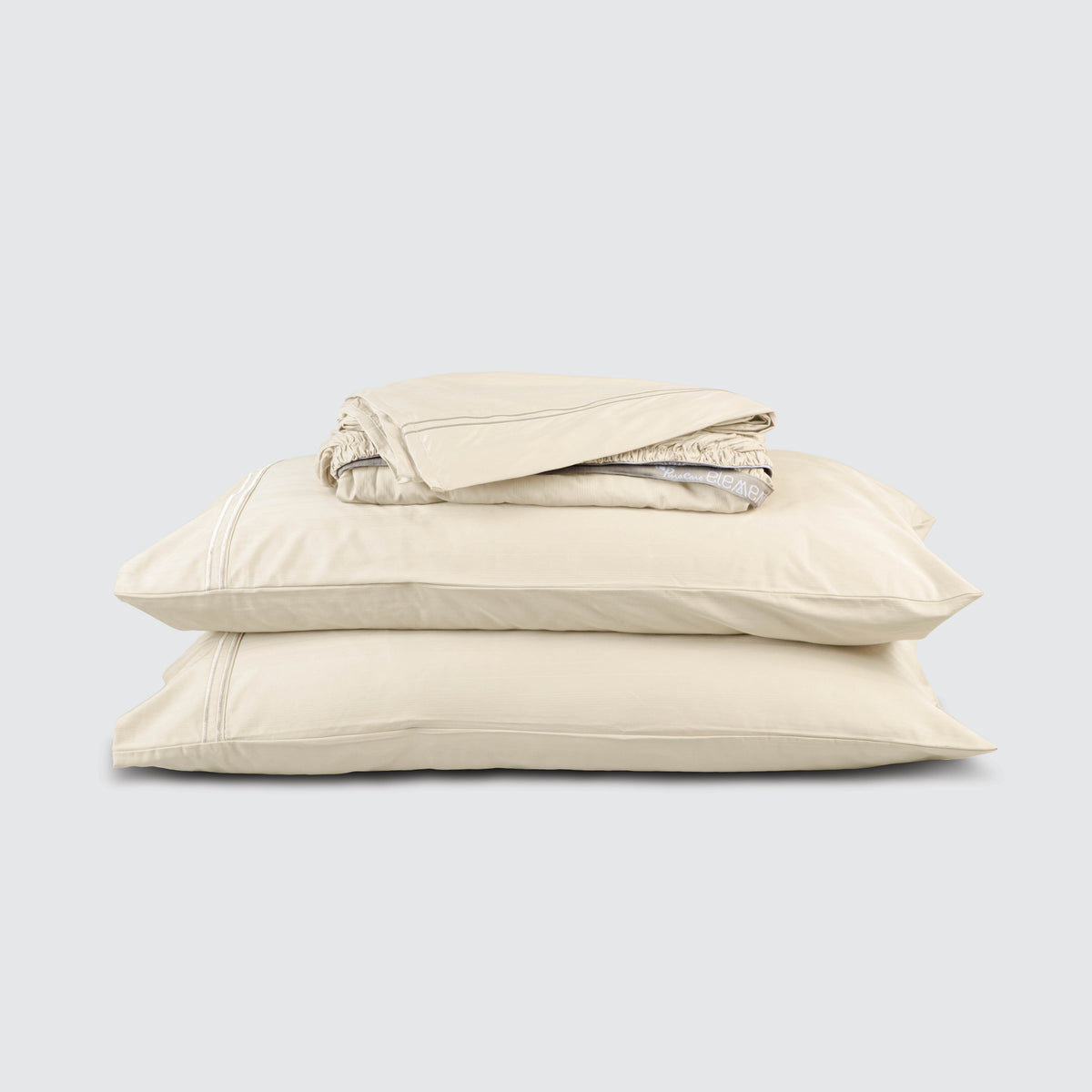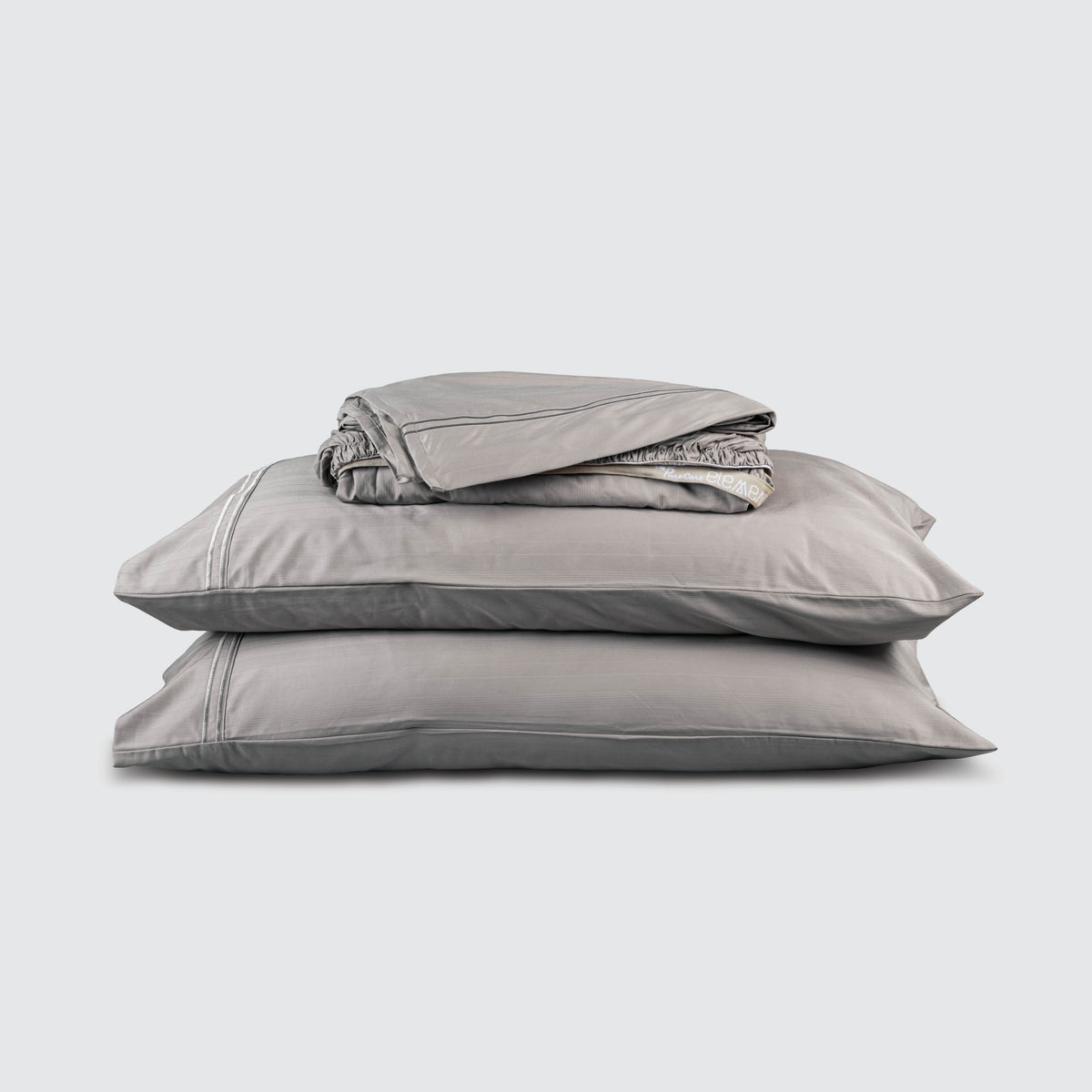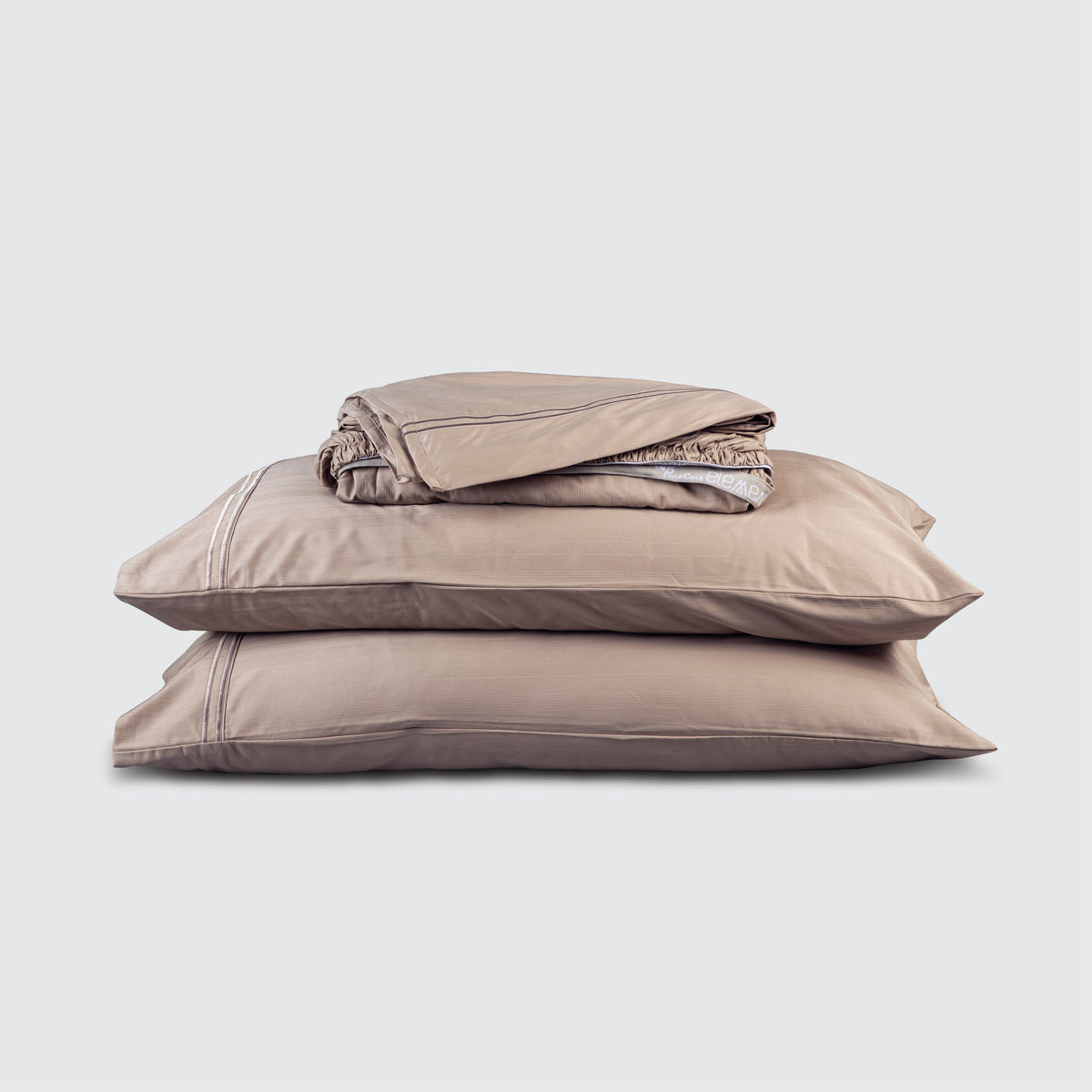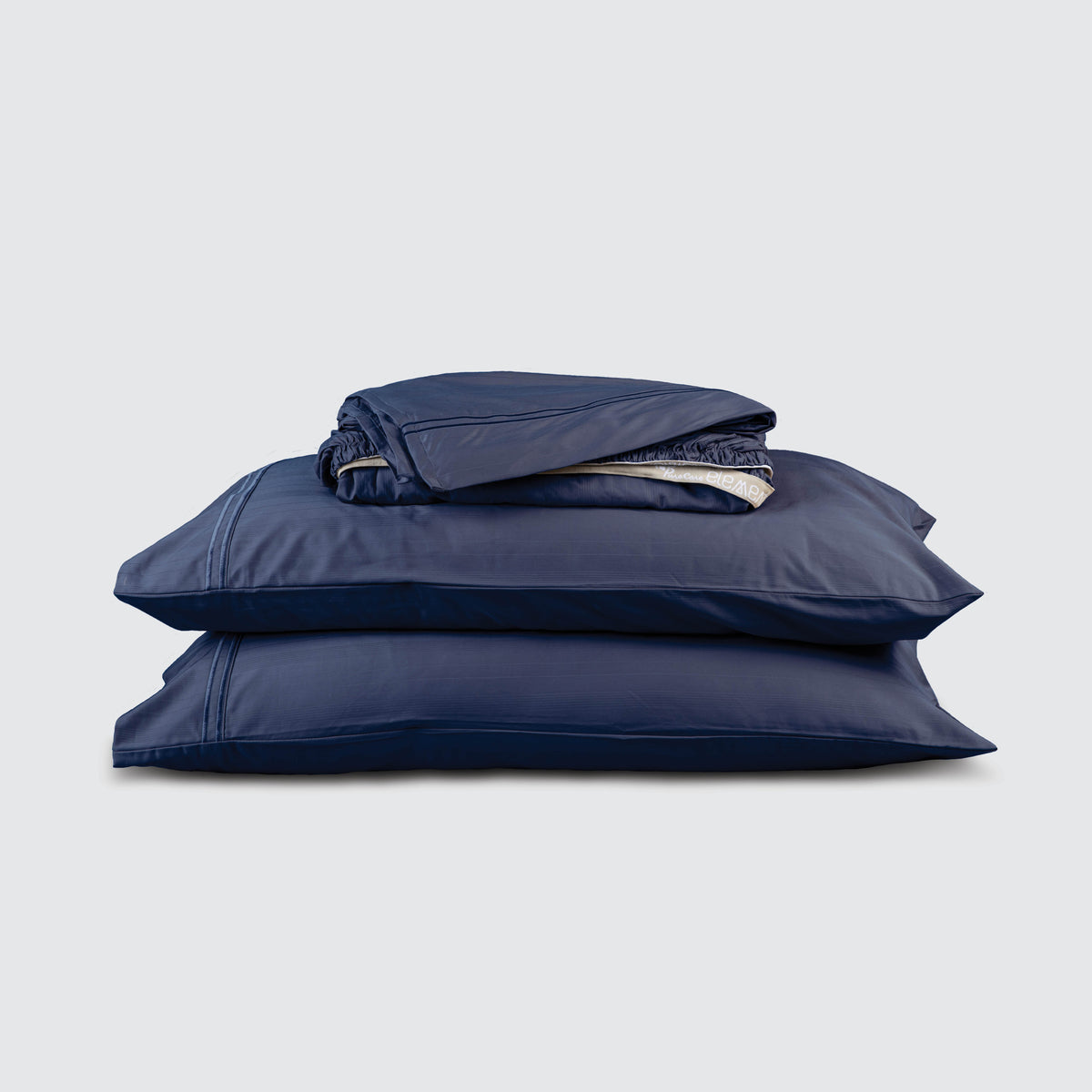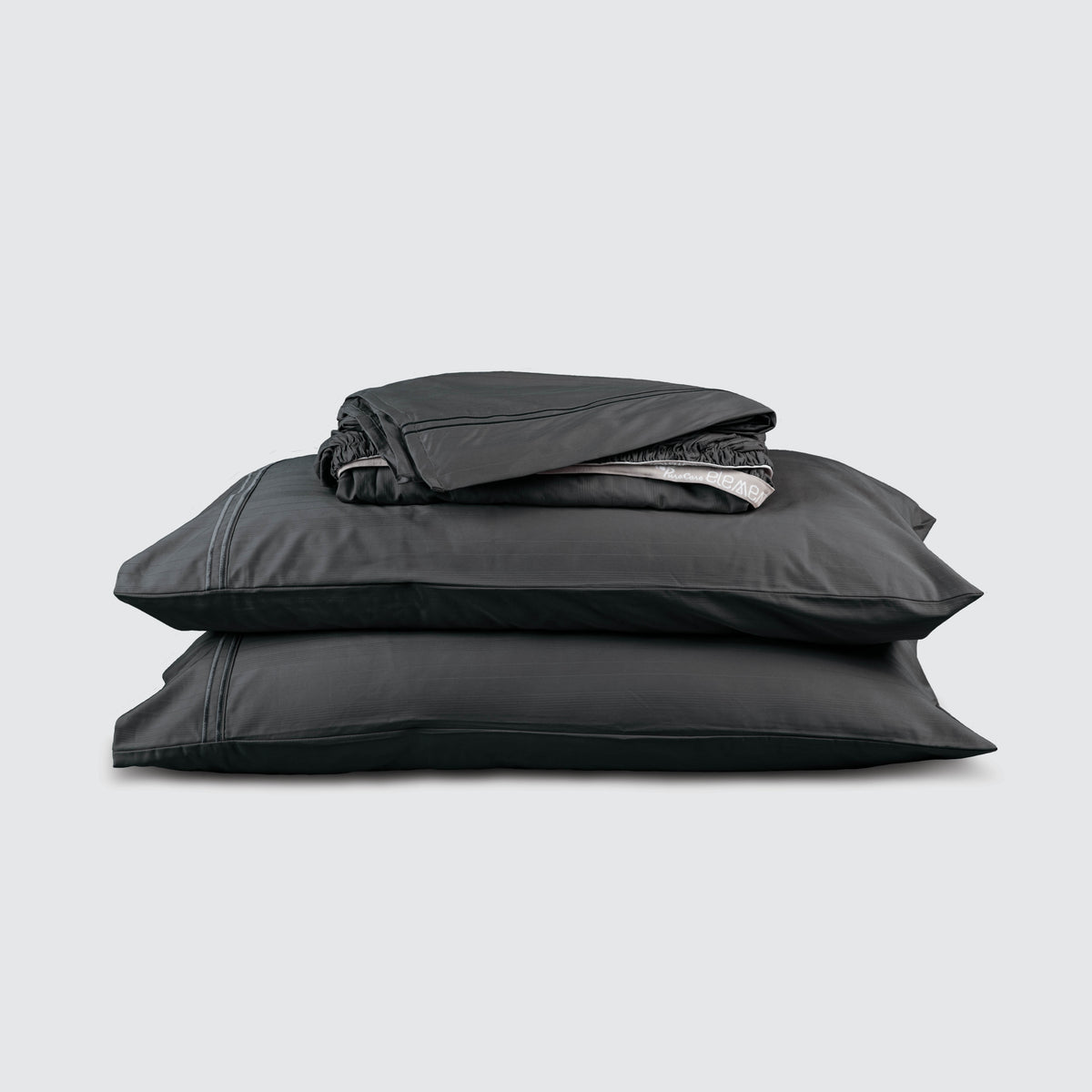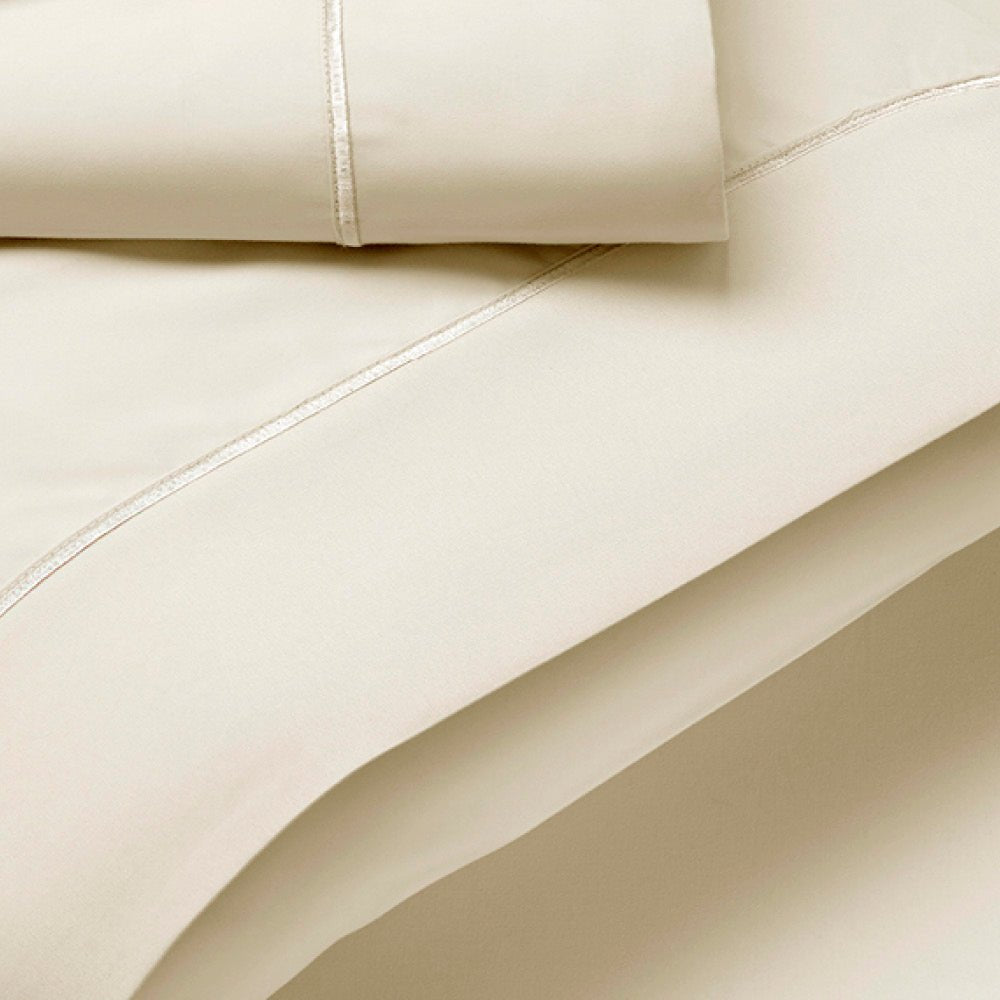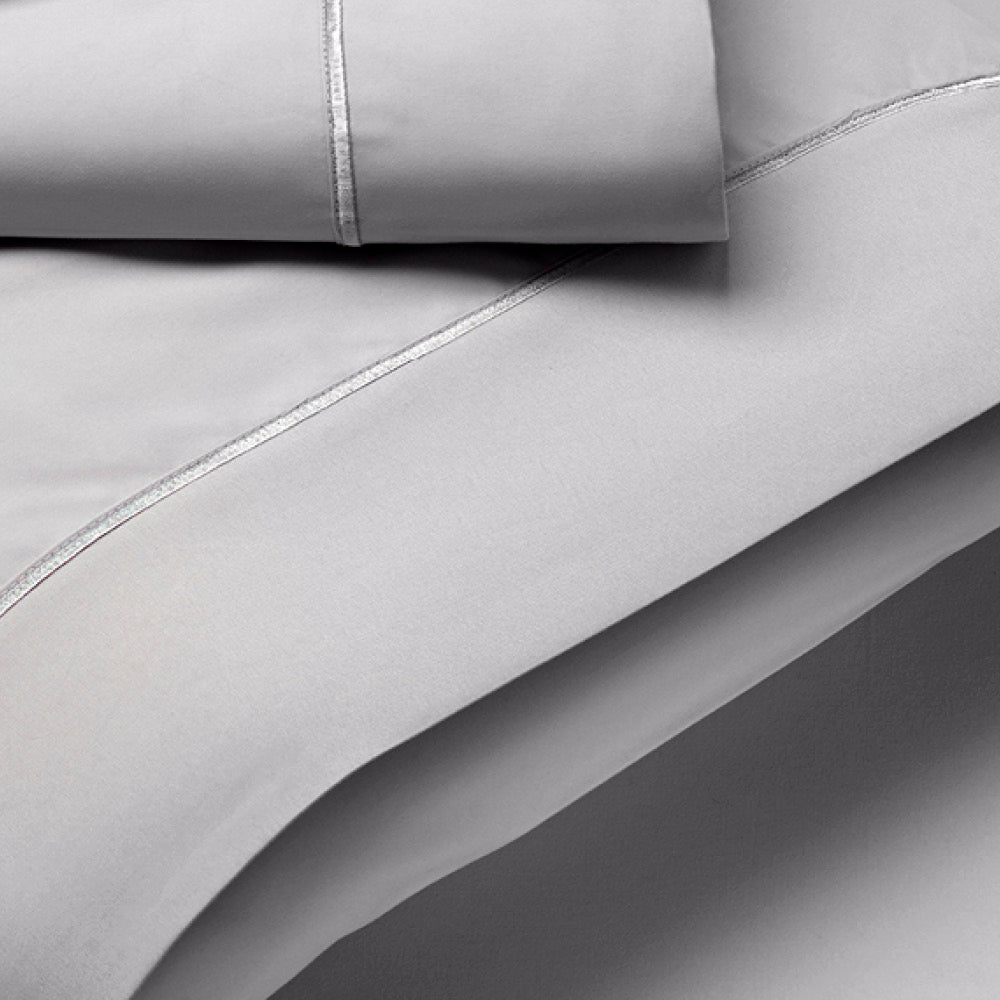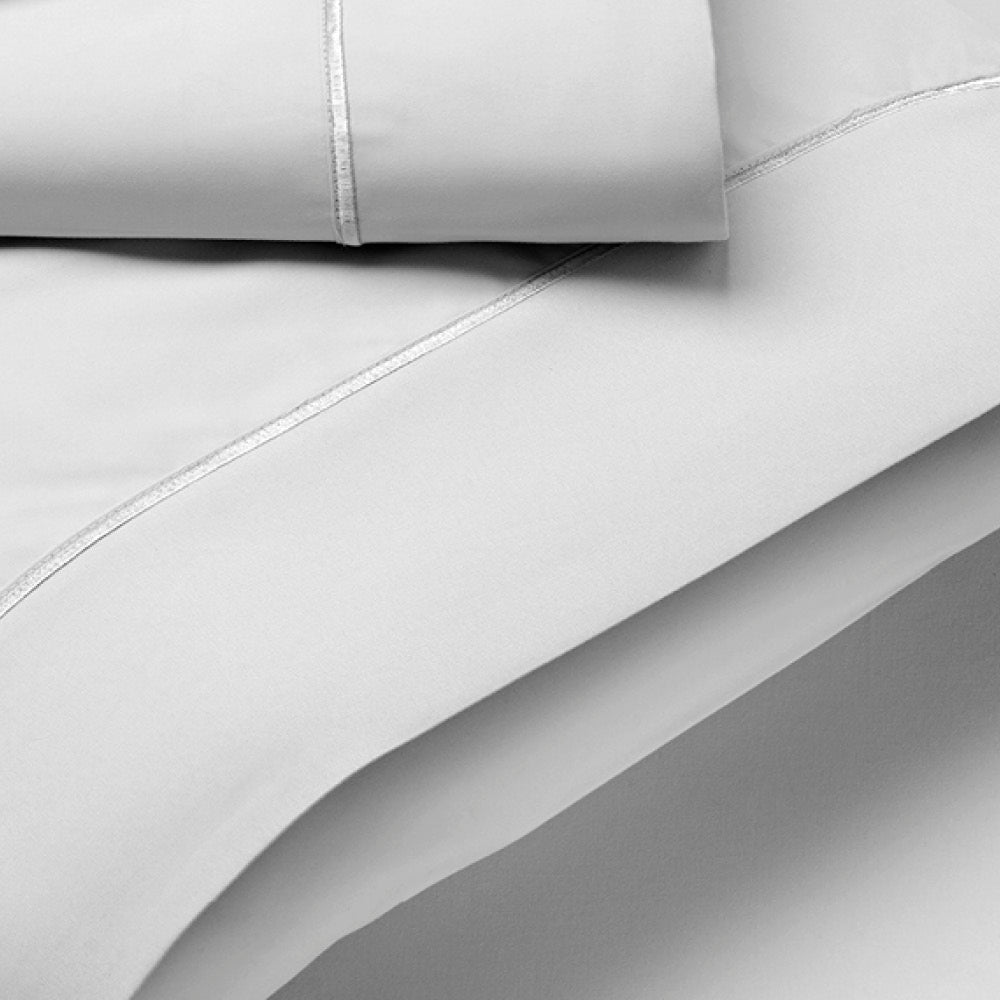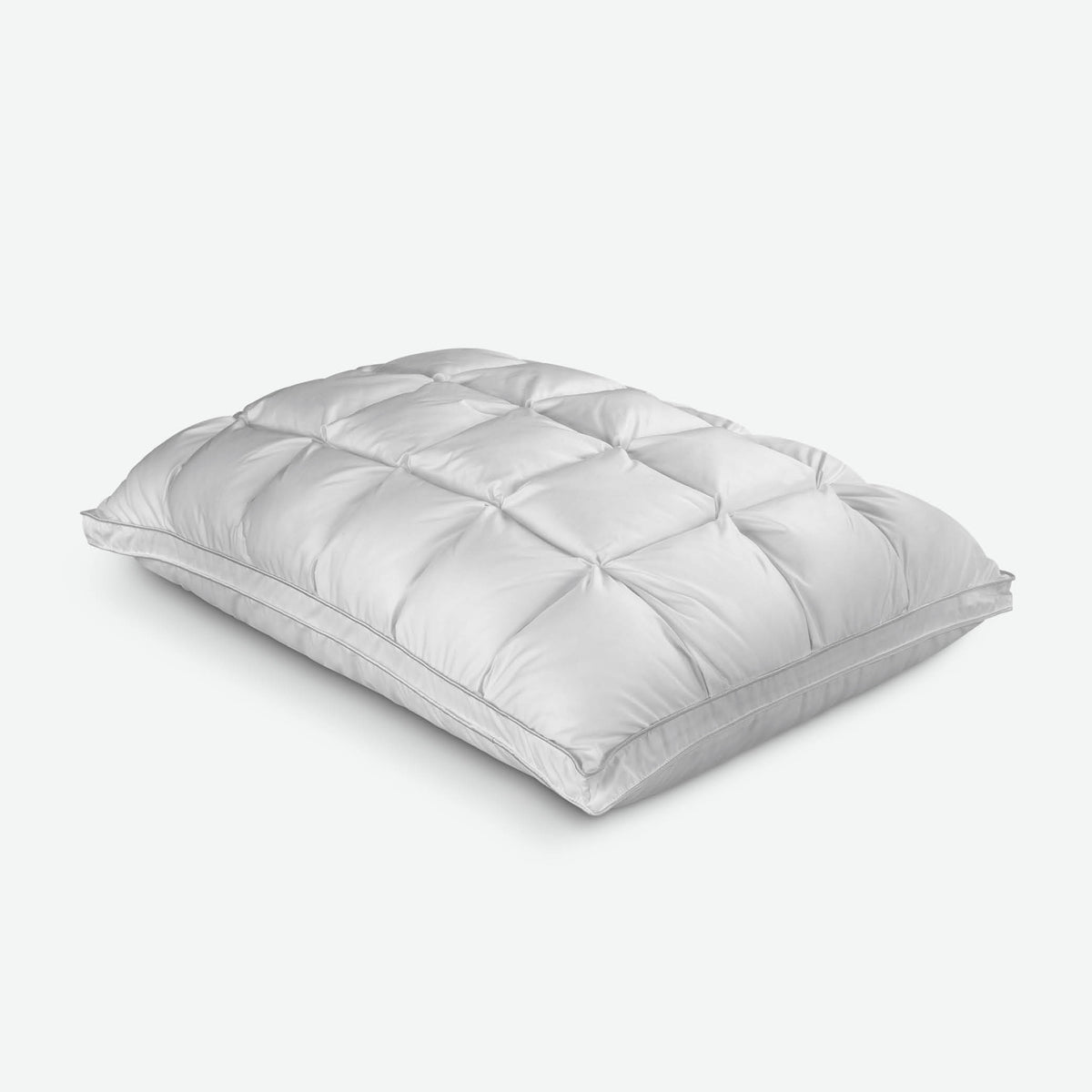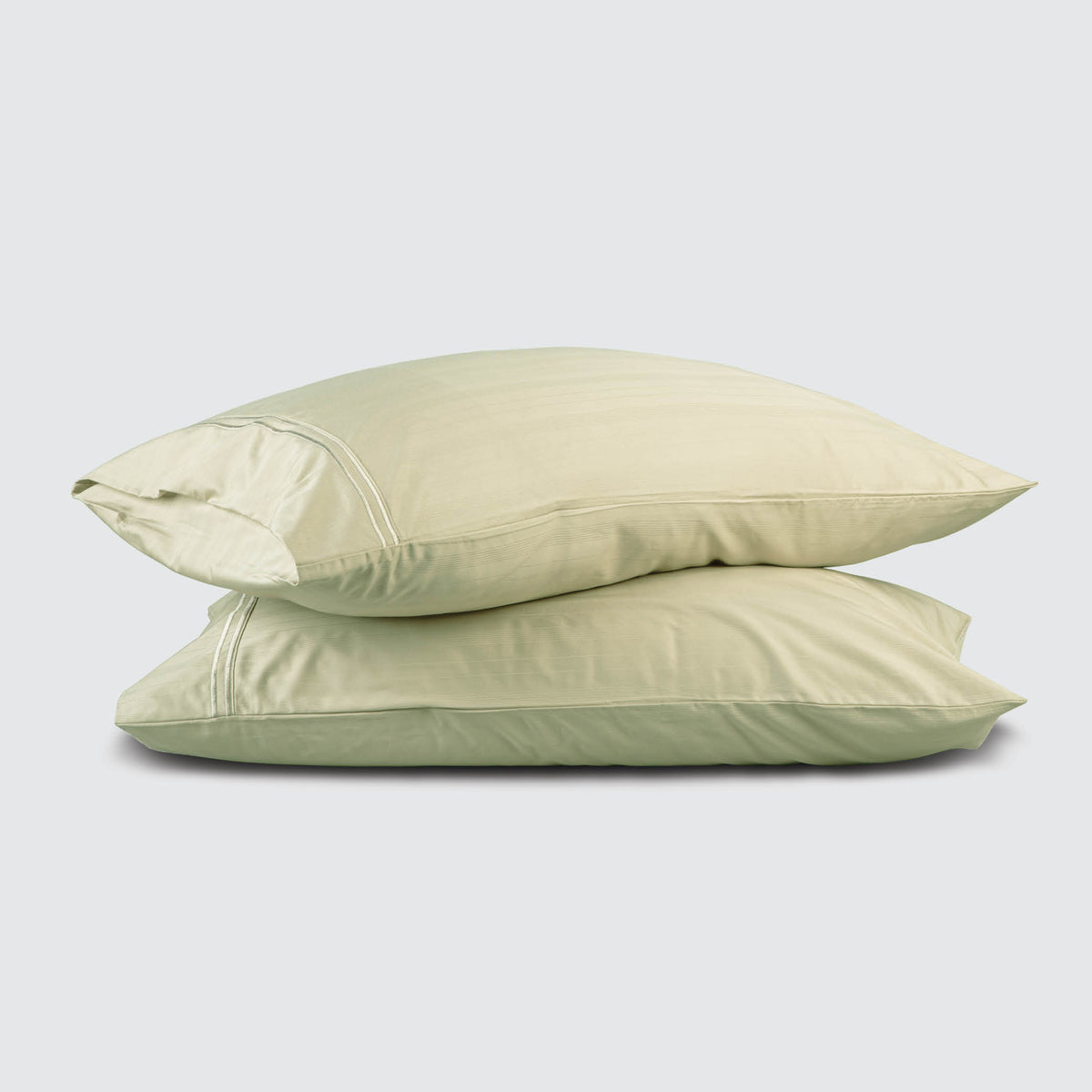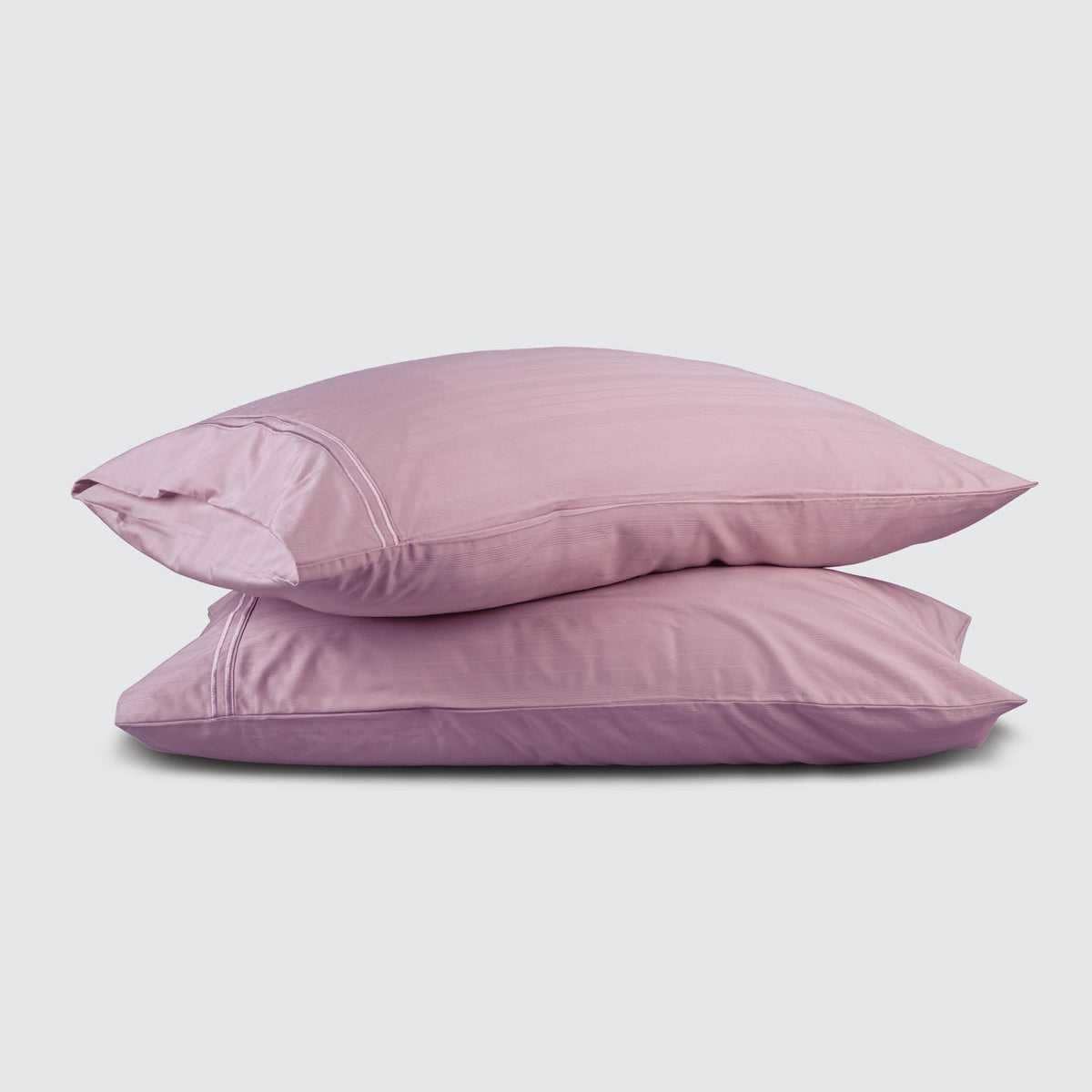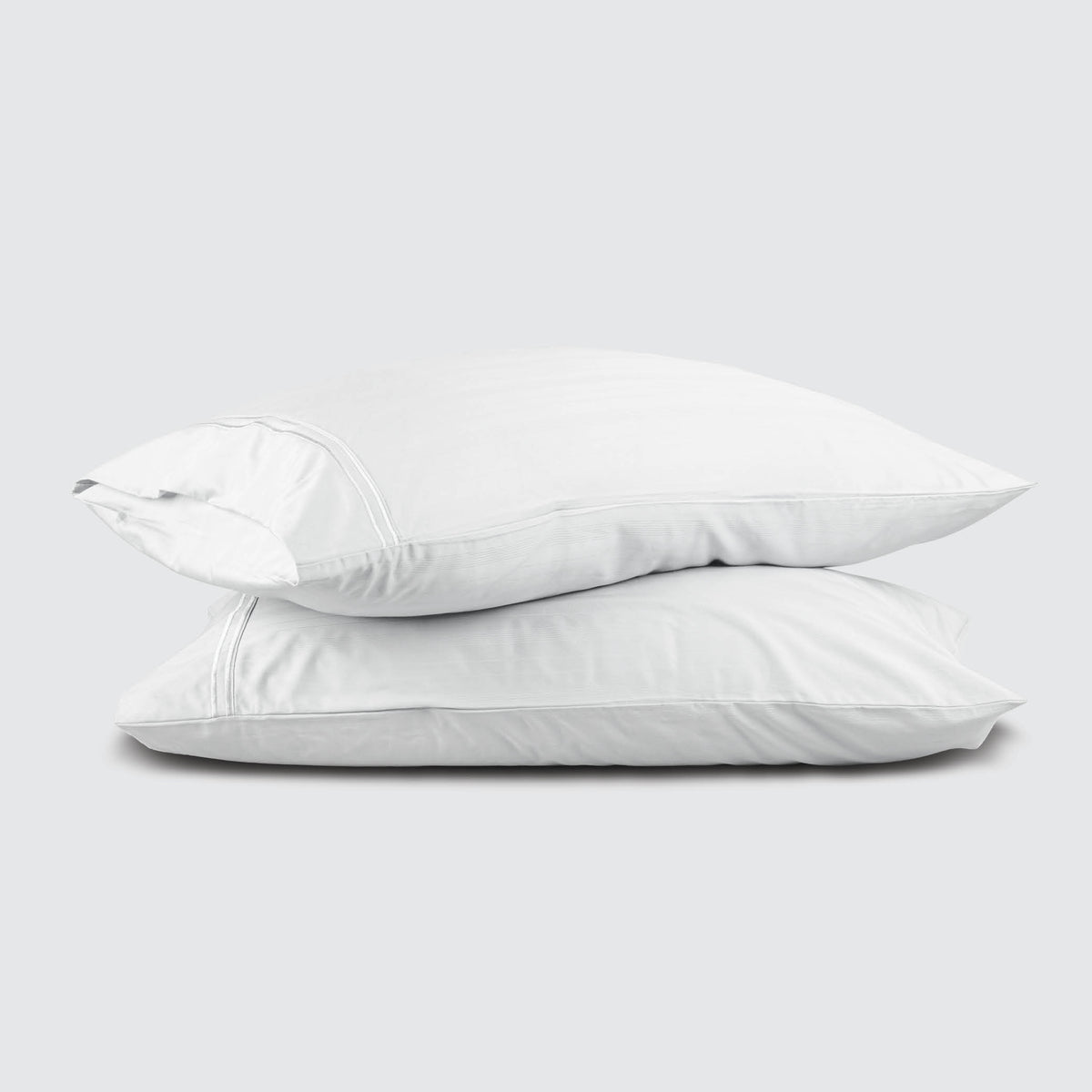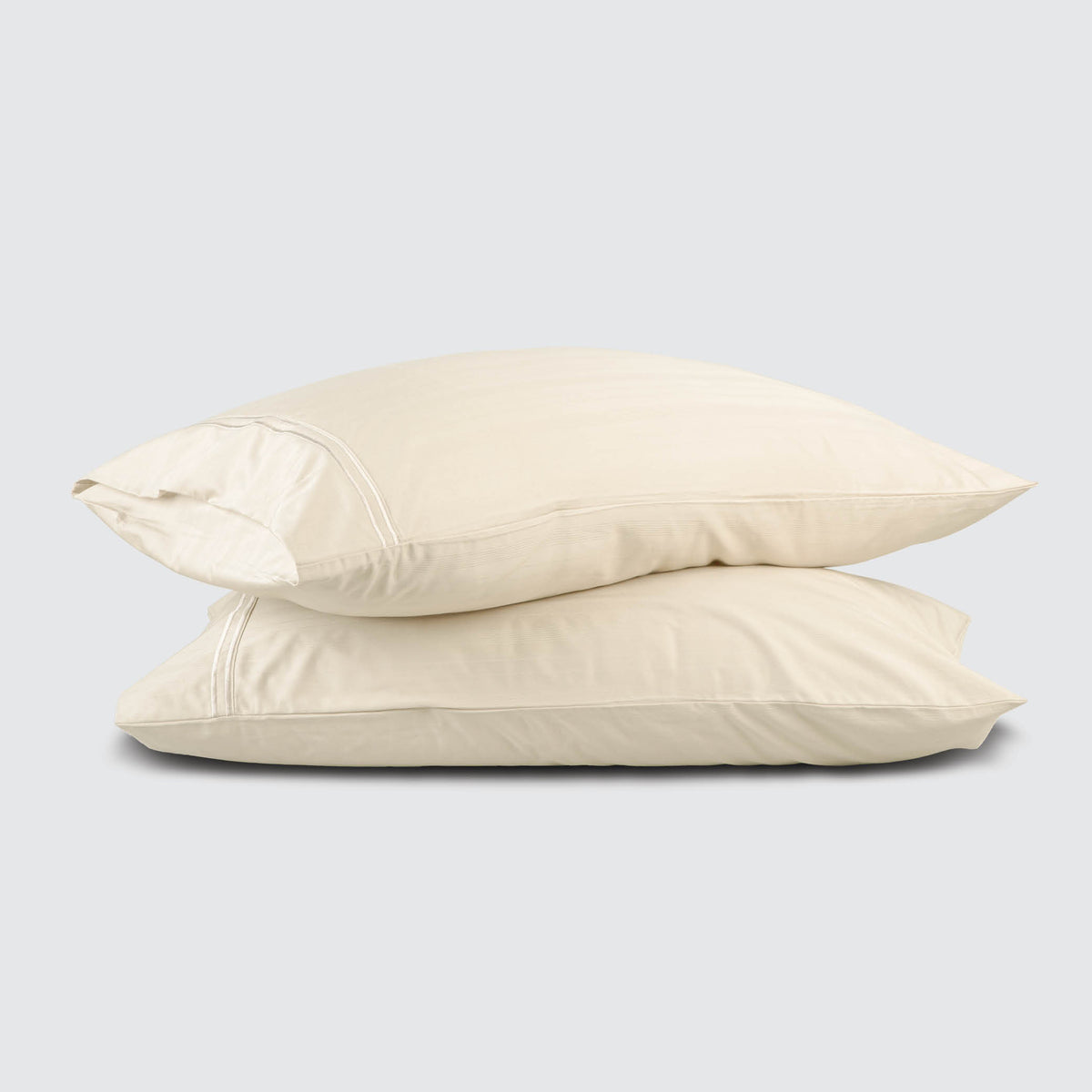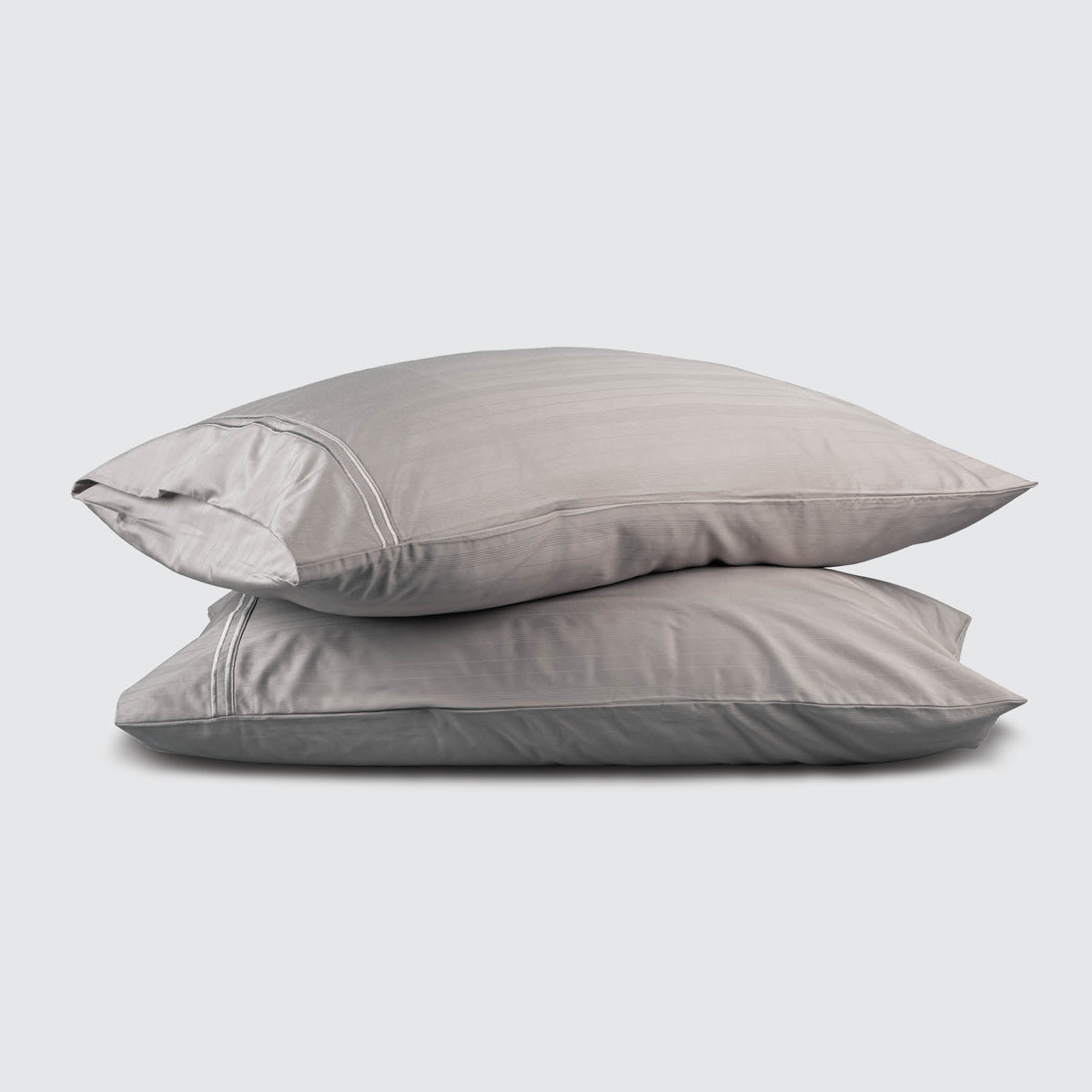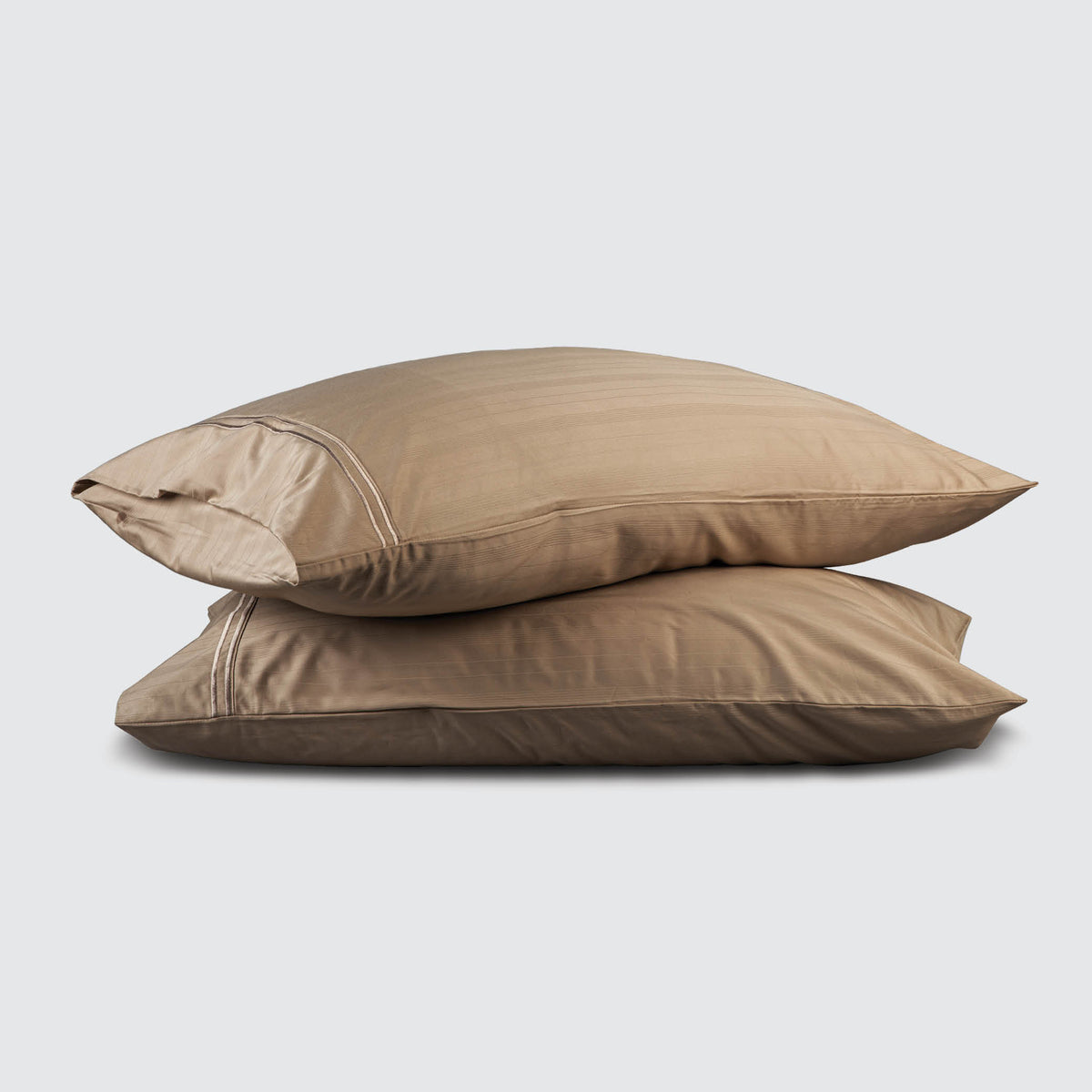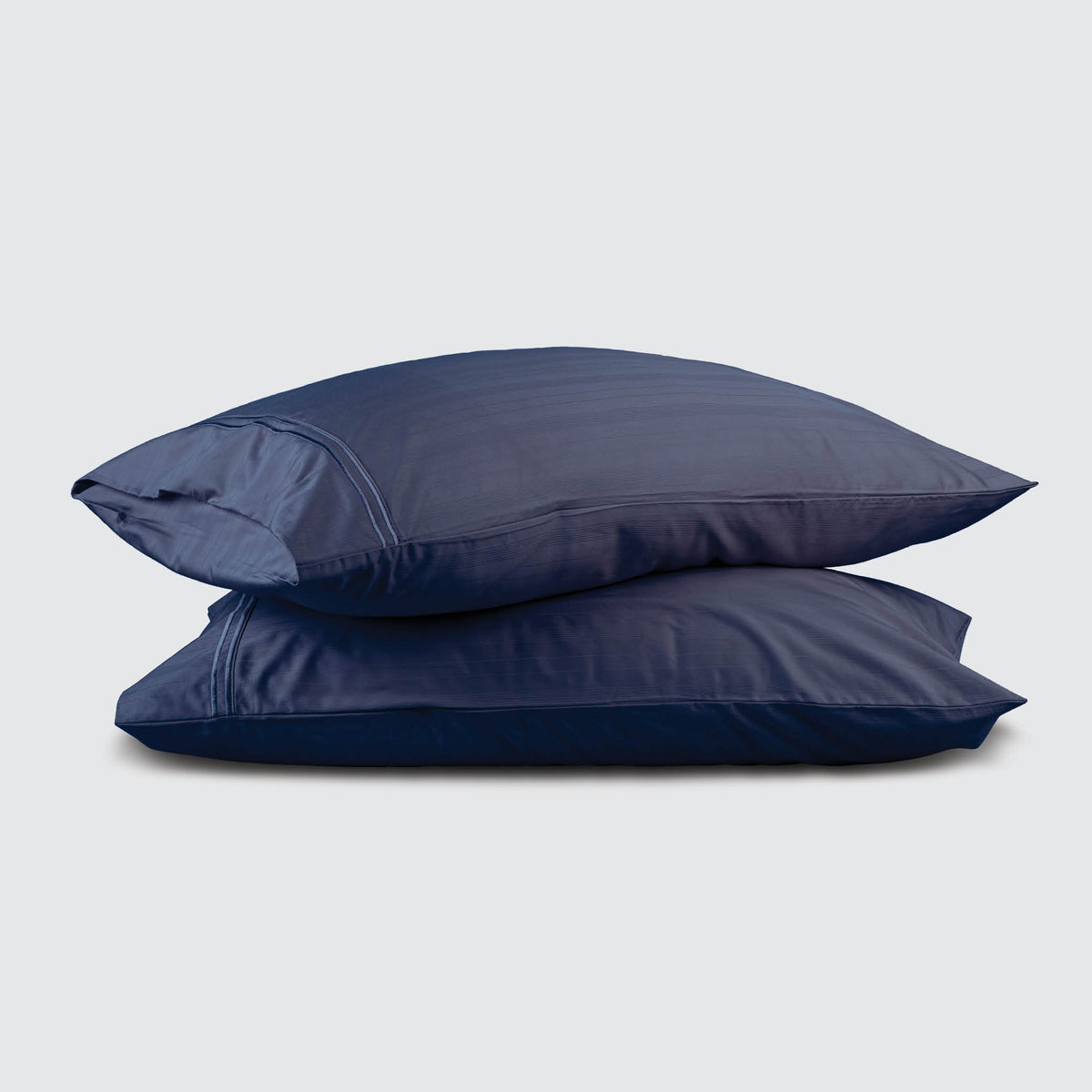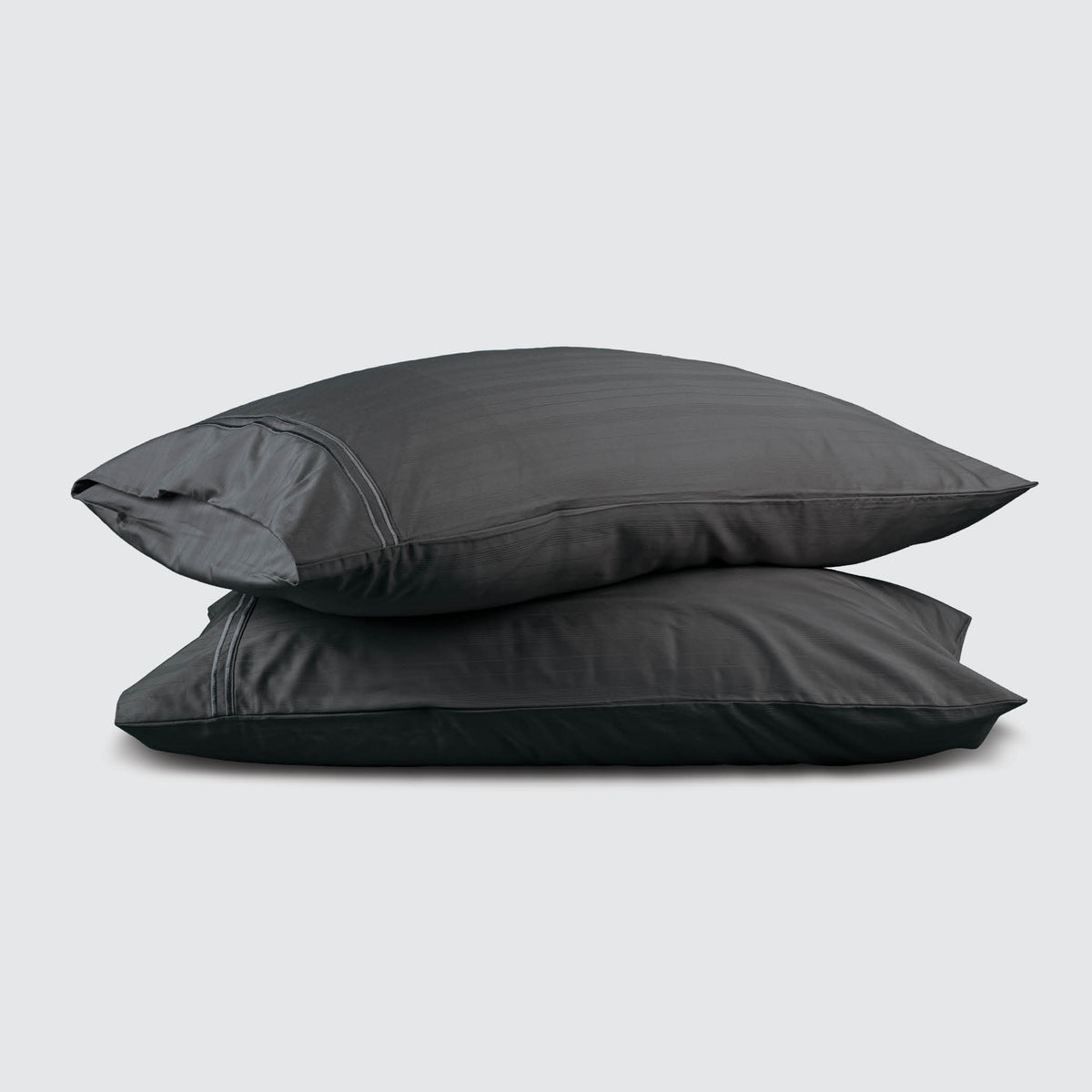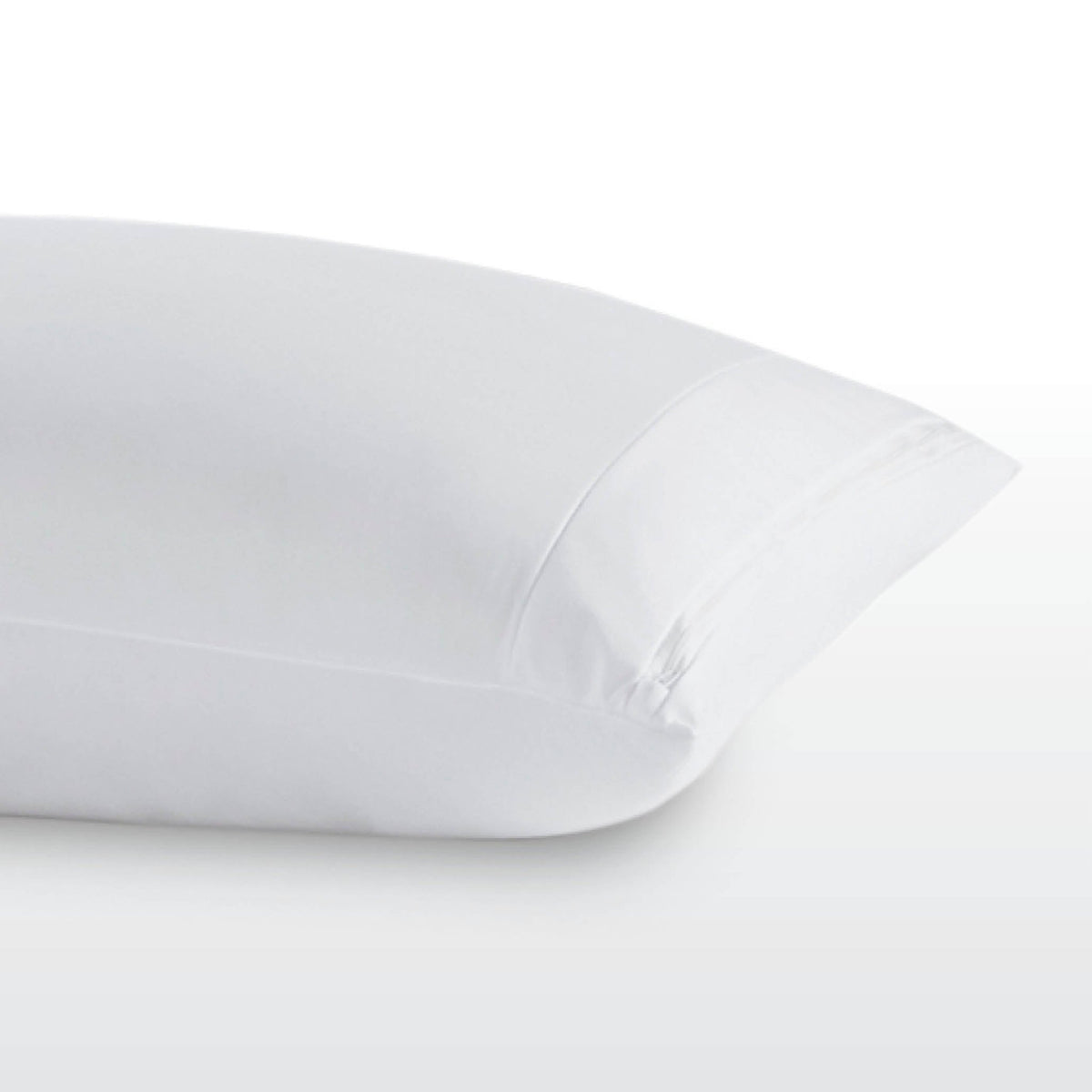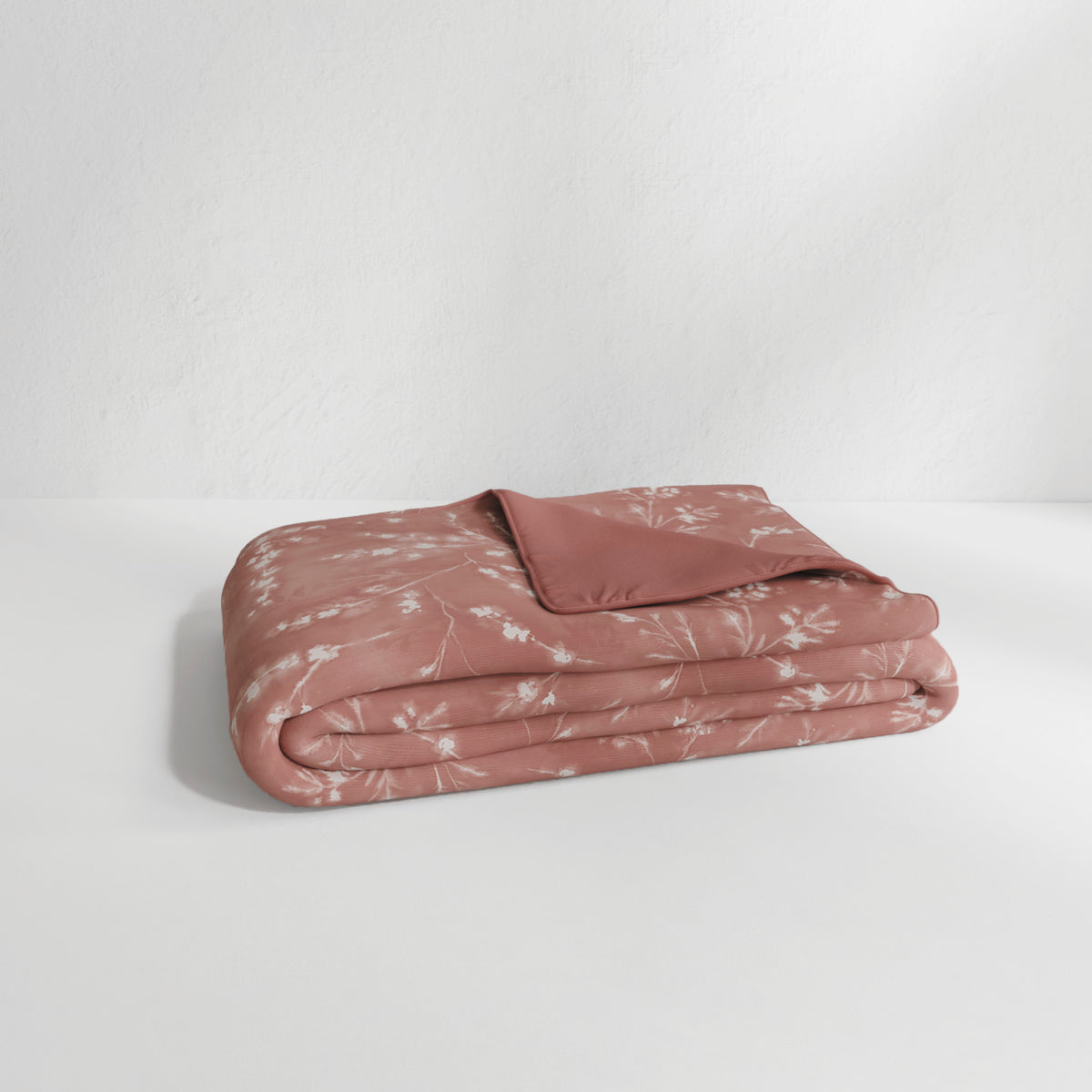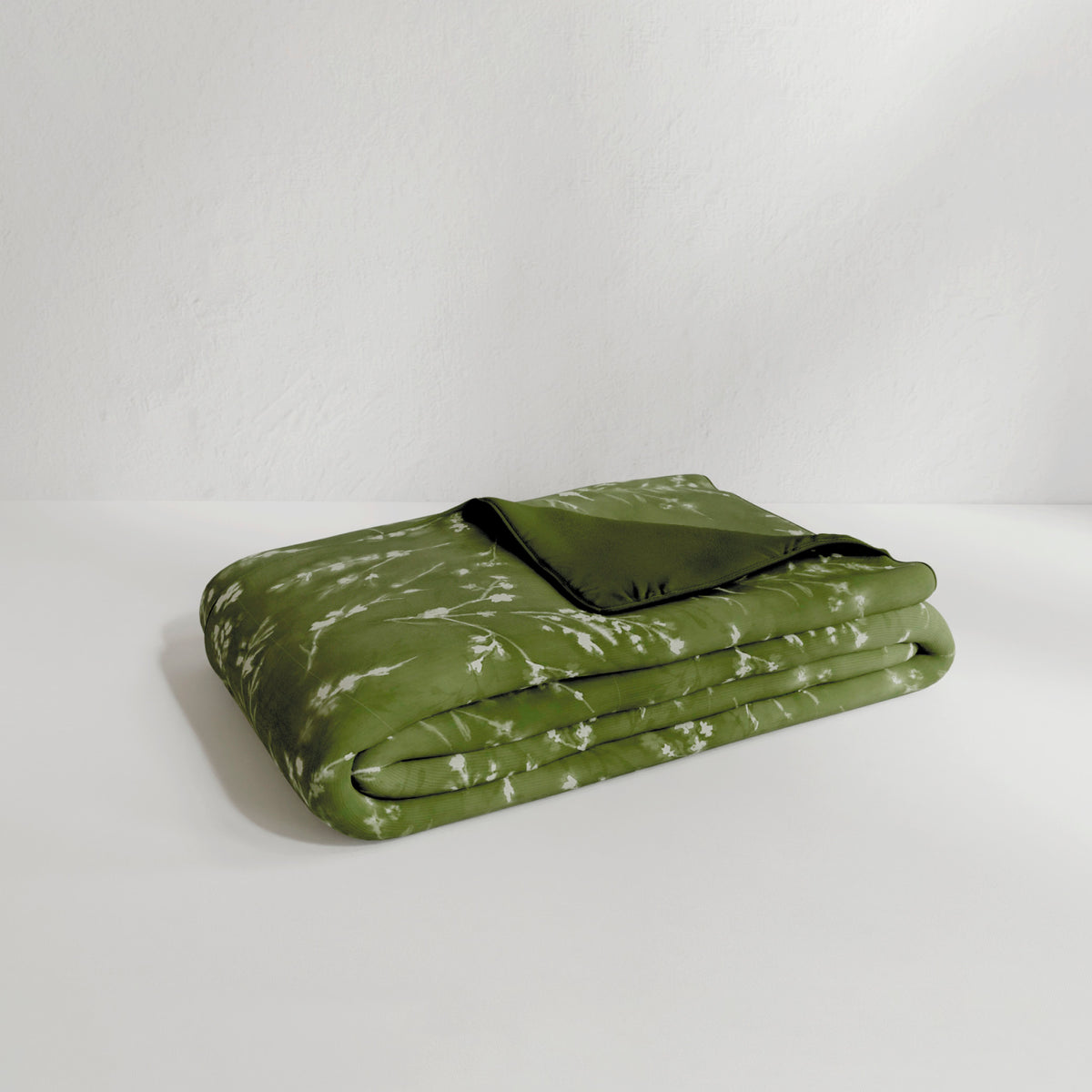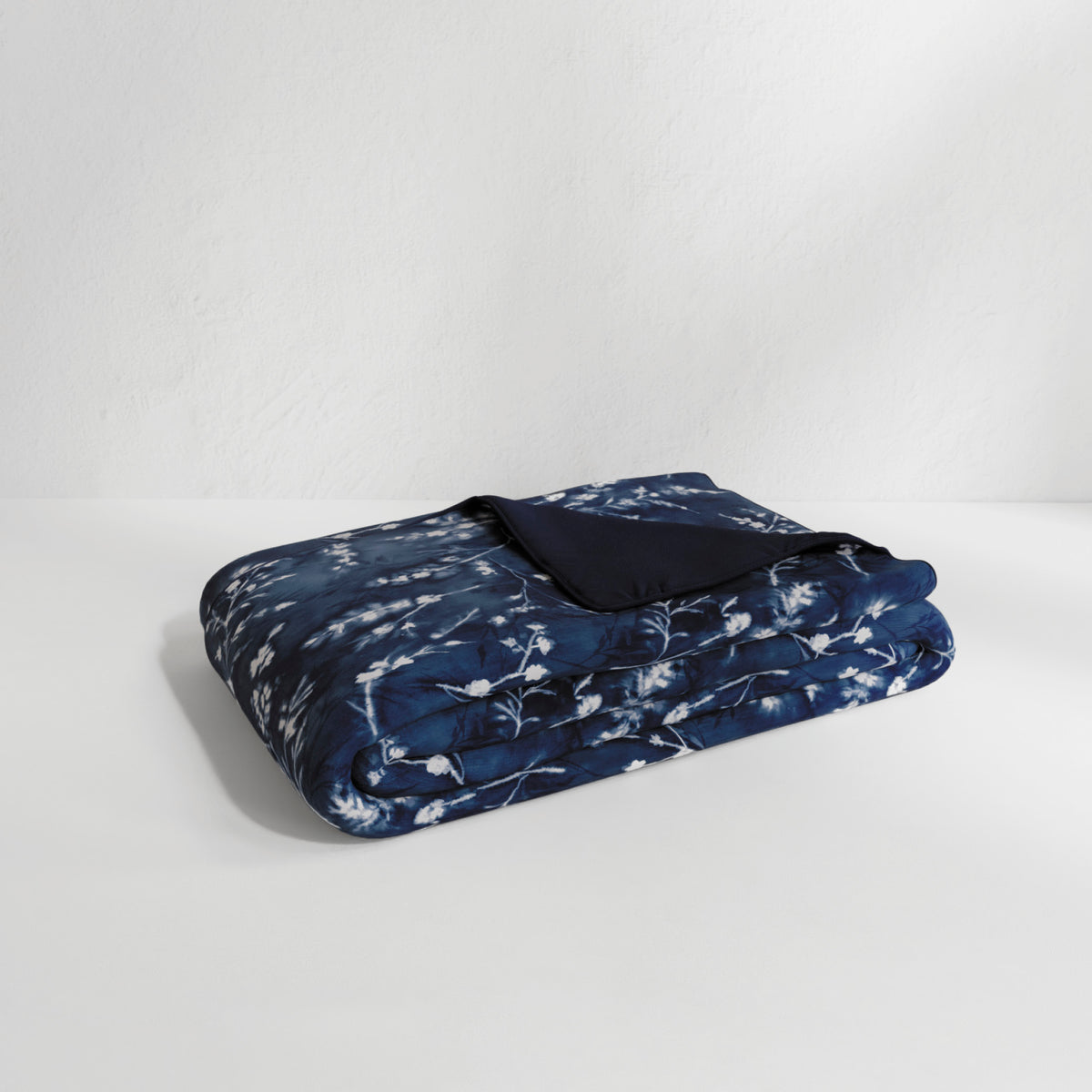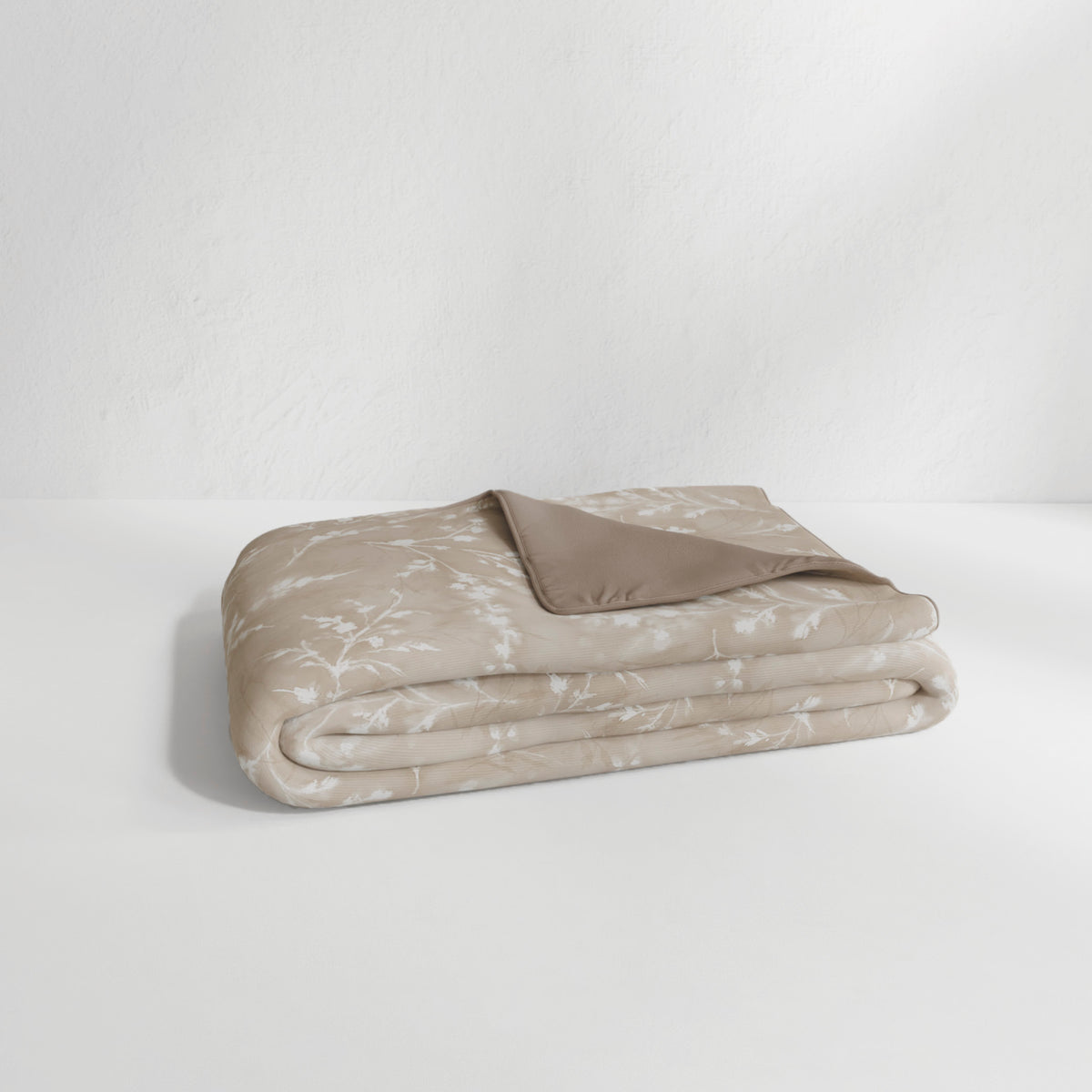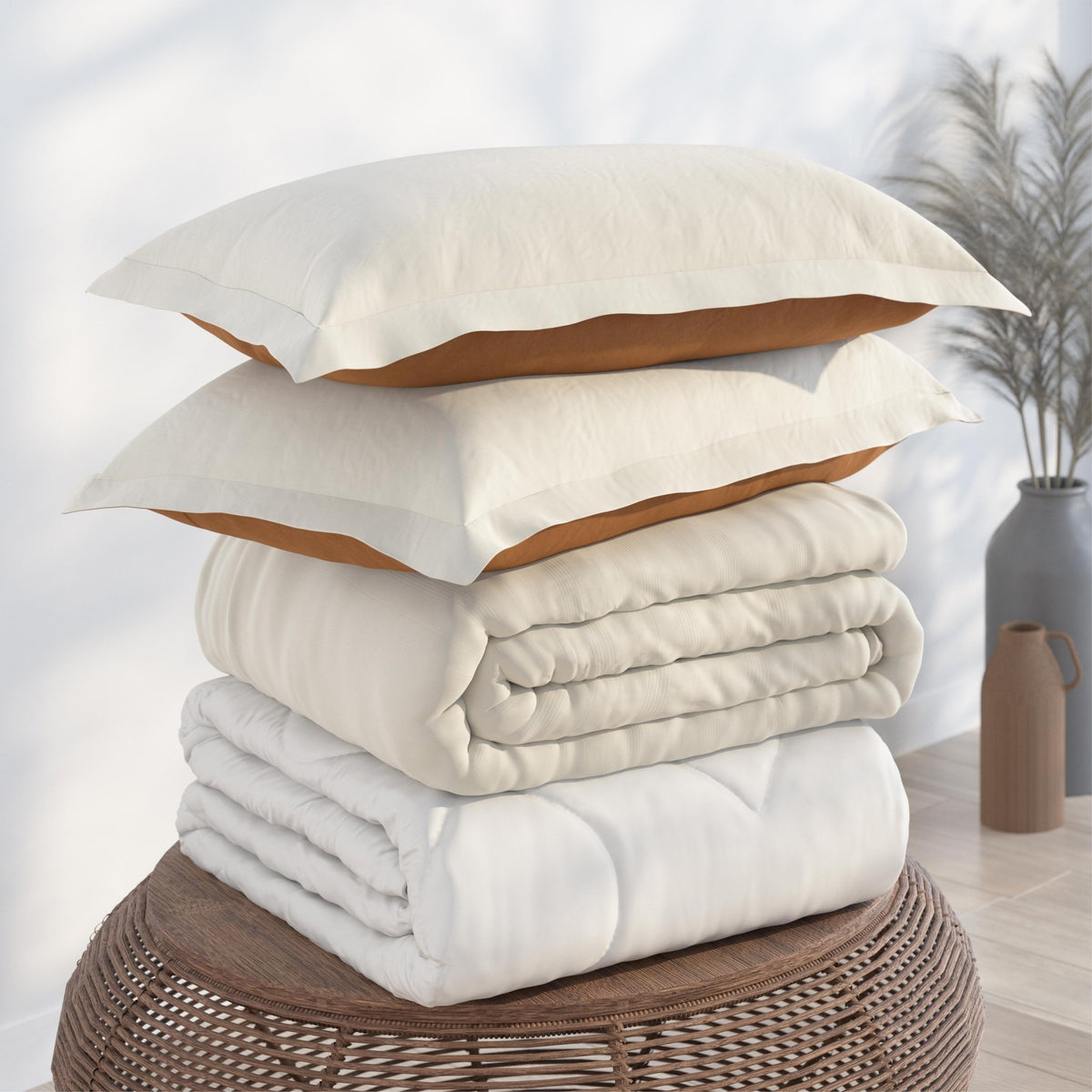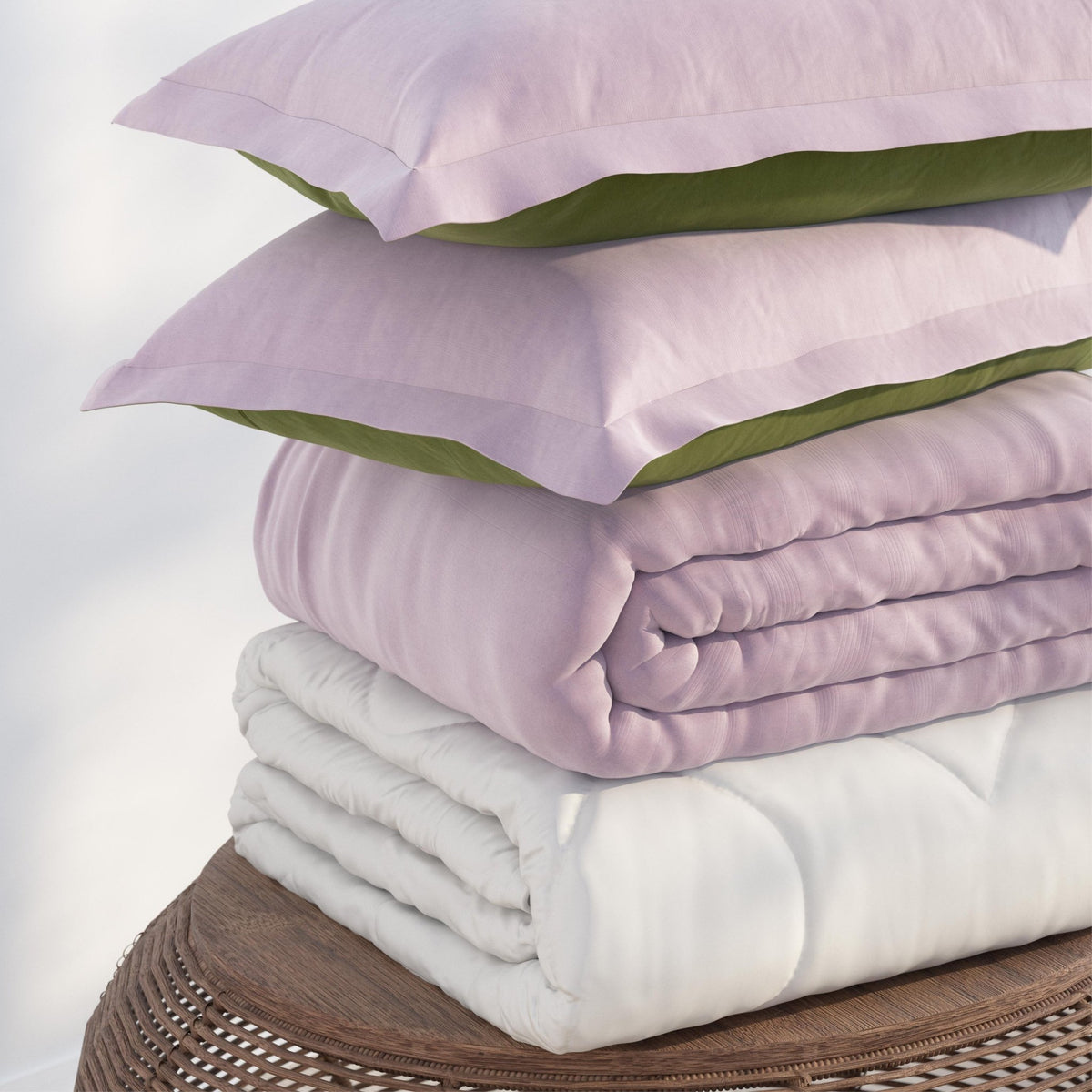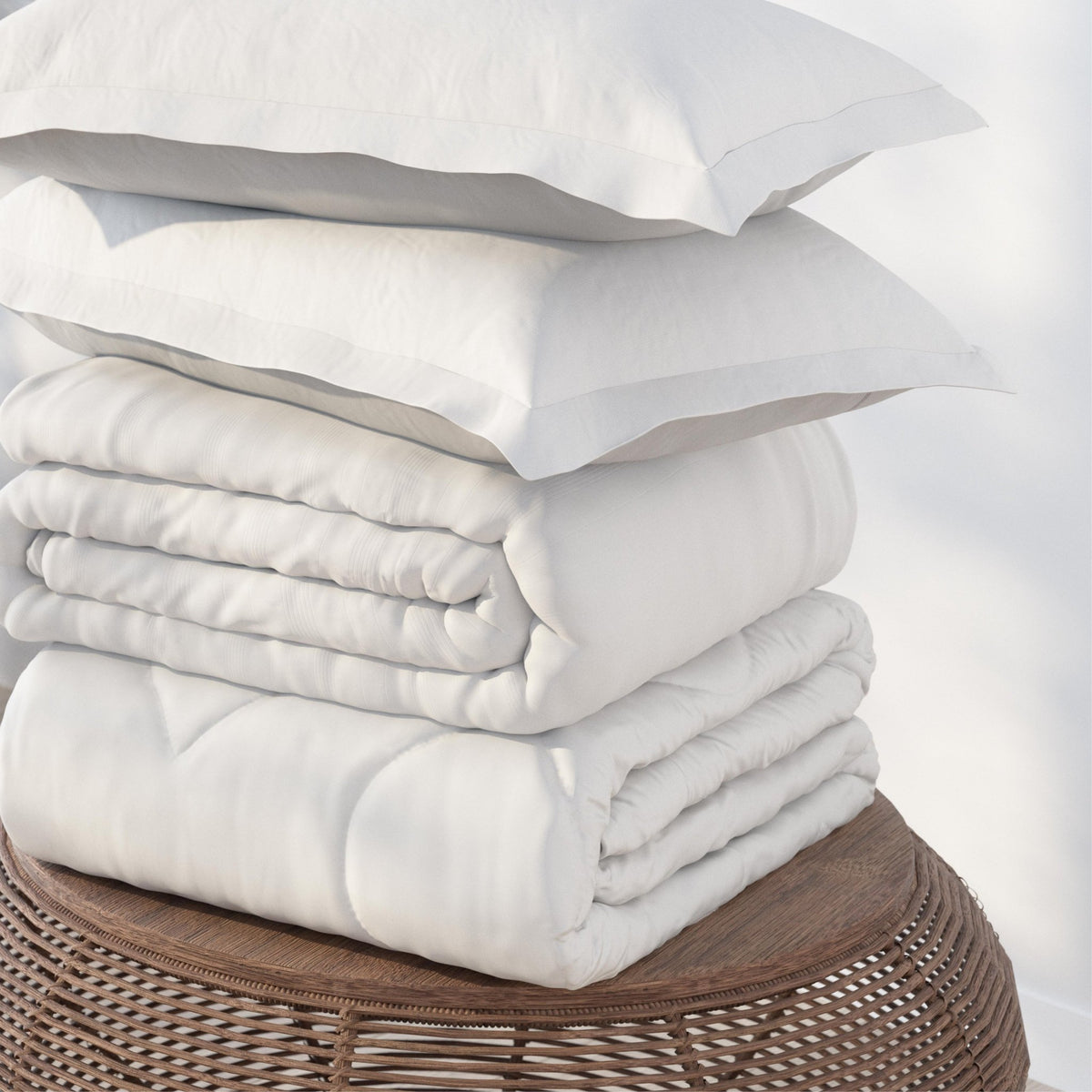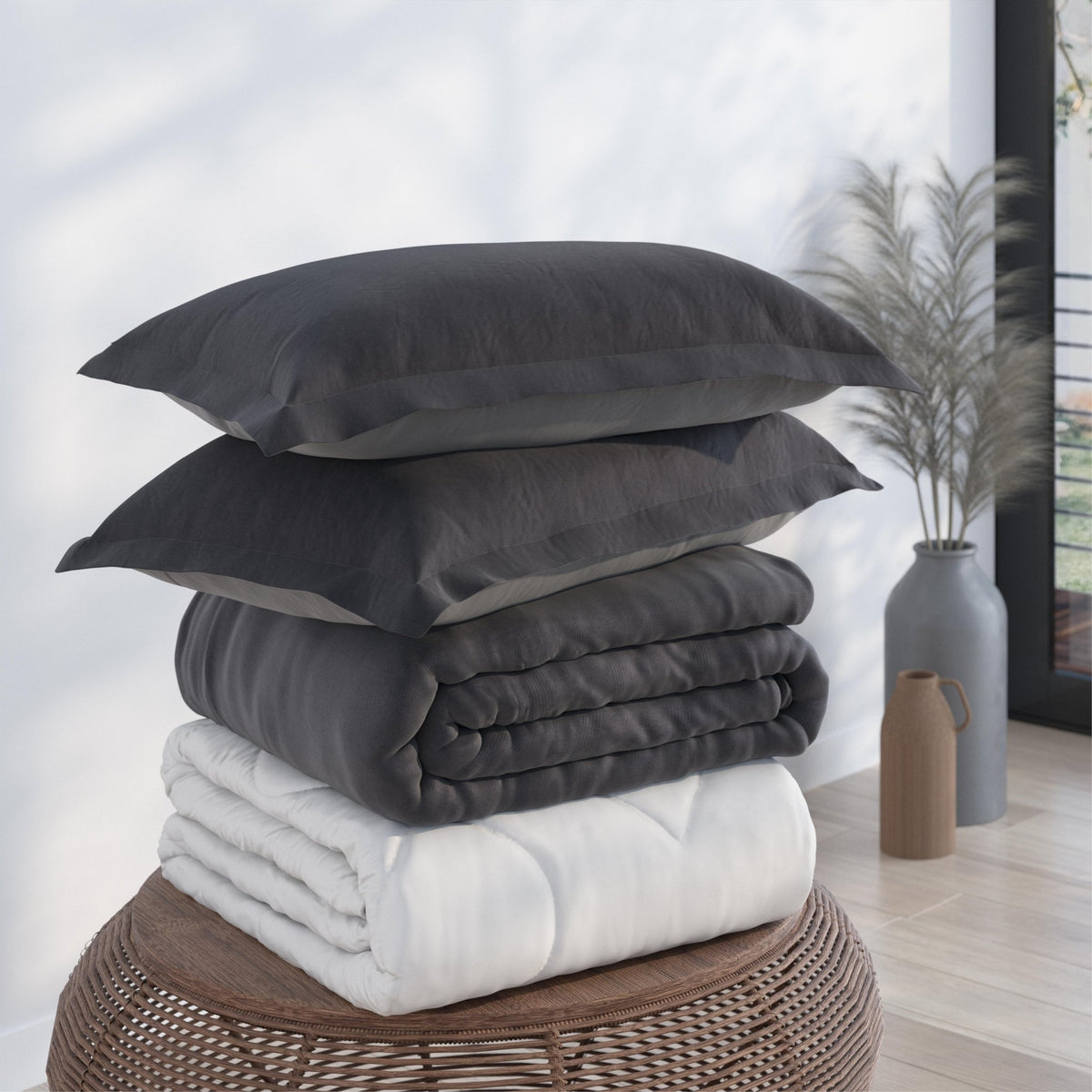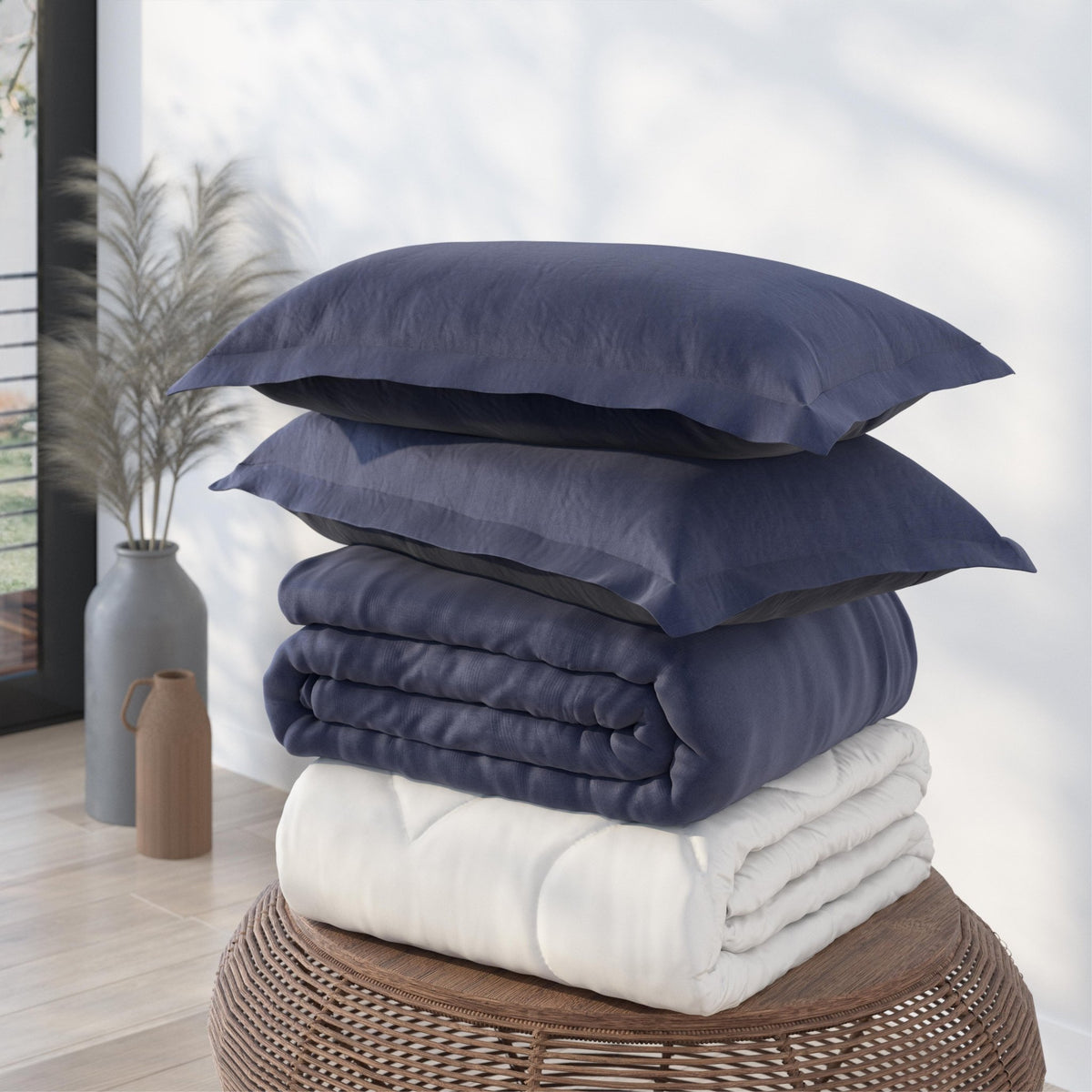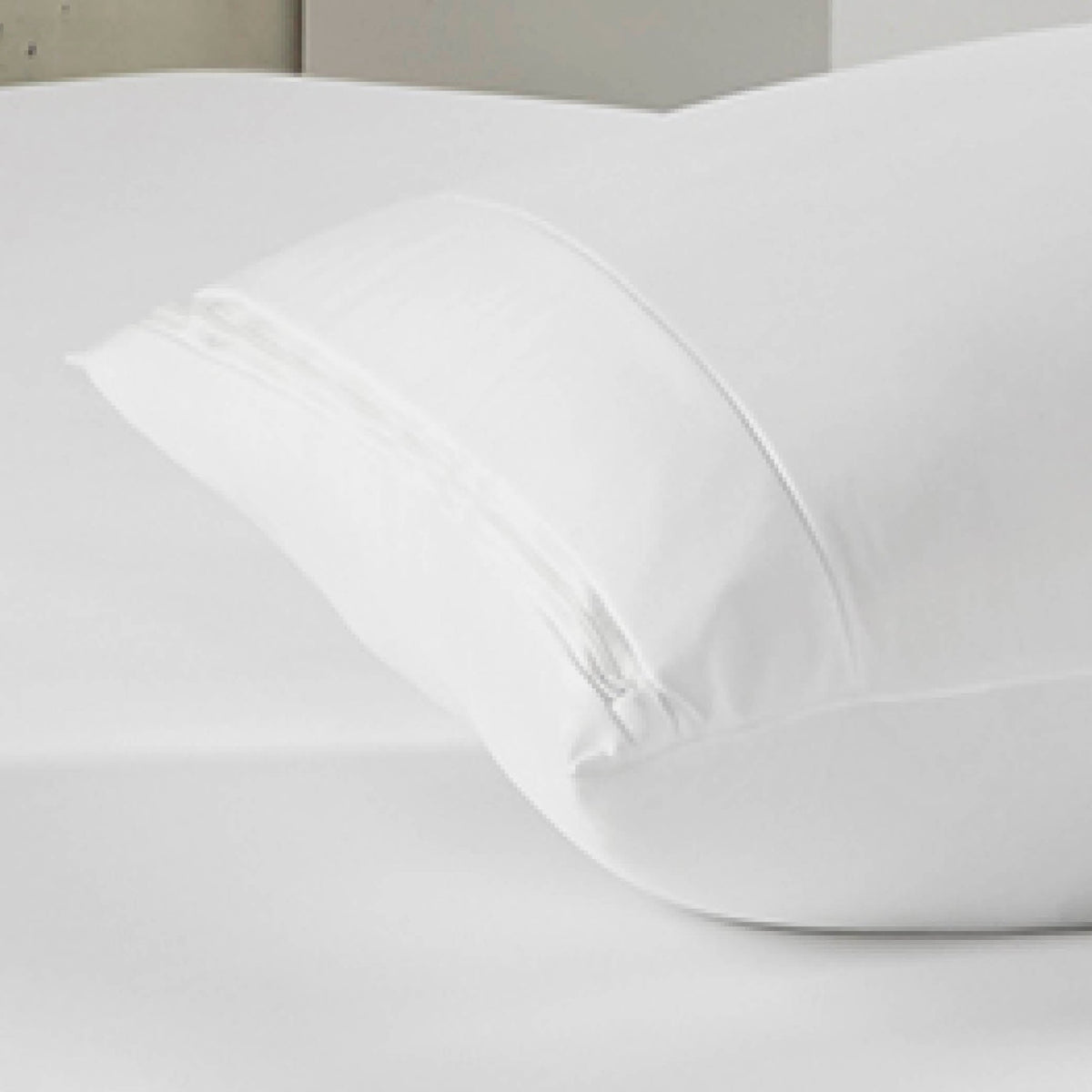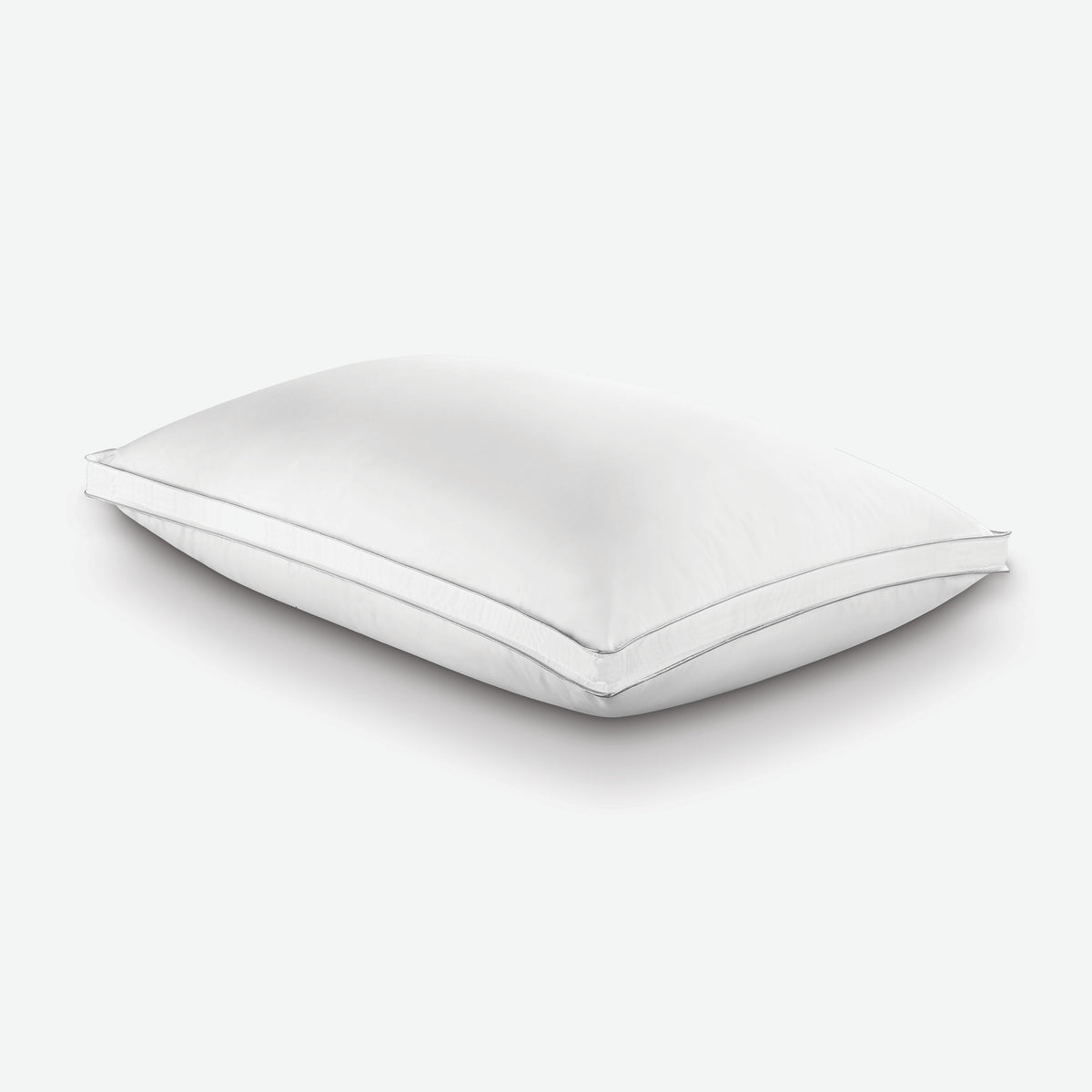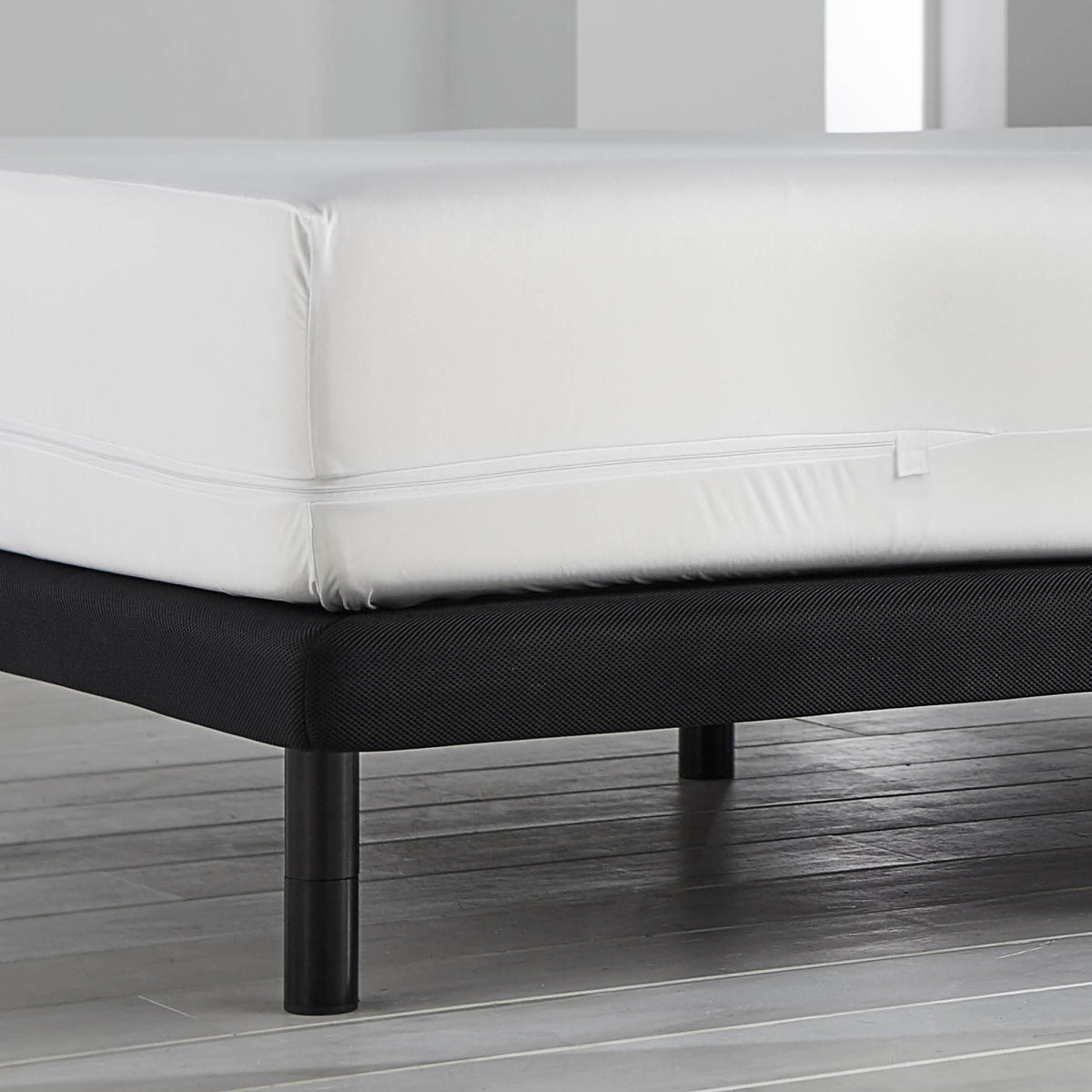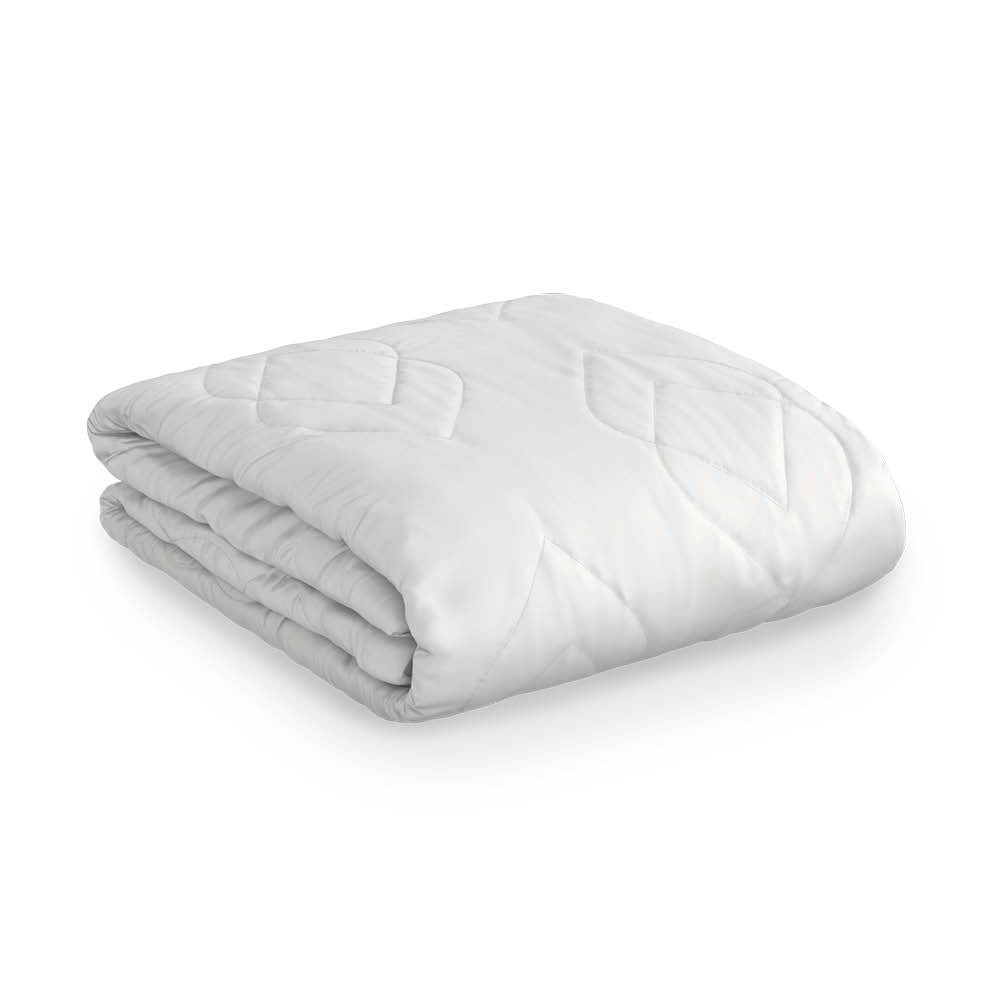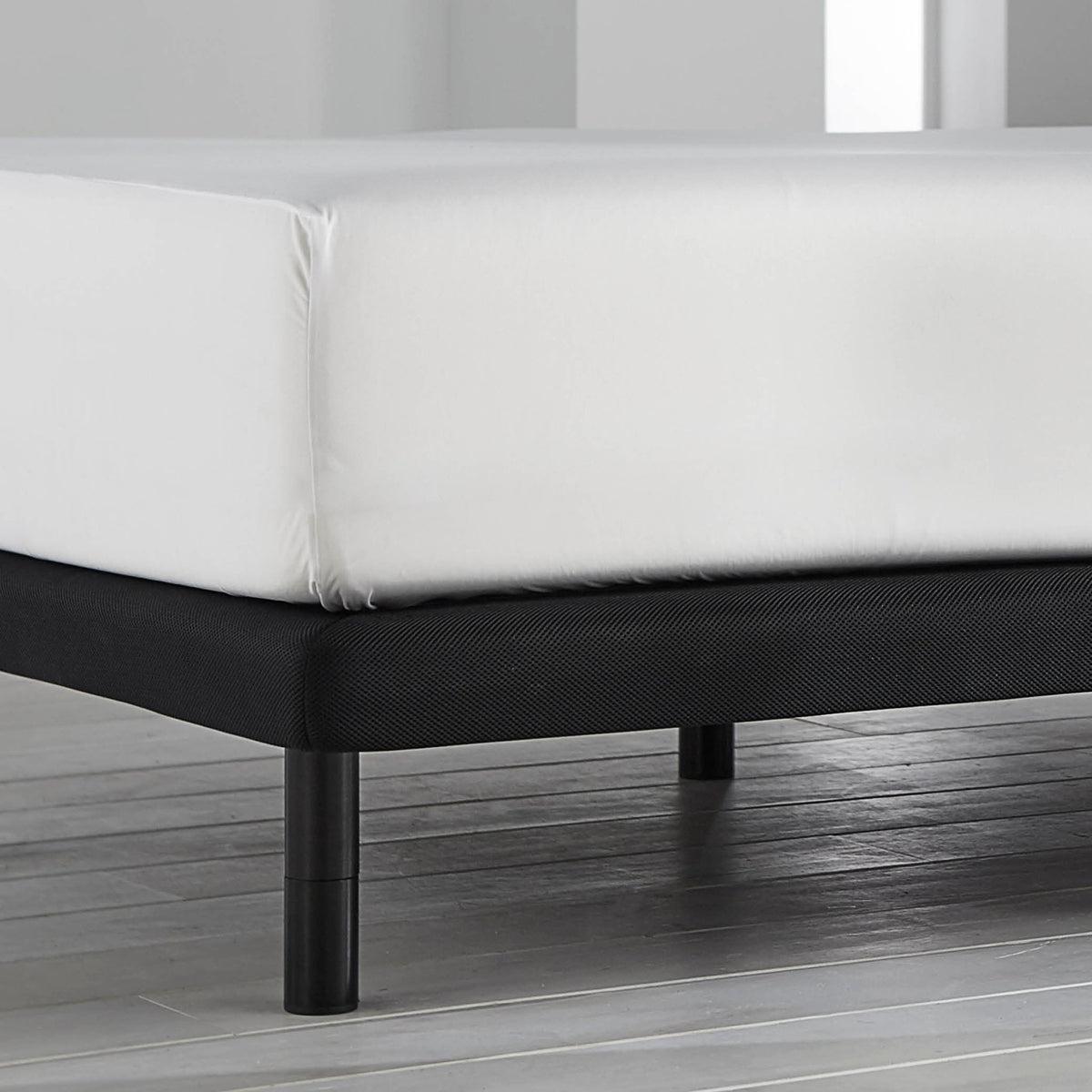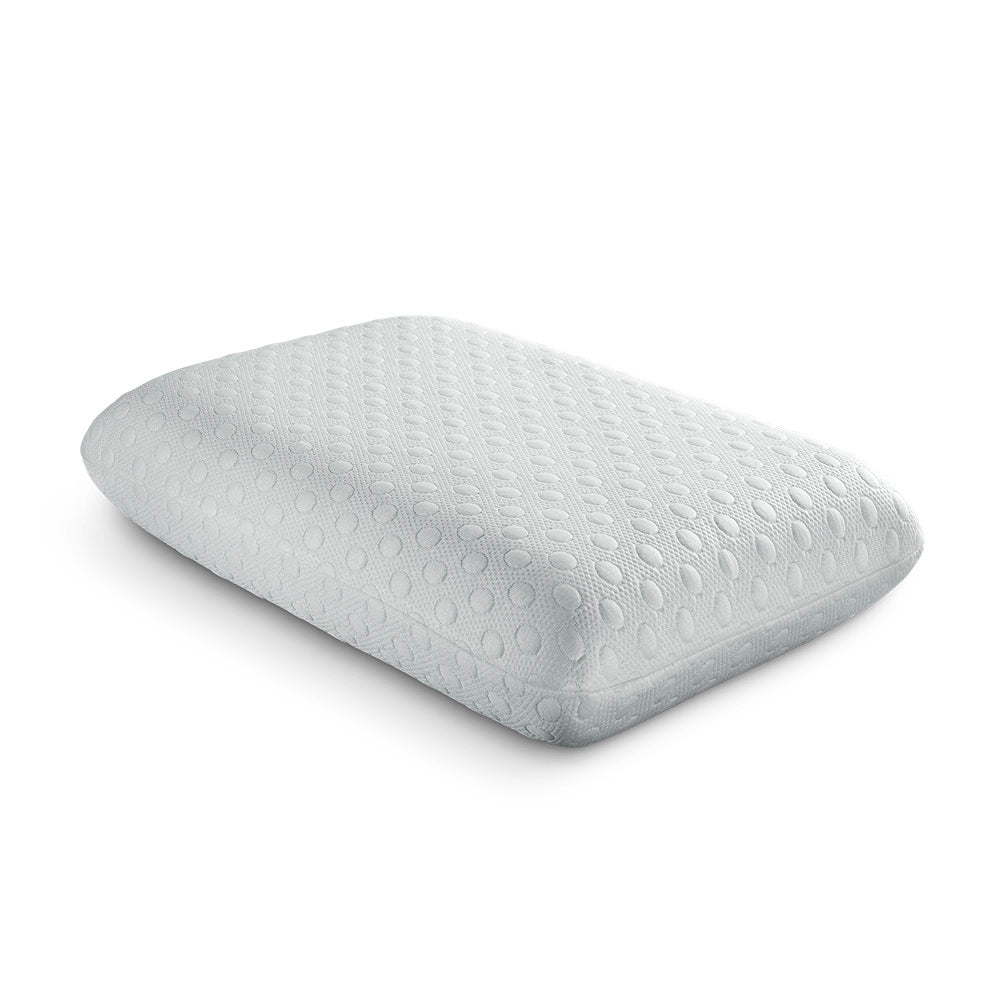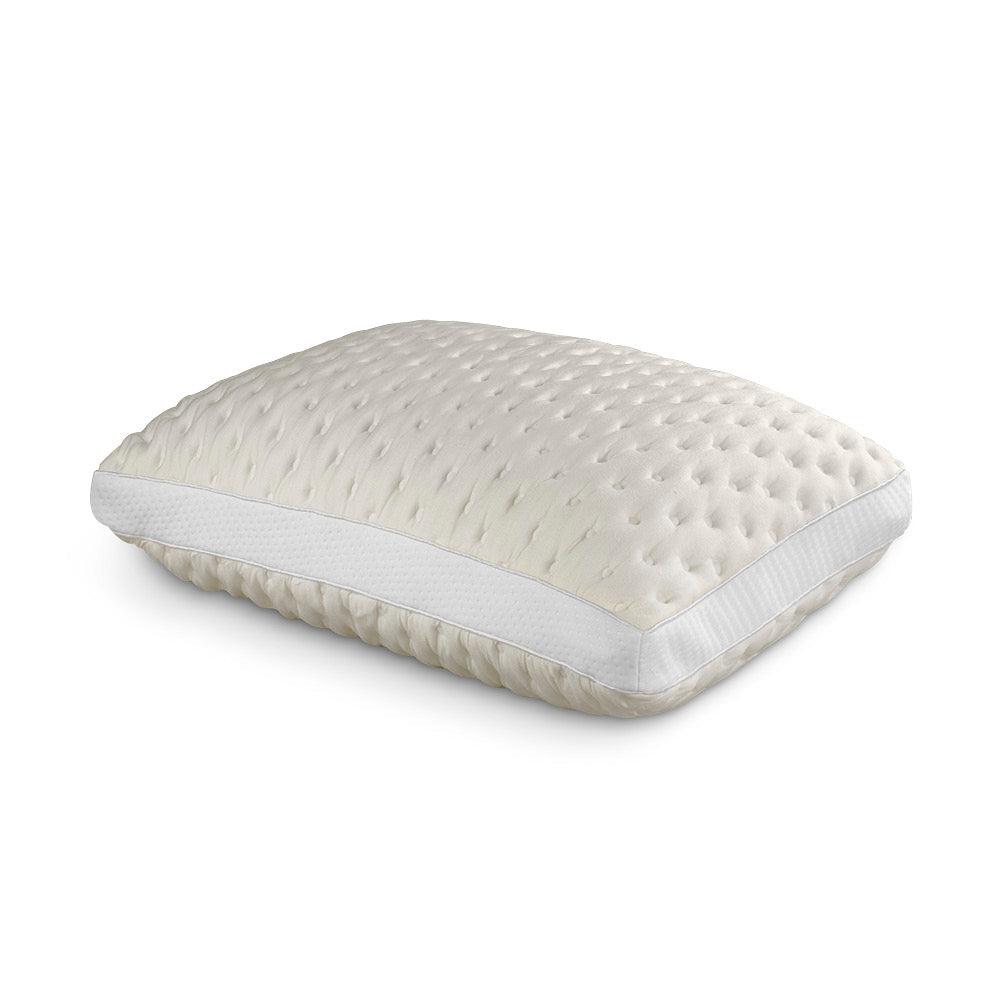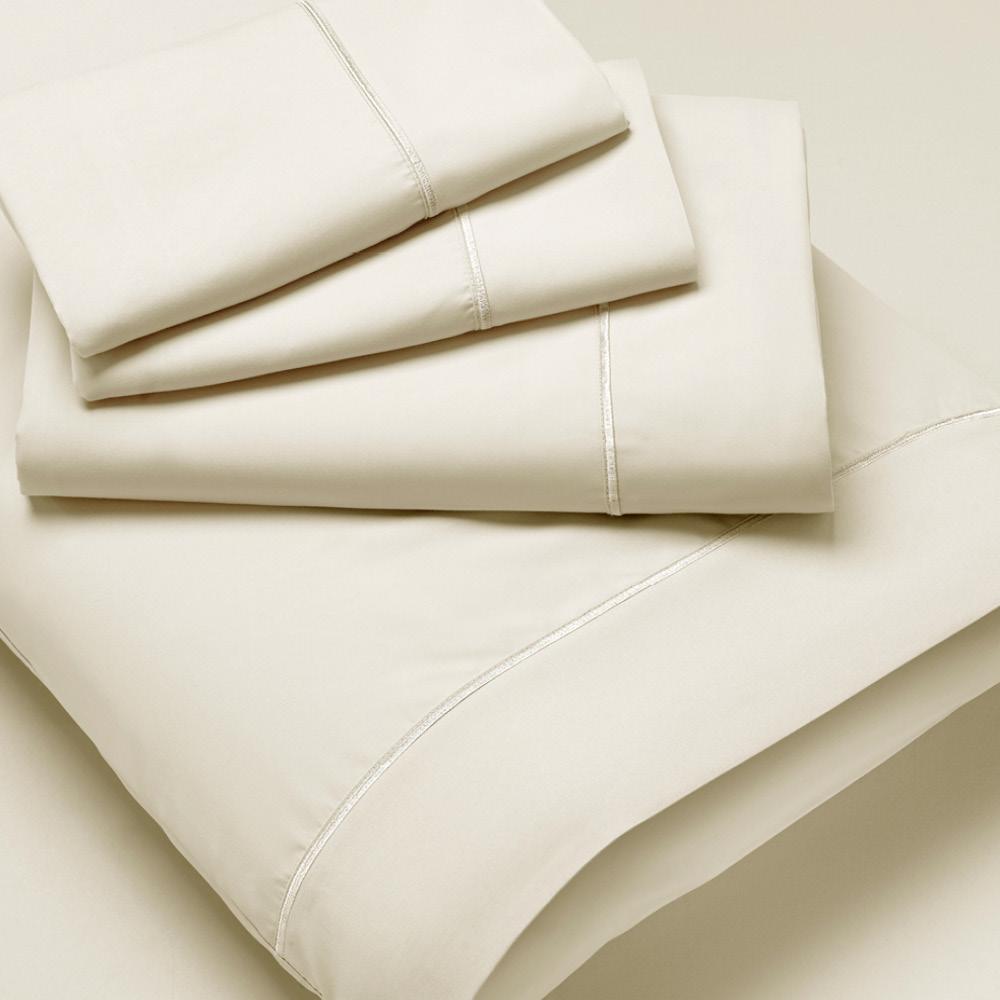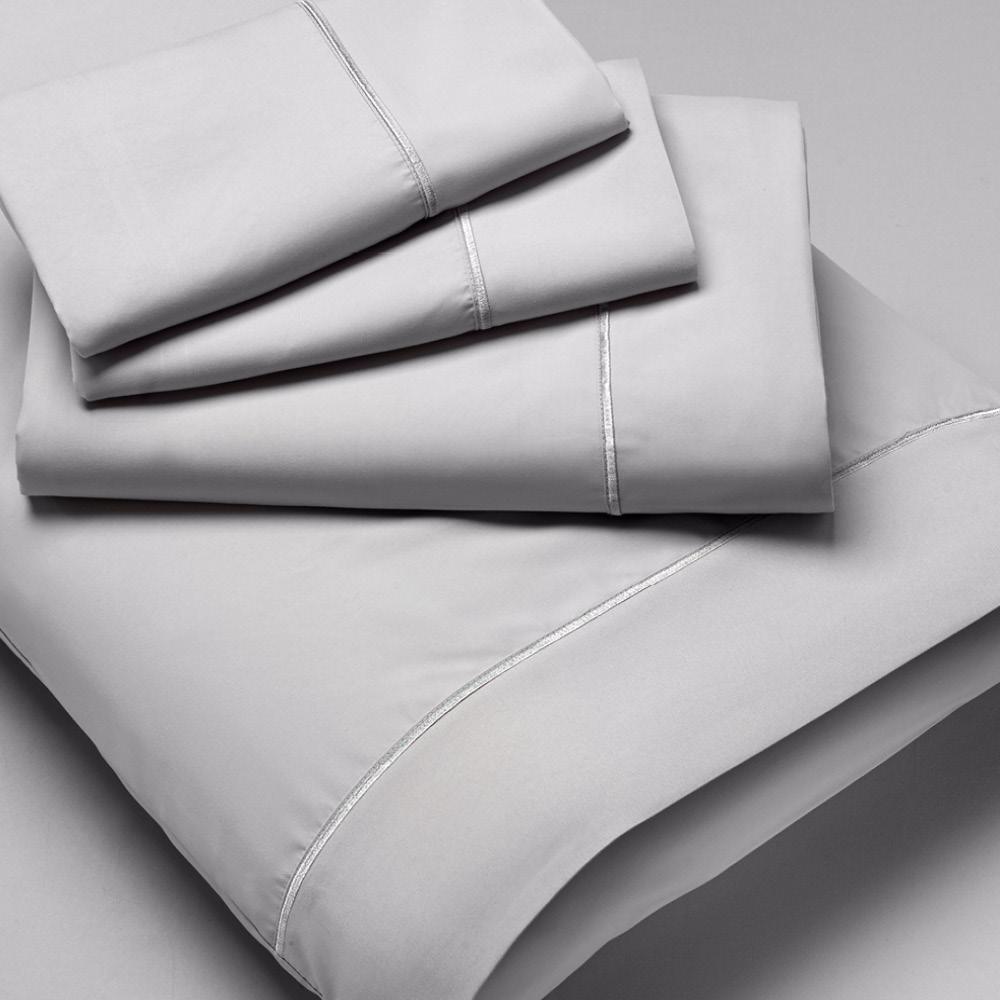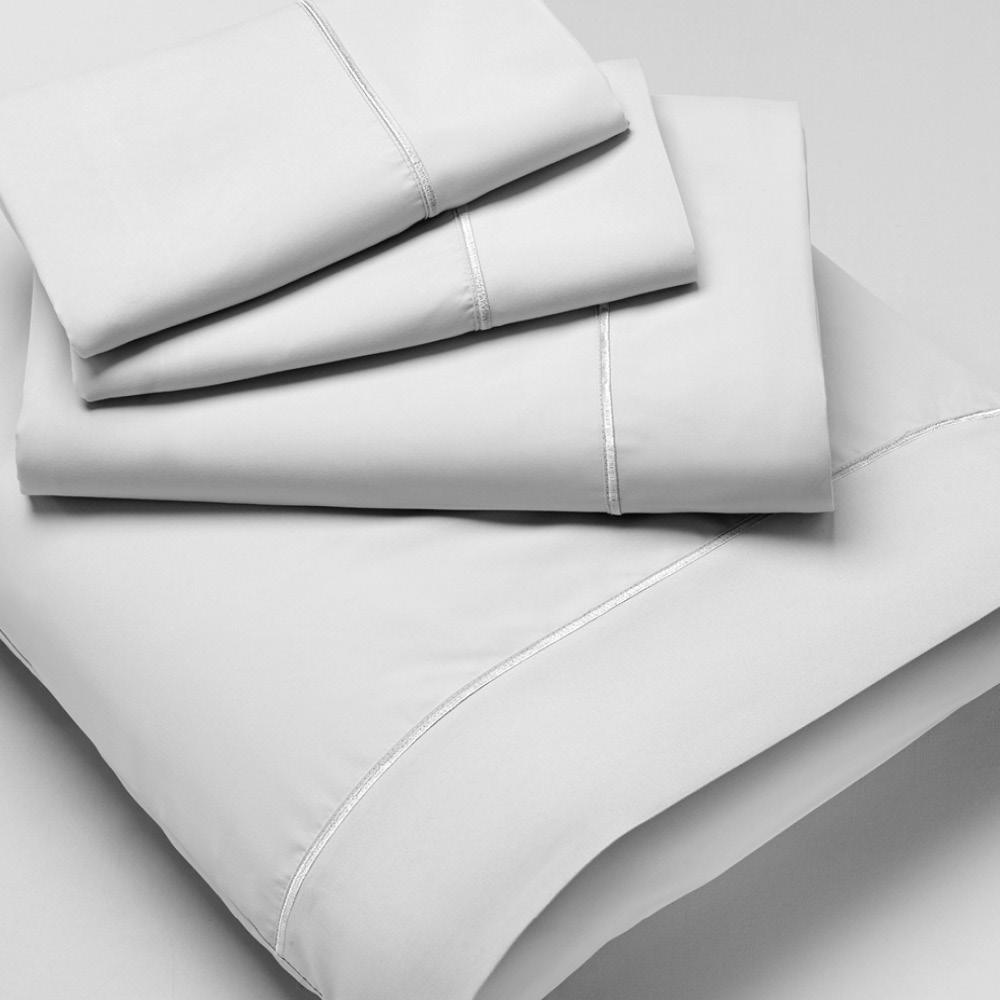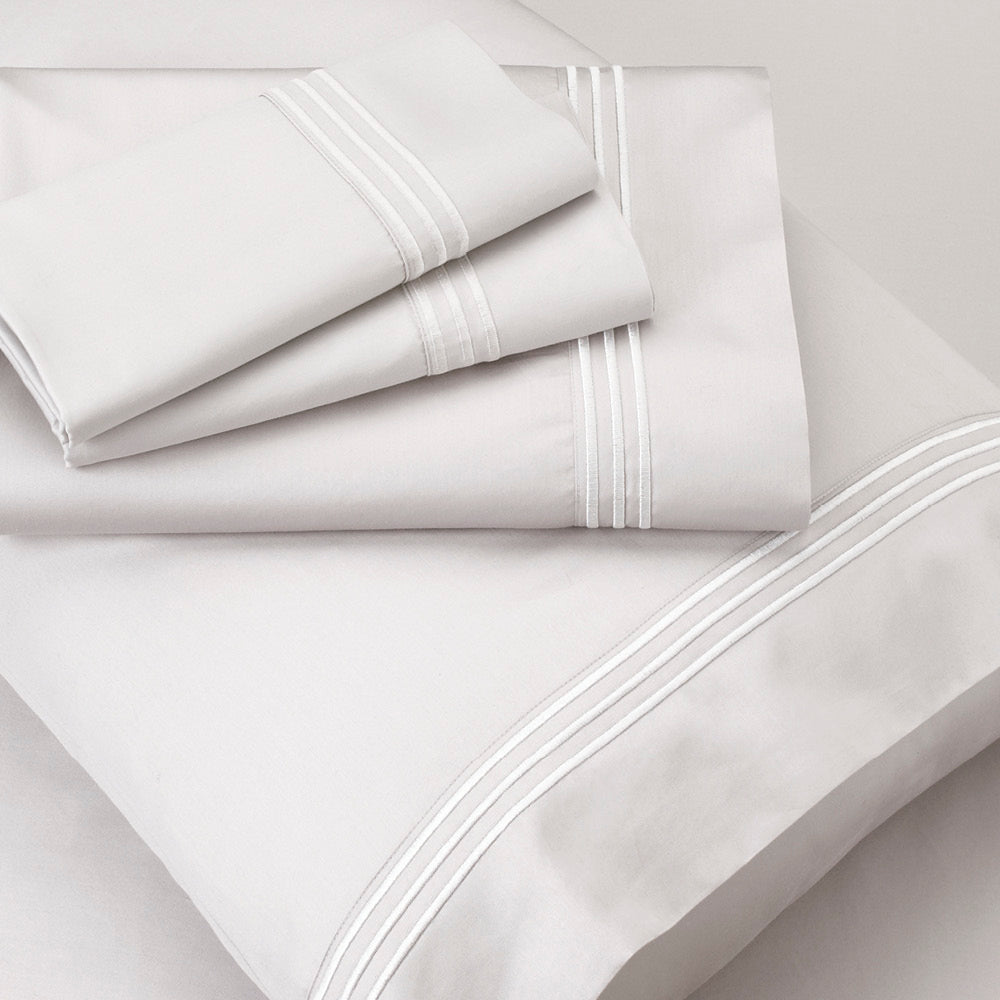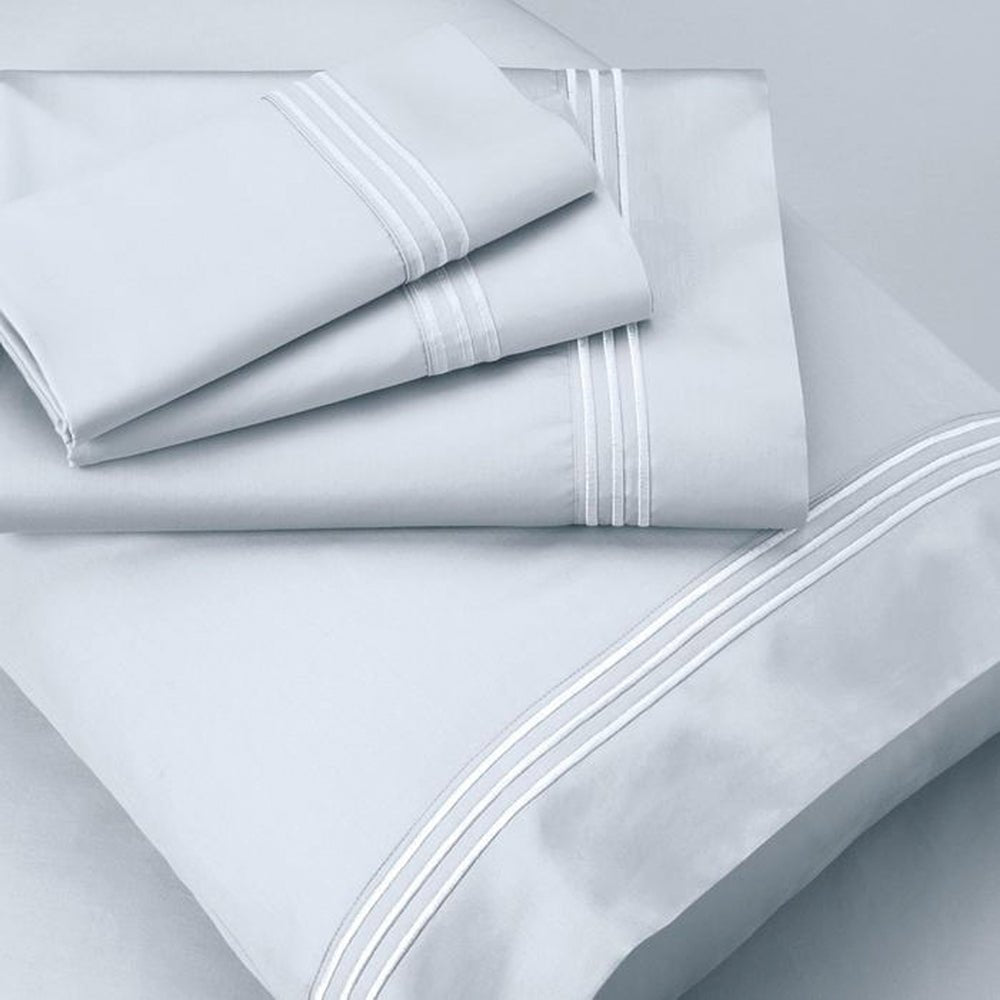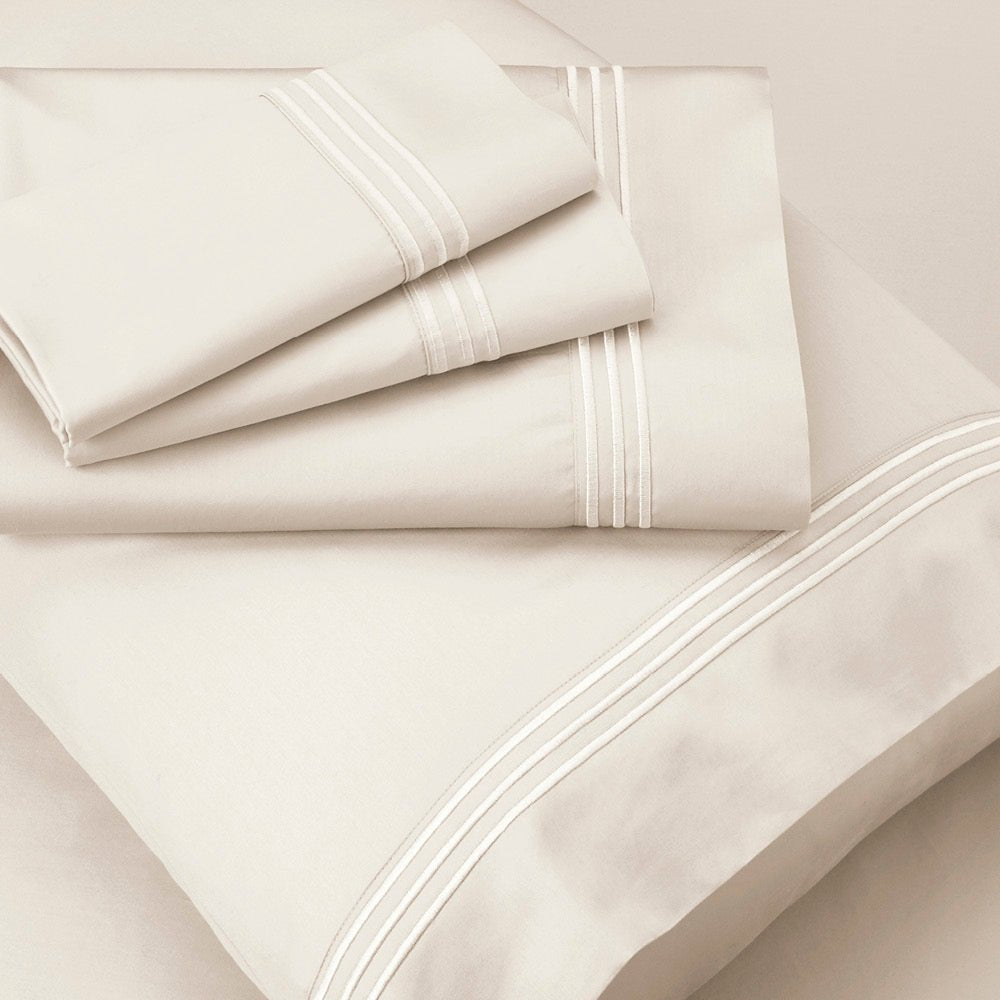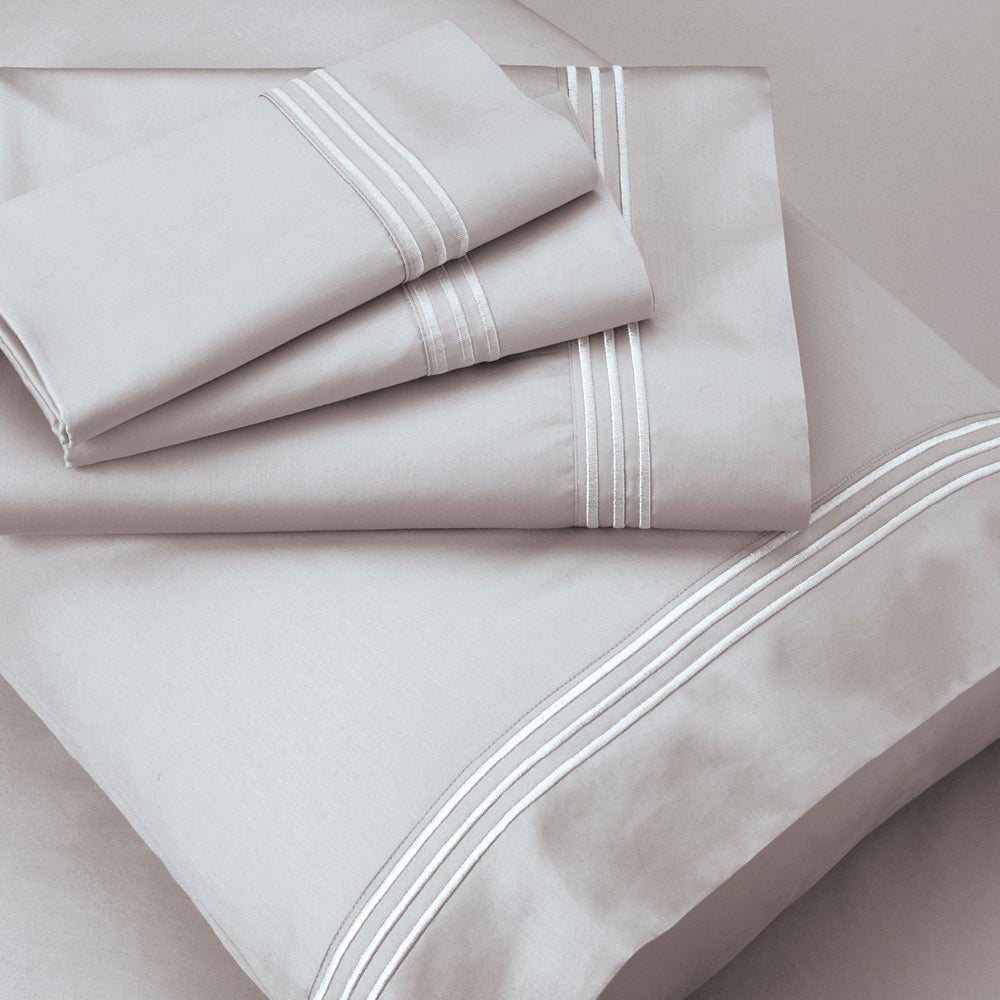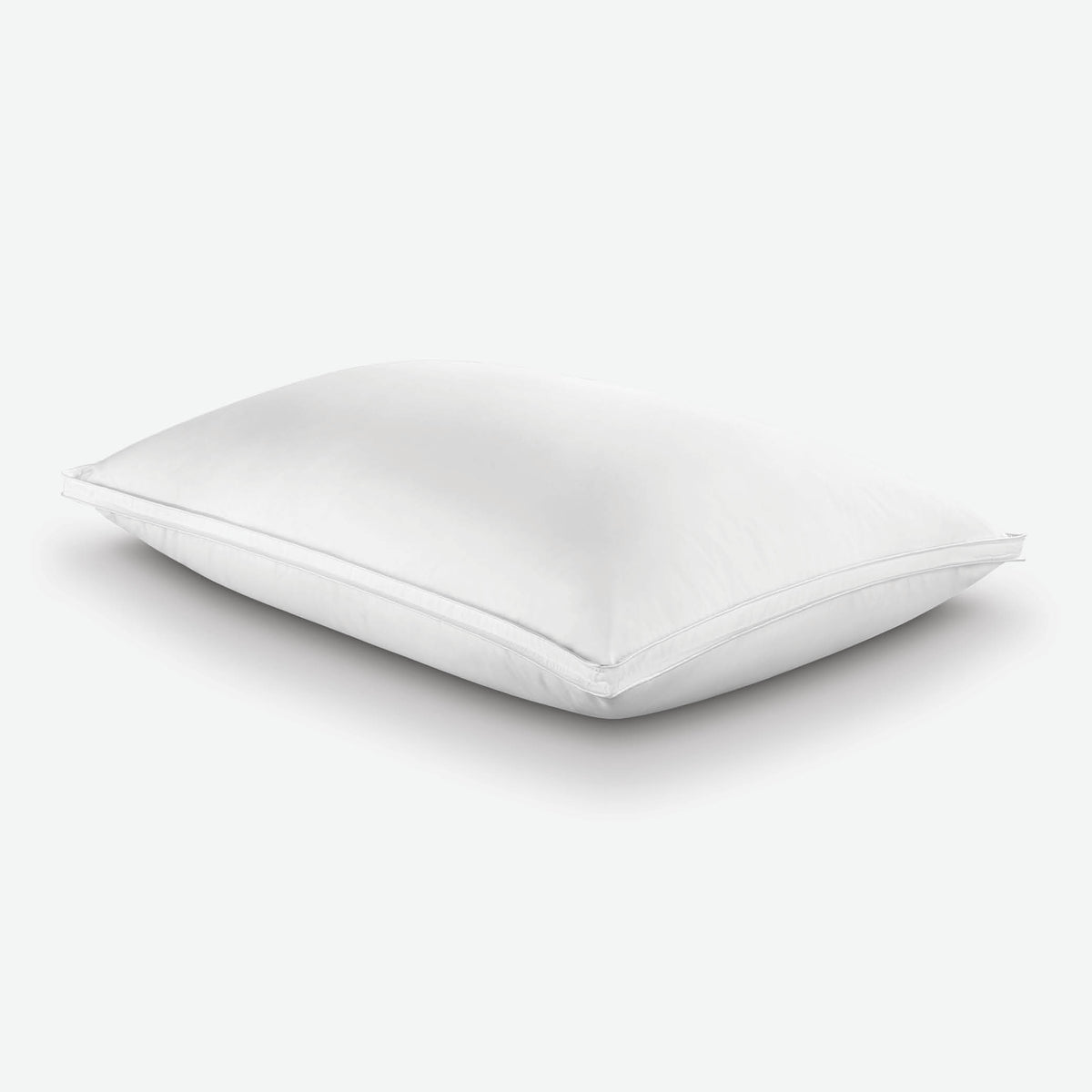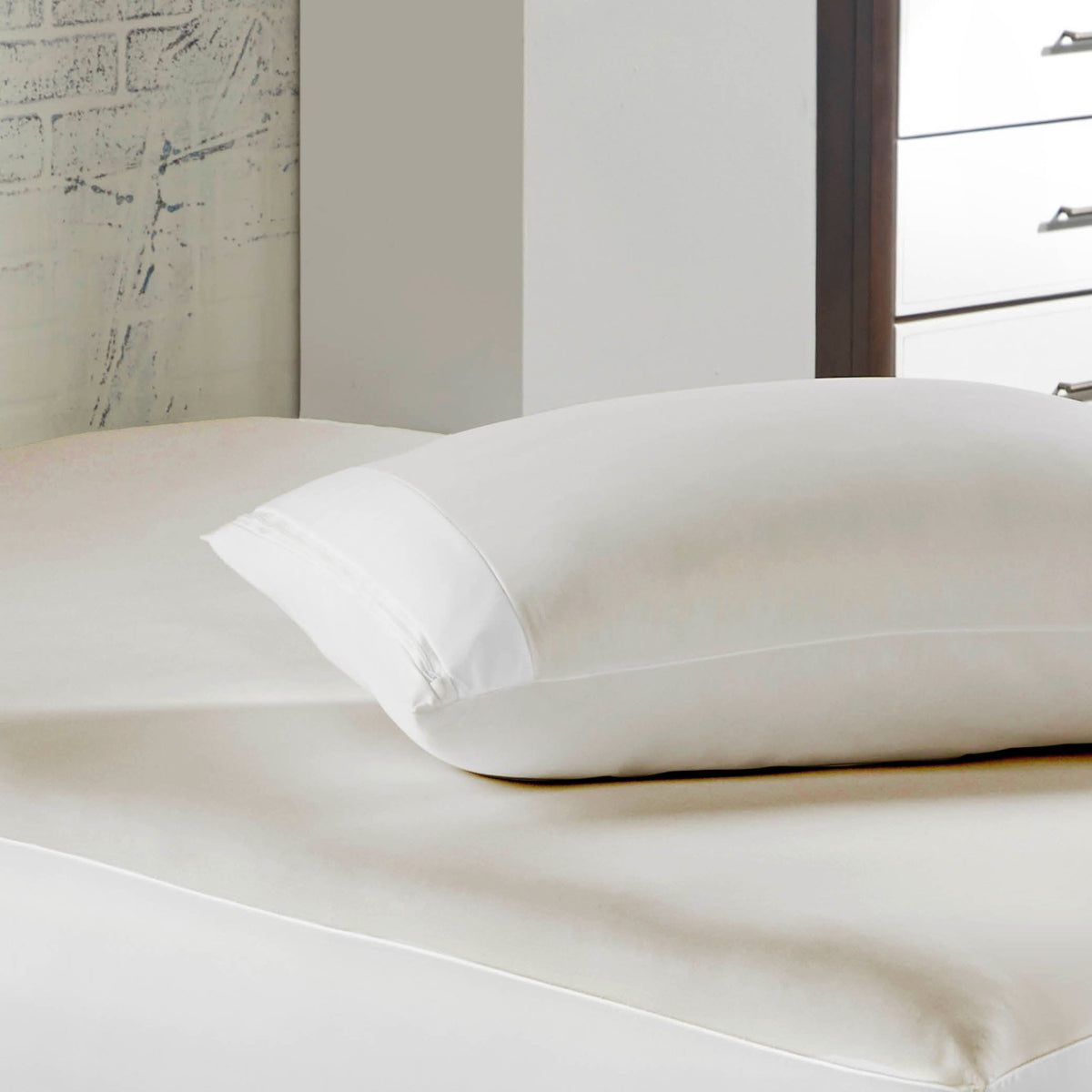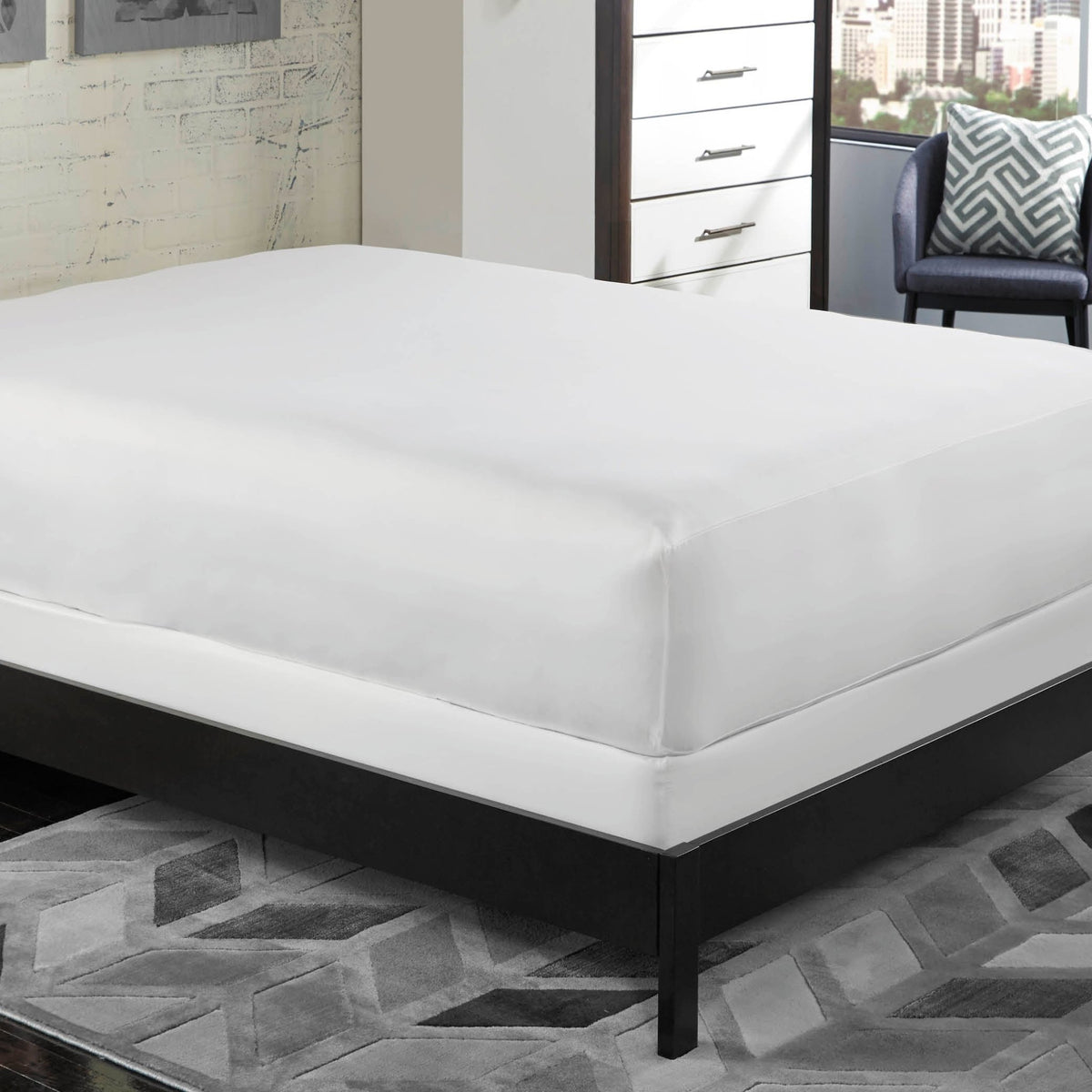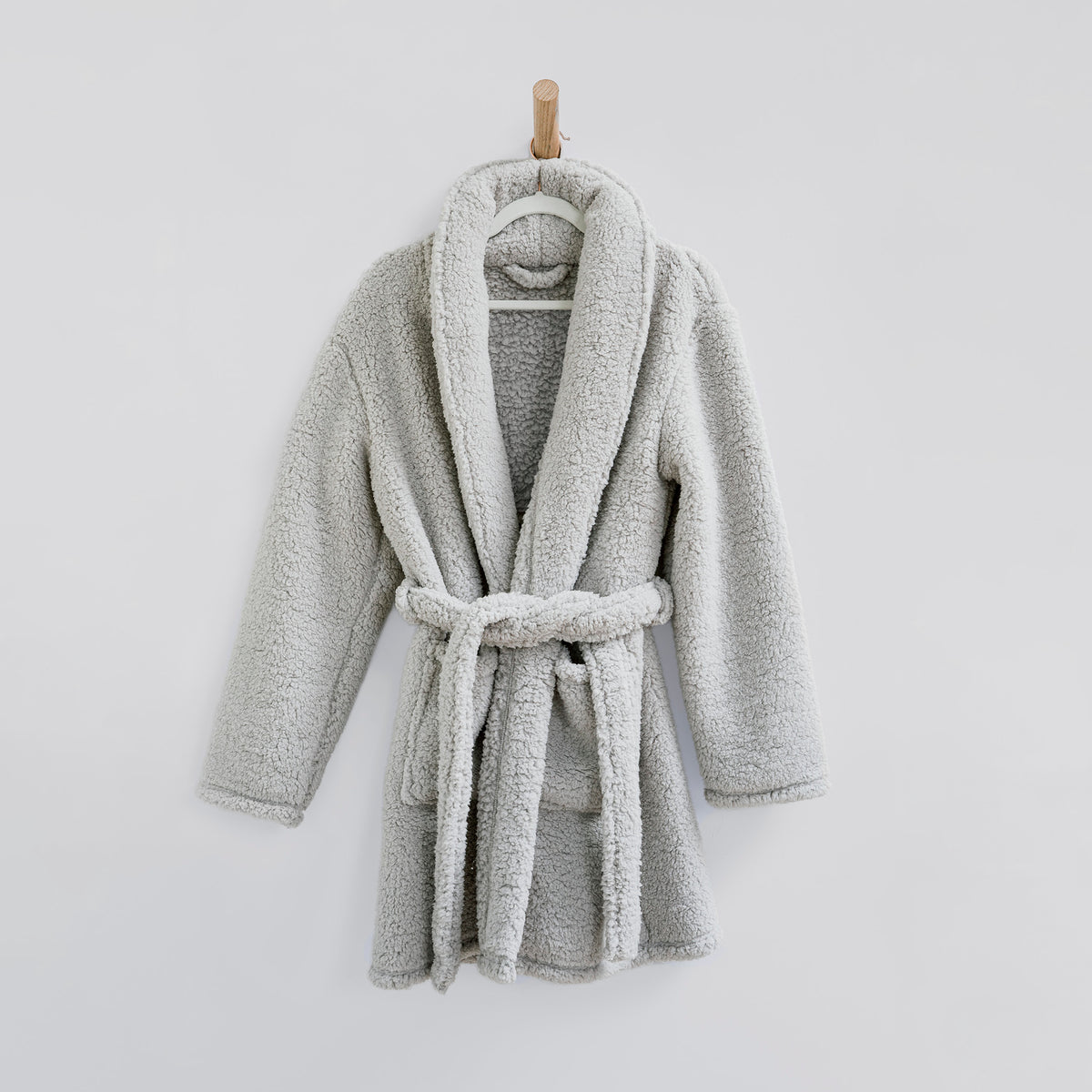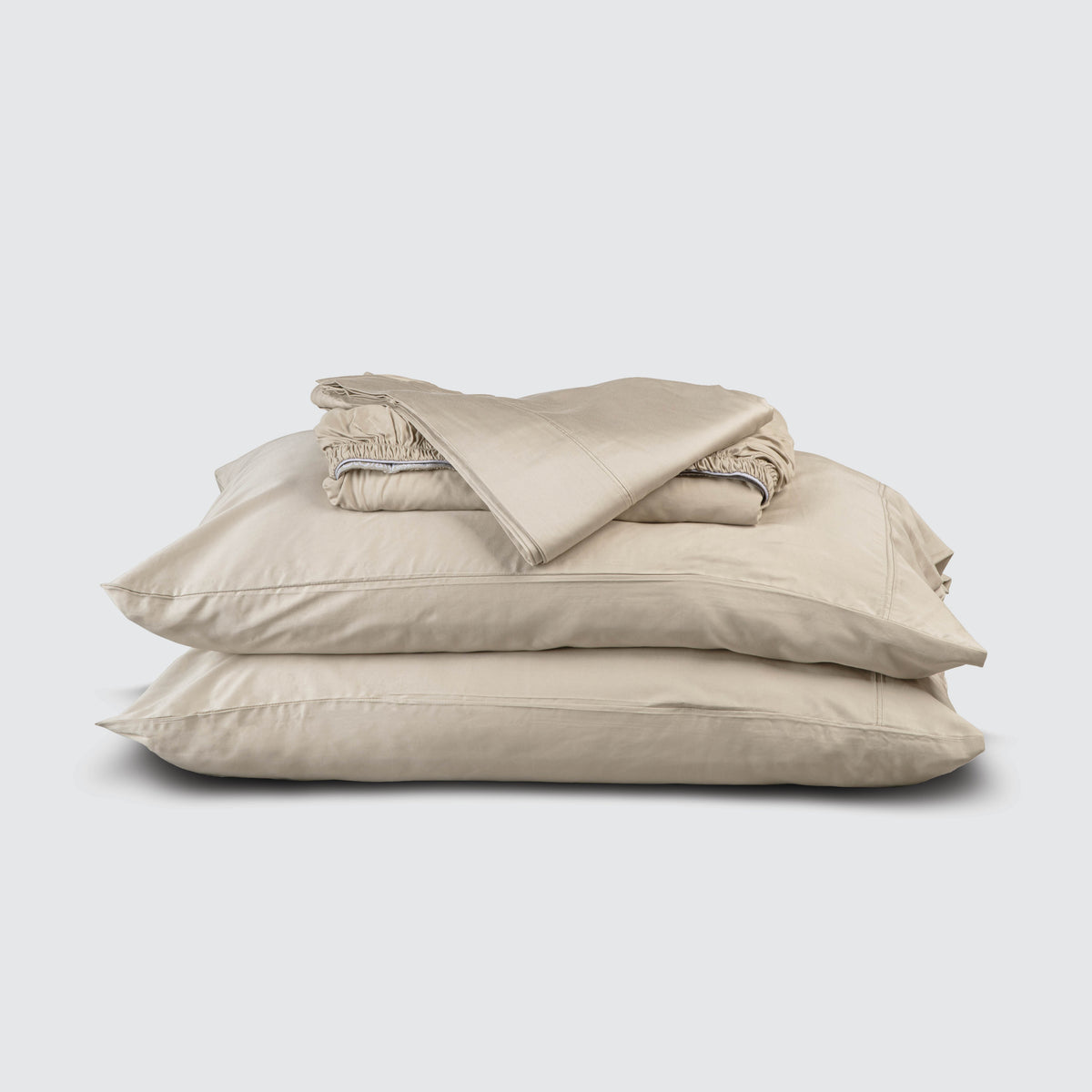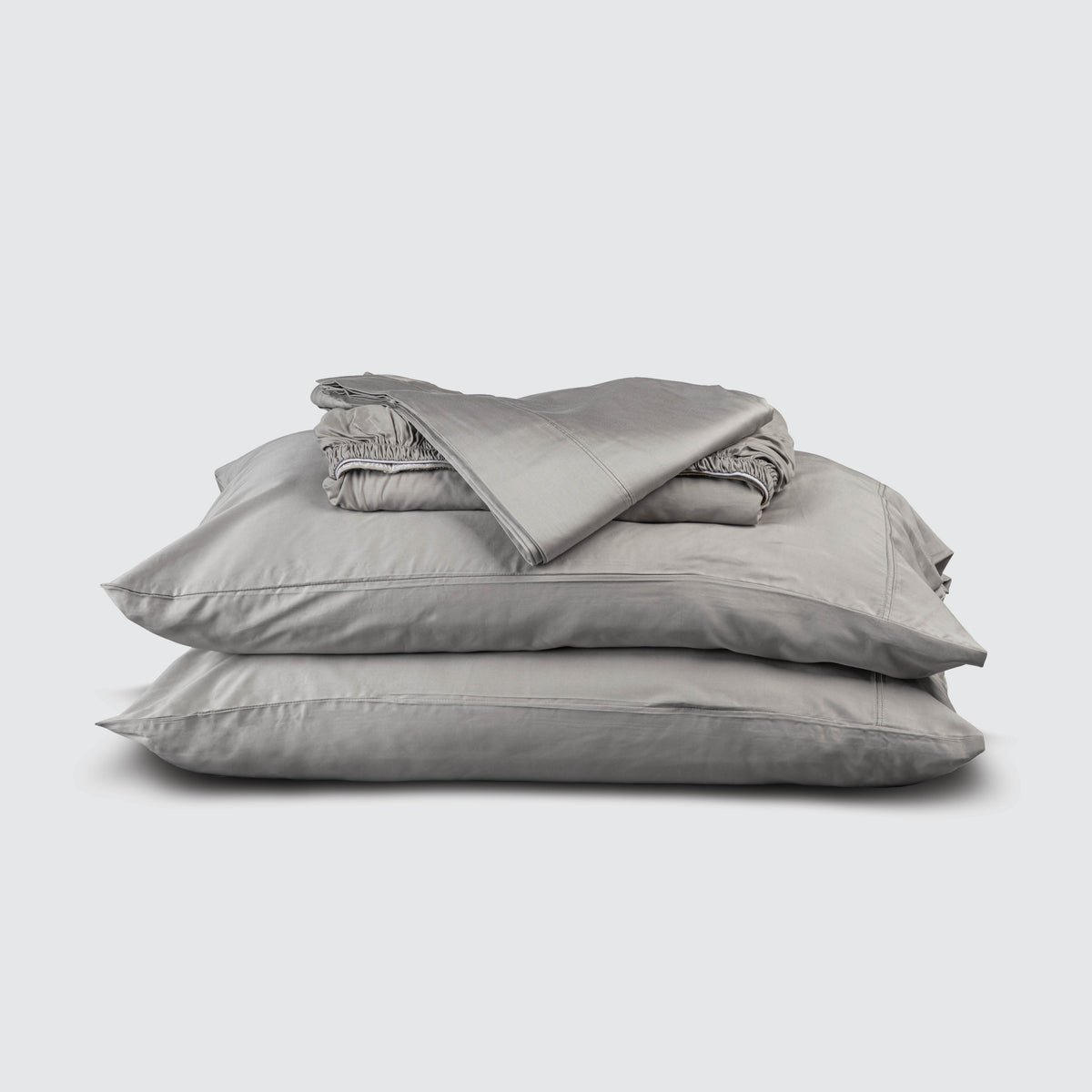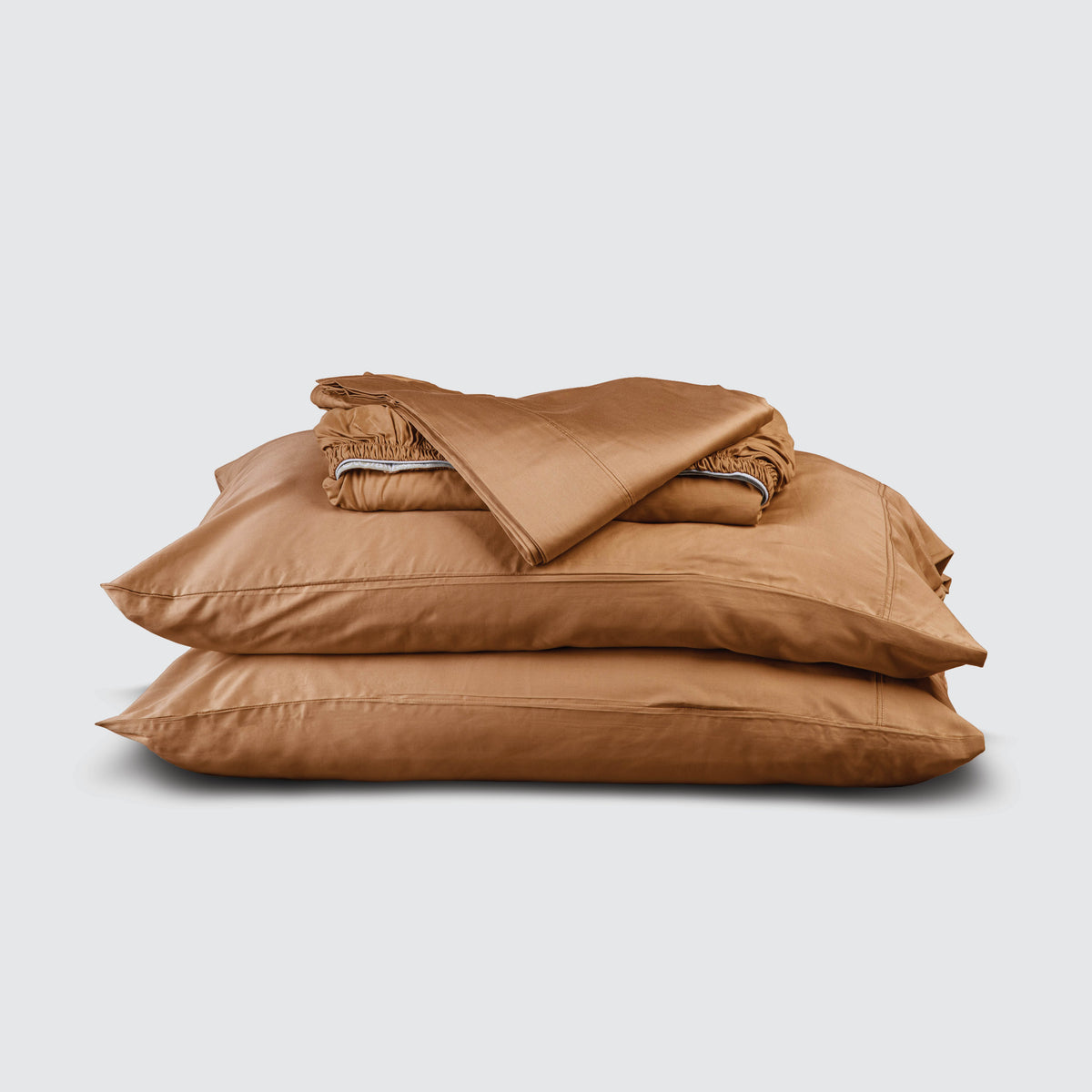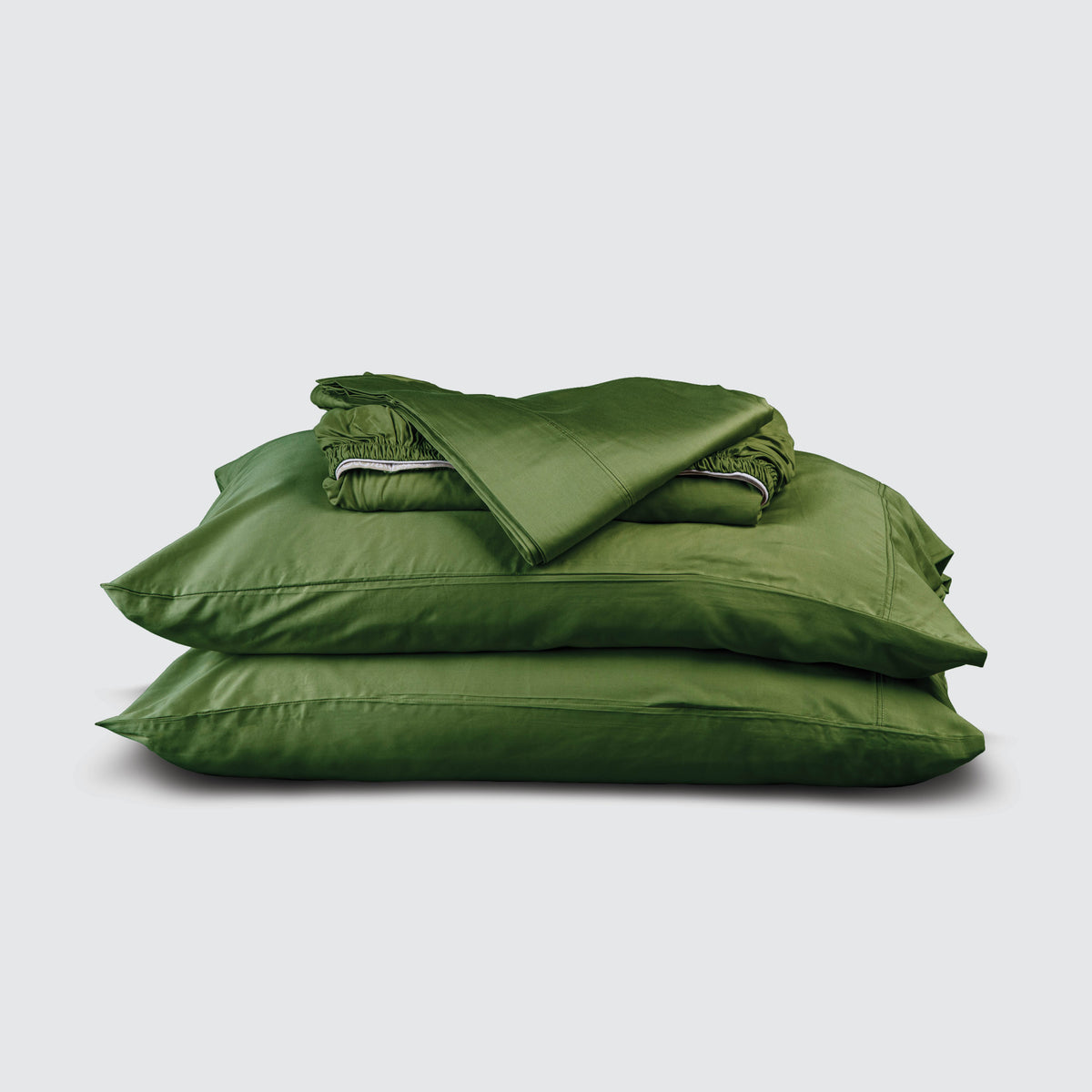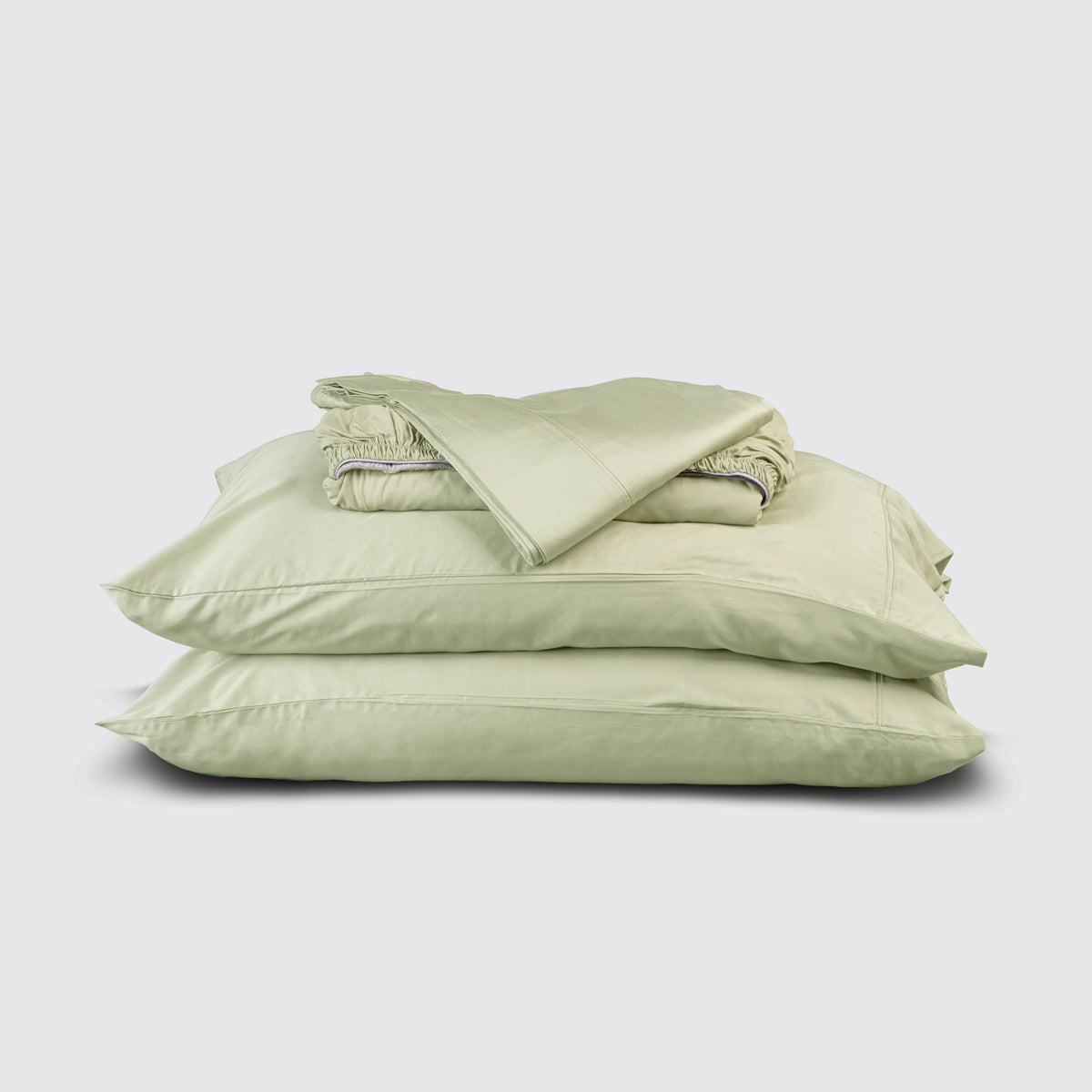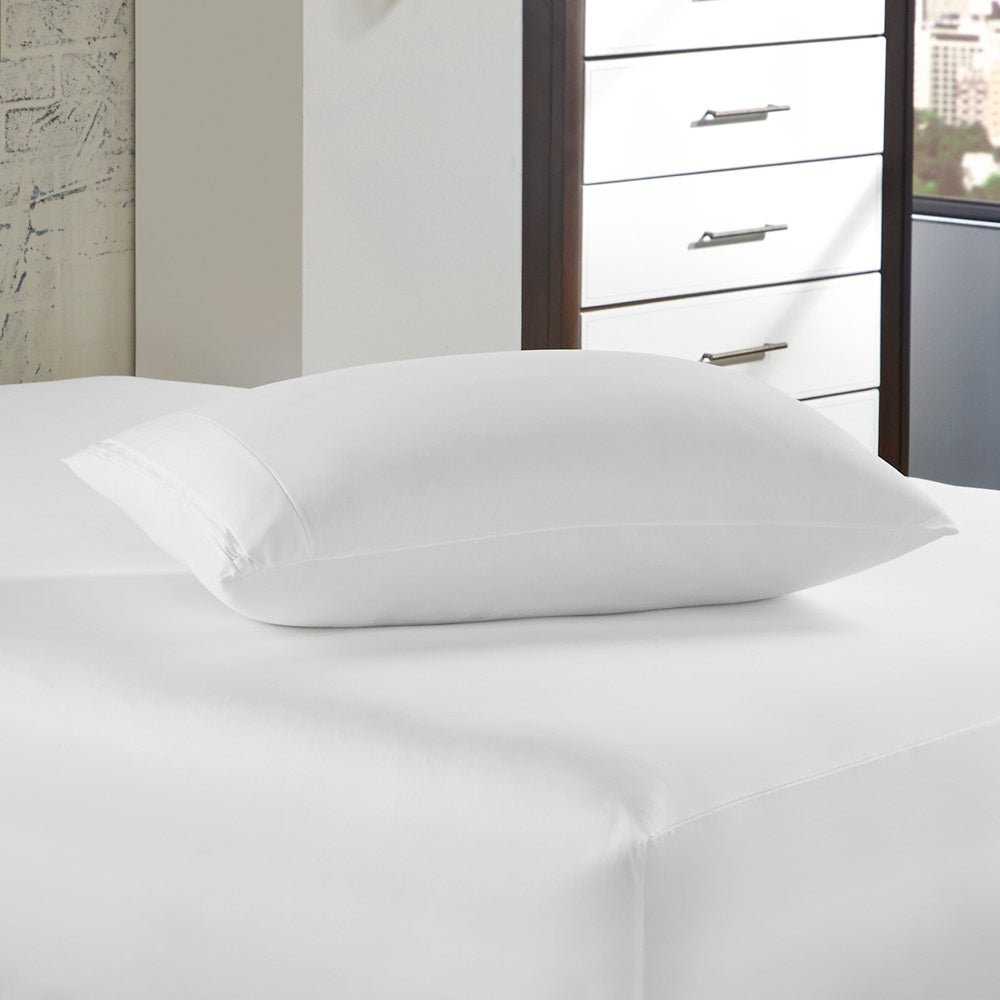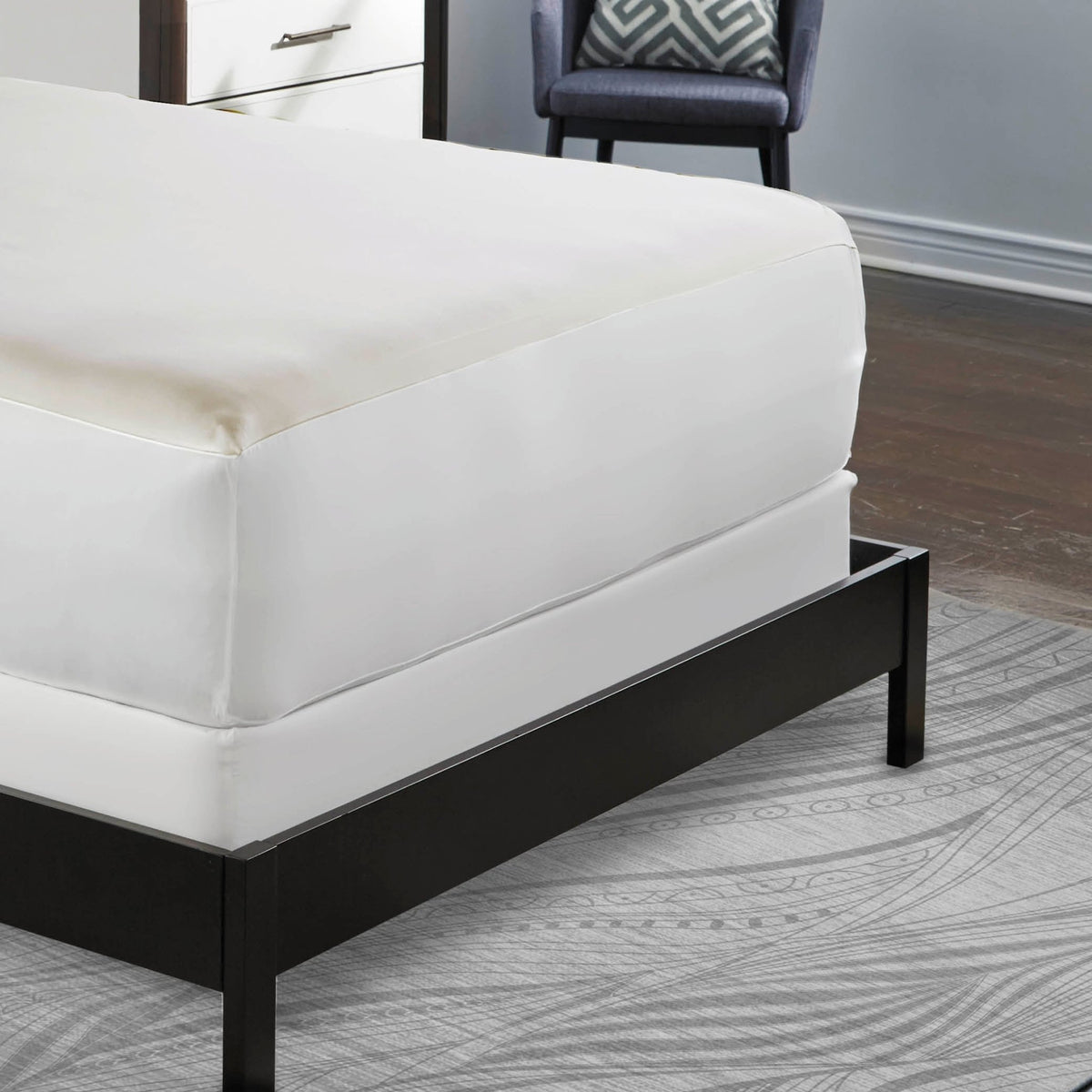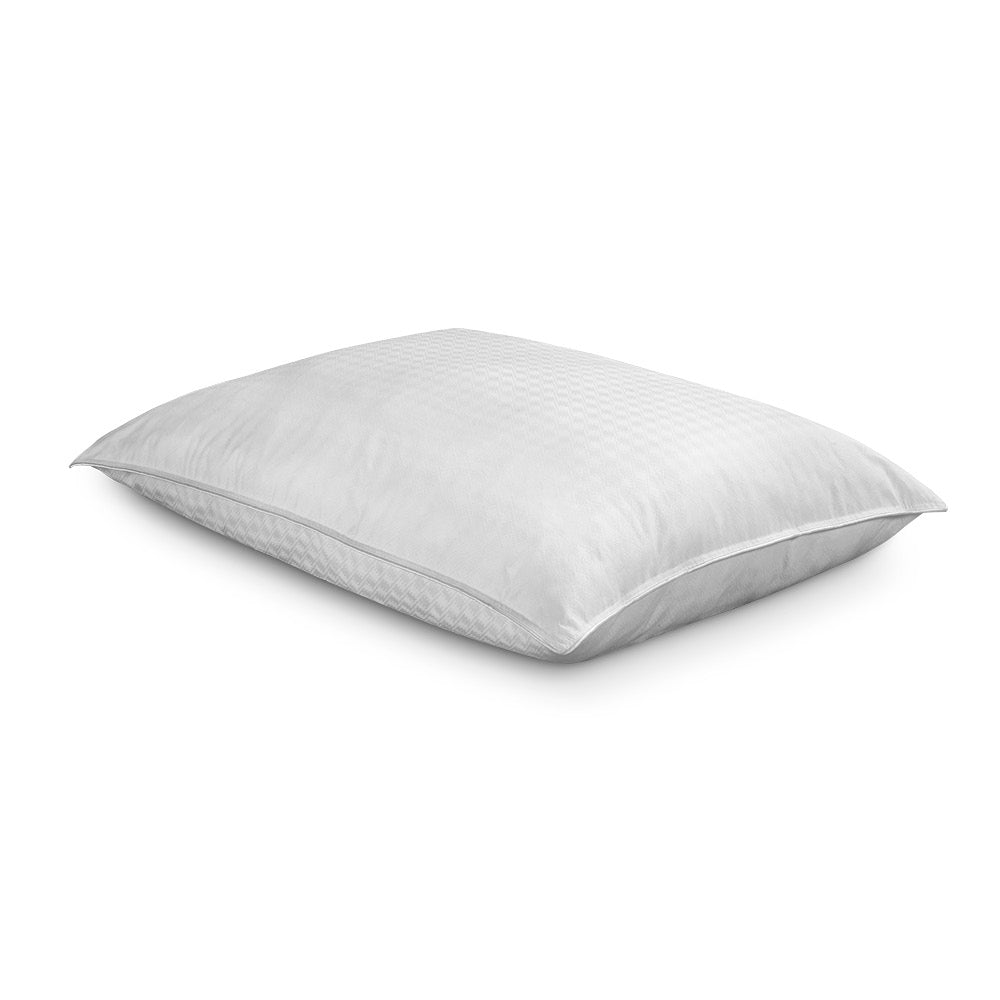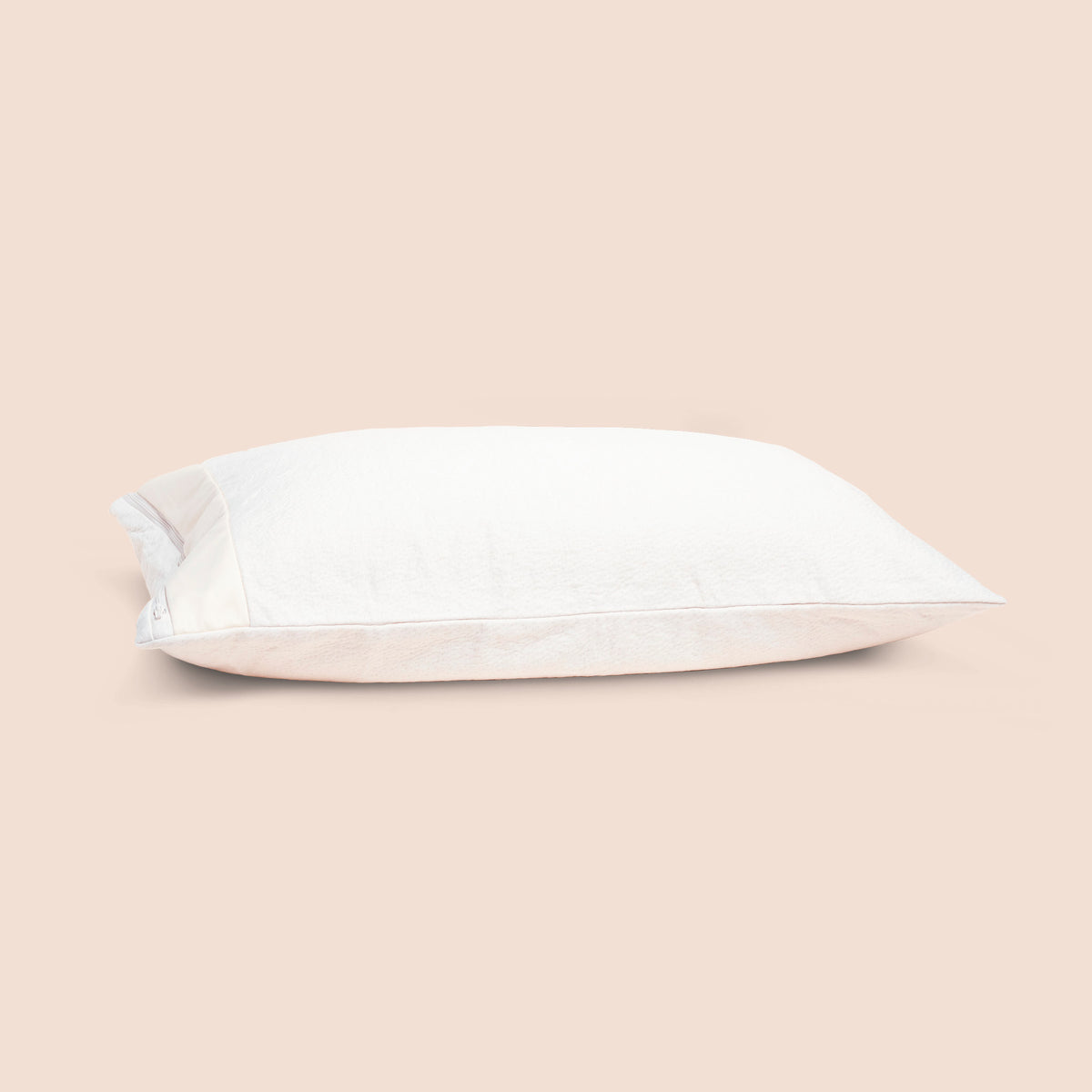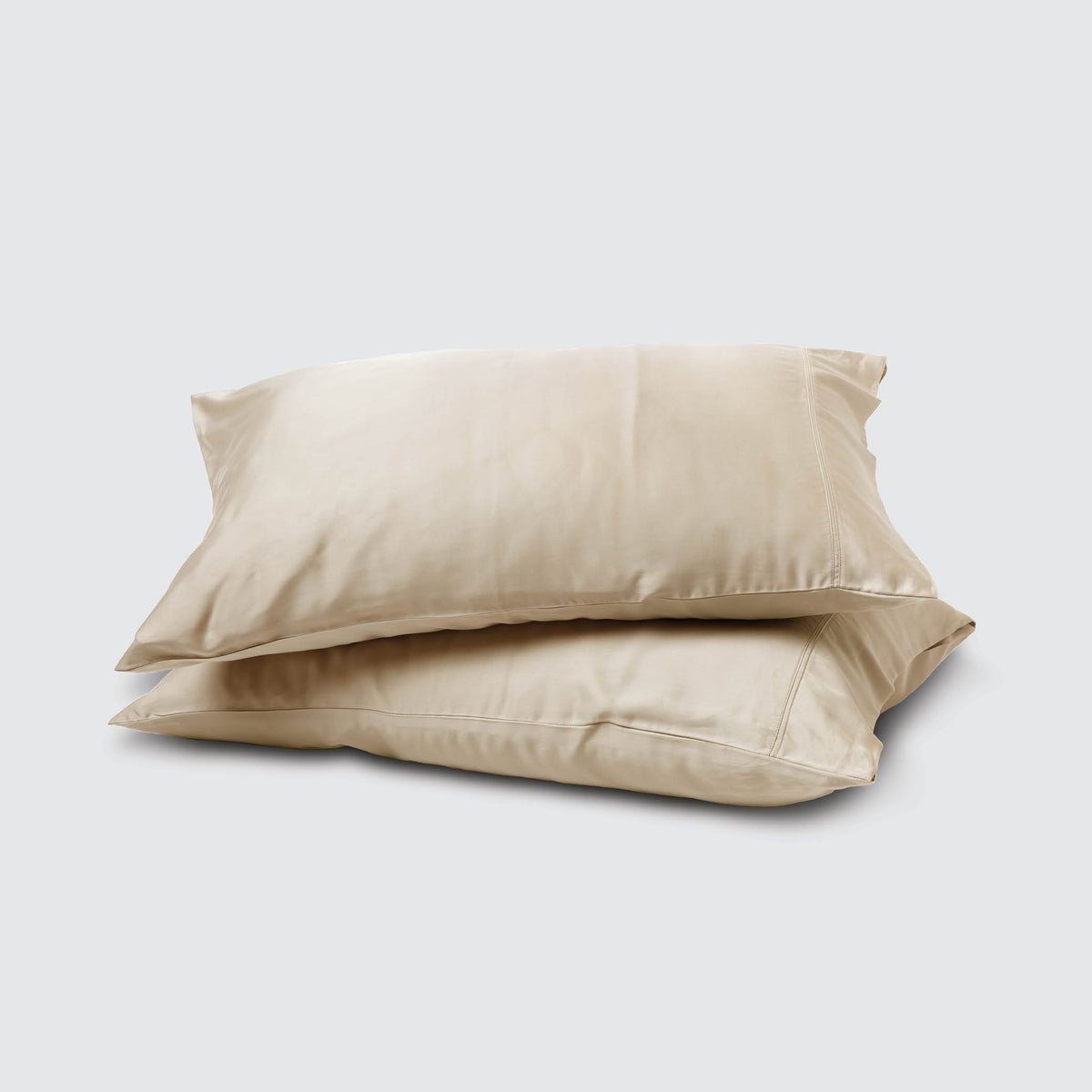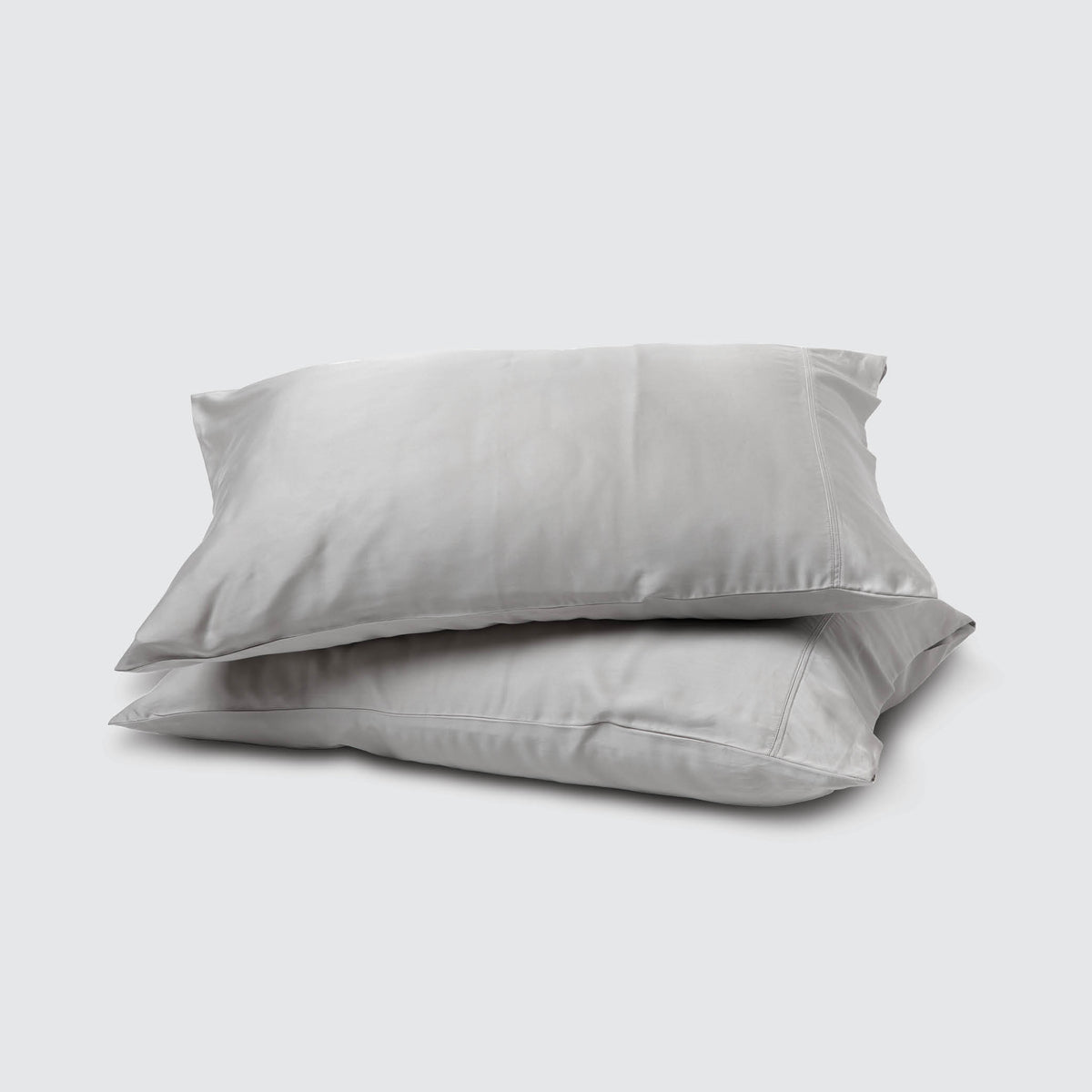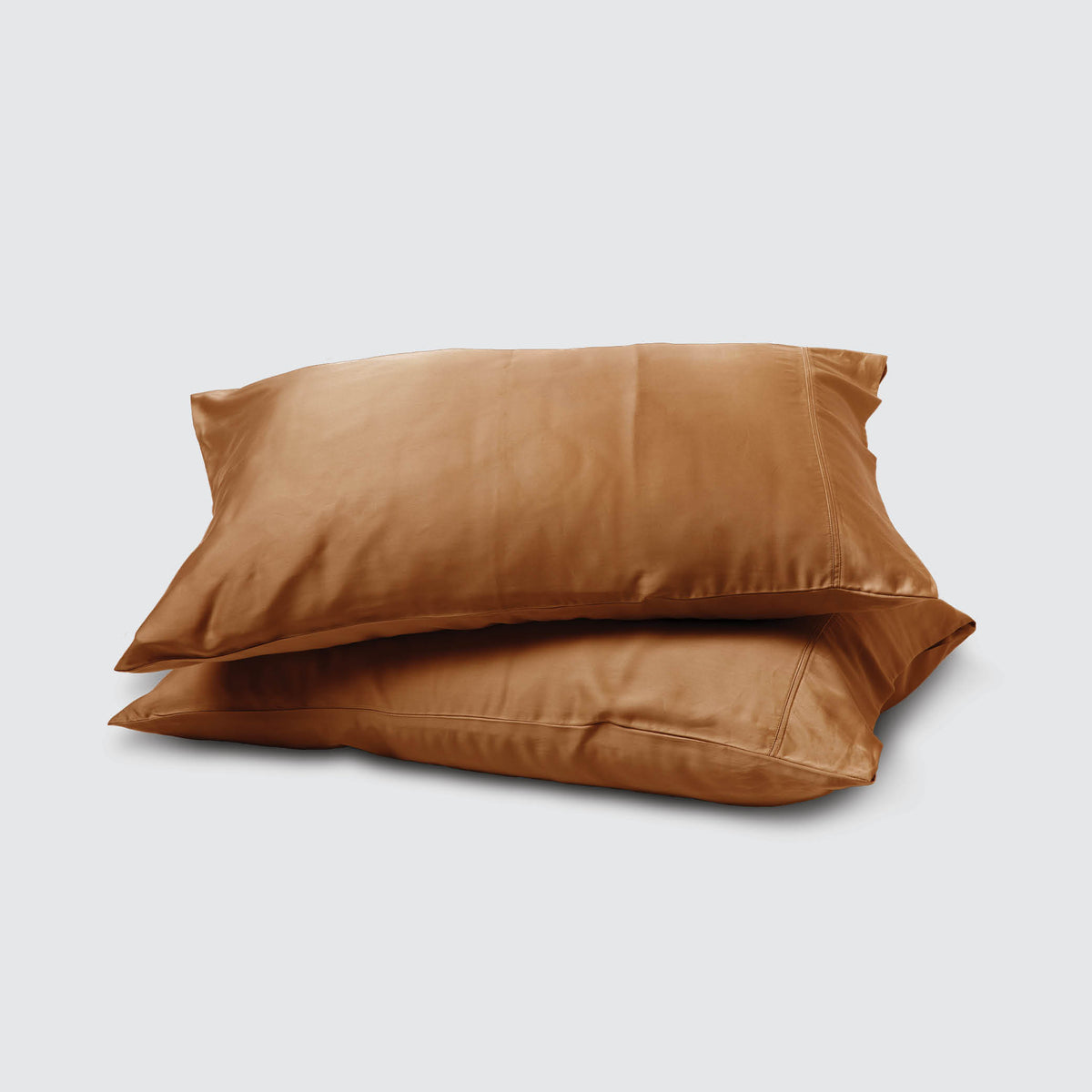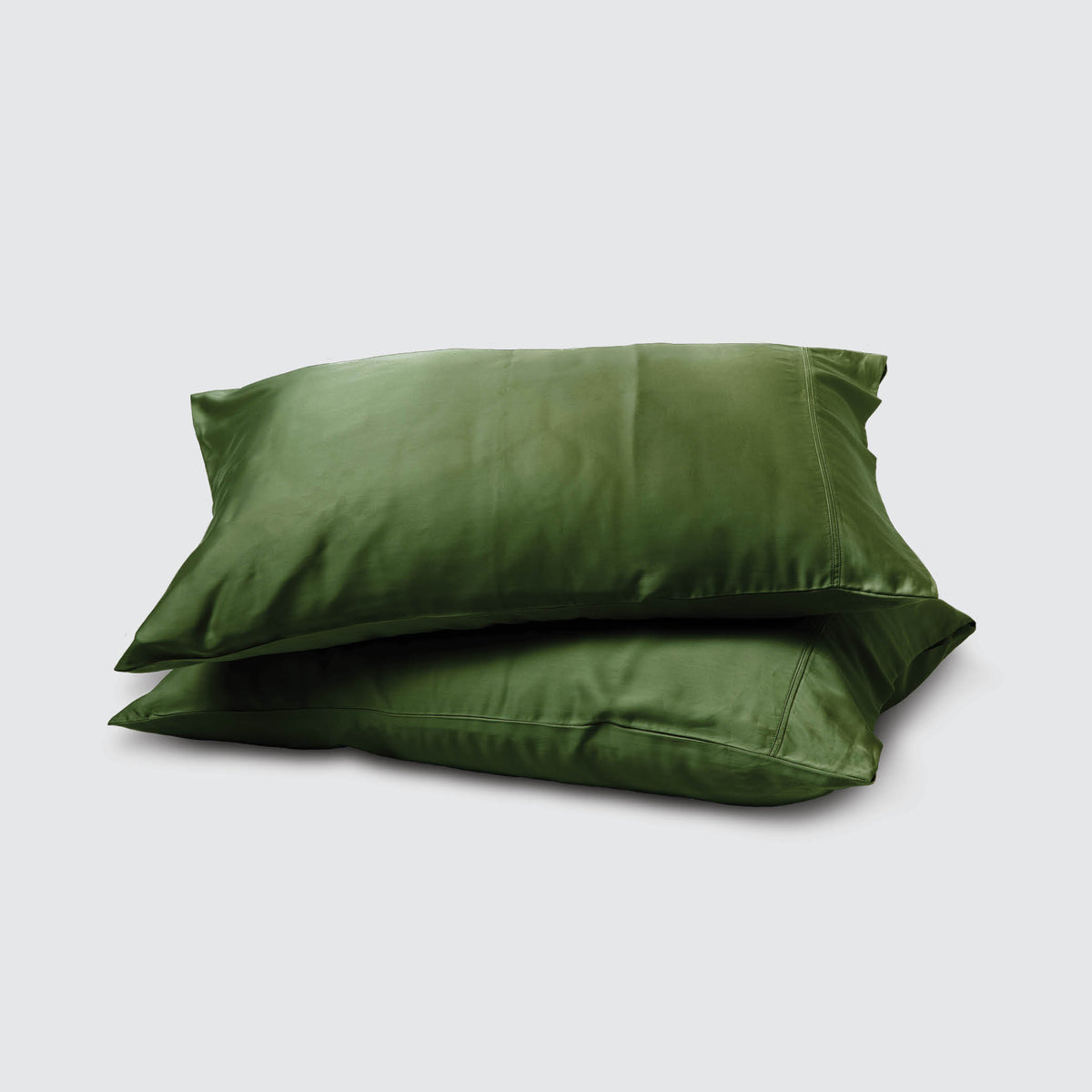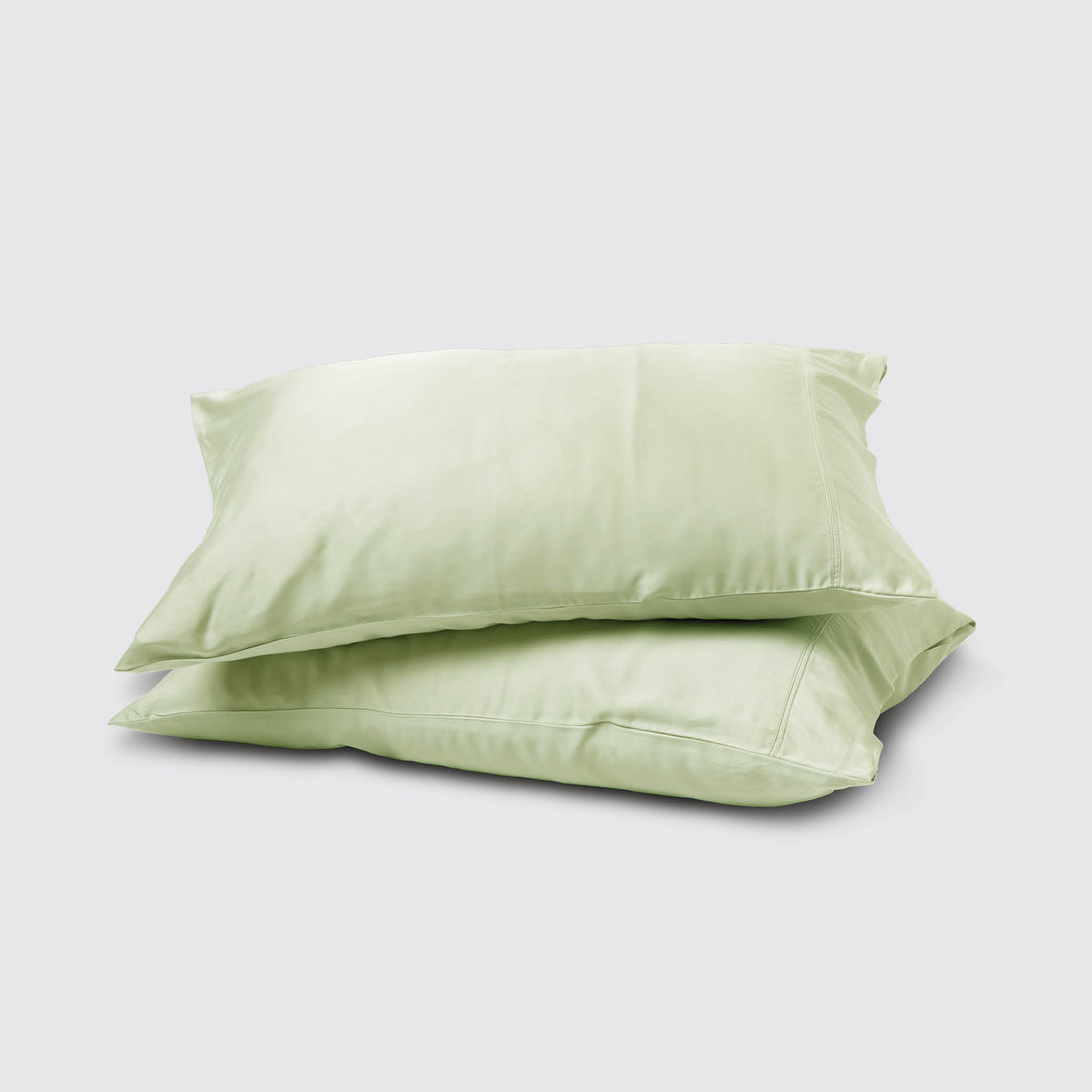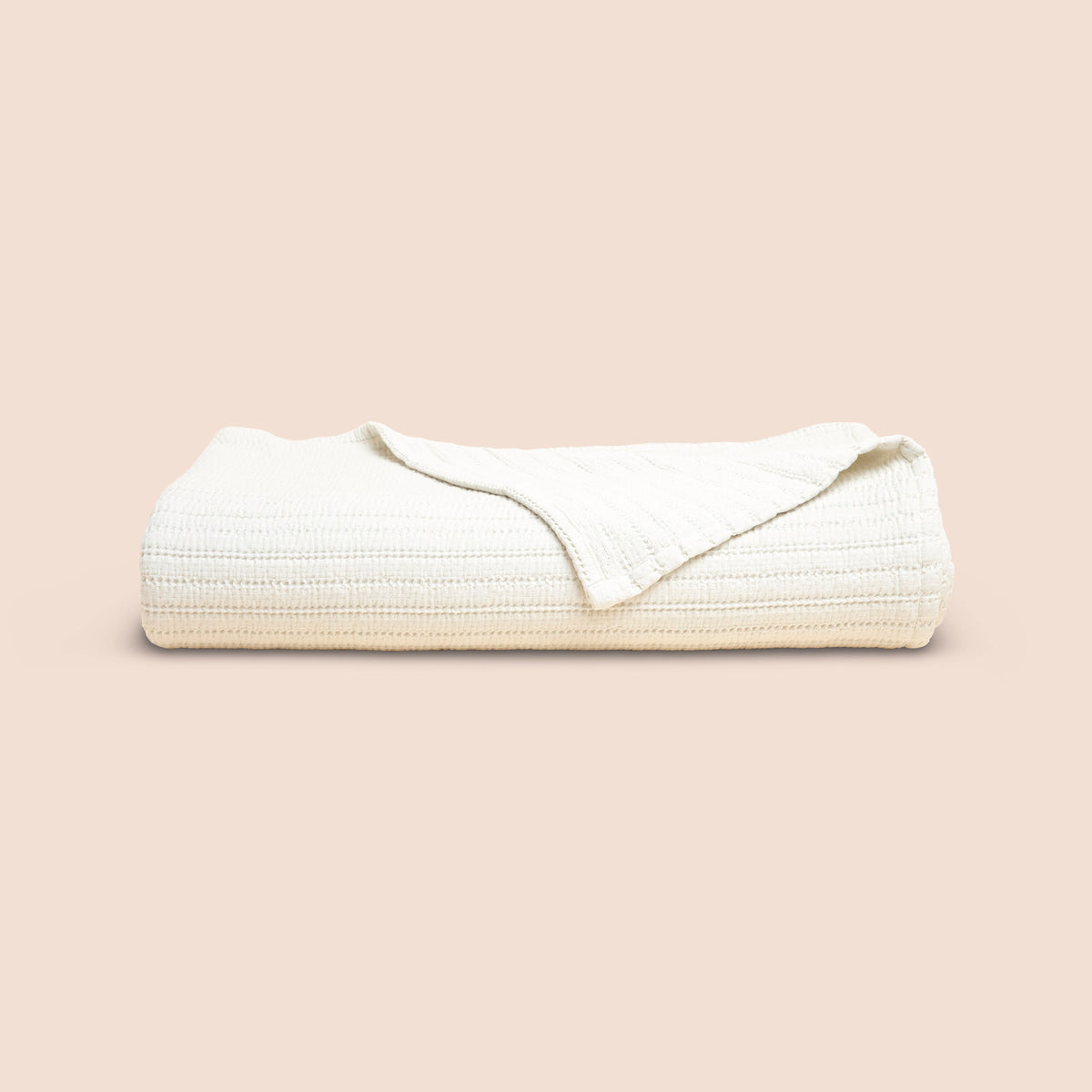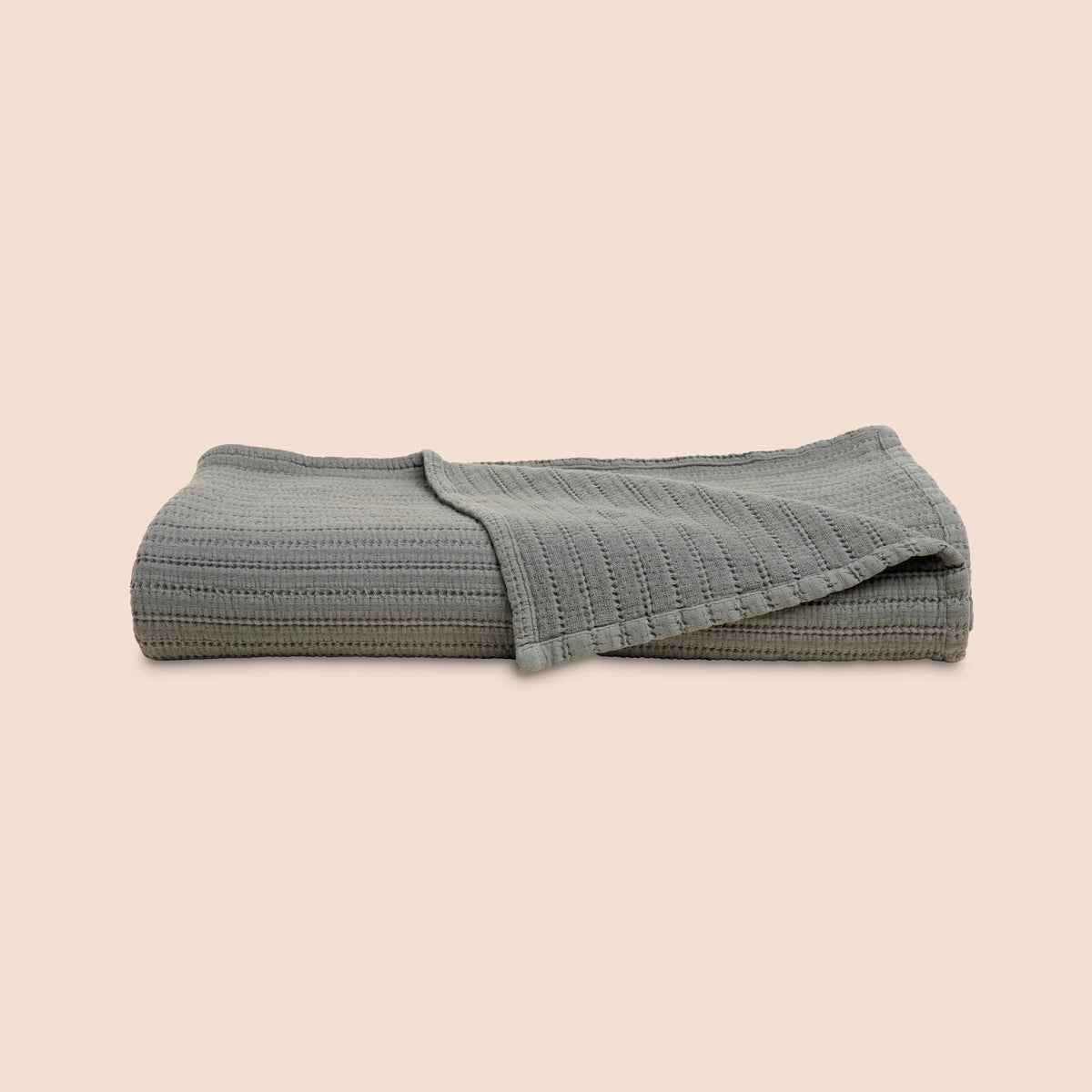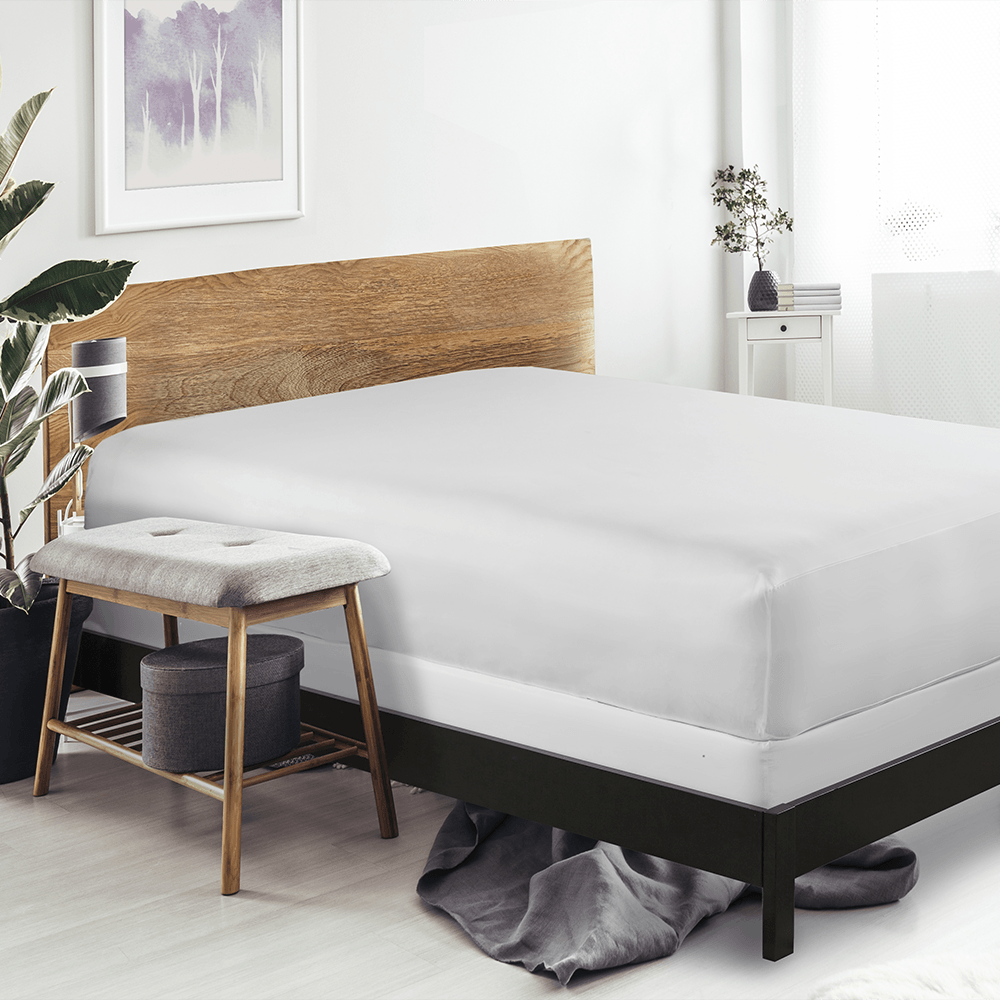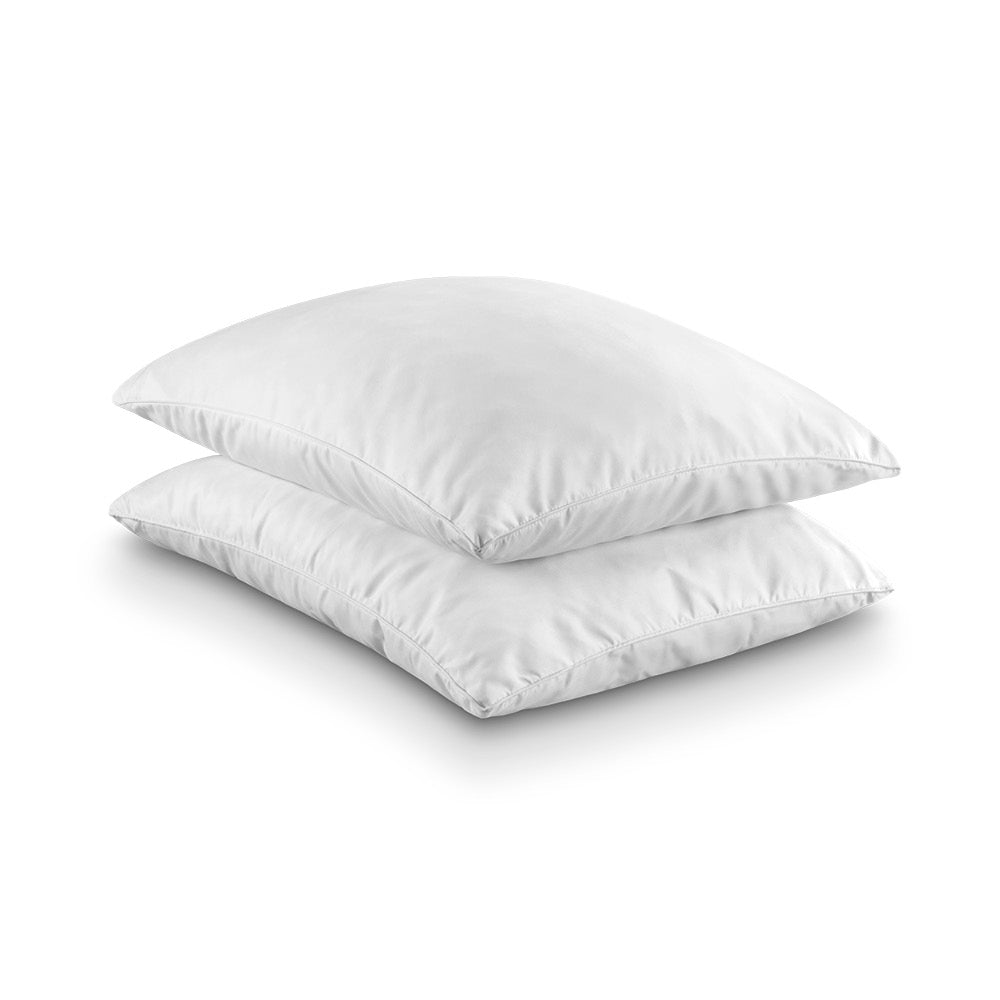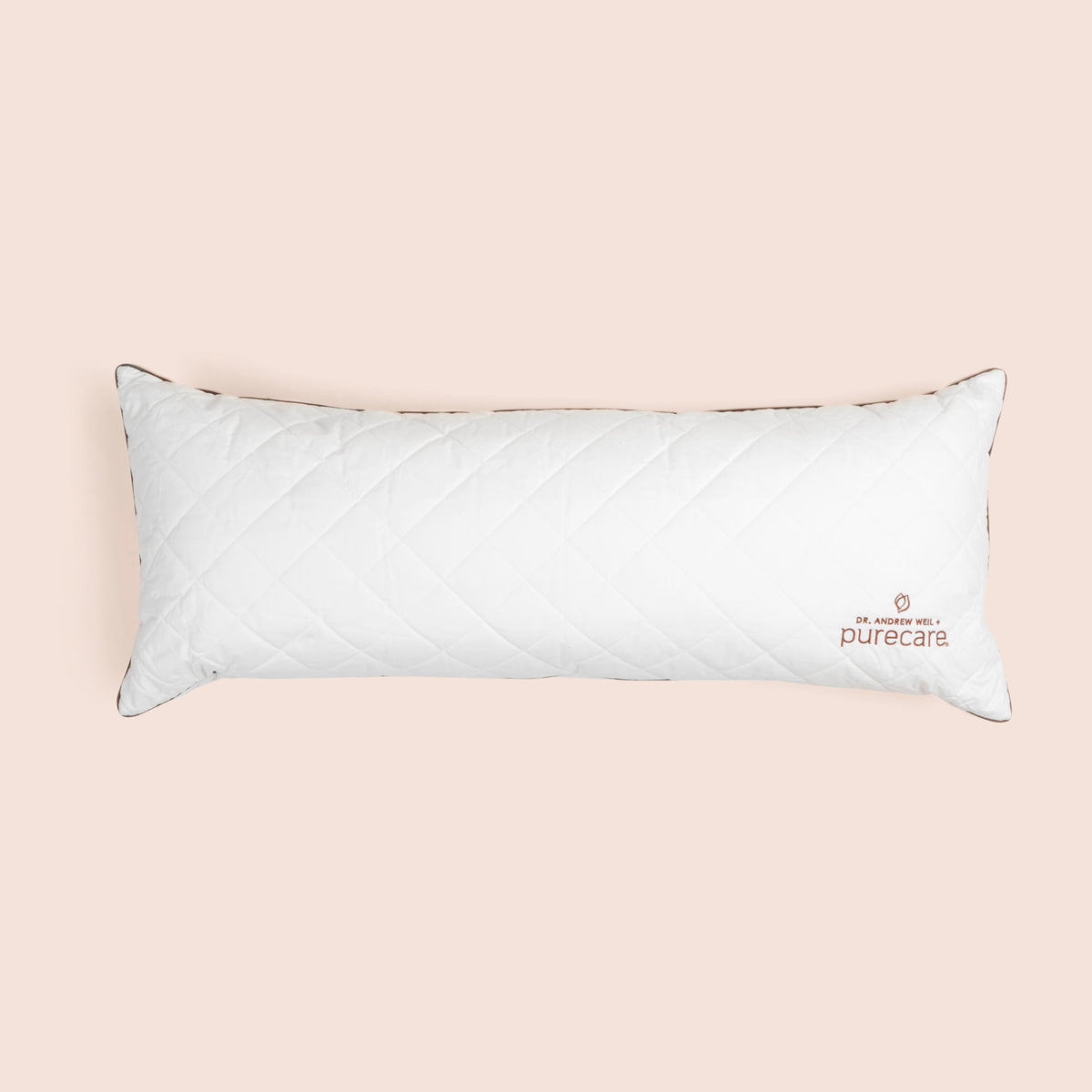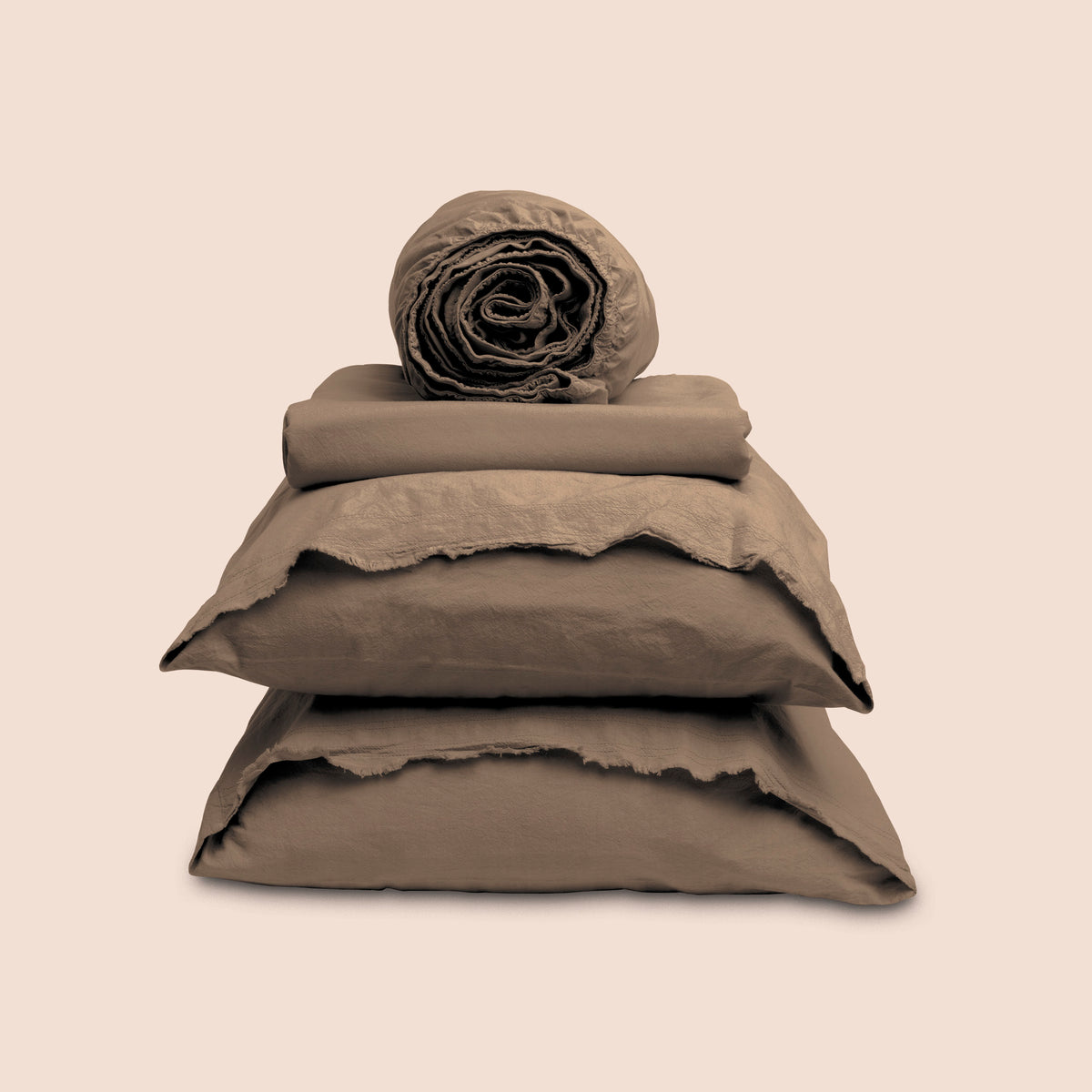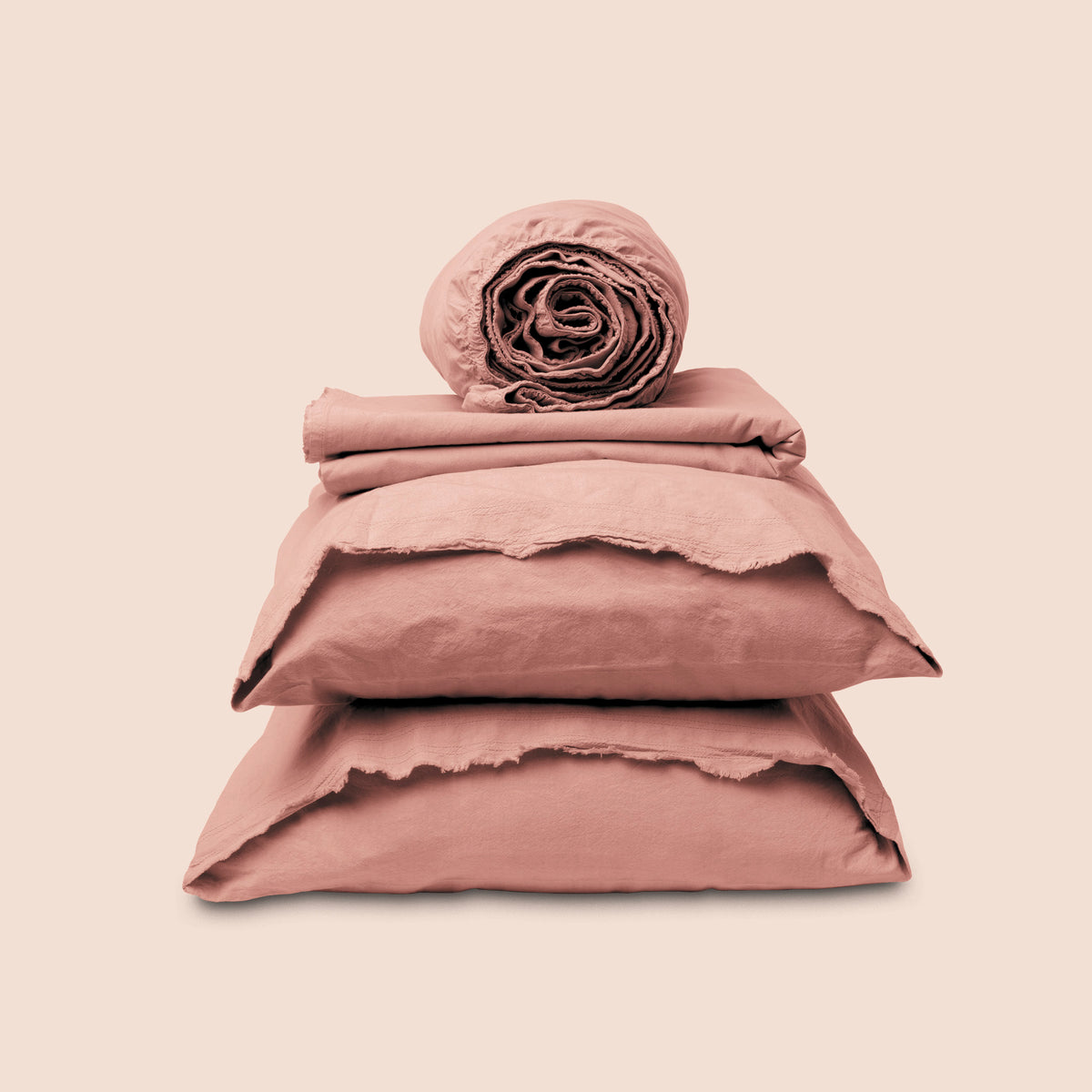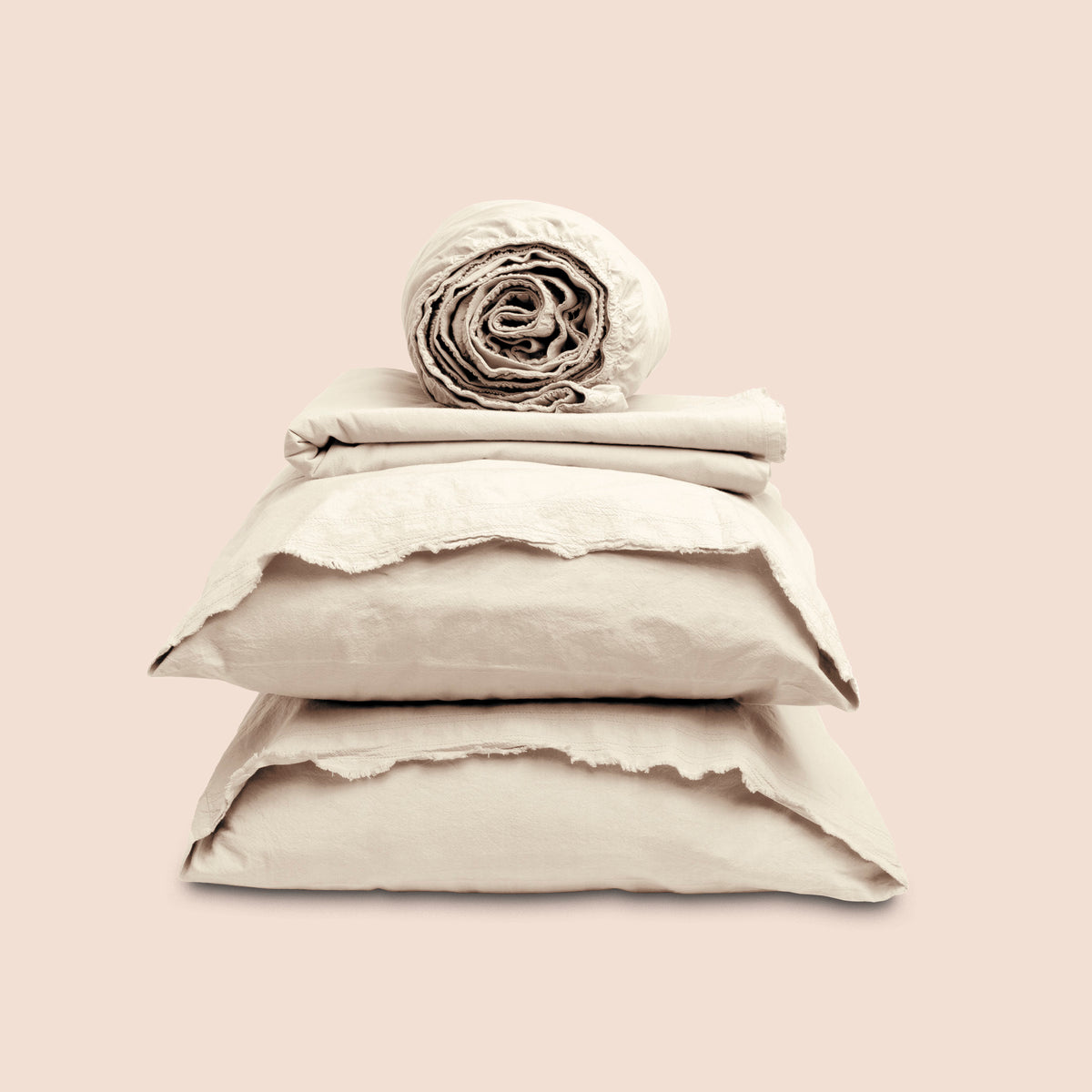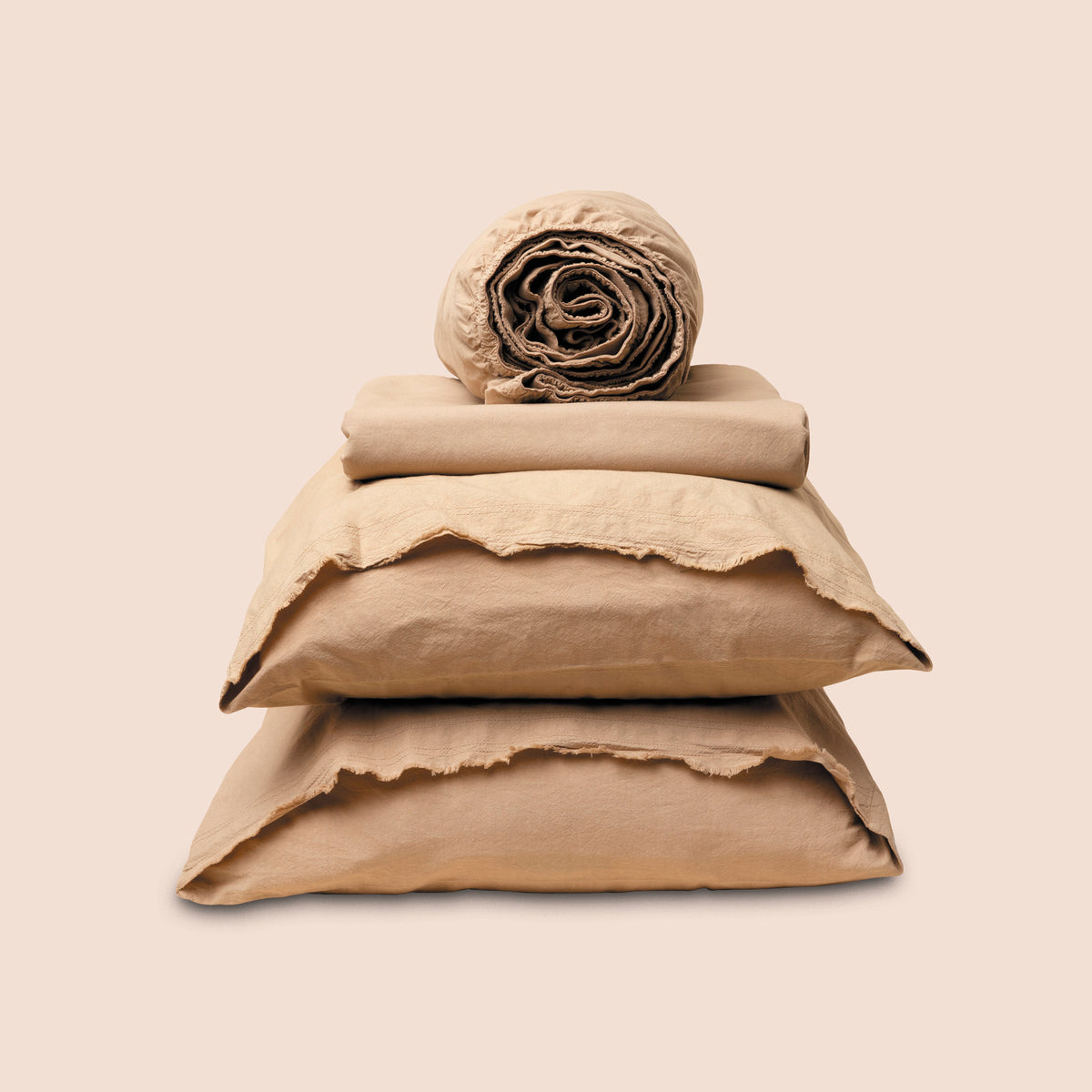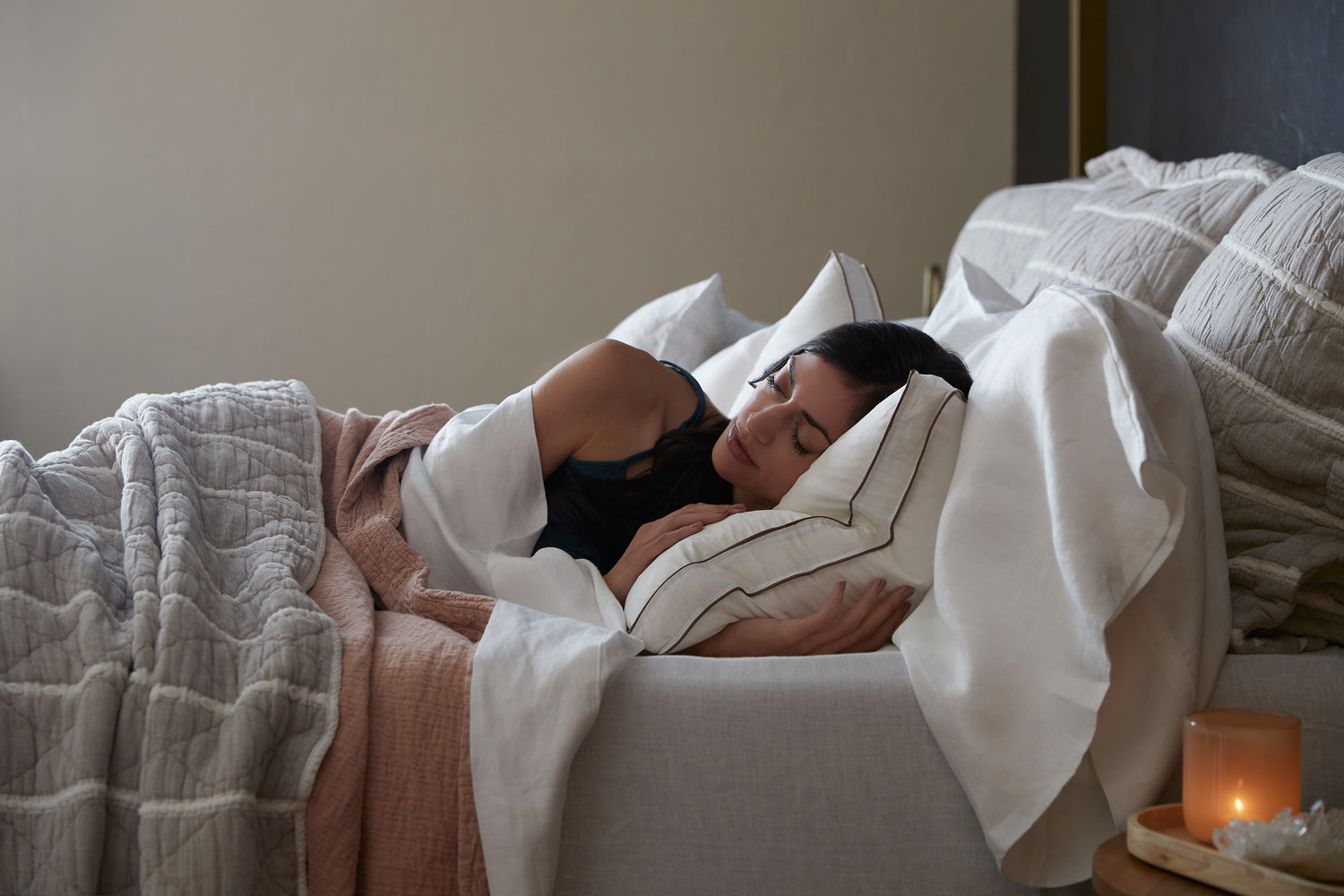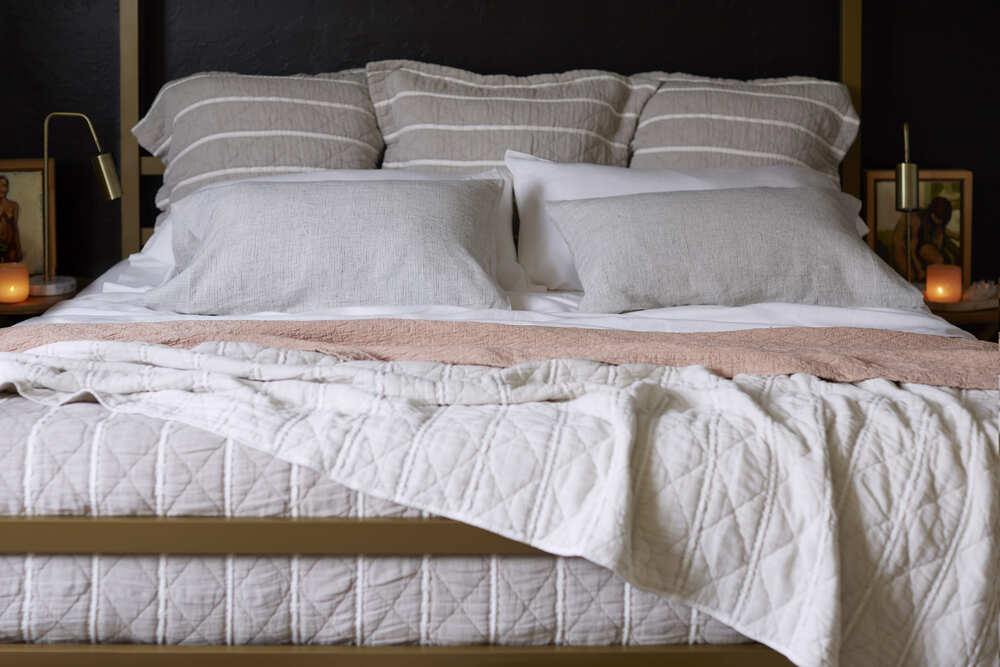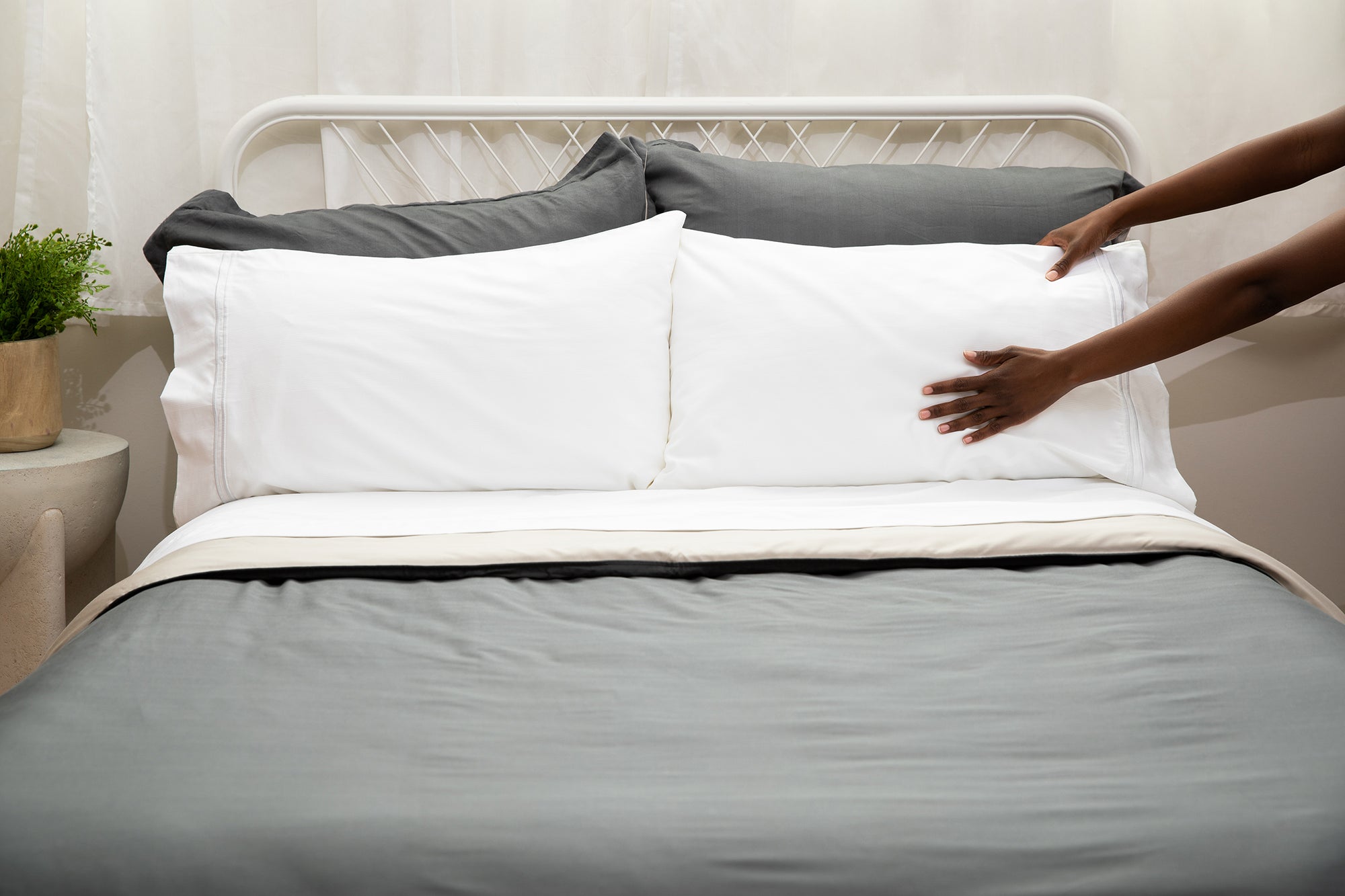From a new home to an updated guest room, the choice between mattresses can be a daunting task. Both the king and queen bed can crop up in different bedrooms, and with different considerations. For starters, consider the basic dimensions:
A king mattress has dimensions of 76 x 80 inches (that’s 193 cm x 203 cm or 6’4” x 6’8”). A queen mattress is narrower, but just as long. It measures 60 x 80 inches (152 cm x 203 cm or 5’6” x 6’8”). Both beds accommodate two sleepers, but a king has 27% more surface area.
A mattress lasts almost a decade (7-10 years), supporting you, your guests, or your family with comfort and style, so choosing a size is a full-on commitment (mattress puns aside). After all, you and your mattress will be together longer than it took to get your college degree.
Further, getting a good night's sleep is vital to your health. It impacts everything from metabolism to cognition. It even helps you avoid burnout, and as Dr. Weil (Harvard M.D. and leading Integrative Wellness expert) says, it is integral to your overall health, impacting your mental, physical, and spiritual wellness all at once.
While cozy mattress accessories like cooling pillows and active recovery bedding can help relax us, it’s ultimately fruitless if we’re hindered from moving freely by a mattress that keeps us up at night.
Luckily, there are some simple comparisons to help you choose the ideal size mattress whether you’re outfitting a guest room or considering an upgrade for yourself. And if you've got multiple rooms to outfit, consider the differences between a twin and a full mattress or even a king and a California king.

Queen or King-Size Mattress? Sizes and Comparisons

|
Inches |
Centimeters |
Feet + Inches |
|
|
Queen Mattress |
60” x 80” |
152 x 203 |
5’6” x 6’8” |
|
King Mattress |
76” x 80” |
193 x 203 |
6’4” x 6’8” |
Fitted sheets are made to fit snugly, so they will align with the mattress sizes of each bed size closely. However, pay attention to the often neglected depth dimension of your mattress, too. Depths range on king and queen mattresses, but fitted sheets aren’t all created equally. They can’t always stay in place on thicker mattresses or pillowtop styles.
Let’s look at flat sheet differences:
|
Inches |
Centimeters |
Feet + Inches |
|
|
Queen Bed Flat Sheets |
90” x 102” |
229 x 259 |
7’6” x 8’6” |
|
King Bed Flat Sheets |
108” x 102” |
274 x 259 |
9’8” x 8’6” |
Flat sheets are made to wrap, tuck, and drape, so they’re large compared to mattress sizes.
Duvets and quilts, on the other hand, are smaller than flat sheets (but larger than your overall mattress dimensions). For perfect proportions, outfit a queen bed with a quilt that measures roughly 92" x 90”. Deck out your king bed with a quilt that’s roughly 108" x 92". Compare bedding dimensions to get a better sense of the size differences between mattresses.
Who is a Queen Mattress Perfect For?
A queen mattress is smaller than a king mattress to the tune of nearly 9 square feet. That’s about the size of an entire twin mattress in itself. A queen is, therefore, the ideal choice for a couple without any sleep disturbance problems, who prefer a similar bed temperature and physical closeness. While two partners will enjoy their own sleep space in a queen bed, it won’t be expansive.
A queen-sized mattress can be perfect in average to large-size guest rooms, larger children’s bedrooms for teens, and owners’ bedrooms.
Can’t find the bed that’s “just right”?
A niche size, the Olympic queen, may be the bed you’re dreaming of. It’s wider than the queen, with dimensions of 66” x 80” (the same length as queen and king mattresses). It provides more sleeping space than a queen, but for space-seeking singles and couples whose room can’t quite accommodate the king mattress. An Olympic queen is not a standard size, so expect to pay a premium for bedding and accessories.
Who is a King Mattress Perfect For?
A king bed favors sleepers who value their own space. Roll over without hitting a partner, welcome a pup (or child) into your bed, and still wake up feeling refreshed in the morning. Sleepers with restless leg syndrome, a CPAP machine, or other special sleep considerations are also ideal candidates for a king-sized mattress.
If you don’t need (or have) the width for a king, but like to have a pet snooze at your feet, consider the California king. It has a narrower profile (4 inches smaller than the regular king) but is 4 inches longer, for extra legroom. California king mattresses aren’t very popular, but they’re becoming more common, and finding bedding for them is getting easier all the time. For example, all PureCare sheets come in both king and California king sizes.
What Kind of Bedroom Size Fits a Queen Bed Best?
Many owner’s bedrooms fit a queen bed. We recommend a 10’ x 10’ space. Layout is crucial: you’ll want 2 to 3 total feet all around the bed so you can easily move through your space and so that it feels balanced. There should be 2.5 feet in front of any dresser so that you can comfortably access it, even when drawers are fully open. (Please consider the ask from Blog Post 1 to have simple line-drawing illustrations of a bedroom with the mattress/furniture from a birds-eye-view.)
A slightly larger room can allow for extra furniture, like a seating area or workspace.
What Kind of Bedroom Size Fits a King Bed Best?
A king bed needs a princely space. Bedrooms that work best measure at least 12’ x 12’. That can be tight in many guest bedrooms. Newer homes where a king can help fill the space and balance its proportions can benefit from a king-size bed.
Owner’s bedrooms are the best place for king-sized beds. They can be gathering places for the whole family. Just grab a bowl of popcorn and a couple of game controllers, and everyone can spend a leisurely weekend evening in this family-centered space.
Costs and Price Comparisons for a Queen and King Bed
Both mattress sizes are standard, and you’ll be able to find bedding in either style easily. However, bigger sizes come with bigger costs. A king mattress will not only cost more, averaging $1,000 to $2,600 while a queen mattress averages between $600 and $1800.
There are other costs to keep in mind: from a bed frame to mattress protectors, sheets, bedding, and pillowcases, accessories for a king bed typically cost more.
Lifestyle and Sleep Habits
For insomniacs trying not to keep their partners awake, a larger bed is usually better. But there are some exceptions: could you use the extra space for a cozy late-night reading area or meditation space in your bedroom? Are you spending too much time in bed, turning a place of rest into a workspace or theater? Consider a queen mattress and reclaim the bed as a relaxation space.
For other kinds of sleep disturbances, a king mattress can make more sense. With ample width, partners can keep cool or warm easily. They’ll be able to shift positions with less disturbance to their partners, finding their ideal spot on the bed.
Kids and pets? Different quilt preferences? A king can also keep added accessories, pillows, and layers in order.
Those with snoring, back problems, or mobility issues can benefit from what’s called a “split king mattress.” Comprised of two twin XL mattresses (often on adjustable bases), partners can adjust their own sides of the bed. From firmness to mattress material and separate fitted sheets, partners gain the most control over their sleep environment with the least disturbance to their partner. Sleep health for two can be challenging in a single bed, but a split king makes moving independently as easy as possible.
Your lifestyle is more important than you may imagine to your bed choice. We follow the advice of Harvard M.D, Dr. Andrew Weil who believes sleep is a core component of our overall health, from mind to body and soul. He says that all three go into a healthy lifestyle, so consider how you’ll create a temperature and space alongside a partner, but also a healthy bedroom and bedtime habits that let you rest better.
The Perfect Mattress Size is the One that Gives You the Best Mornings
There’s no perfect bed size. But there is a perfect choice for your sleep style, space, and home. And while most Americans purchase queen mattresses, that doesn’t mean it’s the right choice for your body, soul, partner, and home. Consider your unique sleep profile, the size that’ll nurture your best sleep habits, and even the kind of cozy, sustainable bedding that will support your sleep wellness best.
And don’t forget—Mix, Match, and Save up to 40% off all season long when you refresh your favorite sleep wellness essentials with us at purecare.com.
FAQ
What is the most popular bed size?
Almost half of American mattresses sold are queen-sized. It’s by far the most popular size, outselling the king-size mattress by 27%.
Do couples sleep better in a bigger bed?
Yes, couples sleep better in bigger beds. In fact, 10% of American couples claim they have trouble even simply getting to sleep due to the size of their bed. Almost 20% may be sleeping apart from their partner all the time. A larger bed allows couples to cuddle when they like, or separate for more space and more control over their temperature, for a more restful night.
How big is a California king vs. Queen?
The dimensions of a California king bed are: 72” x 84” (183 x 213 cm or 6’ x 7’)
The dimensions of a queen bed are 60” x 70” (152 x 203 cm or 5’ x 6’8”)
A California king is 12 inches wider than a standard queen bed, and 14 inches longer.
Should I get a King Comforter for a Queen Bed?
It’s a completely personal decision!
King comforters typically offer around 12 extra inches of width, and at least the same length as queen comforters. Here are typical dimensions:
Queen comforter: 92" x 90 "
King comforter:108” x 92”
Here at PureCare, we love to eliminate sharing fatigue. In fact, our flat sheets measure 4 extra inches in width so couples aren't spending their nights tugging. But whether you upsize your comforter depends on many factors. Before you decide, consider:
- How your bedding will drape and the look of your overall bedroom aesthetic. Small bed frames and rooms are least able to bear the added visual weight of oversized bedding.
- Whether or not you and your partner share a comforter. Larger couples and those that curl up with lots of layers might want more width.
- The height of your mattress and bed frame. Tall beds can accommodate wider comforters more easily. Consider saying no when your bedding touches the floor, collecting dirt and dust.

